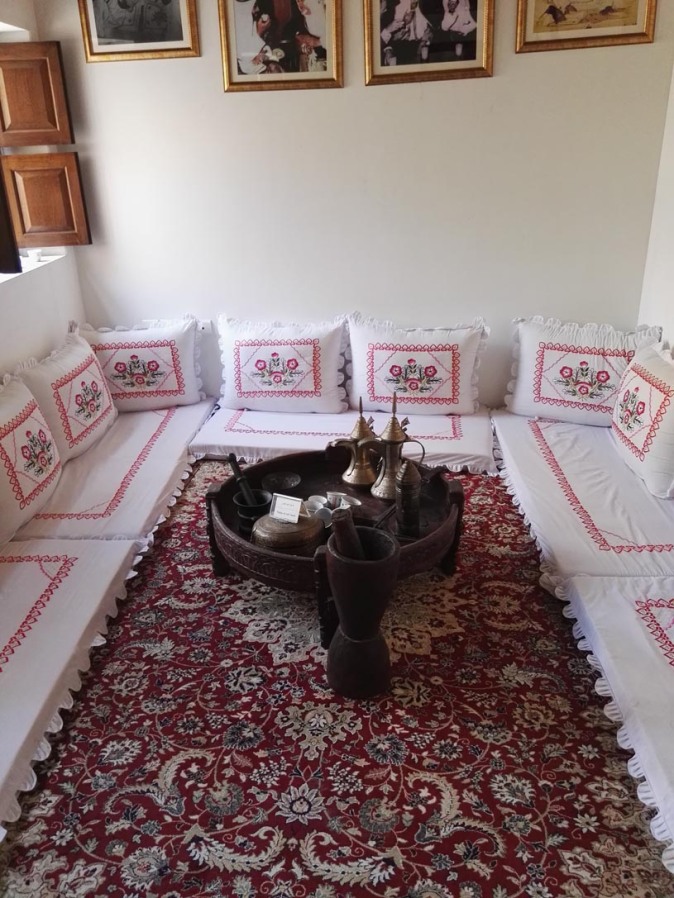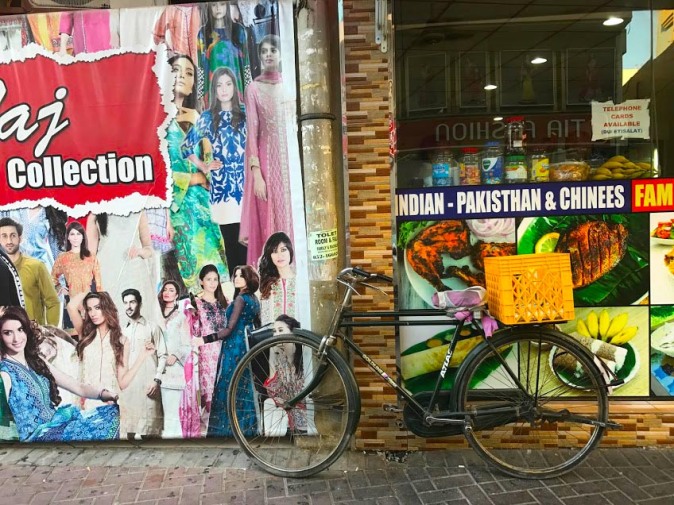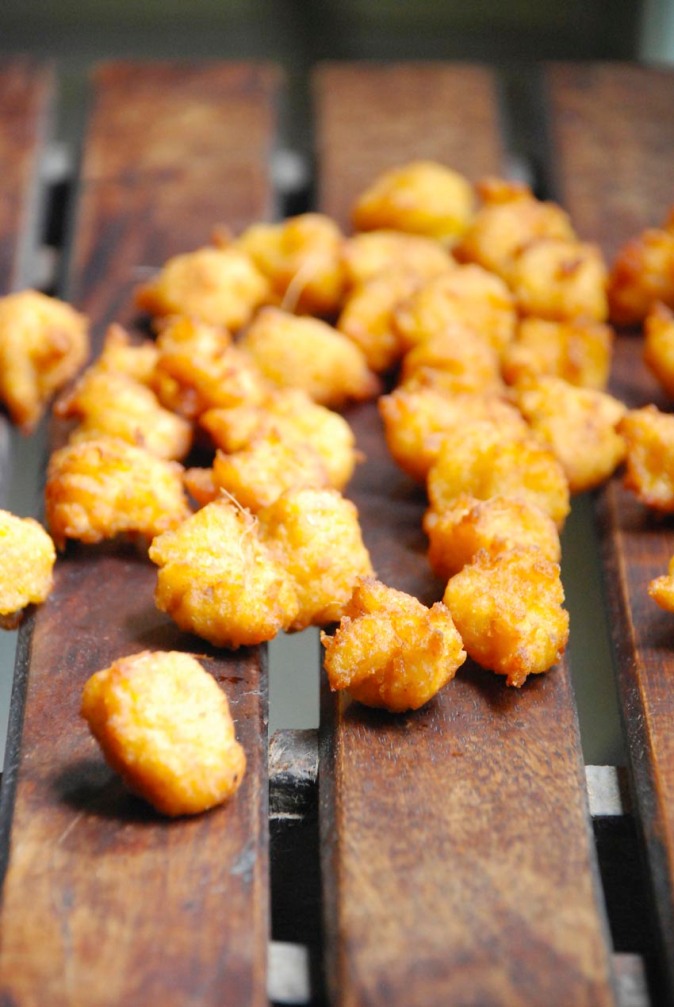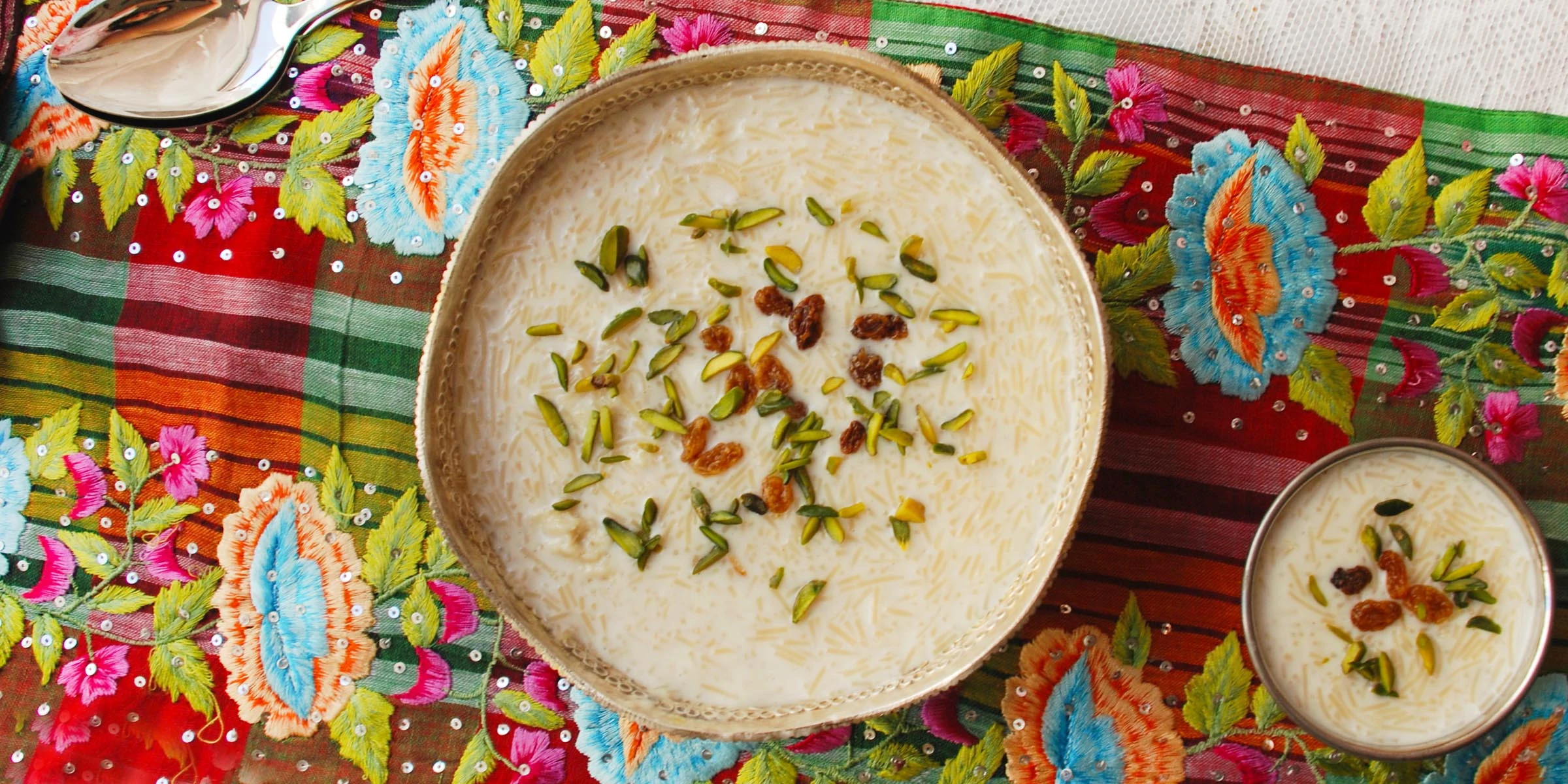
My childhood memories of Eid are associated with the rich, creamy taste of Semaiya Kheer or vermicelli pudding, also called Shimuiyer Payesh in Bengali.
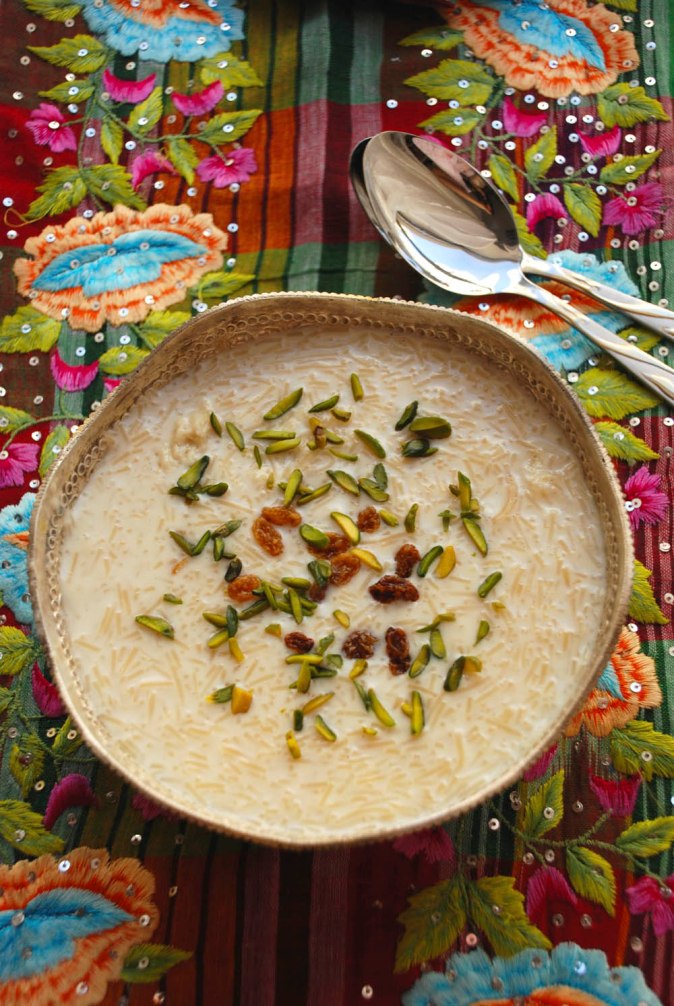
Eid Mubarak! Festivities bring in lots of varied emotions… emotions of togetherness, memories of childhood and hope for the future. There’s nothing like celebrating a festival like Eid in a city like Dubai, where people from all over the world have come together and made it their homes. The word Eid means ‘festivity’ in Arabic. Every year when Eid is celebrated after the holy month of Ramadan, the city of bling readies itself to welcome more than two million visitors over the festive weekend!
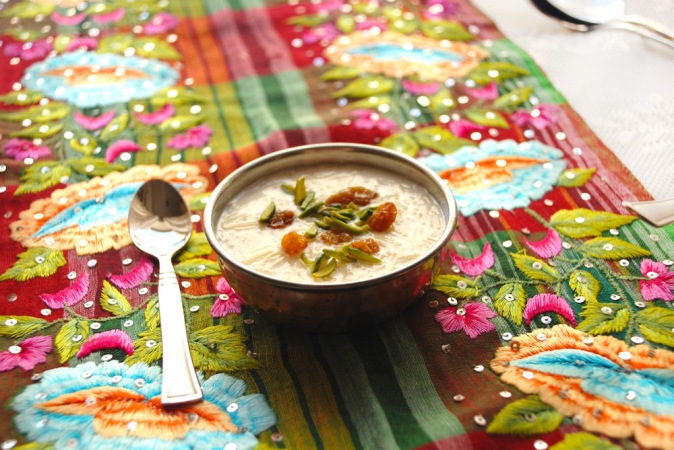
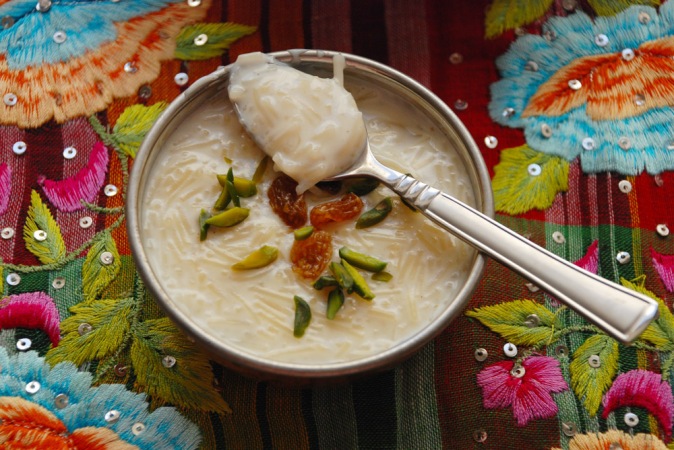
Childhood memories of Eid bring in the sweet taste of Semaiya Kheer or vermicelli pudding, also called Shemuiyer Payesh (above) in Bengali. Payesh or milk pudding has a lot of significance in a Bengali’s life, specially Chaaler Payesh, or the rice pudding. It is the first initiation of solid food when an infant gets ready to embark on her/his momentous non-milk food journey and inherits the rich culinary heritage of Bengali food (do read all about in my earlier post). The introduction of semaiya to Bengali cuisine happened organically with the Islamic influence in Bengal. In 1857 AD, after the Awadh kingdom (modern day Lucknow in India) was annexed by the British, the Nawab was exiled to Calcutta, which is today’s Kolkata. His passion for gourmet food traveled from Lucknow to Calcutta and was nurtured, garnished and fuelled by his special Bawarchis or the Chefs of the Nawab. Mughlai food has since then become part of Kolkata’s culinary heritage.
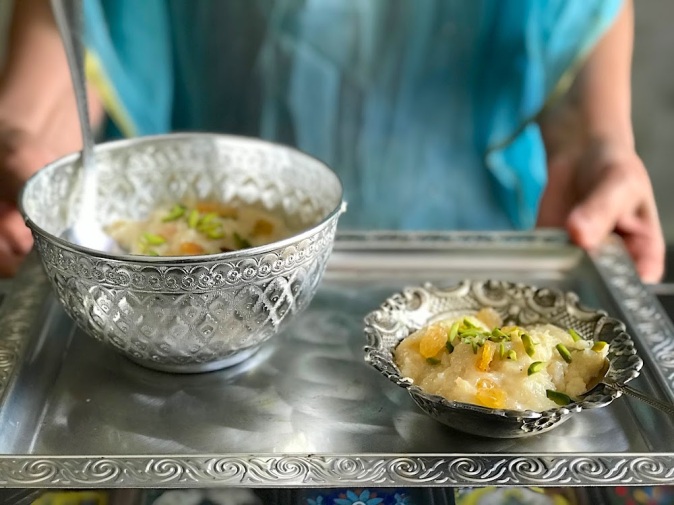
I have always associated semaiya with Eid celebrations. The shimuiyer payesh that I have eaten at most Bengali homes, is made much like the rice pudding. The shimuiyer payesh, however, is sweetened with sugar and Gur or jaggery is seldom used in it. It is also less dense. The Sheer Khurma (above) is more popular amongst our Muslim friends, both from India and elsewhere in the subcontinent. The sheer khurma is a thicker version of shimuiyer payesh with a more generous amounts of dried fruits. Saffron, rosewater and Vark, edible silver foil are often added. Sheer khurma is a very popular festive breakfast with Parathas, specially Laccha Paratha – a type of paratha having multiple layers and lapped generously in Ghee. Another popular variation of semaiya is the cold beverage – Falooda which itself is an adaptation of the Persian dessert Faloodeh. This is very popular in Iran, Pakistan, North India and Afghanistan. The rosewater flavoured falooda (below) that we had in Haridwar is still lingering on my tastebuds!
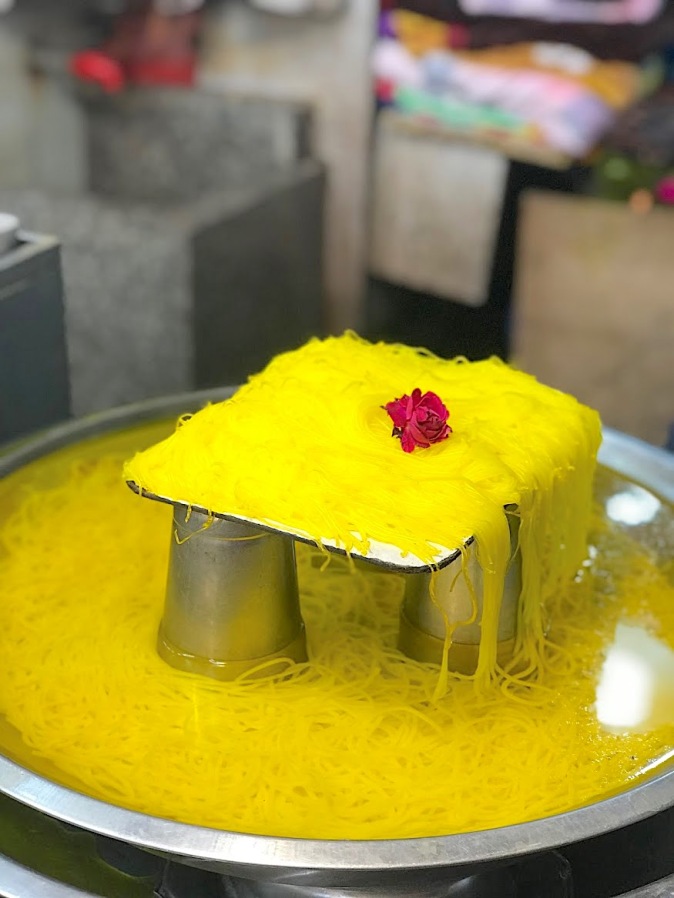
Eid in Dubai
With more than two million tourists expected over the Eid weekend, Dubai basks in all its glory. Cultural programs, various events, special Eid menu in different restaurants – the weekend promises to be a whole lot of fun. Leading shopping malls are open twenty four hours. More than half of the expectant tourists are from the GCC countries alone – an exciting news for the tourism and F&B industry. Nothing can beat a city immersed in its own beat as it celebrates a local festival.

Eid al-Fitr and Eid Al-Adha
Whereas Eid al-Fitr marks the end of the fasting month of Ramadan – the Islamic holy month of dawn-to-sunset fasting, Eid al-Adha means ‘solemn festivity’, also known as the Greater Eid or Eid al-Zuha. In India, it is called the Bakhri-Eid or the Feast of Sacrifice.
The latter is an important four-day religious holiday celebrated by Muslims worldwide to honour the willingness of the prophet ʾIbrāhīm (Abraham) to sacrifice his young firstborn son Ismā’īl (Ishmael) as an act of submission to God, and his son’s acceptance of the sacrifice before God intervened to provide Abraham with a ram to sacrifice instead (wikipedia).
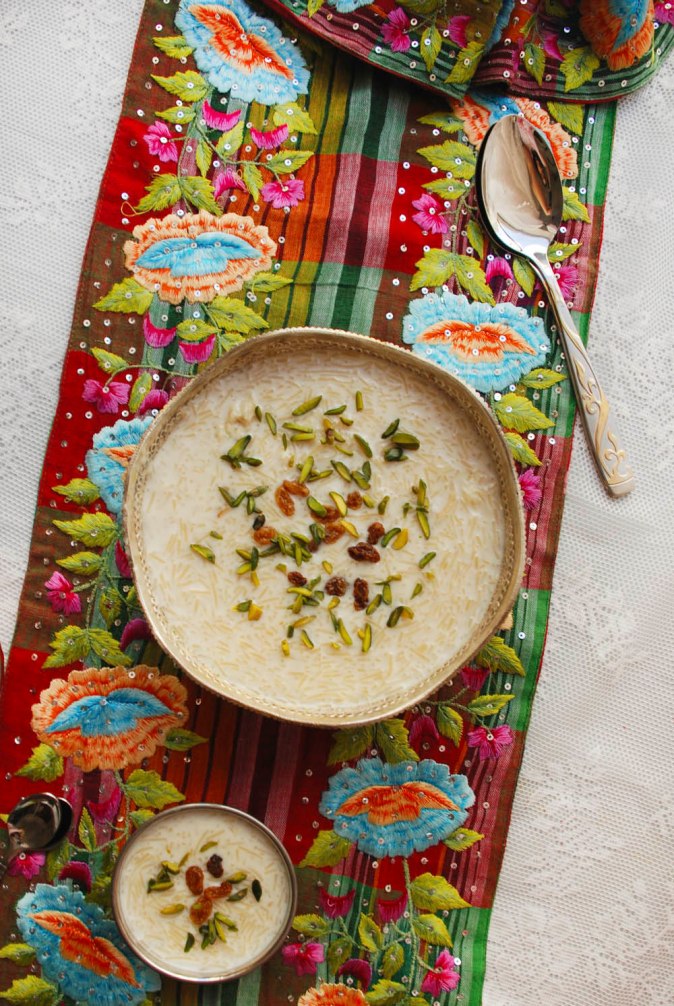
The essence of Eid to a non-Muslim like me
The beauty of growing up in a multicultural city like Kolkata is that we grew up celebrating all festivals from all religions. Although I am born in a Hindu family, on Eid, we flocked to the homes of our Muslim friends and pestered their mums, whom we addressed lovingly as mashis (which means aunties). Sumptuous meals of home-made Biryanis and Laccha Parathas were followed by never-ending refills of our bowls of shimuiyer payesh. This multi-cultural upbringing has shaped not only my personality but also my own philosophies in life as described in an earlier post of mine – Living by the water with sunset as prop – Kolkata & Ganges.
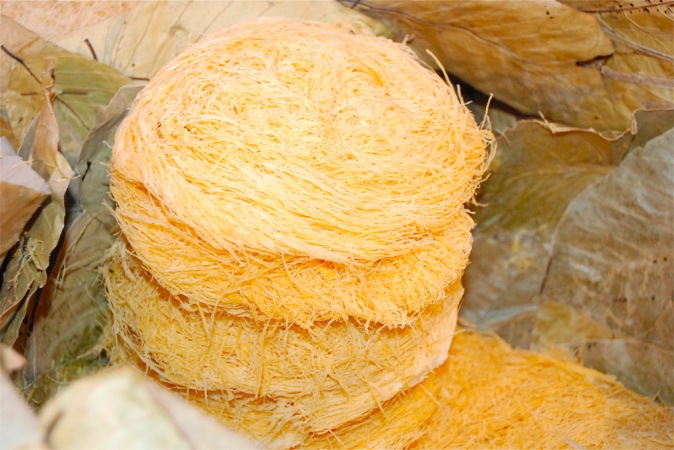
During last Eid, we were enjoying our summer holidays in Kolkata – a period I like to ‘brand’ as my summer hibernation as I go into my reticent creative cocoon. I took the Z-Sisters to Mallick Bazar in the Park Circus area. This is essentially a Muslim neighbourhood and the road-side kiosks were full of semaiya, mixed dried fruits, firni mixes (a dessert pudding made with rice powder) and brightly coloured glass bangles. The stacked up semaiya bundles looked quite surreal – as if, they were fluffs of cotton wool blown by the festive breeze.
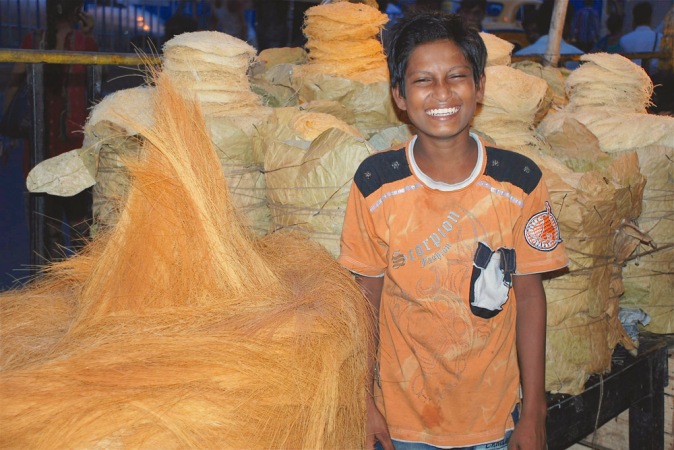
A little boy manning one of the kiosks came running to me – ‘Didi amar photo tulben?/Sister, do you want to photograph me?’ He immediately bombarded me with his next question -‘Apni ki kono bideshi magazine theke?/Are you working for any foreign magazine?’ He got disappointed that I was taking pictures… emni emni/just like that. He instructed his peers, ‘Dhoot char to didike… ja ja shob byabshay lag!/Forget her… go and mind your businesses!’

Since we weren’t buying any semaiya nor any dry fruits that day, or since I didn’t work for any foreign magazine… I was declared pretty hopeless. I wish I had met this young lad this year as I could have impressed him with my food column with Gulf News. We had planned to buy Haleem or Halim (a special Ramadan dish made with wheat, barley, meat) from one of the two popular restaurants in this area – Shiraz and Rahmania. Haleem is a delicacy and is cooked in large quantities in a huge aluminium cooking pot. In the Park Circus and Mallick Bazar area, there are many alleys and small restaurants where one can find long queues for haleem during this Ramadan time. We too queued up for haleem and took a few containers home. Along with haleem, we also devoured the delicious Firni made by mum-in-law. Set in small earthen clay pots, firni is definitely one of my mum-in-law’s signature desserts.
100 gms semaiya or vermicelli (Semaiya packets are easily found in most supermarkets around Dubai) * You may substitute this with low-fat milk. Many prefer to use sweetened condense milk – in that case you will need much less milk (1 ½ lt low-fat milk, ½cup sweetened low-fat condensed milk). A lot of us living in Dubai are lucky enough to be with our friends and family. There are many however, who aren’t. I was once having a conversation with one of the taxi-drivers of Dubai Taxi. He was talking about a rice that is made during Eid in his home in Pakistan where a special type of rice is cooked in masala. He was saying how he missed the parathas that are made for breakfast during festive days and other celebrations. He was reminiscing how his kids refuse to have their normal subah ki chai – morning tea without these parathas. Yes, he missed the sheer khurma dearly that his Ami / mother makes. I am hoping that his emotions and greetings reach his children at home. I am also hoping that the Eidi (money given to the children for buying gifts during Eid) that he’s sent home was being used by wisely by his children with their hearts filled with love for this father who was toiling away from home. The angst of a doting father is an universal phenomenon, isn’t it? Unblogging it all… Ishita Thank you for joining me on my daily food and travel journey on Pinterest, Instagram and Facebook! Disclaimer: This isn’t a sponsored post, nor are there any affiliated links for any of the brands that may have been mentioned in this blogpost. The subject, story, opinions and views stated here are my own and all images are from my personal album. While you enjoy reading my posts with lot of visuals, please do not use any material from these posts.Semaiya Kheer or Vermicelli Pudding
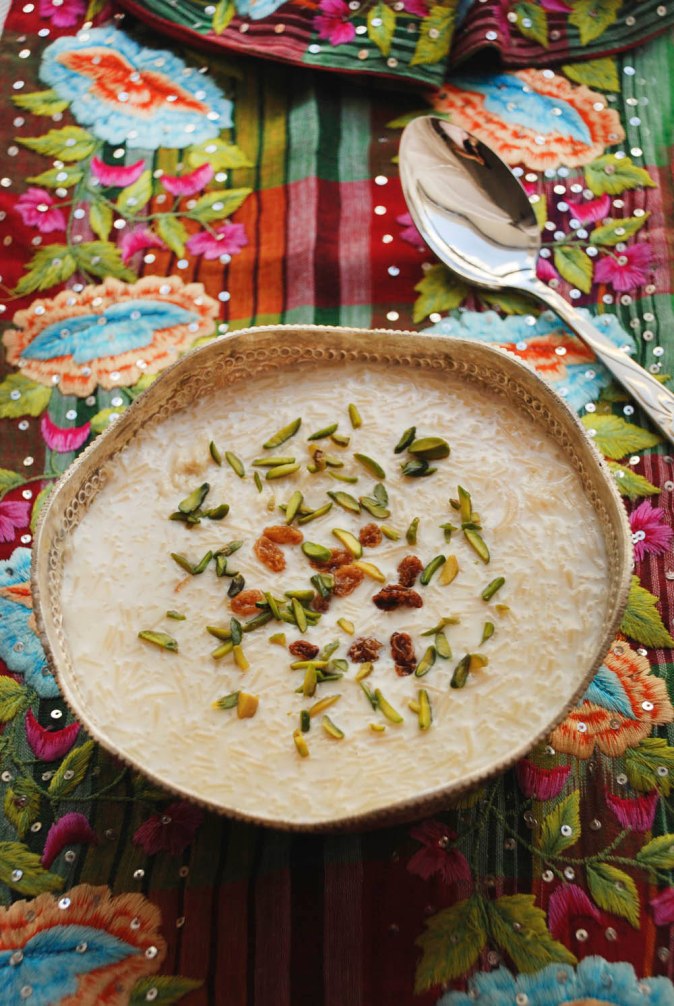
Ingredients
2 lts full cream milk*
1 cup sugar (use less sugar if you are using sweetened condense milk)
4 cardamom pods, crushed into powder
¼ cup cashew nuts, unsalted
¼ cup almonds, slivered
¼ cup raisins, soaked in water
2 tsp pistachios, for garnishing
4 tsp ghee or Indian clarified butter
a drop of mitha attar (available in Al Adil supermarkets and spice shops in the Spice Souk in Deira)Method
Some prefer to eat their payesh smoking hot, just after it has been taken off the fire! If you aren’t one of them, let the Semaiya Kheer set for a while and refrigerate it before serving.
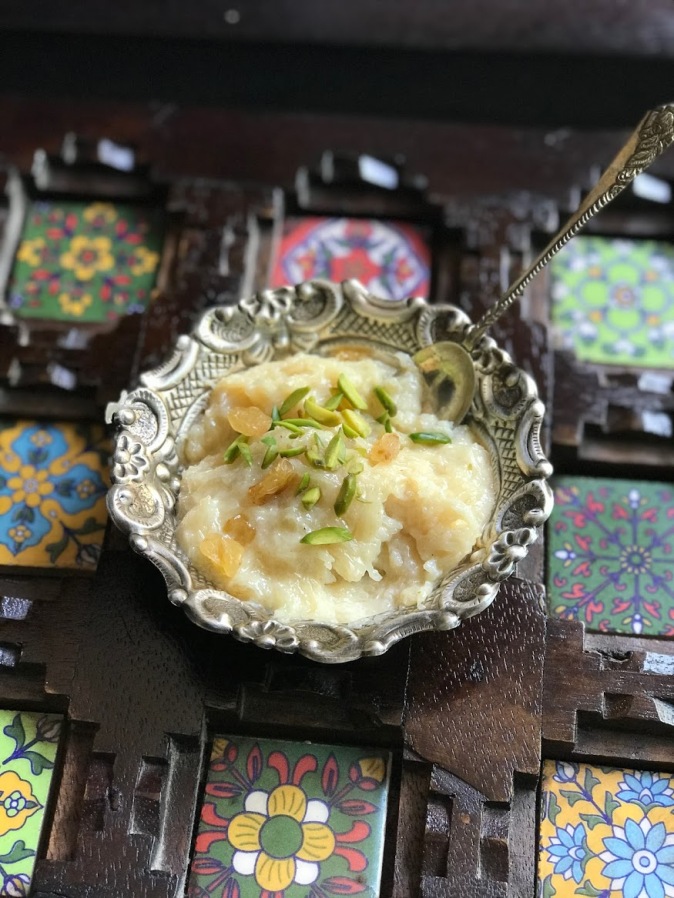
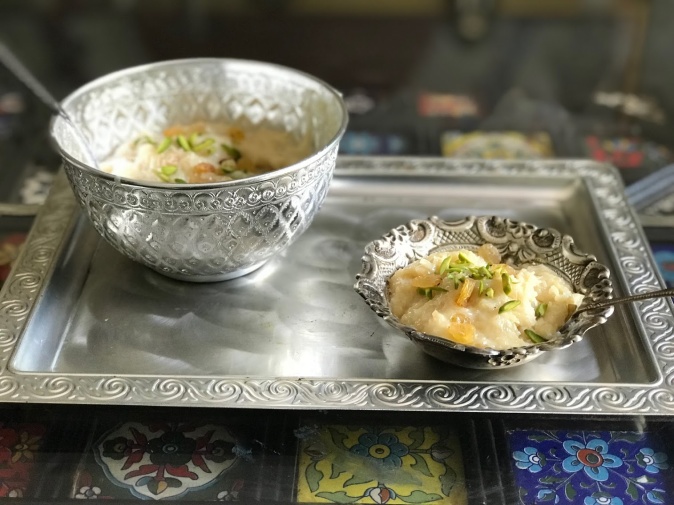
My prayers for peace and happiness going out to everyone, specially for people struggling in the war-torn areas around the world.
Recipes that are perfect for Eid:
Kolkata Mutton Biryani
Firni or Ferni - The broken rice pudding
Lachha Paratha – Love and ghee in every layer
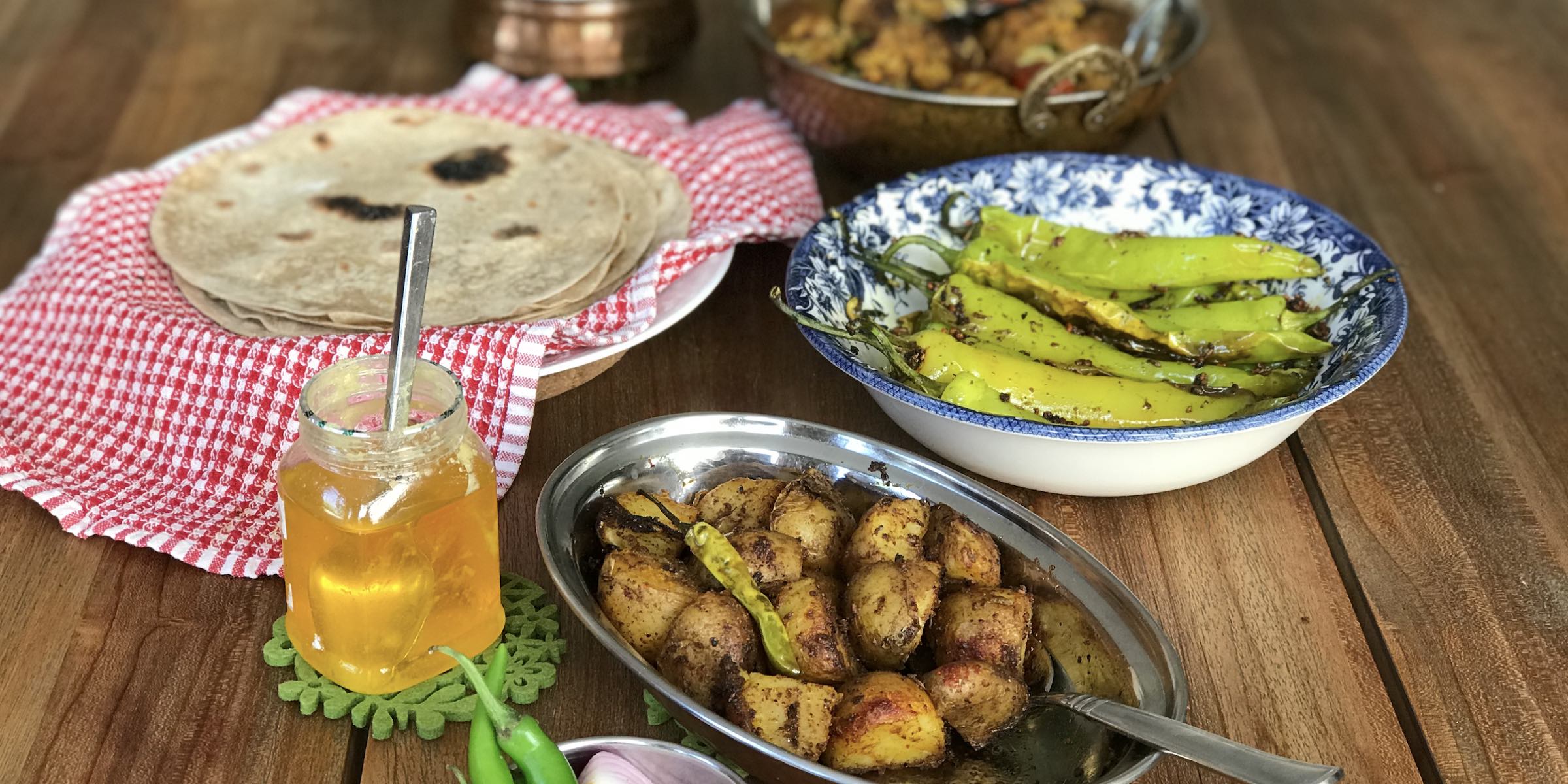
Cooking at home has always been my mantra. I love cooking for my family and friends. From street food to fine dining food, I like to explore the ingredients that go into a dish so that I can replicate it in our kitchen at a later time.
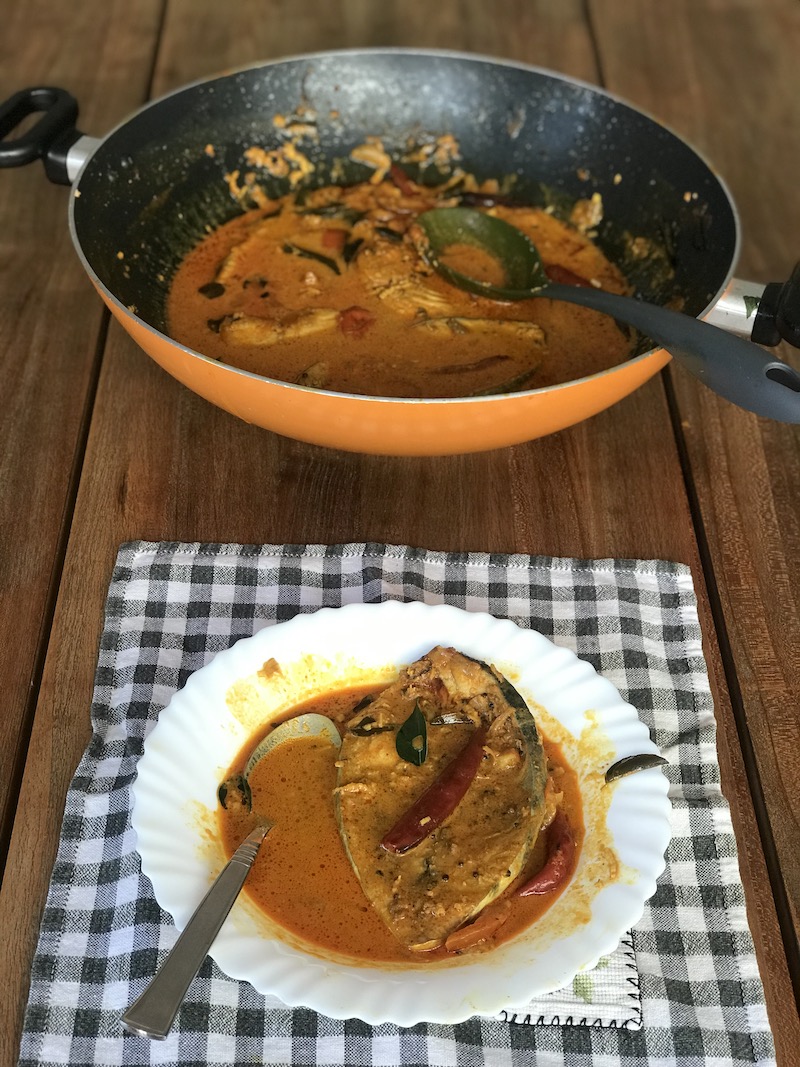 Meen Kuzhambu / Kulambu, fish gravy cooked in tamarind, coconut milk and spices
Meen Kuzhambu / Kulambu, fish gravy cooked in tamarind, coconut milk and spices
Contrary to what most people think, we aren’t eating Bengali food at home every day. In fact, the Z-Sisters won’t have it that way and I am guessing neither the Bearded Biker and I would too. At least, not all the time. A meal or two over the weekends does revolve around Bengali food or a bit of Kolkata nostalgia – sometimes Chinese the way its made at popular food kiosks in Kolkata – Karunamoyee or around City Centre in Saltlake, or in one of the legendary Park Street restaurants like Bar-B-Que. Although the look, feel or taste of the former is completely different from its latter counterpart! Then there’s Italian food. I believe that I cook Italian food quite well. At least, that’s what the Z-Sisters say. I find cooking Italian food extremely easy. Also, they turn out so exotic just by adding fresh herbs or a homemade sauce. Currently, I am making pesto very often from fresh basils that are plucked at beck and call from our garden. I stir them into pasta or grilled chicken, drizzle a little olive oil … and Eccoci… our delicious meals are ready (some other post, some other day)!
Exploring regional dishes from South India
To simplify this blogpost, I’ve decided to focus on the new flavours I’ve been exploring after settling down in our Chennai home. During the weekdays, the Z-Sisters bombard downstairs around 11:30 am – 12:00 pm, demanding lunch. Big Z is lucky to have attended school physically for two months until the schools were closed down by the Tamil Nadu government once again, as a preventive measure. Lil Z has been attending online schooling for over a year now. The Bearded Biker is also going to mark a year of working from home. I just told him the other day, that I am getting spoilt with the thought of them staying at home and coming together during mealtimes – a sort of a happy thought for me. Initially, I would cook familiar and easy-to-make dishes during weekdays – stir fries, fried rice, hotpots and grills. The weekends were reserved for slightly more elaborate affair. Since the time Matree, our wonderful live-in lady has joined us, I have been on a spree of exploring regional cuisine. Matree is a Tamilian, born and brought up in Kerala-Karnataka border and is an exceptional cook. Although quite young, she reminds me of traditional home cooks like my dida or mum-in-law who insist on using freshly ground masalas and don’t believe in fast tracking the steps in cooking a dish.
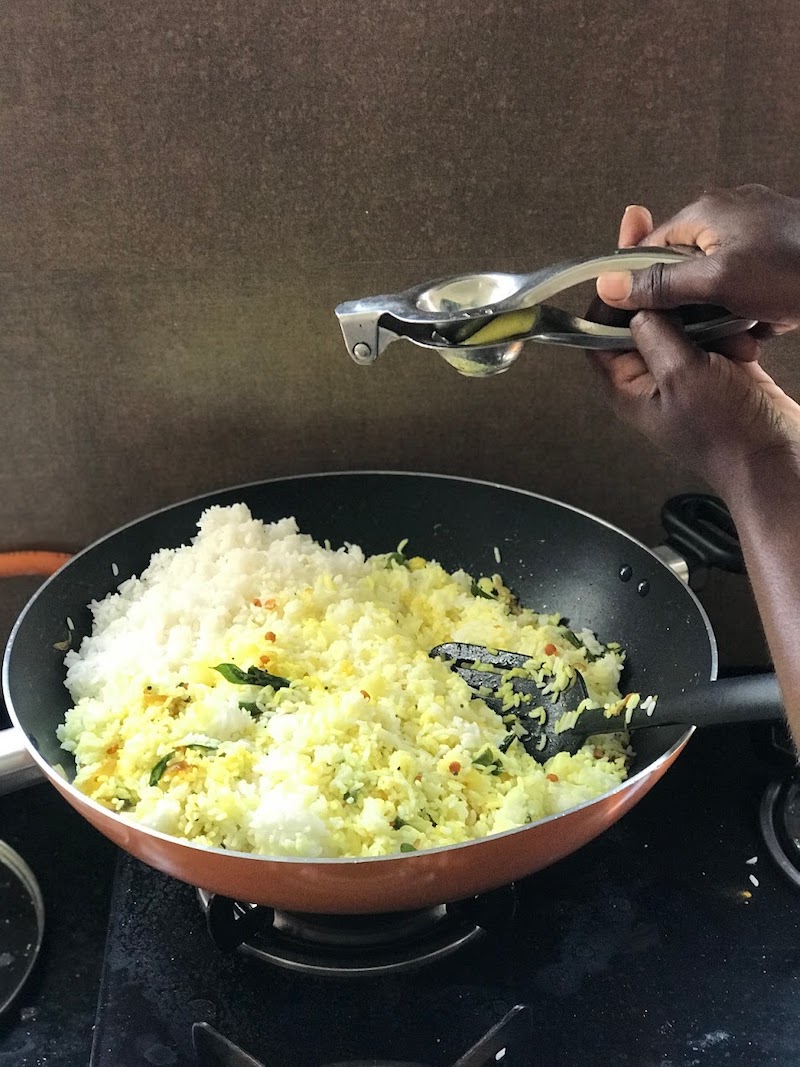 Lemon Rice, a delicate and fragrant rice preparation
Lemon Rice, a delicate and fragrant rice preparation
Cooking from scratch
I had intended to teach Matree Bengali cooking … gradually of course, just like Lady M but have now decided to keep my mission on hold. We are enjoying the variety of regional dishes so much, that I don’t want to overburden her by educating her on Mustard Oil, Jharna Ghee and other nuances of Bengali cuisine. Also, Matree’s stock seems to be endless as of now and she effortlessly moves within the different states of South India. Like traditional home cooks, her requirements for kitchen utensils are also very traditional. Whereas for years, I had ‘managed’ with a coffee grinder for grinding my fresh masalas or non-stick woks for the tempering, Matree insists on what she is used to… a Preethi mixer grinder or a proper tadka pan for ‘thalippu’ or tempering. The chai has to be ideally made in a saucepan (no brown sugar for her), the fresh milk is boiled in a Pigeon Milk Boiler and the curries are made in a heavy kadai. Every other day, we have an Amazon delivery for Matree’s list. I had simplified my kitchen life by giving up on all the miscellaneous gadgets and utensils that I thought required a bit of TLC, that is tender, love and caring. My intention is to delegate the daily cooking and all kitchen related activities to Matree, so that I can re-focus on my writing. Therefore, I am indulging in our Amazon spree to the hilt. The pantry room adjoining our main kitchen resembles a ware house store… new pots, pans, ladles and a whole lot of kitchen items. Initially, my favourite instruction to Matree was, “manage”. Translated, this meant using whatever we already had, which were anyway proliferating out of the kitchen boundaries into the cabinets in our living room and dining room. I have now realised, that for Matree to operate at her full potential, she couldn’t be asked to ‘manage’. She wouldn’t compromise in cooking and every step had to be done from scratch and at home – be it fermenting the Appam mixture overnight or making Idi Appam noodles at home. No more store bought ready made batters and mixes!
Every night before winding down, as Matree and I decide on the next day’s menu, I ask her to think of a local dish that we haven’t tried yet. I also leave the regional menu pairing to her… if I suggest something that doesn’t go well, she will often reject that. I am in no hurry to teach her Bengali cooking. I also have all the time in the world to savour all the new taste and flavours that she’s bringing to our table. It was only once that I couldn’t resist putting her puri making skills to test and asked her to make perfect phulko luchis to go with our weekend’s kasha mangsho, the slow cooked tender goat meat (as shown below)!
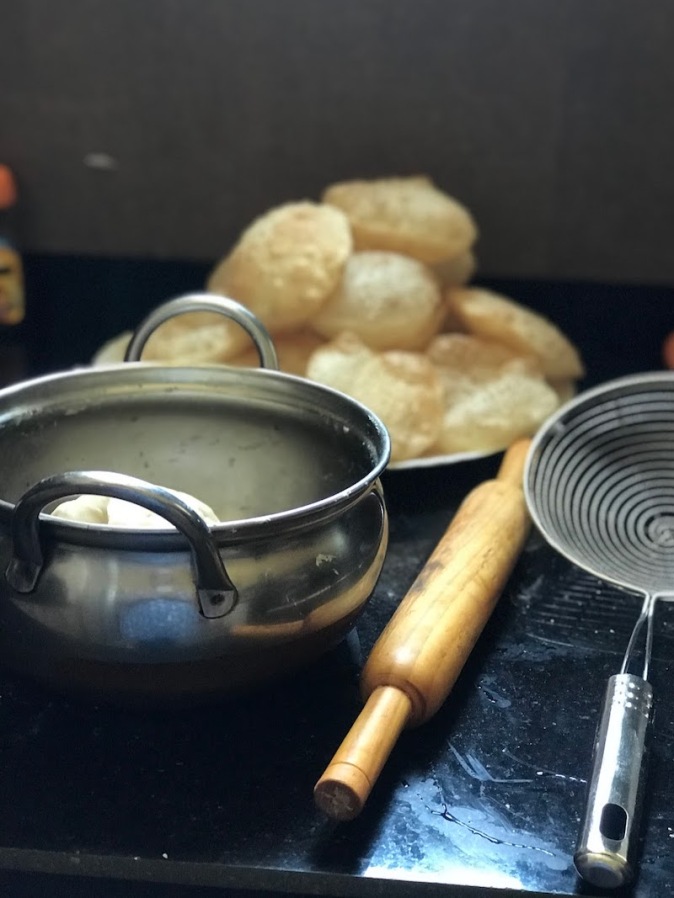
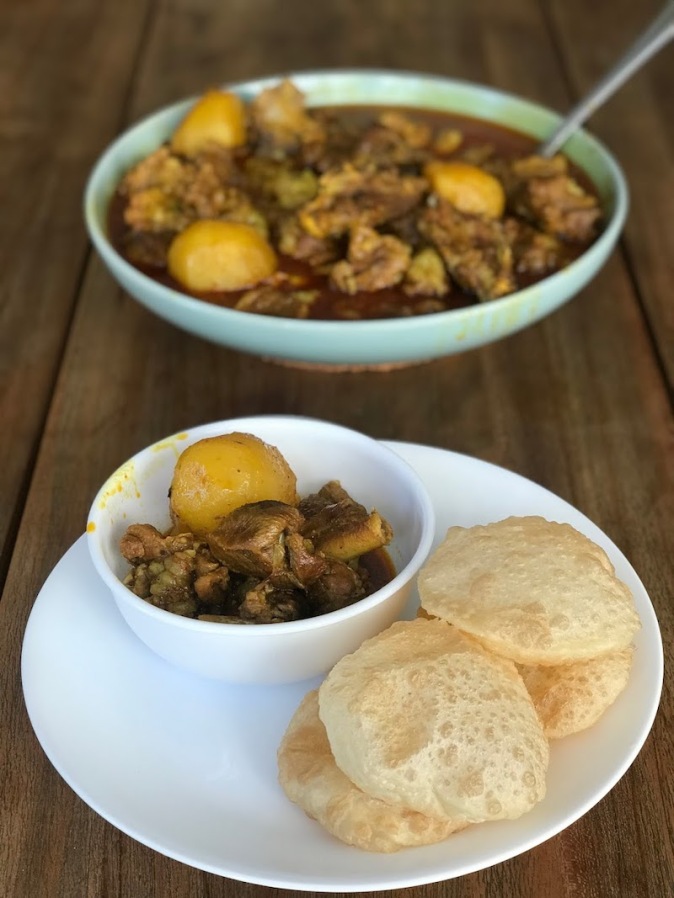
Beyond Rasam… delicious snapshots of our home cooked meals… 50 shades of rice, lentils and Poriyal. Curry leaves for thalippu or tempering, and of course as garnish.
“So, you will be eating Rasam now?” “Are you eating Curd Rice and gun powder?” “No more Mustard fish… only idli, sambhar and dosa?”
We have been such a vocal non-vegetarian family so far, we are constantly being drowned with stereotypical questions like above… as if coming to Chennai was a culinary exile. To be fair, I didn’t expect to learn so many non-vegetarian preparations as I have done over these few months. A quick search on Google would reveal that 97.65 percent in Tamil Nadu are non-vegetarians. An impressive statistics in comparison to West Bengal holding the percentage at 98 percent!
My notion had been laid astray by most of the Tamilian friends we have had – Brahmins who are vegetarians. If only we had an association with anyone from the Chettinad region or the coastal area, we would have been prepared for the delicious onslaught of non-vegetarian food that was perhaps in store for us in Chennai.
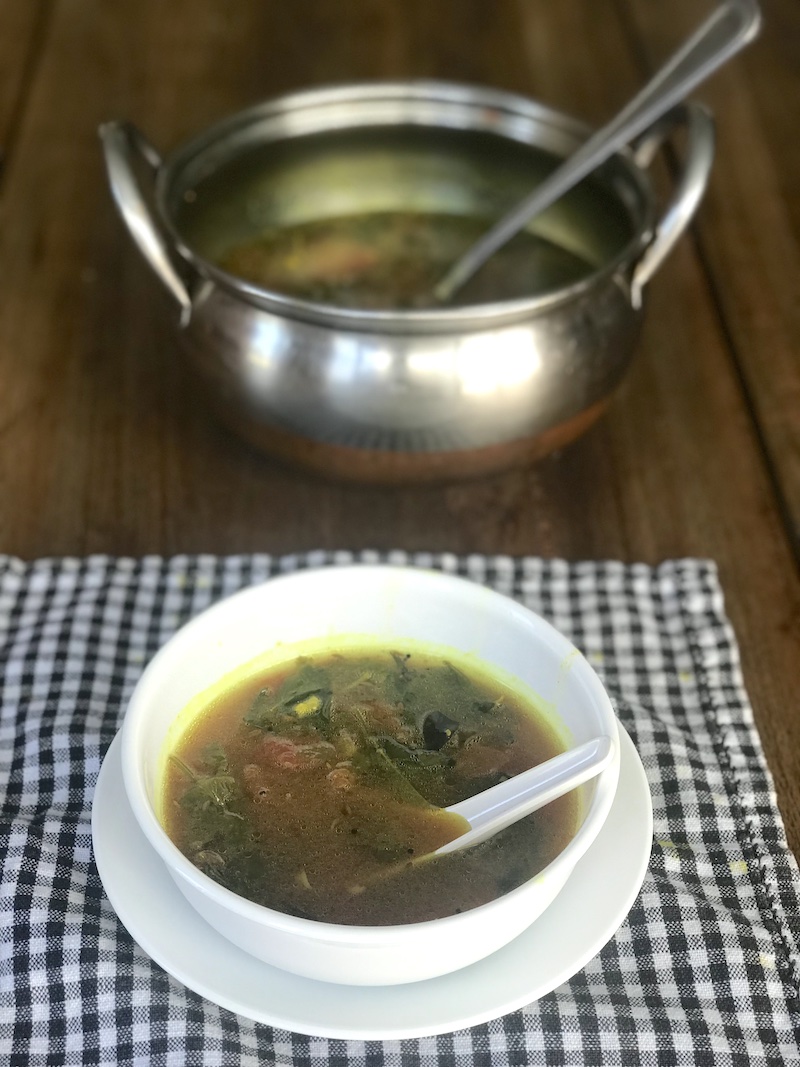 RASAM. Soup style! The urge to have an authentic Rasam made at home became almost like an obsession after hearing umpteen number of times by actress Deepika Padukone that her favourite food is Rasam and Rice. Moreover, with Rasam having gone ‘viral’ in the US as the “immunity boosting soup”, thanks to chef Arun Rajadurai who worked in Anjappar Princetown, I had to learn what made Rasam so special. The thing is, there is no single Rasam recipe. Rasams not only differ with ingredients but also across families and provinces in South India!
RASAM. Soup style! The urge to have an authentic Rasam made at home became almost like an obsession after hearing umpteen number of times by actress Deepika Padukone that her favourite food is Rasam and Rice. Moreover, with Rasam having gone ‘viral’ in the US as the “immunity boosting soup”, thanks to chef Arun Rajadurai who worked in Anjappar Princetown, I had to learn what made Rasam so special. The thing is, there is no single Rasam recipe. Rasams not only differ with ingredients but also across families and provinces in South India!
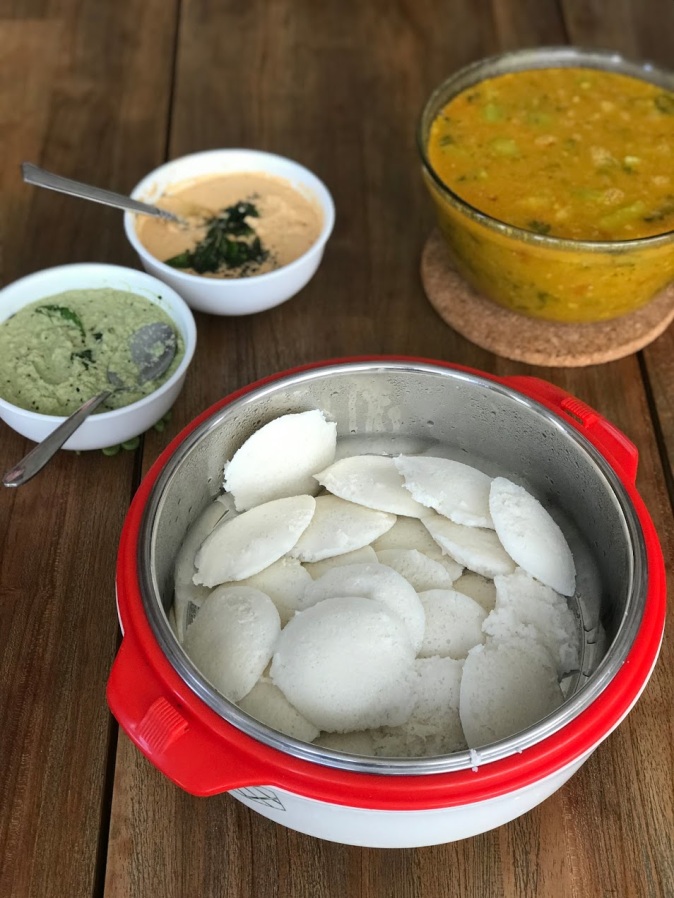
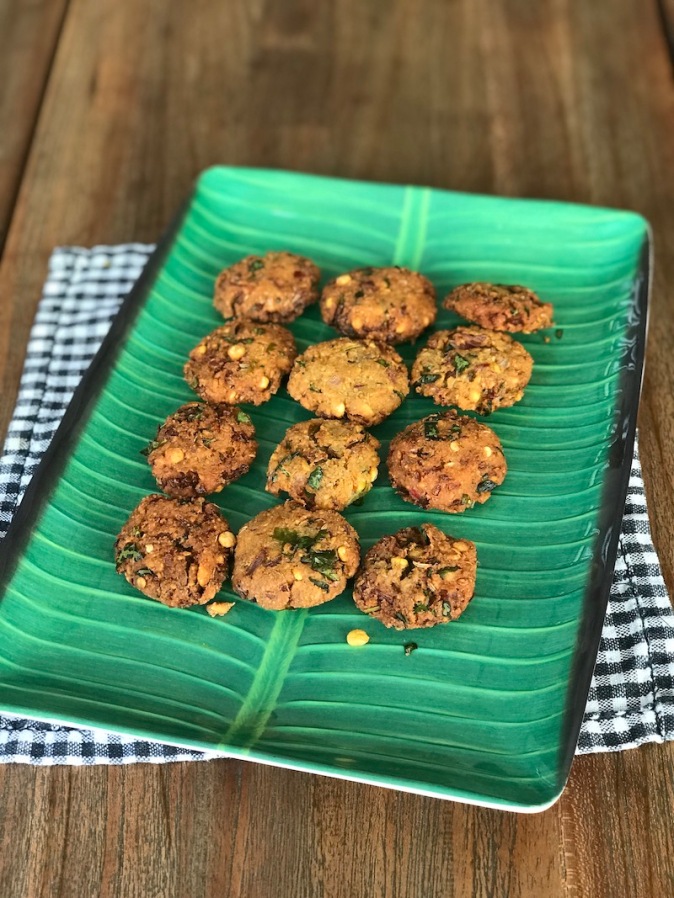
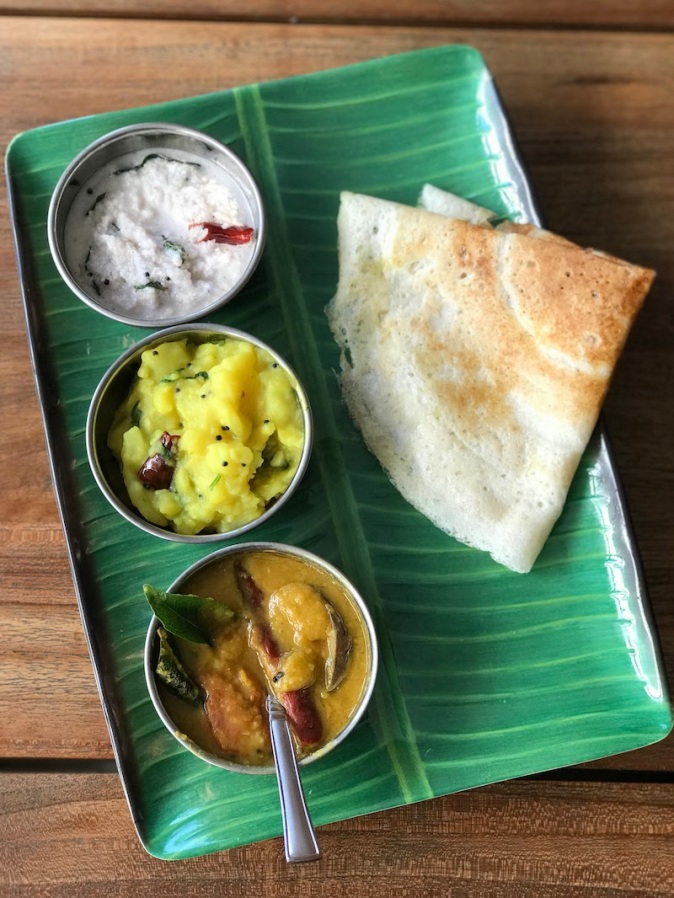
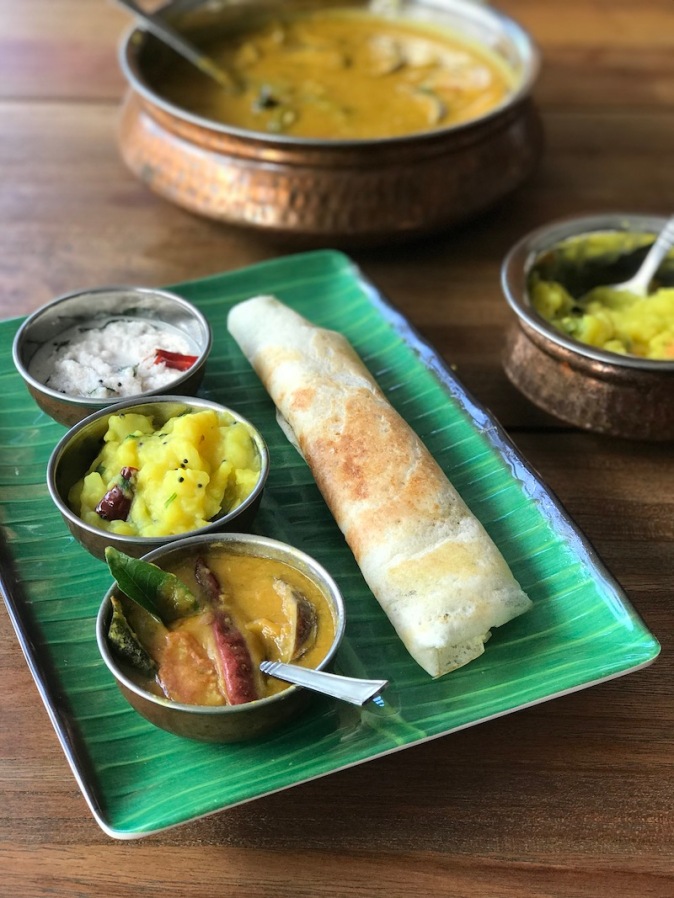

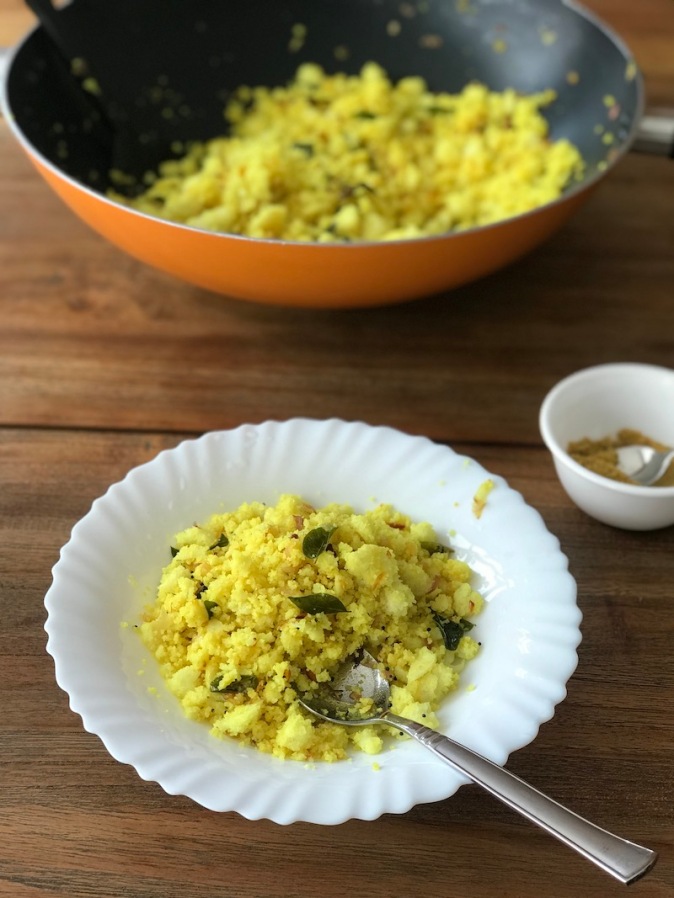 Idli, Masala Vada, Medu Vada, Masala Dosa and Uttapam served with sambar and a variety of fresh coconut chutneys comprise the array of “tiffin”. The different coconut chutneys make for an interesting taste variations and I learnt that the Thengai chutney is the white coconut chutney with only the thalippu or tempering of roasted Bengal gram, green chillies, mustard seeds, urad dal, curry leaves and asafoetida. The red coconut chutney had roasted Sambhar onions (shallots), red chillies, garlic, ginger, roasted chana dal and curry leaves. Fresh coriander leaves, green chillies and a dash of lime went into the making of the green coconut chutney along with the usual tempering. The Idli Upma (last image above) is a brilliant makeover with left over idlis and adding the usual thalippu or of mustard seeds, curry leaves and channa dal.
Idli, Masala Vada, Medu Vada, Masala Dosa and Uttapam served with sambar and a variety of fresh coconut chutneys comprise the array of “tiffin”. The different coconut chutneys make for an interesting taste variations and I learnt that the Thengai chutney is the white coconut chutney with only the thalippu or tempering of roasted Bengal gram, green chillies, mustard seeds, urad dal, curry leaves and asafoetida. The red coconut chutney had roasted Sambhar onions (shallots), red chillies, garlic, ginger, roasted chana dal and curry leaves. Fresh coriander leaves, green chillies and a dash of lime went into the making of the green coconut chutney along with the usual tempering. The Idli Upma (last image above) is a brilliant makeover with left over idlis and adding the usual thalippu or of mustard seeds, curry leaves and channa dal.
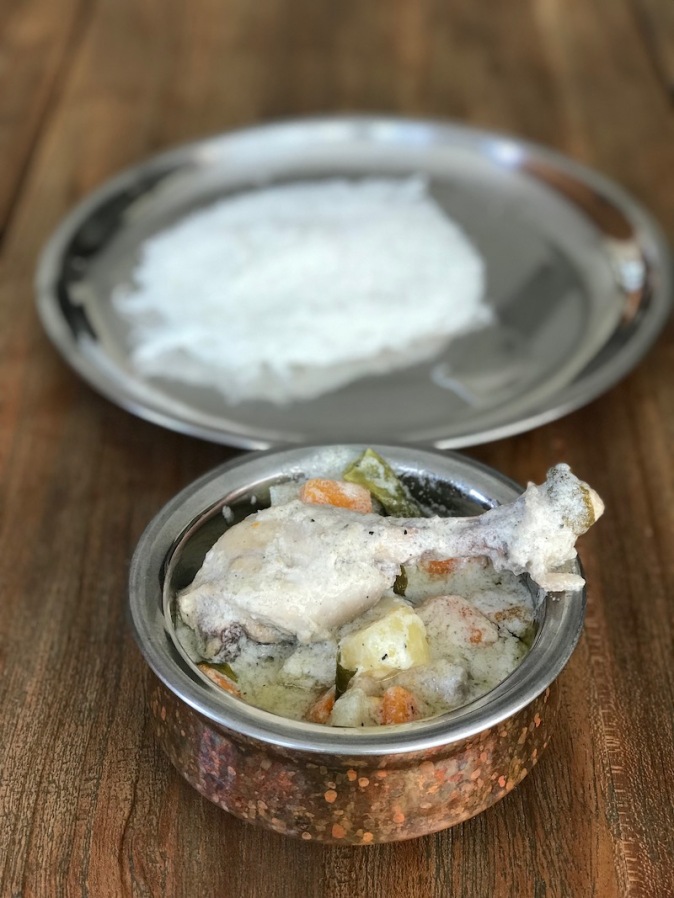
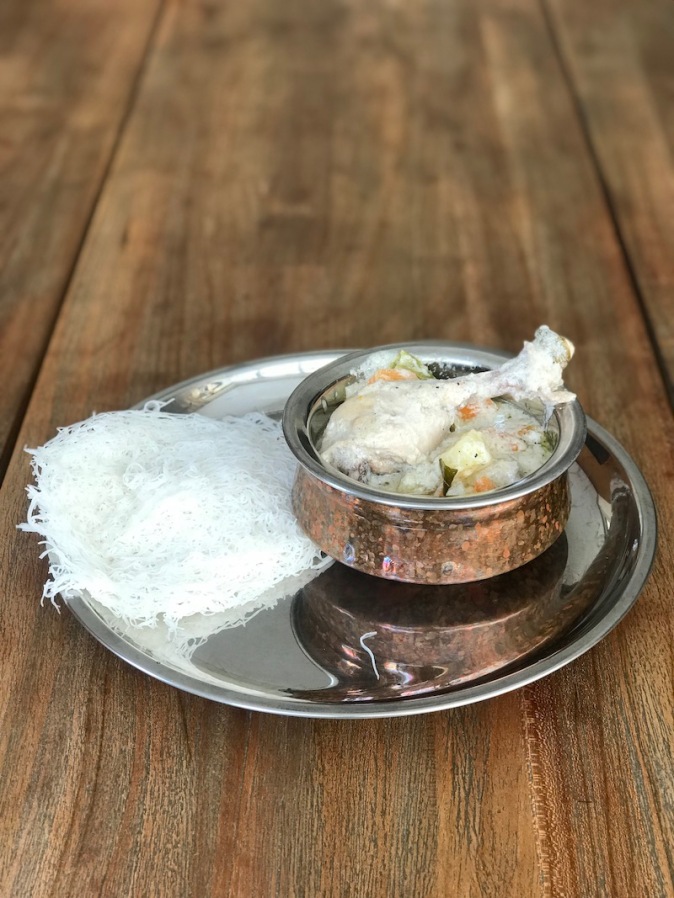 Idiyappam with Chicken Stew with coconut milk
Idiyappam with Chicken Stew with coconut milk
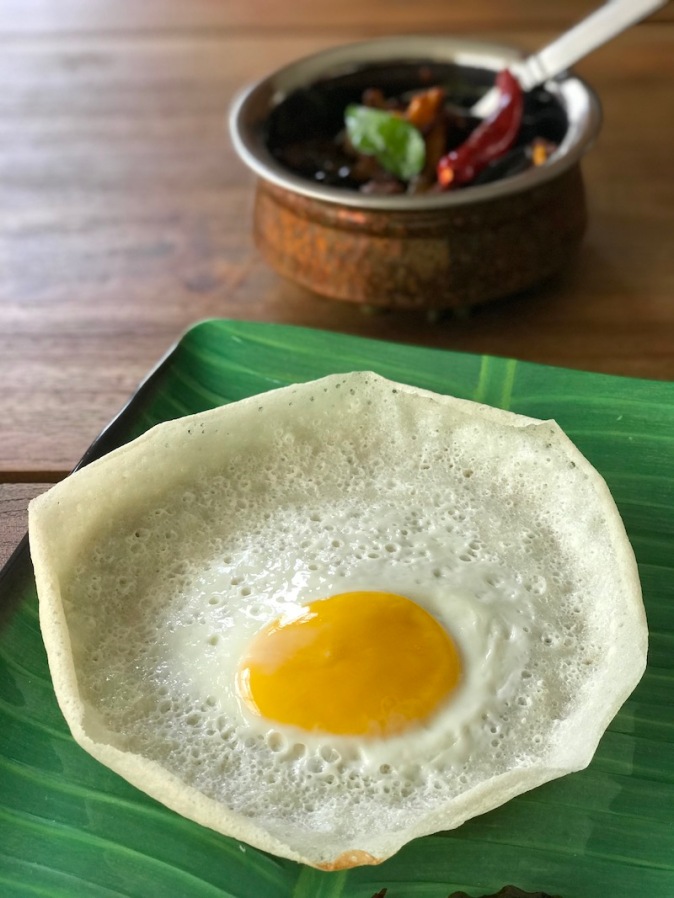
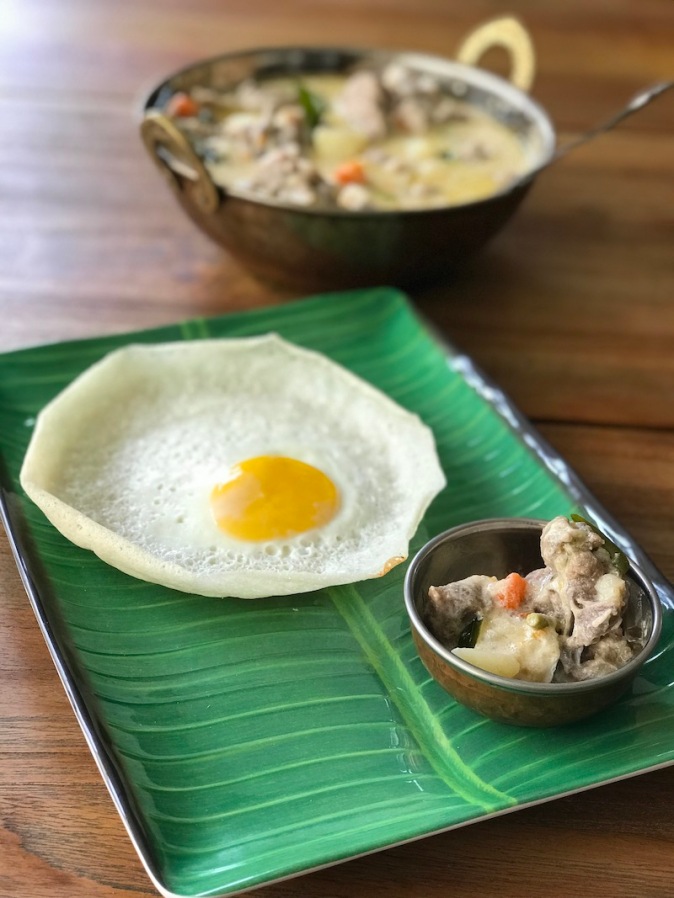
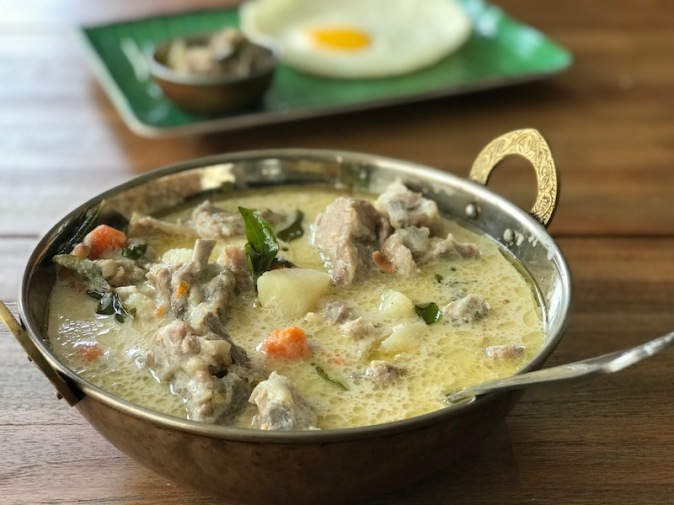
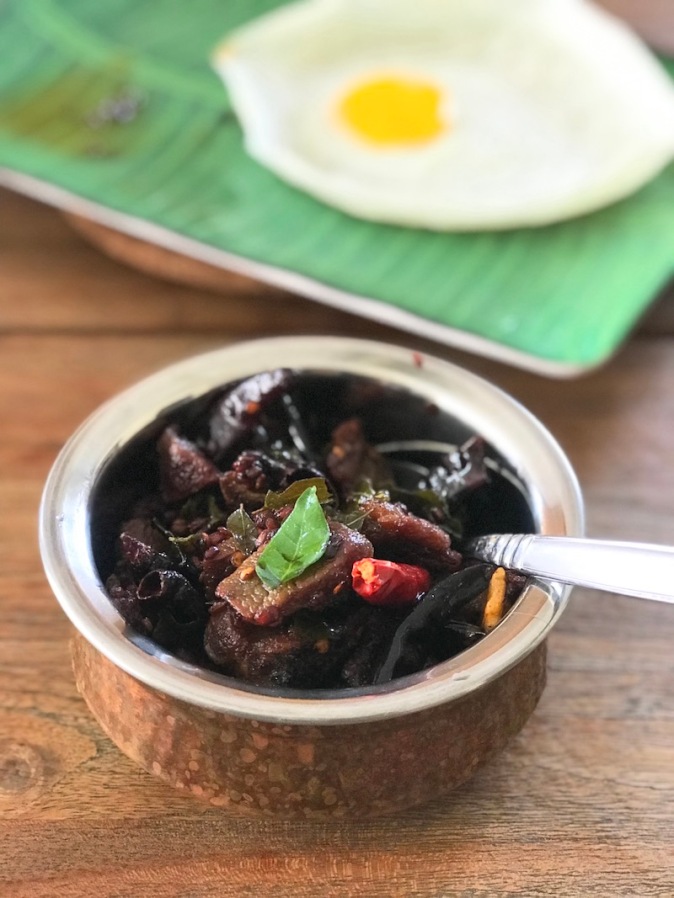 The Bull’s eye Appam with a fried egg in the middle is definitely a culinary fine art… and can be had with either the light Mutton Stew or the spicy Mutton Sukha, although both preparations have contrasting taste profiles. Cooked in the Kerala style, the chicken and the mutton stew tastes surreal with a thick coconut gravy and the subtle fragrance of bay leaf, ginger, fried onions and whole black pepper.
The Bull’s eye Appam with a fried egg in the middle is definitely a culinary fine art… and can be had with either the light Mutton Stew or the spicy Mutton Sukha, although both preparations have contrasting taste profiles. Cooked in the Kerala style, the chicken and the mutton stew tastes surreal with a thick coconut gravy and the subtle fragrance of bay leaf, ginger, fried onions and whole black pepper.
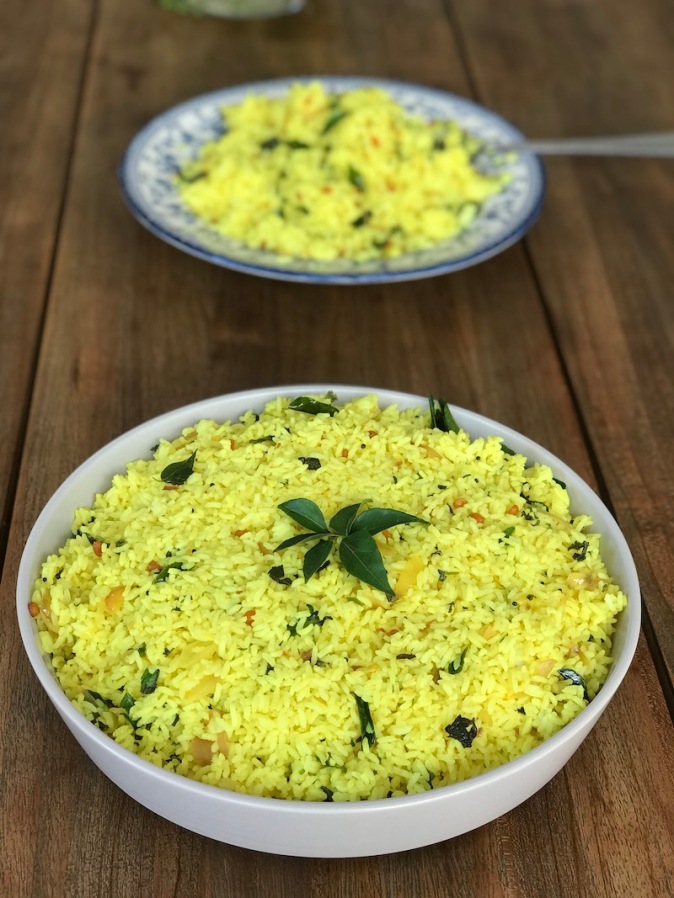
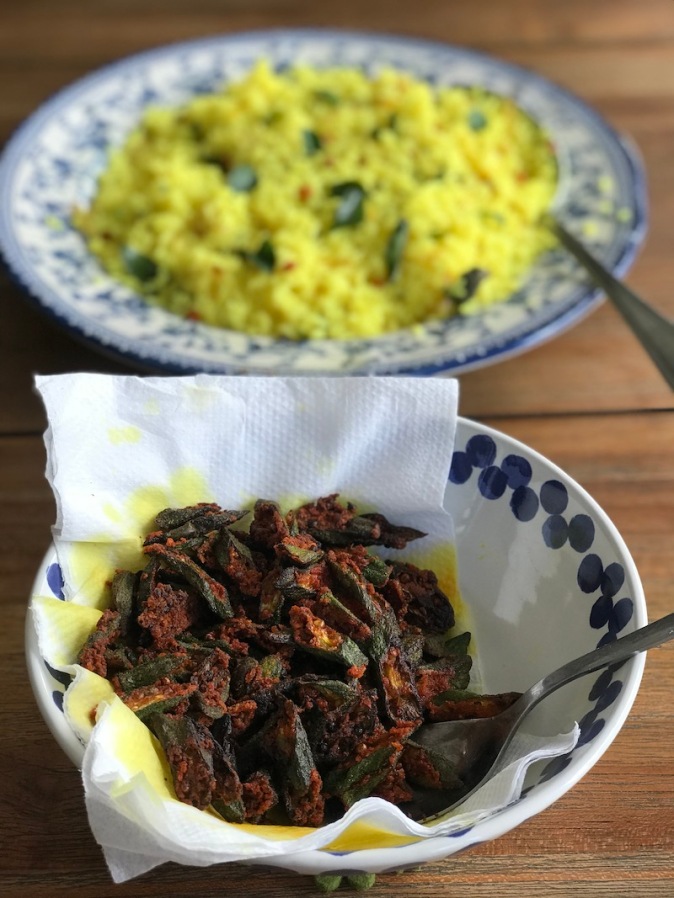 Lemon rice cooked in the Tamil style, paired with a crispy fried spicy okra.
Lemon rice cooked in the Tamil style, paired with a crispy fried spicy okra.
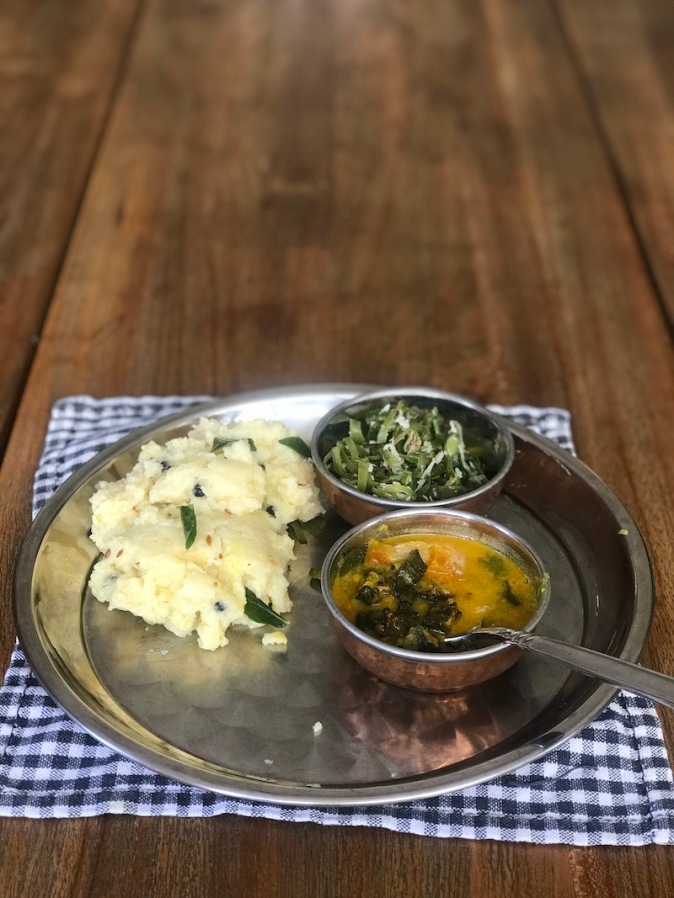
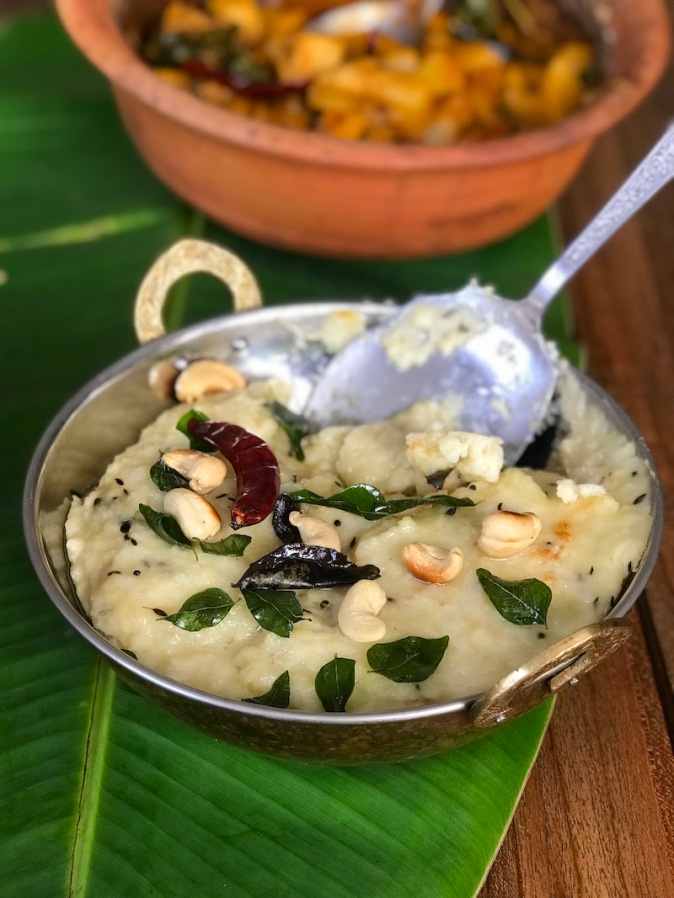 Ven Pongal with Sambar and a Poriyal made with beans (first picture above) and with Kara Kulambu or Kara Khuzambu (second picture above and also below), an extremely spicy and tangy preparation of a mix of vegetables.
Ven Pongal with Sambar and a Poriyal made with beans (first picture above) and with Kara Kulambu or Kara Khuzambu (second picture above and also below), an extremely spicy and tangy preparation of a mix of vegetables.
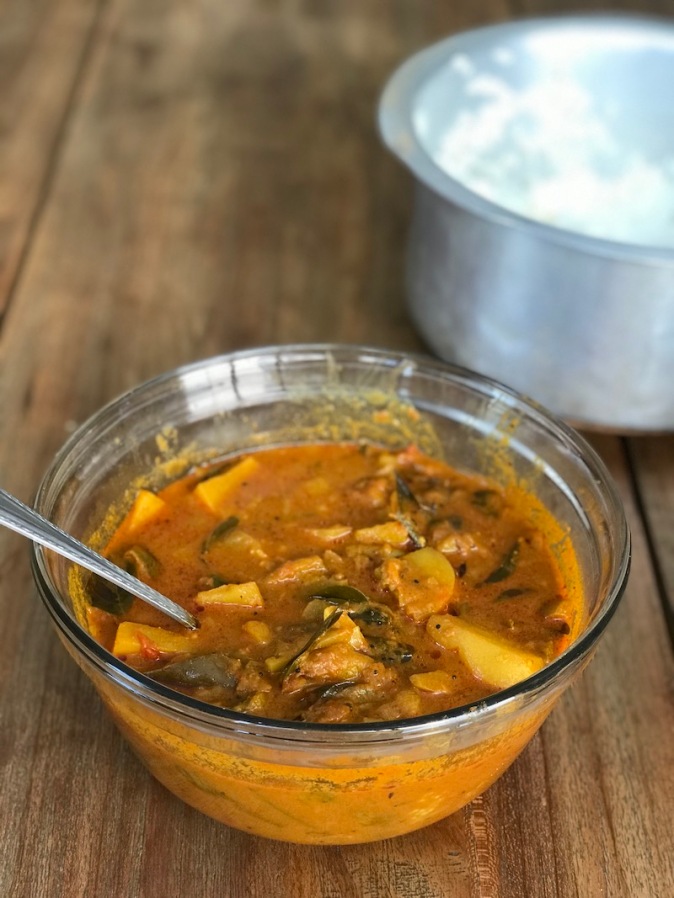
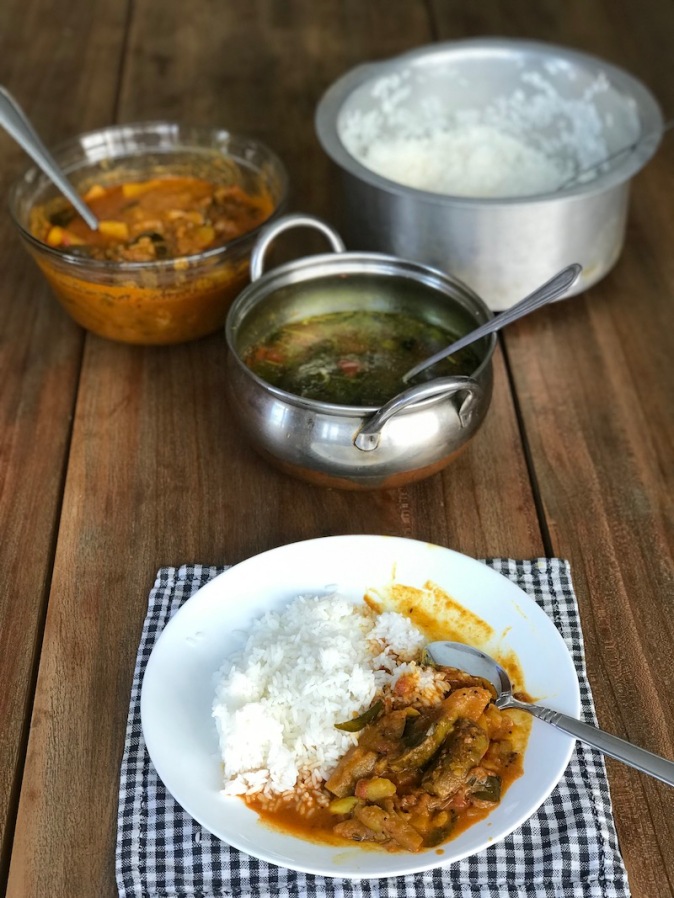
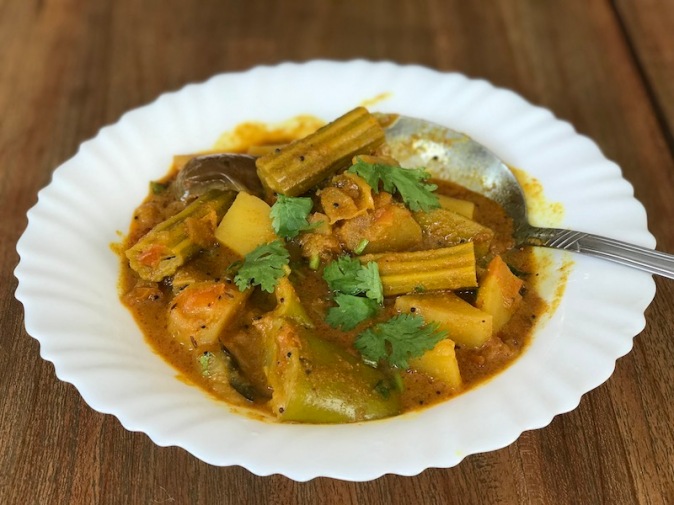 White rice makes the perfect accompaniment to the spicy Kara Kulambu. Like many variations of Sambar, Matree sometimes had her own renditions of Kara Kulambu – like in the above, where she added green mangoes, drumsticks and fresh coriander leaves.
White rice makes the perfect accompaniment to the spicy Kara Kulambu. Like many variations of Sambar, Matree sometimes had her own renditions of Kara Kulambu – like in the above, where she added green mangoes, drumsticks and fresh coriander leaves.
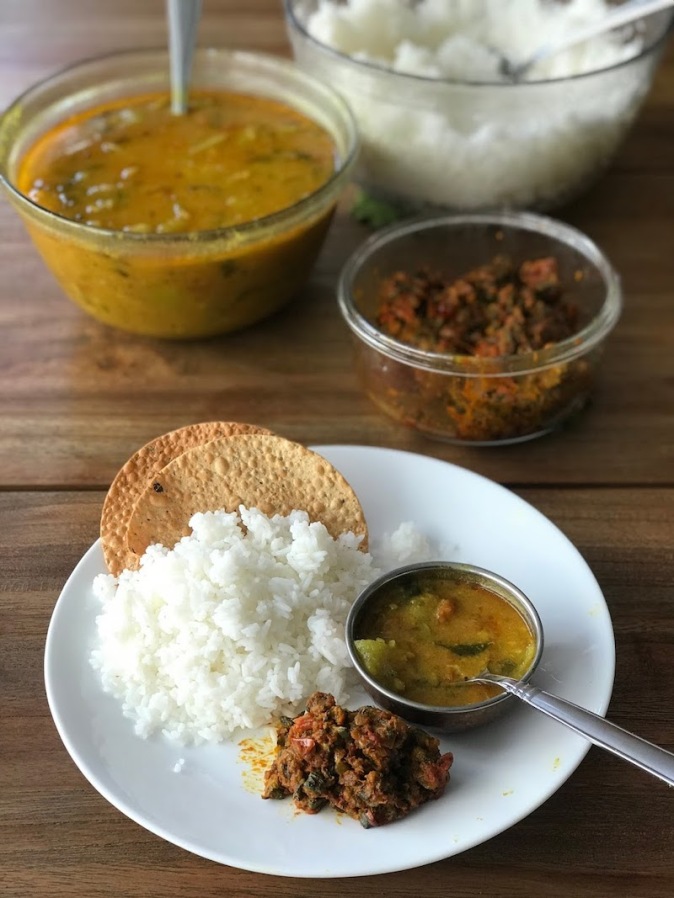 White Rice with Dal, spicy Bitter gourd Poriyal and Papad
White Rice with Dal, spicy Bitter gourd Poriyal and Papad
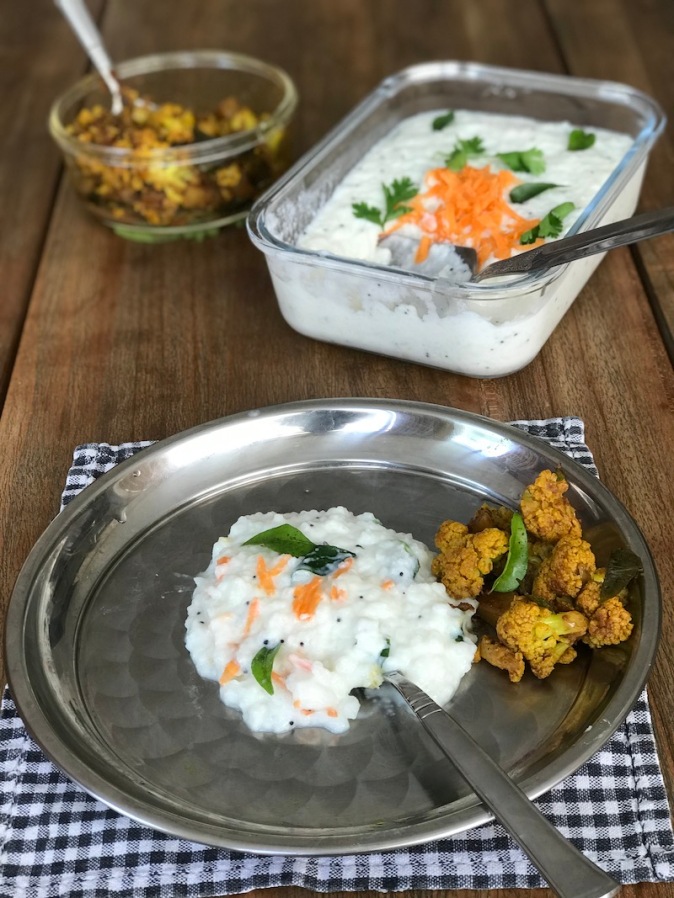
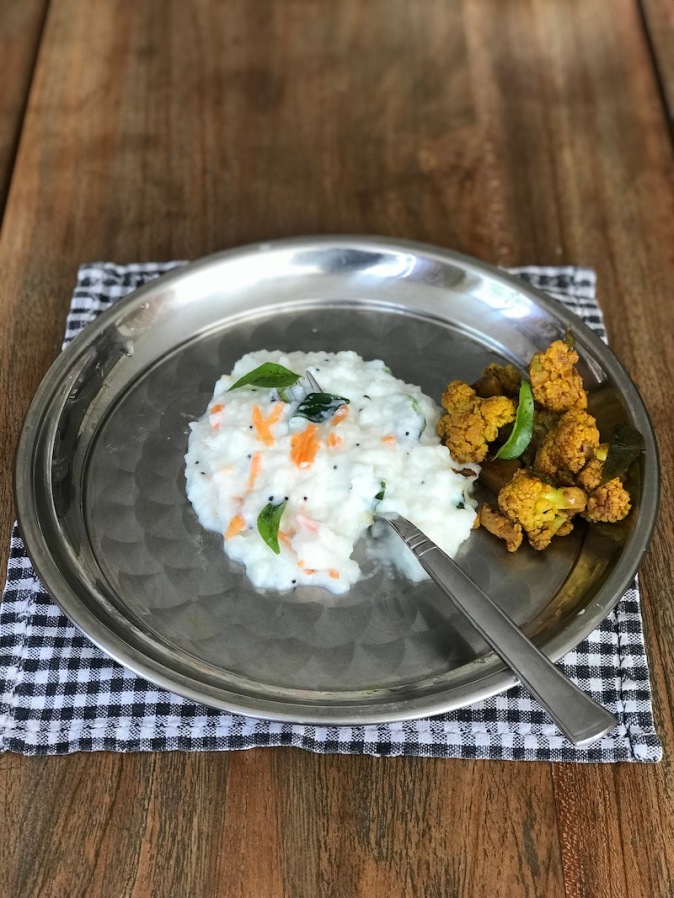 Curd Rice with Masala Cauliflower Poriyal
Curd Rice with Masala Cauliflower Poriyal
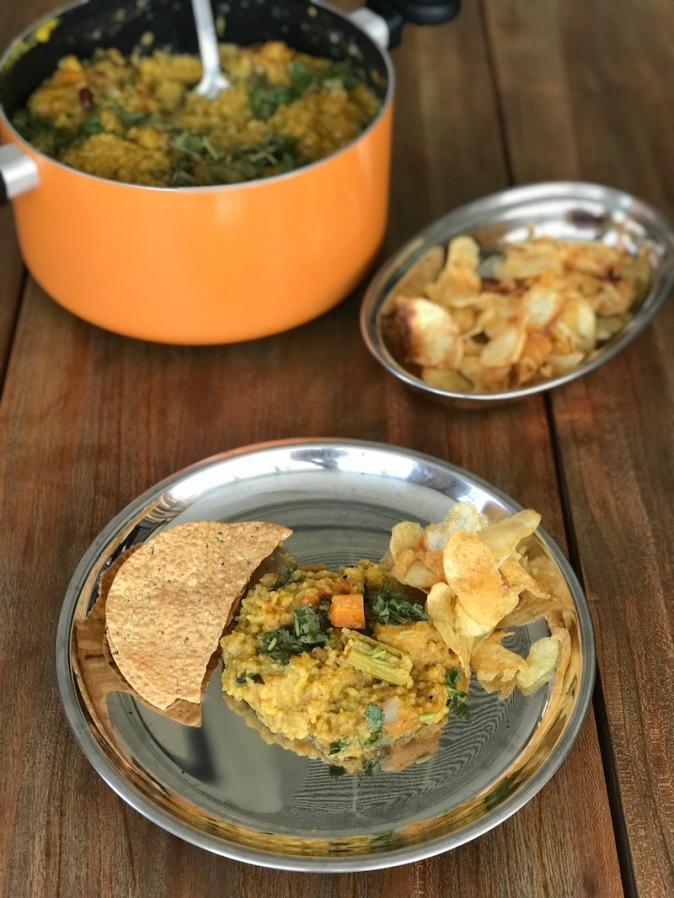 Bisi Bele Bhath with homemade potato chips and Papad is Matree’s favourite. Bisi Bele Bhath is a spicy lentil and rice dish that has its origin in Karnataka. With lots of vegetables thrown in the dish, I felt that Bisi Bele Bhath could well be described as a spicier version of the Bengali Khichuri.
Bisi Bele Bhath with homemade potato chips and Papad is Matree’s favourite. Bisi Bele Bhath is a spicy lentil and rice dish that has its origin in Karnataka. With lots of vegetables thrown in the dish, I felt that Bisi Bele Bhath could well be described as a spicier version of the Bengali Khichuri.
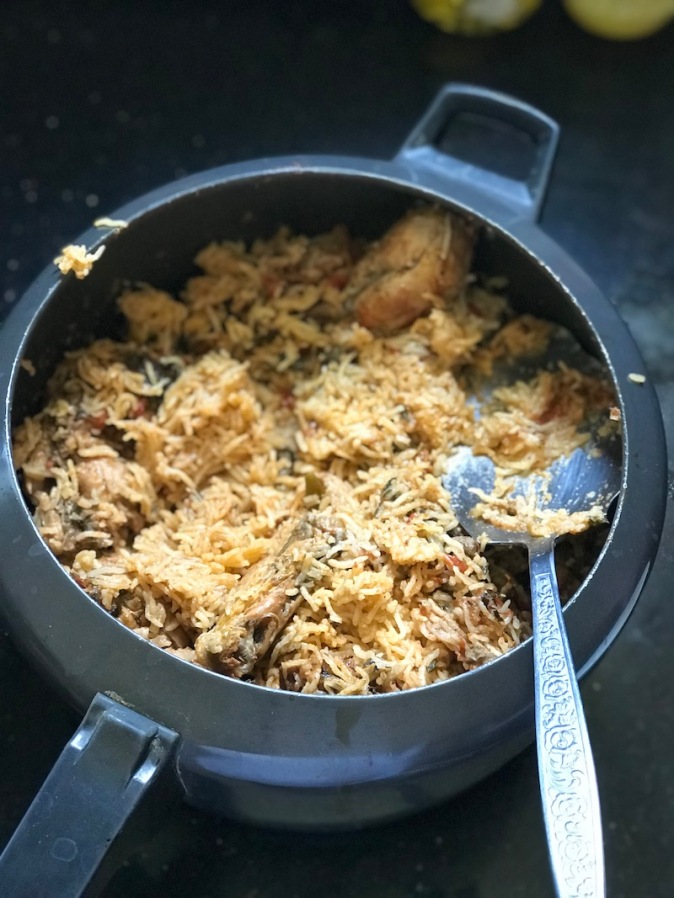 Ambur styled Biryani cooked in a pressure cooker. Originating in the region of Ambur, this spicy Biryani is paired with Khattay Baigan, the brinjal curry or a spicy and tangy Kathirikai Chutney, the brinjal chutney and cucumber raita.
Ambur styled Biryani cooked in a pressure cooker. Originating in the region of Ambur, this spicy Biryani is paired with Khattay Baigan, the brinjal curry or a spicy and tangy Kathirikai Chutney, the brinjal chutney and cucumber raita.
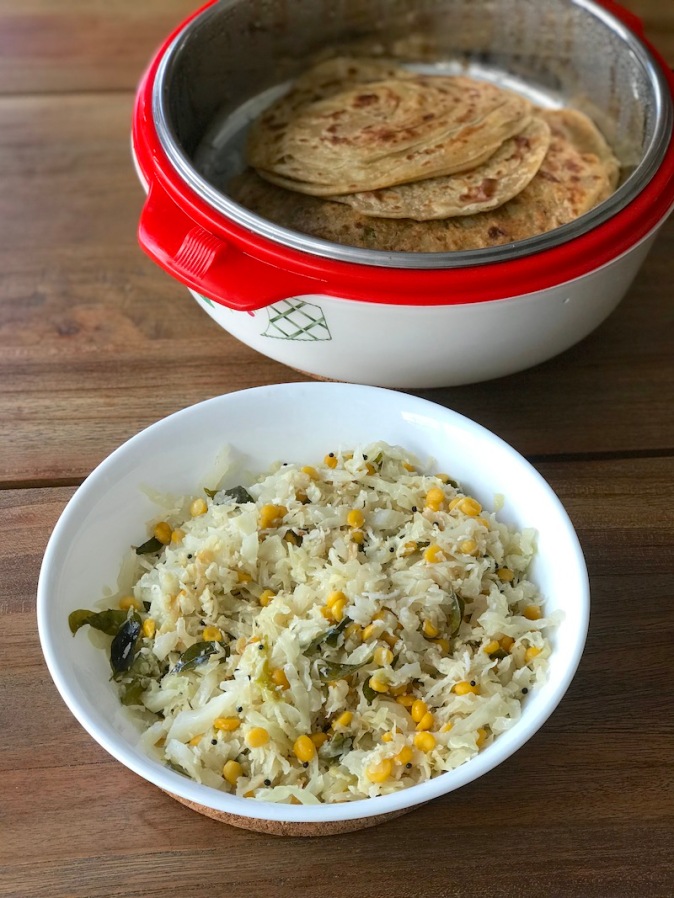
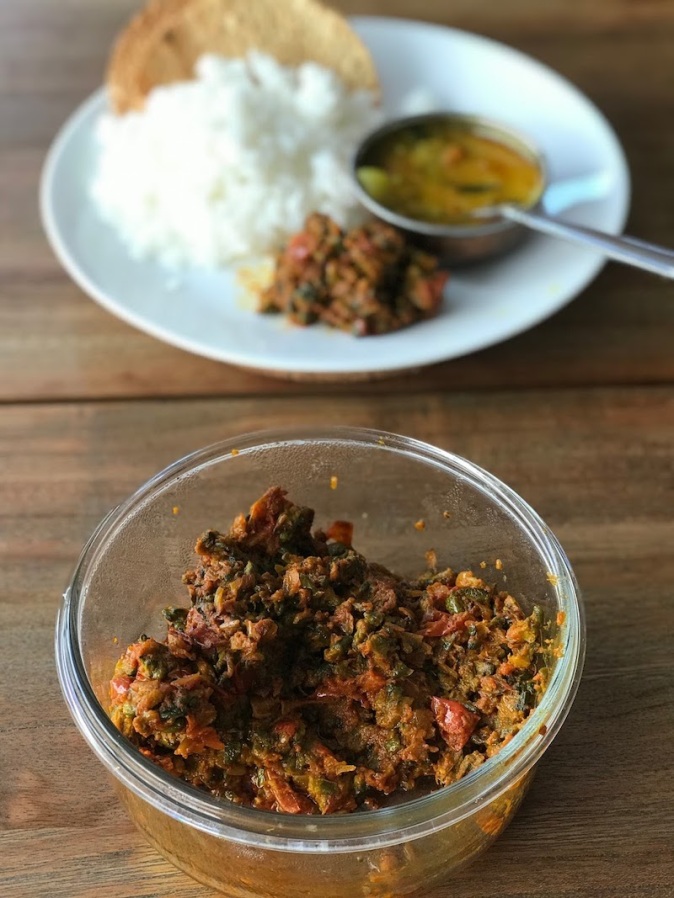 Poriyals are shallow fried or sauteéd vegetable dishes that can be made with every possible vegetable. Cabbage Poriyal with fresh grated coconut and bittergourd poriyal (first and second image above). In fact, amongst all the Poriyals I tasted so far, my favourites are the carrot-bean poriyal and the spicy bittergourd poriyal.
Poriyals are shallow fried or sauteéd vegetable dishes that can be made with every possible vegetable. Cabbage Poriyal with fresh grated coconut and bittergourd poriyal (first and second image above). In fact, amongst all the Poriyals I tasted so far, my favourites are the carrot-bean poriyal and the spicy bittergourd poriyal.
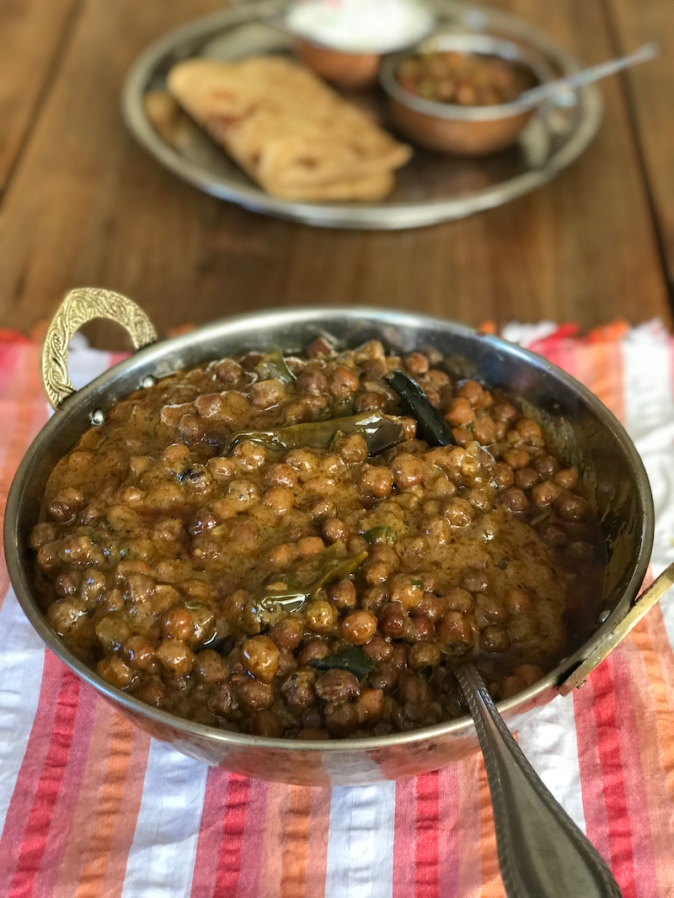
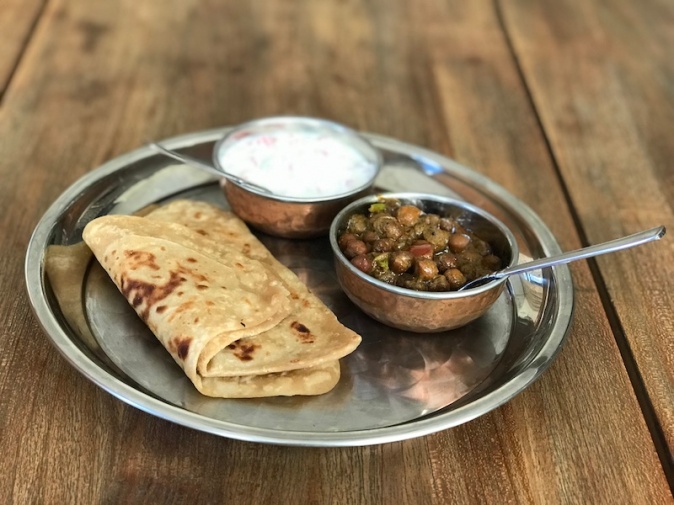 Kadala Curry, a rich Kerala style black chickpea curry with triangular shaped homey Parathas with raita, the ‘Princess Raita’ as Matree calls it. She cooked the above dish in coconut oil and added a little coconut milk, making it really special for Maha Shivaratri
Kadala Curry, a rich Kerala style black chickpea curry with triangular shaped homey Parathas with raita, the ‘Princess Raita’ as Matree calls it. She cooked the above dish in coconut oil and added a little coconut milk, making it really special for Maha Shivaratri
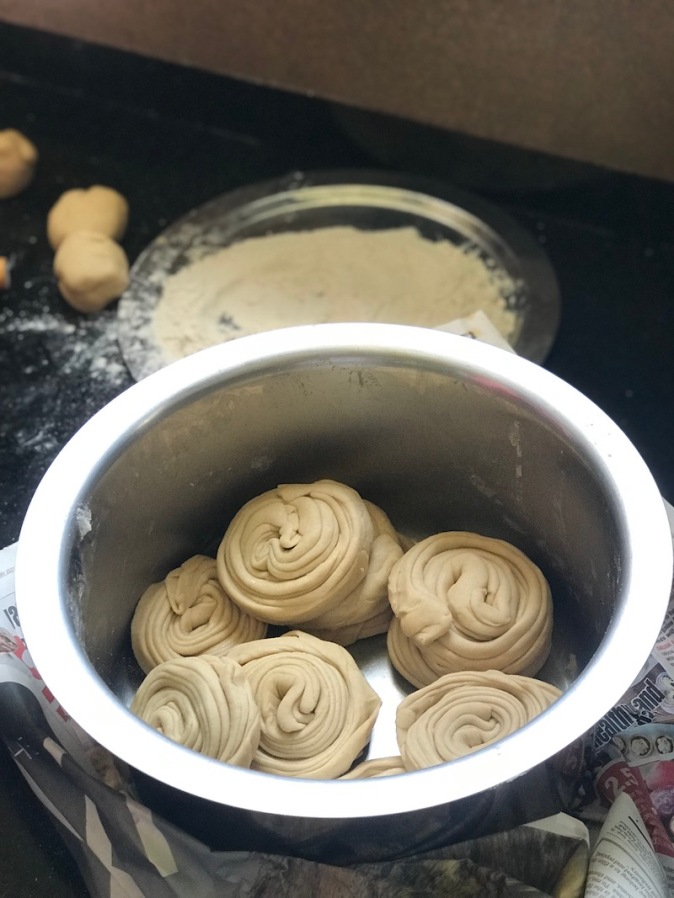
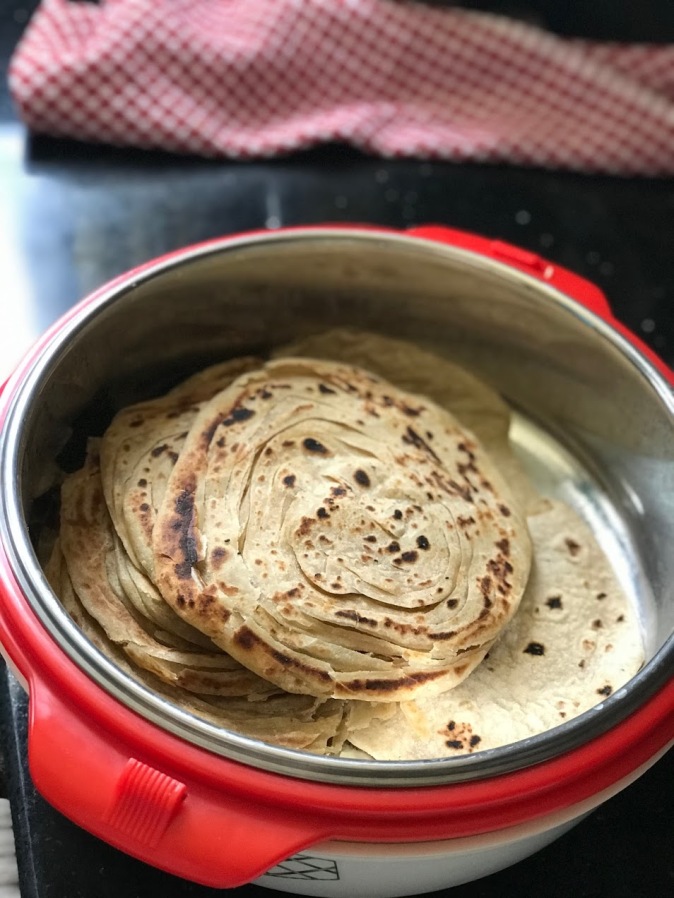
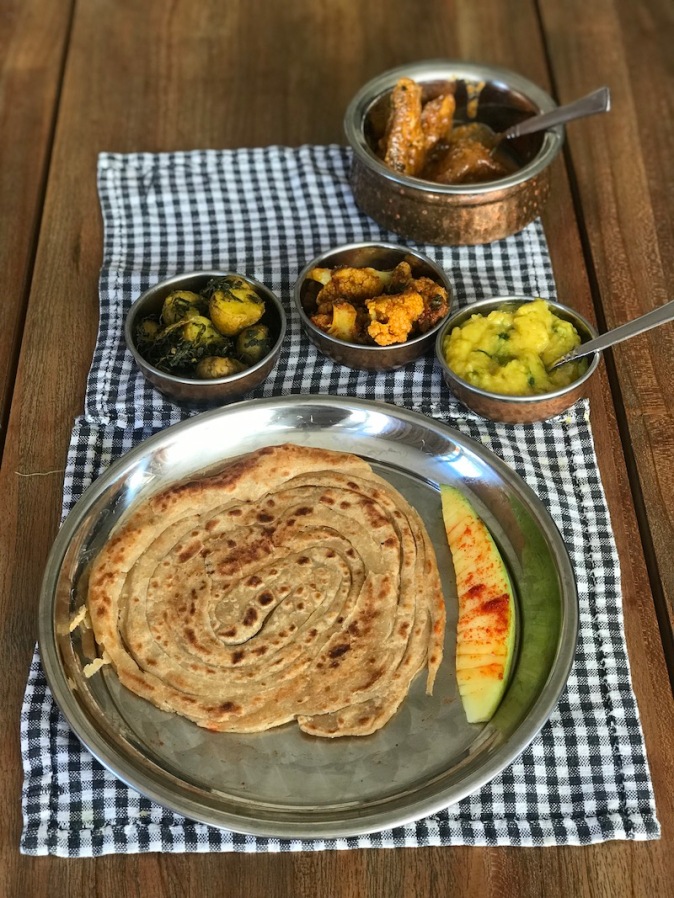
Malabari Parotta is the regional variant to Laccha Paratha in the way it is prepared. Its beauty lay in the layered manner in which the dough is rolled out and the subtle flakiness as ghee is added when the parathas are cooked.
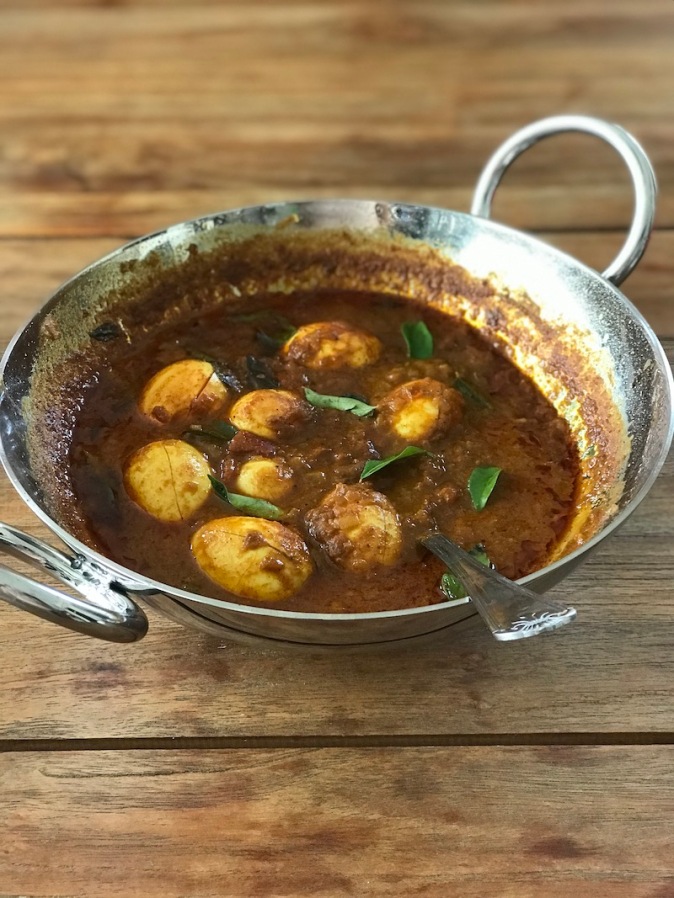
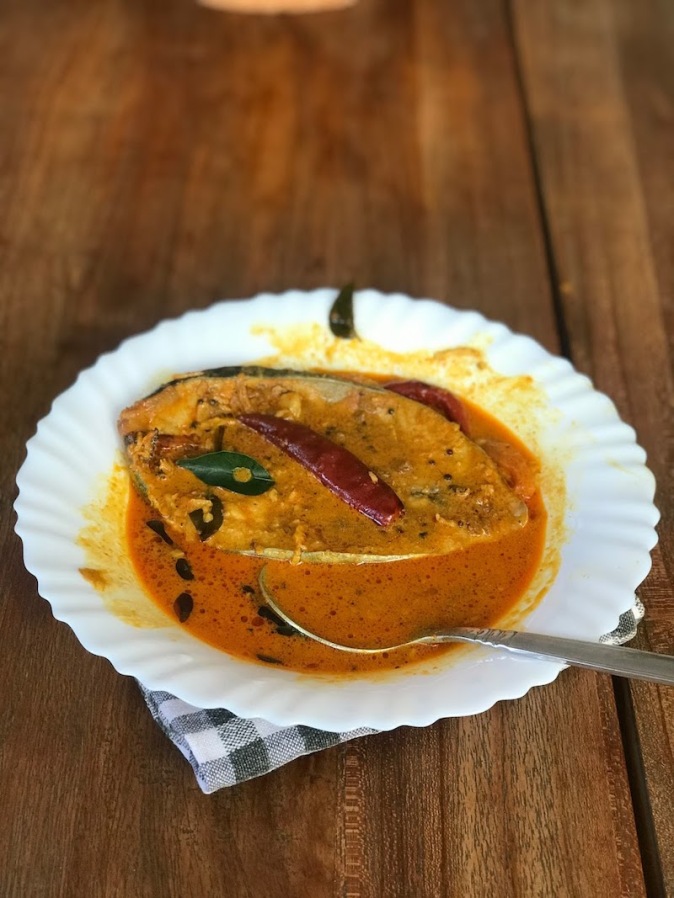
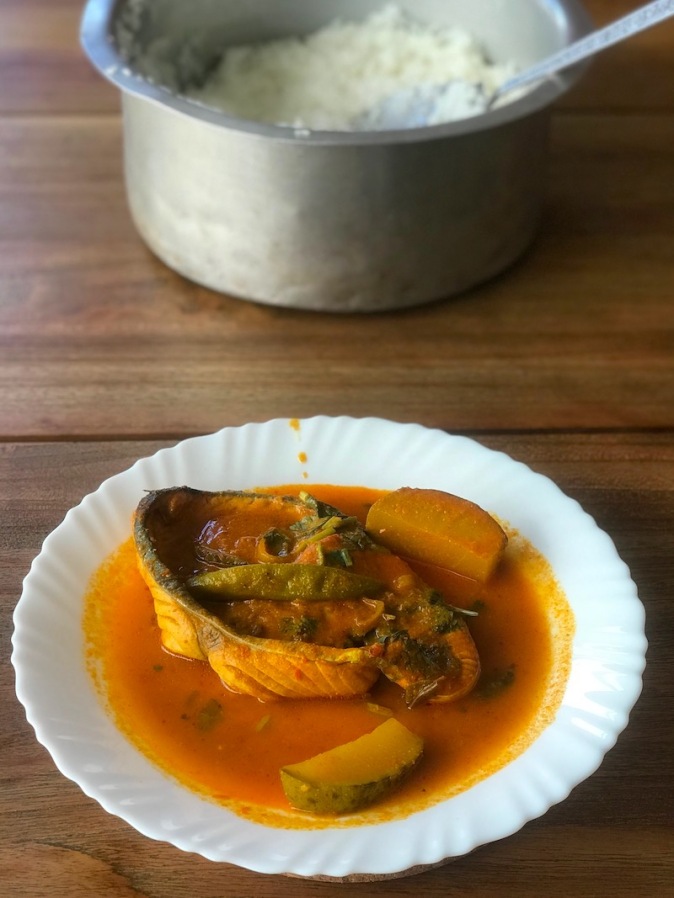 Meen Kuzhambu / Kulambu is a fish gravy cooked in tamarind, coconut milk and spices. I learnt to cook this from a reputed seafood restaurant in Chennai. While mine tasted quite similar to the one Matree cooked later (the second picture above), she made hers with pieces of green mango that added a whole new layer of spunk to the Vanjiram or Kingfish gravy.
Meen Kuzhambu / Kulambu is a fish gravy cooked in tamarind, coconut milk and spices. I learnt to cook this from a reputed seafood restaurant in Chennai. While mine tasted quite similar to the one Matree cooked later (the second picture above), she made hers with pieces of green mango that added a whole new layer of spunk to the Vanjiram or Kingfish gravy.
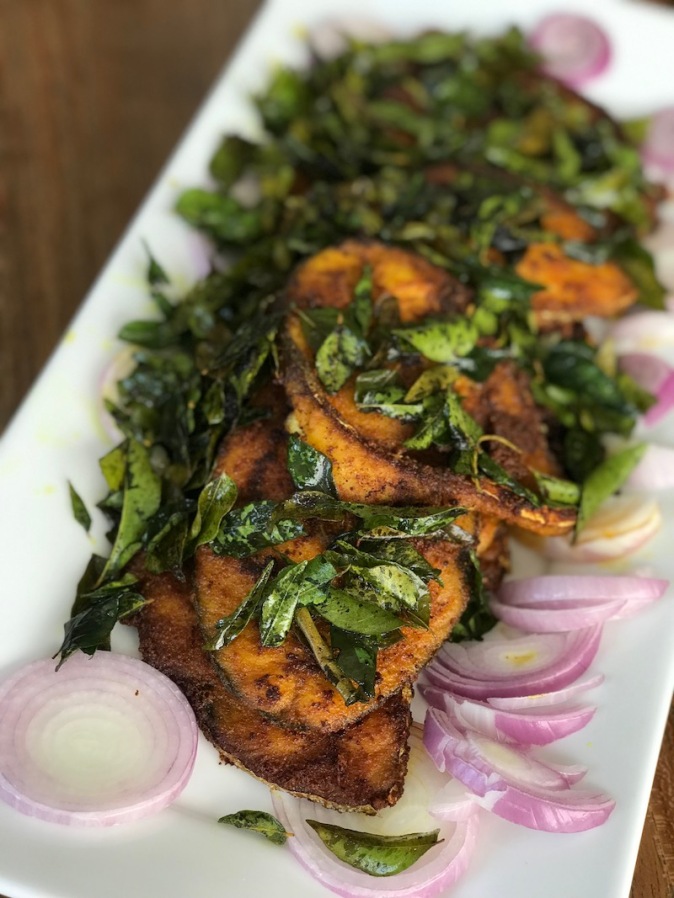 Fried Vanjiram or Kingfish, Kerala style
Fried Vanjiram or Kingfish, Kerala style
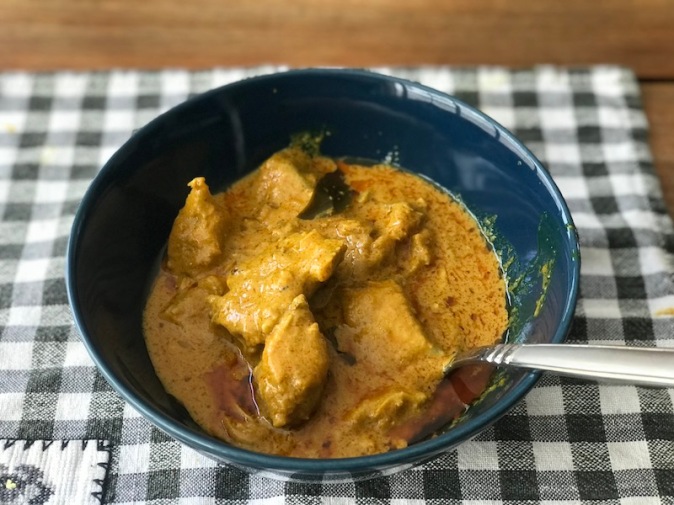
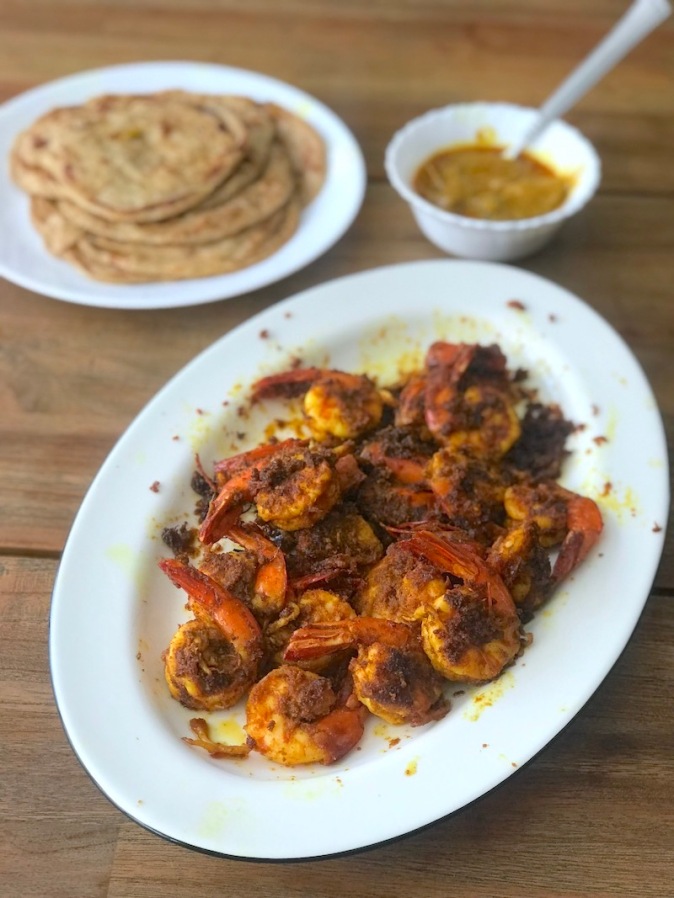 Kerala style Spicy fried prawns and Kerala style Coconut Fish Curry with the perfect accompaniment of homemade Malabari Parota.
Kerala style Spicy fried prawns and Kerala style Coconut Fish Curry with the perfect accompaniment of homemade Malabari Parota.
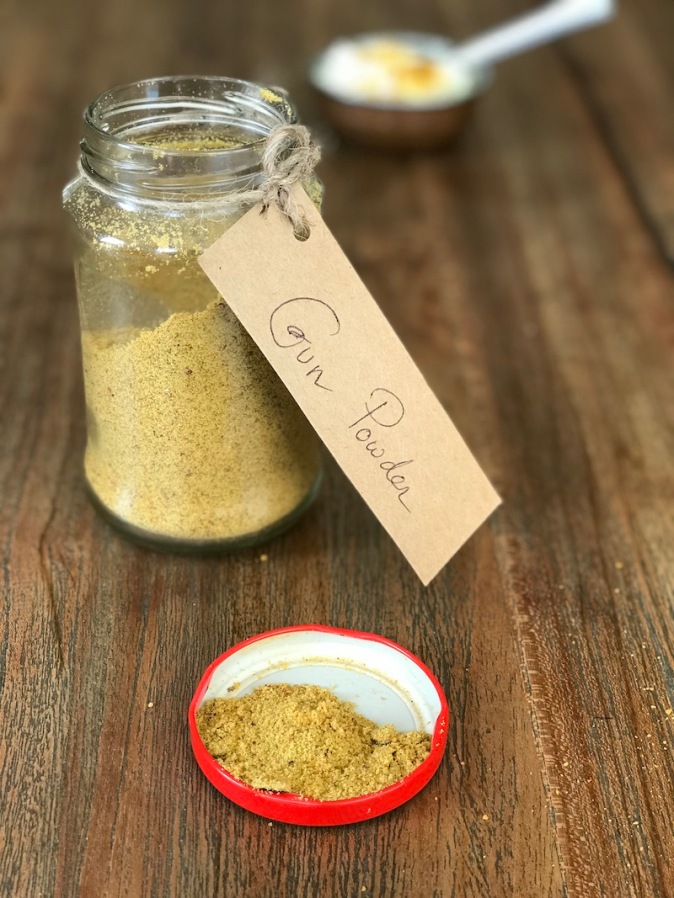 Last but not the least… Gun Powder or Idli Milagai Podi, the spicy powder made with coarsely grinding roasted spices. This powder is quite versatile and can be sprinkled over anything to spunk it up – a plain curd, the curd rice, uttapams and others.
Last but not the least… Gun Powder or Idli Milagai Podi, the spicy powder made with coarsely grinding roasted spices. This powder is quite versatile and can be sprinkled over anything to spunk it up – a plain curd, the curd rice, uttapams and others.
Plugging in a bit of nostalgia… alibi a local goli soda. And desserts to satiate my Bengali sweet tooth
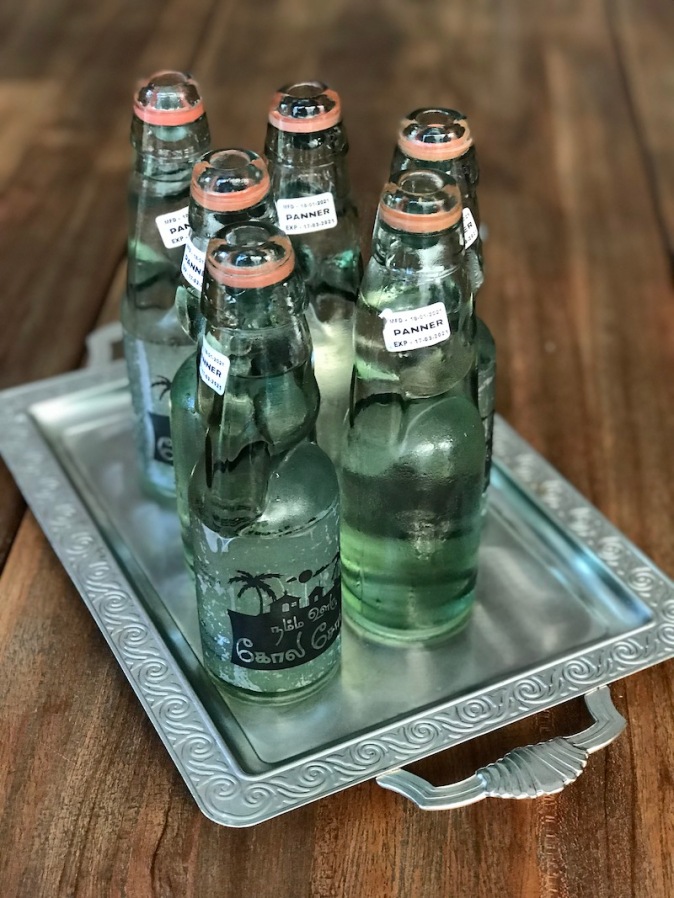 Panner or Paneer Soda. The word ‘Paneer’ means rose-water in Tamil, hence lending the name to the rose-water scented Goli Sodas… the taste of Paneer Soda is very close to one of my favourite drinks from my childhood… Bijoligrill’s Ice cream Soda.
Panner or Paneer Soda. The word ‘Paneer’ means rose-water in Tamil, hence lending the name to the rose-water scented Goli Sodas… the taste of Paneer Soda is very close to one of my favourite drinks from my childhood… Bijoligrill’s Ice cream Soda.
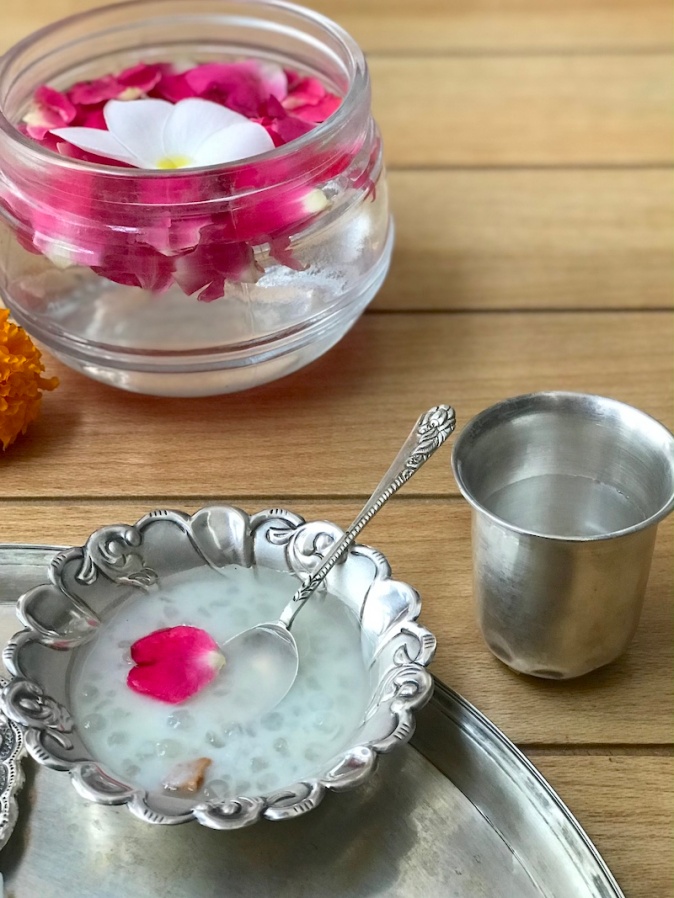 Javvarisi Payasam or milk pudding made with tapioca pearls as we celebrated Puthandu, the Tamil New Year at home.
Javvarisi Payasam or milk pudding made with tapioca pearls as we celebrated Puthandu, the Tamil New Year at home.
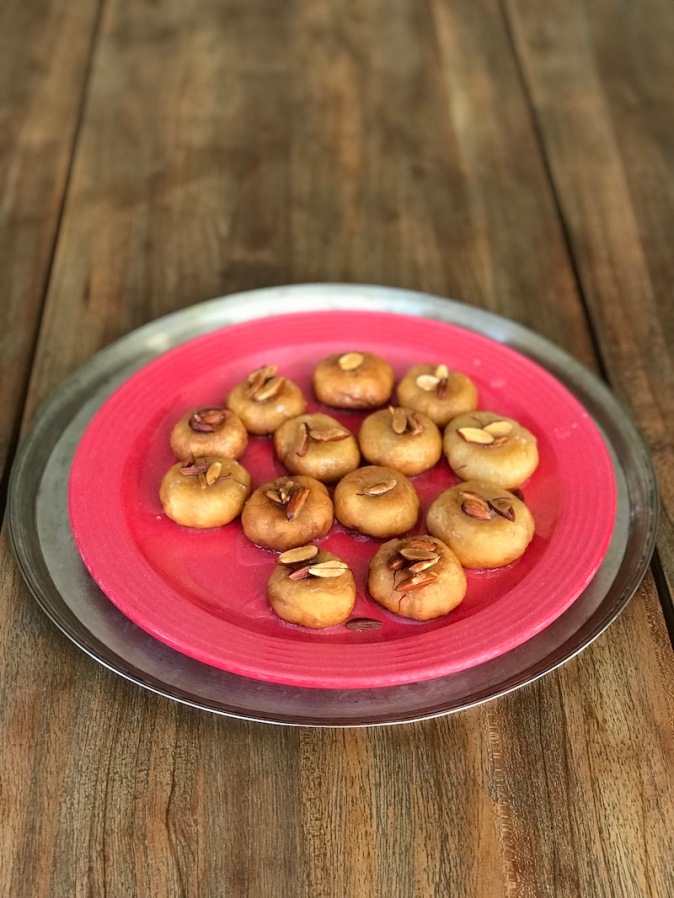 Badusha, fried dough balls glazed in sugar syrup
Badusha, fried dough balls glazed in sugar syrup
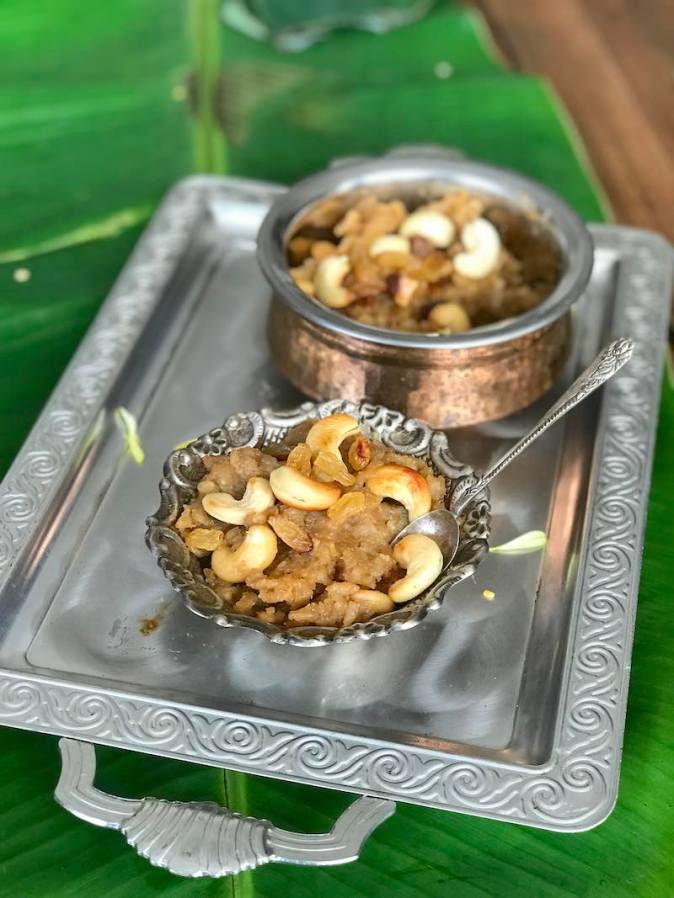 Sakkarai Pongal that we first had during Pongal, the harvest festival that’s celebrated in January
Sakkarai Pongal that we first had during Pongal, the harvest festival that’s celebrated in January
Before I crossed into the borders of South India… food wise
Before Matree joined us and led us on a culinary roller coaster ride of South Indian fare, our Indian meals comprised of whatever I conjured up on each day. Sometimes, the menu would simply pop up in my head the previous night, or sometimes it would be a prompt makeover out of the stock in our fridge. There have been many such dishes, sharing just a few of them (not Bengali food this time, excepting flexing the phulko luchi earlier on) …
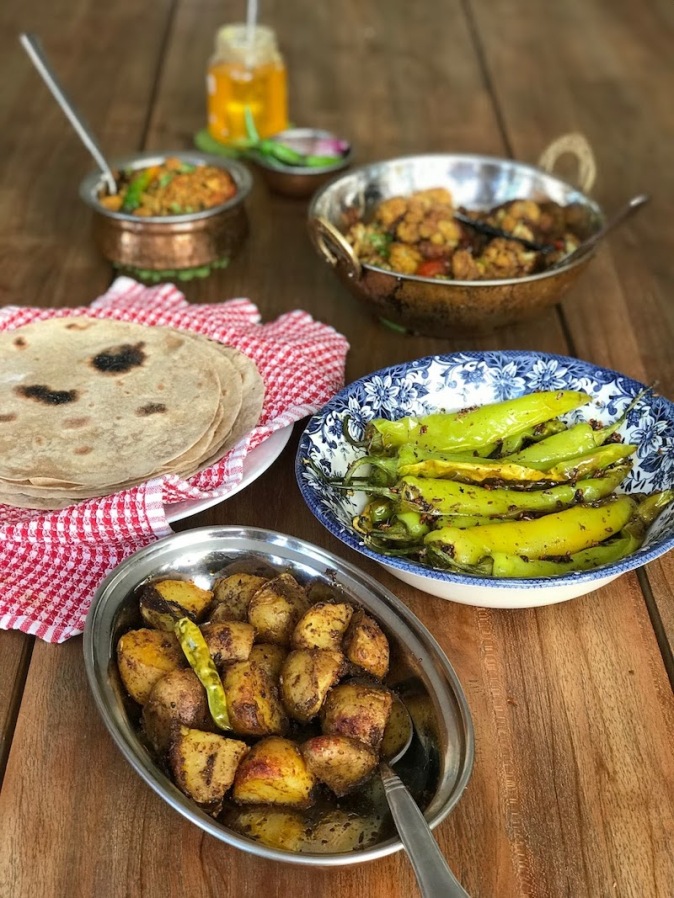 This was a nostalgic spin off on a lunch we had at a small highway eatery while travelling from Jaipur to Agra two years back. The above spread won my family’s hearts – ready made store bought chappattis, aloo or potato sabji, cauliflower sabji, long green peppers cooked in the manner of a pickle, a masala egg bhurji or scrambled egg cooked in a spicy dry gravy.
This was a nostalgic spin off on a lunch we had at a small highway eatery while travelling from Jaipur to Agra two years back. The above spread won my family’s hearts – ready made store bought chappattis, aloo or potato sabji, cauliflower sabji, long green peppers cooked in the manner of a pickle, a masala egg bhurji or scrambled egg cooked in a spicy dry gravy.
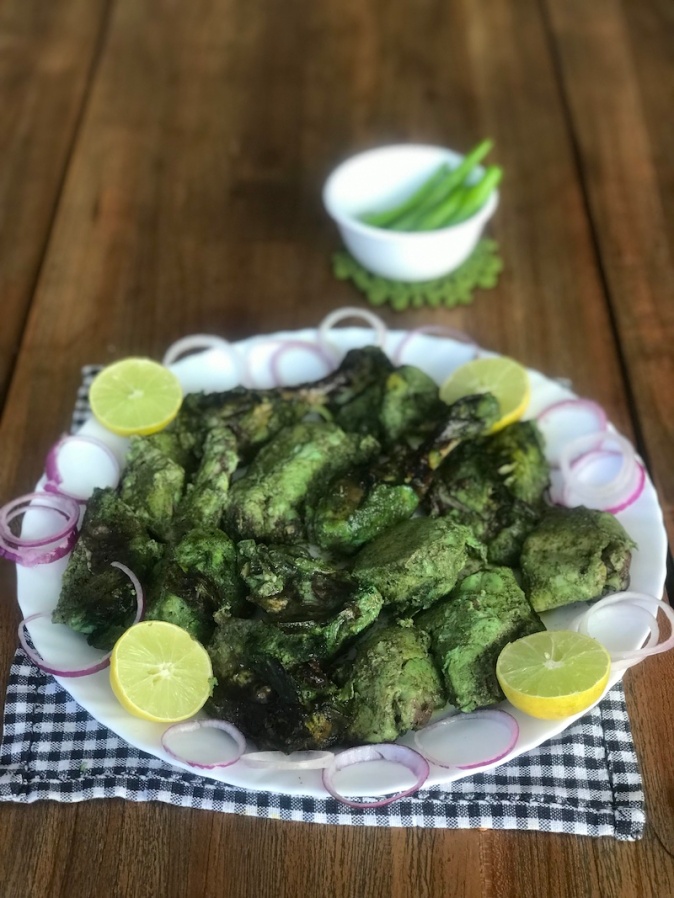 Grilled chicken marinated with spices, green chillies and fresh herbs like coriander and mint leaves
Grilled chicken marinated with spices, green chillies and fresh herbs like coriander and mint leaves
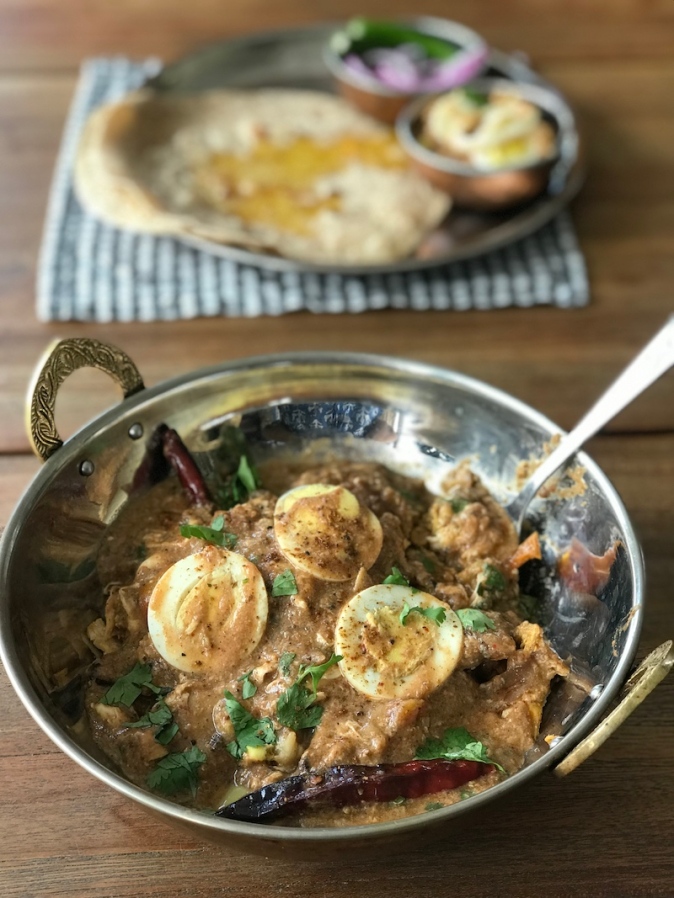 Chicken Bharta cooked in the style of Punjabi Dhaba at Ballygunge Phari in Kolkata
Chicken Bharta cooked in the style of Punjabi Dhaba at Ballygunge Phari in Kolkata
Sourcing meat, fish and meat … and super fresh vegetables
After resorting to the popular supermarket Nilgiris for groceries and its sister counterpart, Veggies for fresh fruits and vegetables initially, we have now expanded our horizon a bit.
From all the conversations within the community WhatsApp group, I have realised that there are many entrepreneurs and starts ups who are engaged in producing artisanal products and fresh organic produce of the highest quality. A lot of these fruits and vegetables with non-Indian origin, “fancy vegetables” as Matree calls them, are all grown somewhere in some farms in India right now. Orders can be placed over WhatsApp and products are promptly delivered home.
Referrals within known circles and word-of-mouth are the prime tools of publicity for much of these home-grown brands. We are loving the quality of the produce and mostly sticking to buying local produce of the season. Ansio sets up a weekly vegetable market within our community and I have already been initiated to a lot of regional vegetables like drumsticks, yams, different types of bananas and others.
We buy our fish from J K Fish Stall in Adyar as they seem to have a good stock of popular Bengali fish that are flown in from Kolkata daily. Whatsapp conversations with the Bearded Biker and his maachwala, the fish vendor ensures immediate home delivery of Bengali fish delicacies like Hilsa or “golda”, the freshwater giant prawns. The other day we bought fresh fish like Vanjiram or Kingfish, Sankara or red snapper and squids from the fishermen straight off the seashore in Kovalam. There couldn’t have a more exciting escapade for fish lovers like us. We order our chicken through online apps like Licious and Tender Cuts, sticking to the former for most of the times. A local butcher just outside our gate has sealed the Bearded Biker’s approval for meat – tender goat that I have perfected in slow cooking ala mum-in-law’s style. Sunday afternoons are now mostly reserved for slow cooked goat curry with big chunky aloo, or potatoes peeping out. The Bearded Biker has found fantastic pork supplier in SSD Meat World & Restaurant in Kilpauk, a bit far away from where we live. The restaurant serves popular pork dishes like sorpotel, vindaloo, chilli pepper fry and pork roasts, while they have their own farm is where the high quality meat is sourced. We recently discovered another place – a kind of a sanctuary very close to where we live, The Farm. It’s a B&B cum restaurant space located amidst rice fields, coconut groves and plantations. Apart from selling fresh produce grown in their own organic vegetable gardens, their product list is quite impressive, specially with the dairy products like Mozarella, Feta, Labneh etc. We recently started buying fresh milk from a dairy farm called Arunodhyam on recommendation from our neighbouring resident. Anju, the founder, spoke to me at length to share her story – how the dairy farm and the milking facilities is based out of her seaside residence. Initially, she was delivering to a few of her friends and its only during the lockdown period, more people got to know her because of word of mouth that led to her think of expansion. Recently, we ordered farm fresh watermelons, water apples and okras on repeat mode (images below) from Sri Durga Farms at Thirukazhukundram, a passion project founded by Maha and Raja, residents of our community. Every day there are messages in the residents’ whatsapp group, some friend or the other has some organic farm and growing something exotic… orders are immediately placed and the products delivered home promptly. Once we ordered oyster mushrooms that were absolutely brilliant!
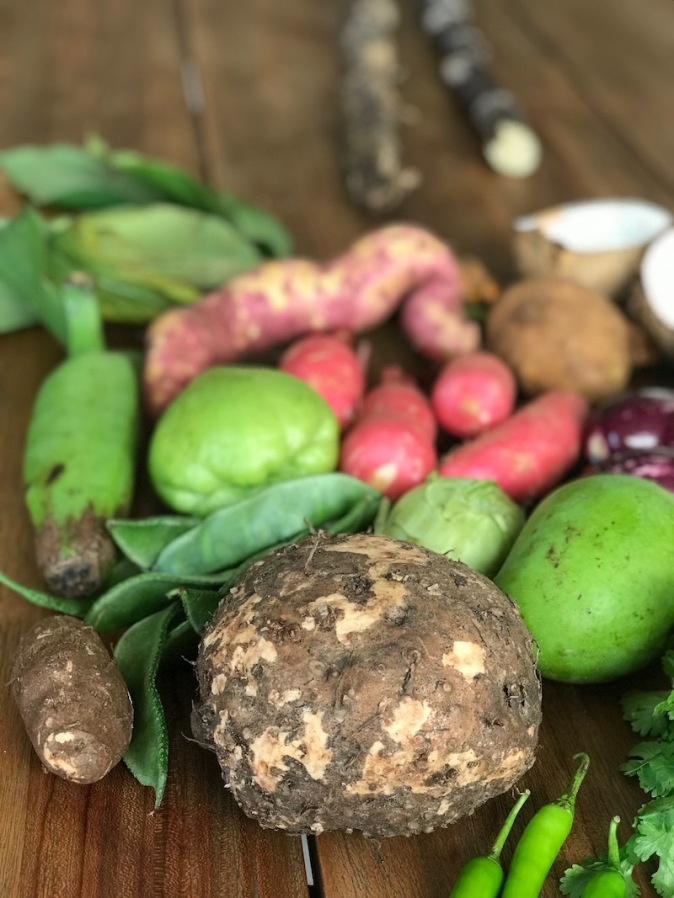
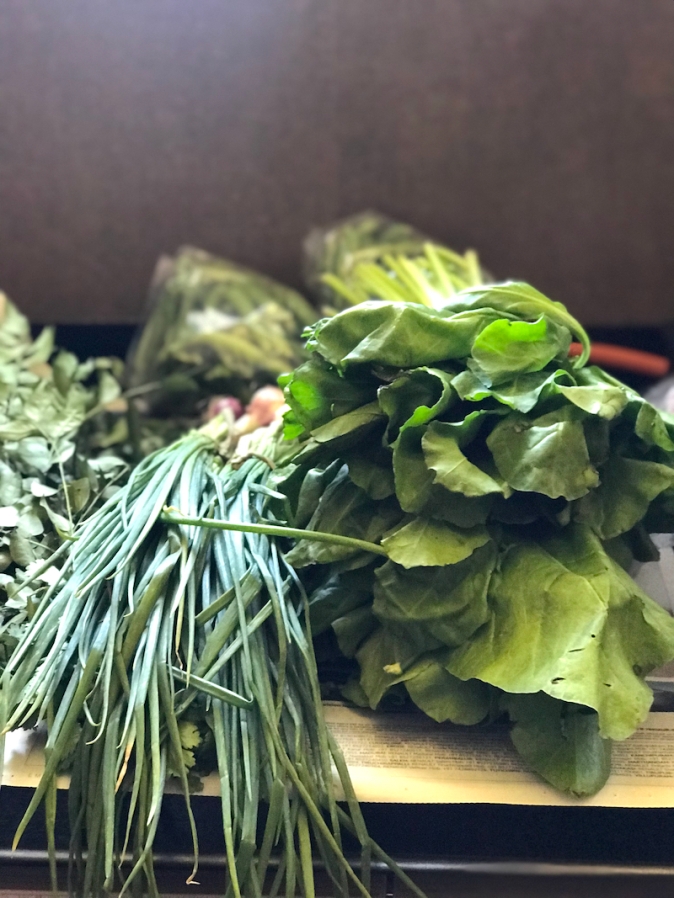
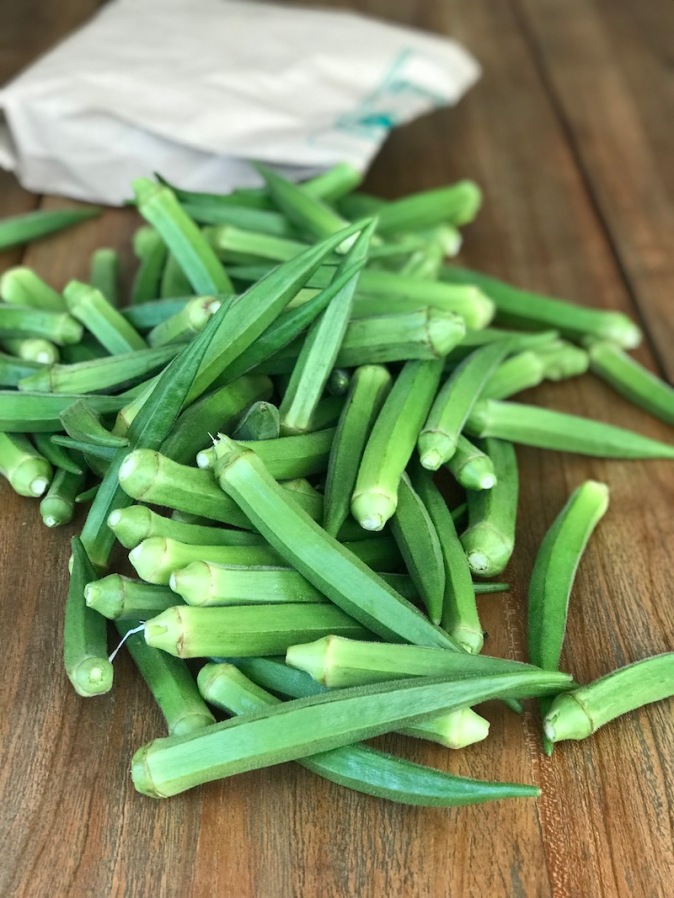
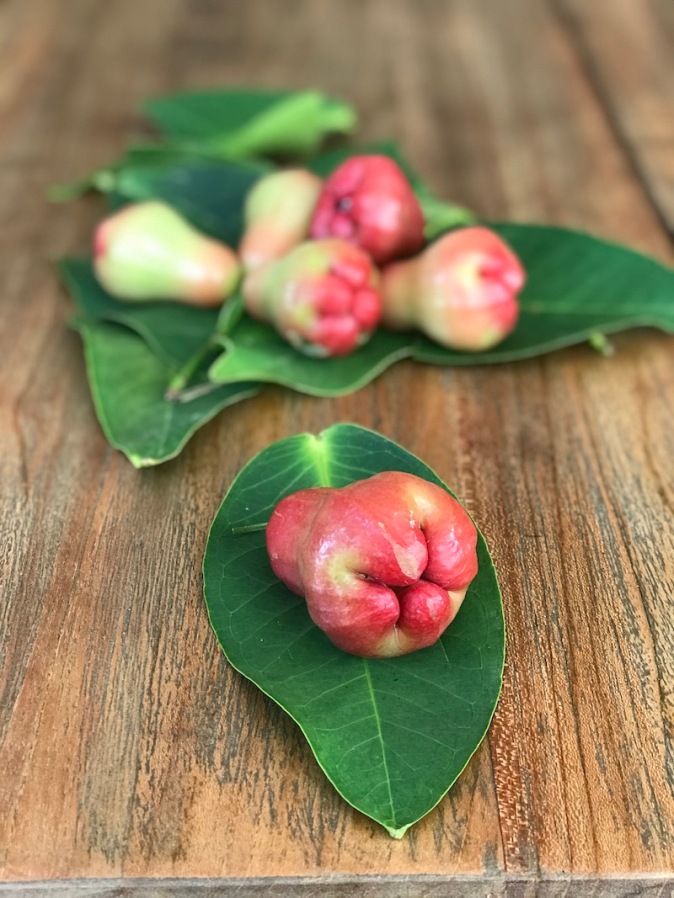
What inspires me to cook?
I believe that cooking entails an exchange of energy between the person who’s cooking any dish and the person who’s eating it. It’s an act of demonstration love and affection and should be performed as a rite – something that’s done from one’s heart. Matree listens to music – Tamil love songs while she cooks. She also entertains calls on her mobile. Initially, I had been slightly skeptic about the latter but after observing her for a few times, I have realised that she discusses what she’s cooking and there’s so much of happiness in her voice that it’s almost infectious. When she serves the food, there’s always a sense of excitement and she seems so happy to cook. When we plan the menu for the next day, there’s a lot of enthusiasm in sharing what she knows best. She also has some ‘vague’ dishes in her repertoire – Indian pasta and Indian noodles (the image below) made with Indian spices. Have you ever heard of Indian Mac and Cheese ? Well, just now you did!
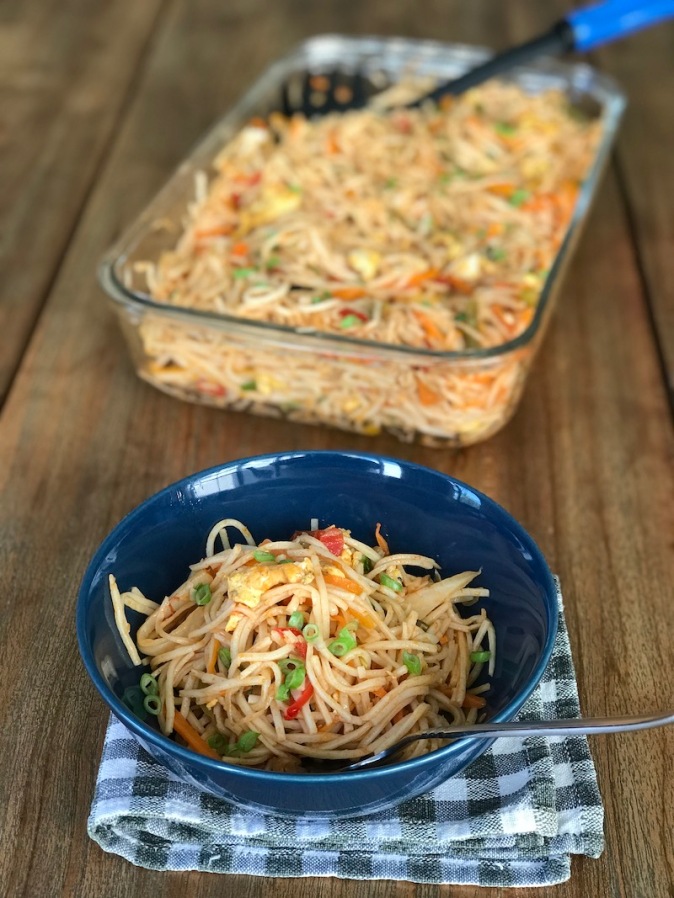
I am as inspired by cooks like Matree as I am by celebrity chefs like Gordon Ramsay. My shelves are full of signed cookbooks and my ‘to-cook’ list is filled with inspiration from the net, food bloggers I engage with, food addas with family and friends over whatsapp … and of course, our travels. Some of which, I shall reserve for a future post. For the time being, what is heartwarming is that when one starts celebrating local festivities at home, it’s sign that you have settled in well in one’s new home. As is evident from our Tamil festive sapadu last week as we celebrated Puthandu, the Tamil New Year!
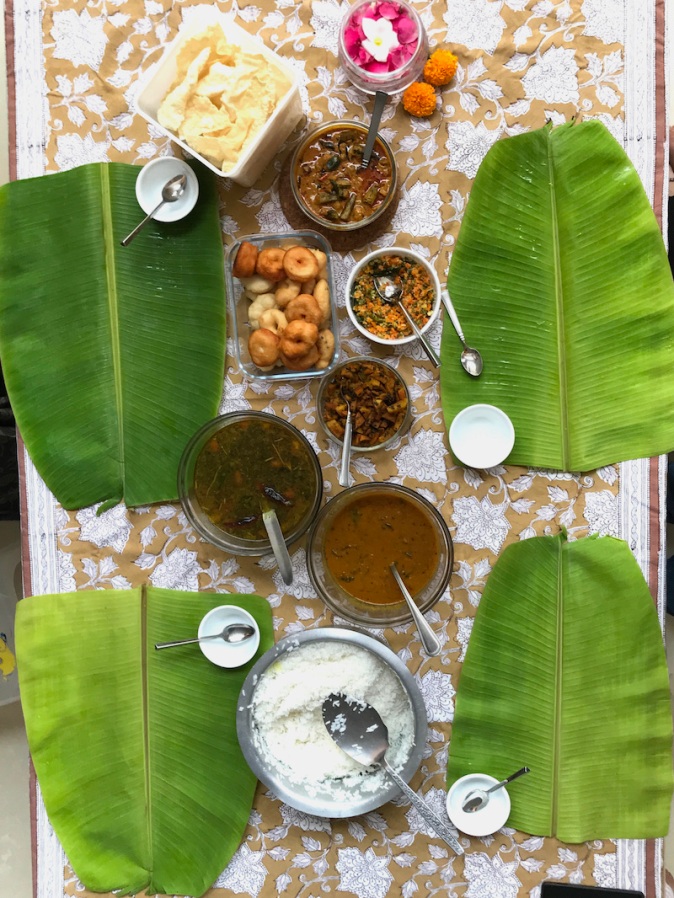
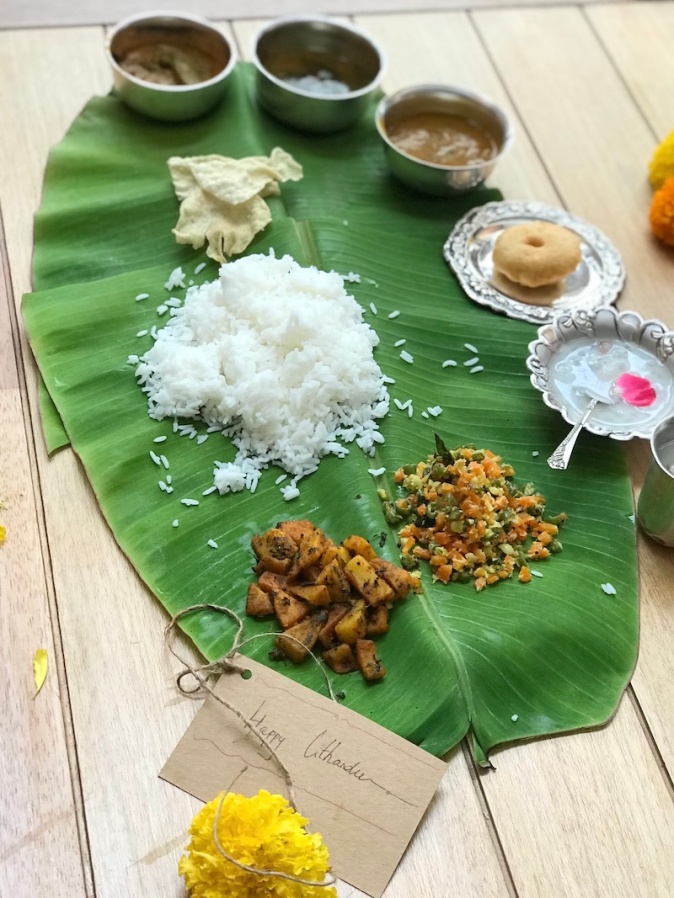
Unblogging it all… Ishita
Thank you for joining me on my daily food and travel journey on Pinterest, Instagram, Facebook and Twitter!
Some posts from my recent Chennai Chapter: Celebrating Bengali New Year and Tamil New Year at home Celebrating Pongal with Sakkarai Pongal and other dishes Kovalam Beach | Buying fish at the seashore and a recipe of Beer Battered Squid Finally calling Chennai home Chicken Chettinad cooked in a claypot Homemade spicy Chicken 65
Disclaimer: This isn’t a sponsored post, nor are there any affiliated links for any of the brands that may have been mentioned in this blogpost. The subject, story, opinions and views stated here are my own and all images are from my personal album. While you enjoy reading my posts with lot of visuals, please do not use any material from these posts.
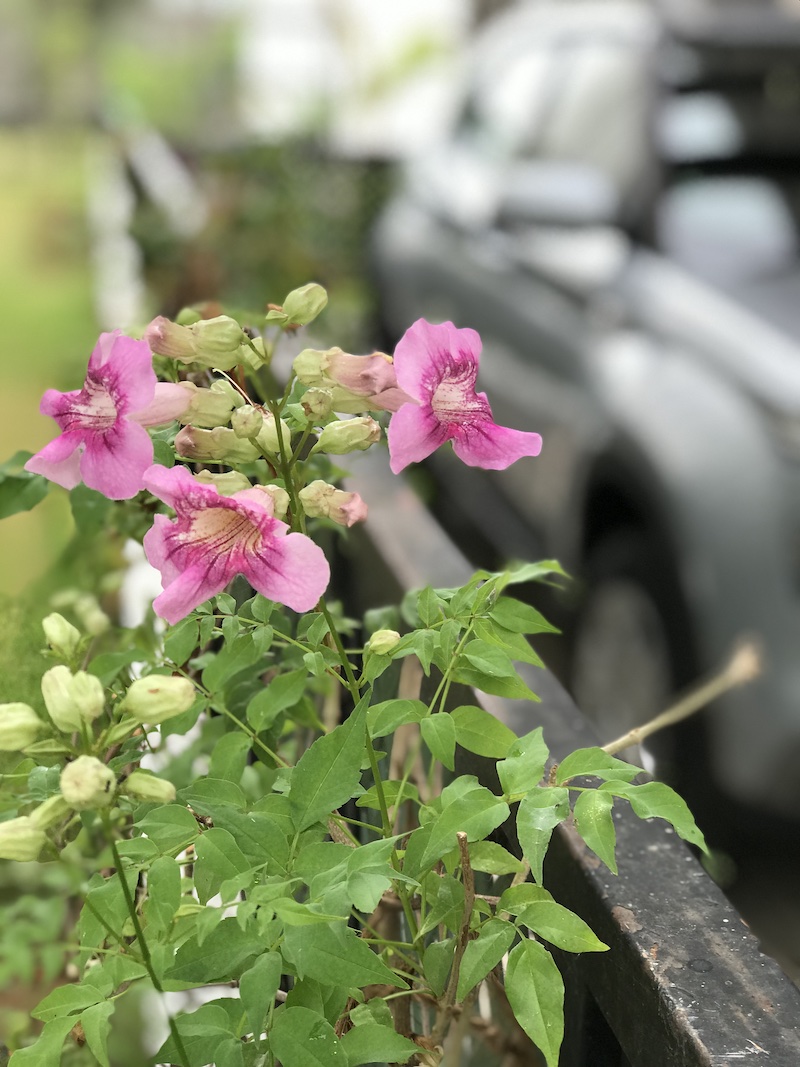
Shubho Noboborsho! Wishing all of you on the occasion of Bengali New Year. Also wishing everyone for the other Indian regional New Years like Ugadi, Puthandu, Vishu , Baisakhi, Vihu, Gudi Padwa and others. If you aren’t celebrating a New Year… may we simply celebrate life!
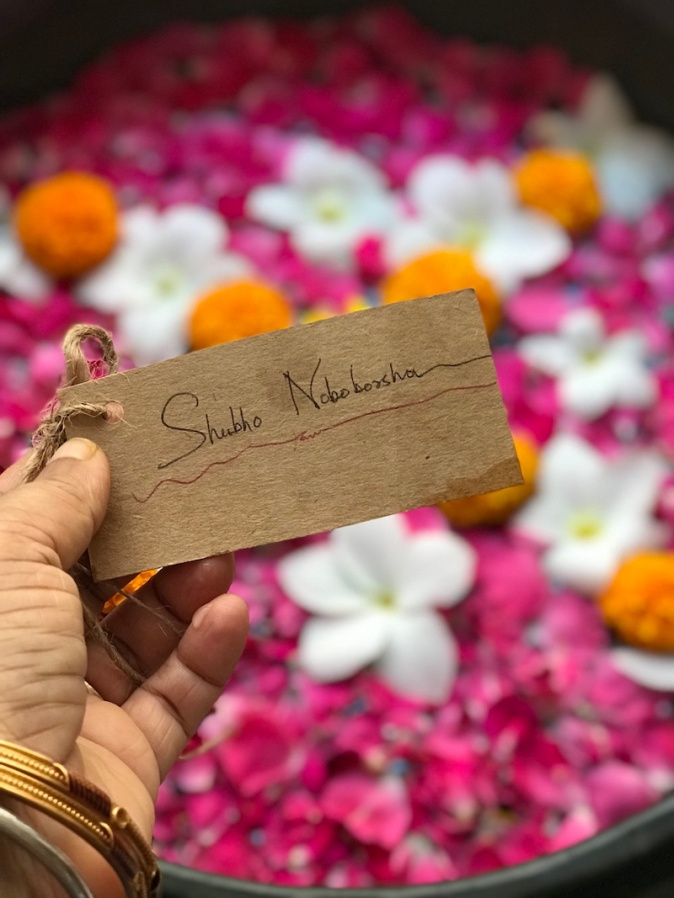
A new dawn and a beautiful morning… and some behind the scenes hustle
We are blessed with stunning sunrises over an uninterrupted view of the backwaters. It had rained in the early morning hours and the horizon was still dark and thunderous on Noboborsho morning. The morning breeze carried the earthy aroma of the fresh rains and the seagulls seem to be too drenched and weary for their daily flights. There was a happy hustle and bustle in the home as well… polishing of silver bowls that dates back to our Annaprashan or first rice ceremonies, my excitement of cooking and preparing some dishes specially for the day … not to mention my flower arrangement in the urli that belonged to the Bearded Biker’s thakuma and handed over to me by dear mum-in-law. The floral urli was an inspired idea from a resident in our community, who’s been doing this daily for the last one year. If you think that it’s a breeze… try doing one and please share your secret tips!

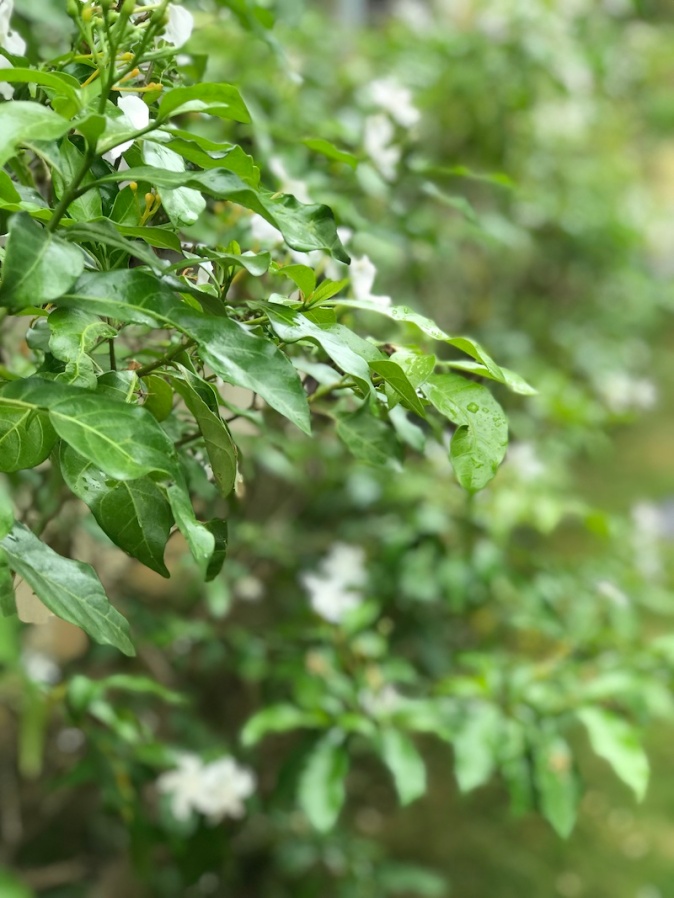
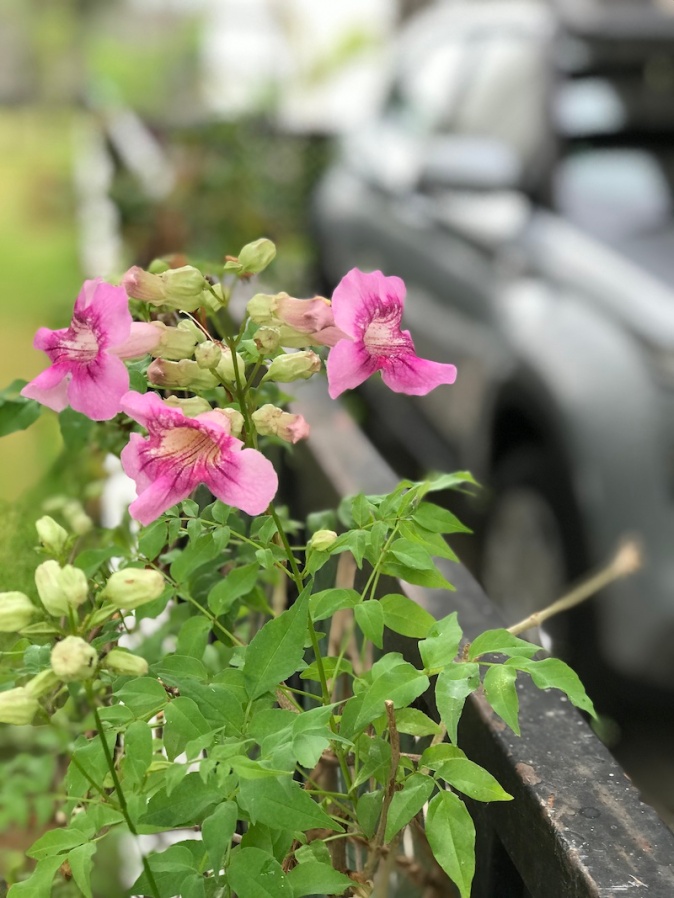
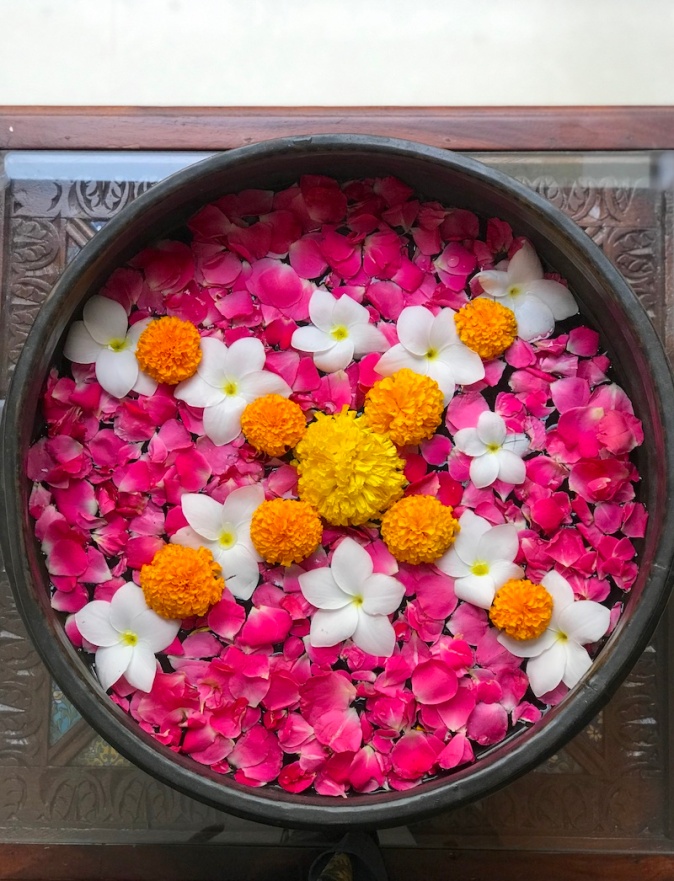
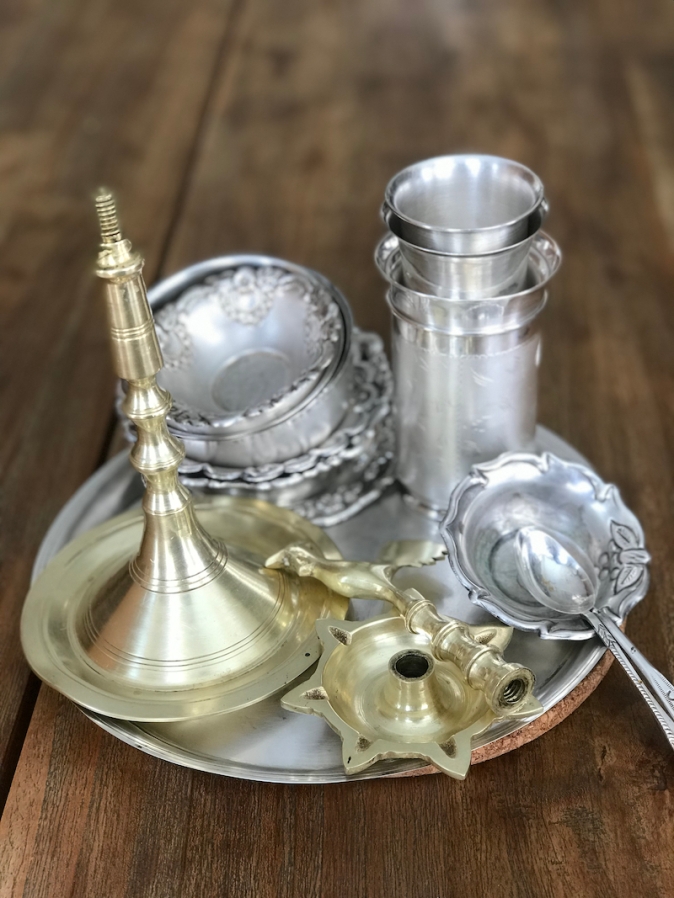
Celebrating Noboborsho, the Bengali New Year
Our lunch and the dinner menu for ‘Poila Boishakh’ or ‘Noboborsho’ yesterday was a simple Bengali menu. It was a working and a school day and I had asked the Z-Sisters what they would like to eat. Lil Z requested for luchi, aloo bhaja and plain white Rosogolla, or rasgullas … “lots of it”, she said! She had been lamenting lately how nobody brings home the white dreamy roshogollas anymore. Big Z declared that she didn’t care as long as there was Mishti Doi, made by me. The latter has been a bit overdone in our kitchen and the last time I made mishti doi, which was only three weeks back, stayed in the fridge for almost two weeks. So I decided against it. “Then Mihi Dana please”… was her next request. Roshogolla and Motichoor Ladoos (in absence of mihi dana in most sweet shops here) were swiggy-ed in from the sweetshop Sri Gupta Sweets. Our wonderful cook Matree’s Malabari parota making skill was made to use for the brilliant ‘phulko’ luchis… meaning the perfectly fluffed up Indian fried flatbreads. Our Noboborsho menu was as follows… luchi, aloo bhaja or fried potatoes, begun bhaja or fried eggplant, cholar dal with delicate aroma of coconut pieces fried in ghee, Basanti or mishti pulao and Katla Kalia, a thick gravy preparation with Katla fish. The strategy was to focus more on the luchi for lunch so that generous portions of pulao and Kalia would be left over for dinner.
Bengali food is served in courses and I always feel that it can never be concised into a single thali, like many other regional food from India. The only one thali that could ever be … is the proshad, offered to the Divine Almighty. Accordingly, a thali with a mini sampling of the food was placed in our casual altar. I am not into rituals, hence the altar showcases many idols and images from several religions – a lot of them gifted by friends and families. After we have had a few spoonfuls from the proshad, it’s handed over affectionately to Big Z… “why does thakurer proshad always taste better?”, she always asks. I guess it’s the intention and the heart felt emotion of love and faith that go into the proshad. Sharing the blessed thali from our home with you all… and then the rest of the Noboborsho menu.
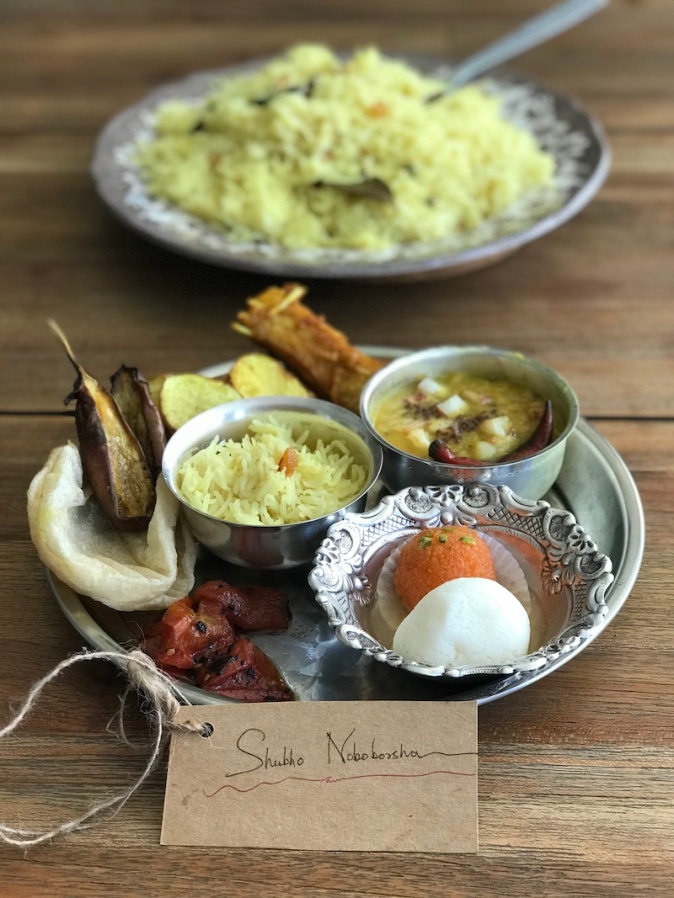
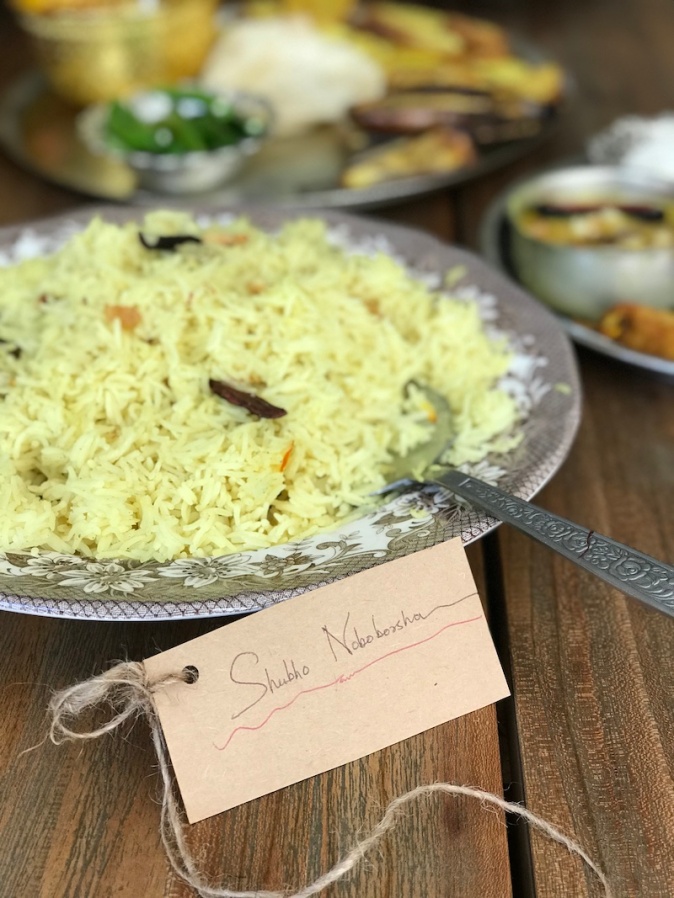
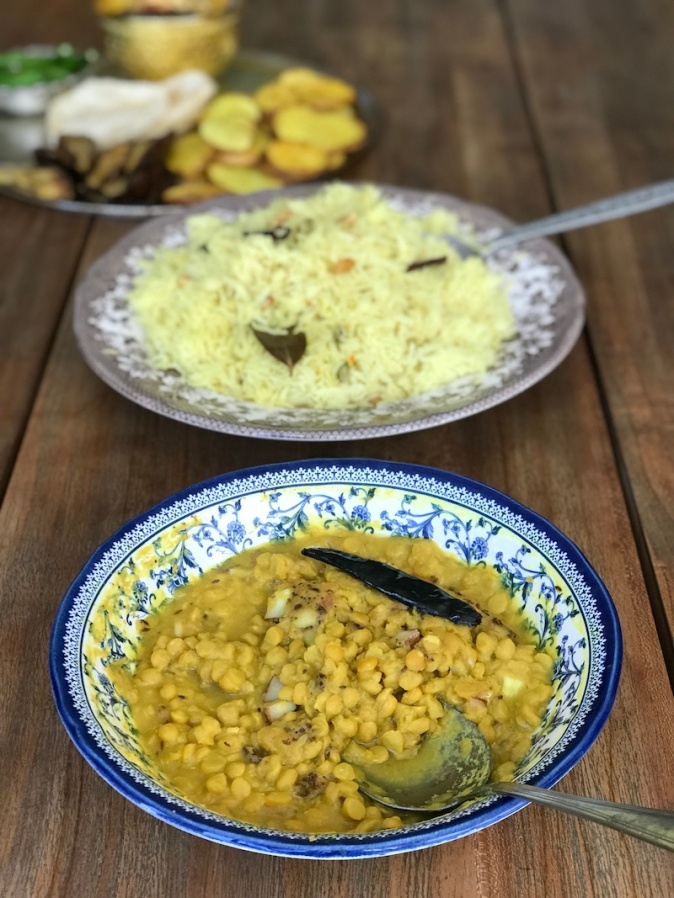
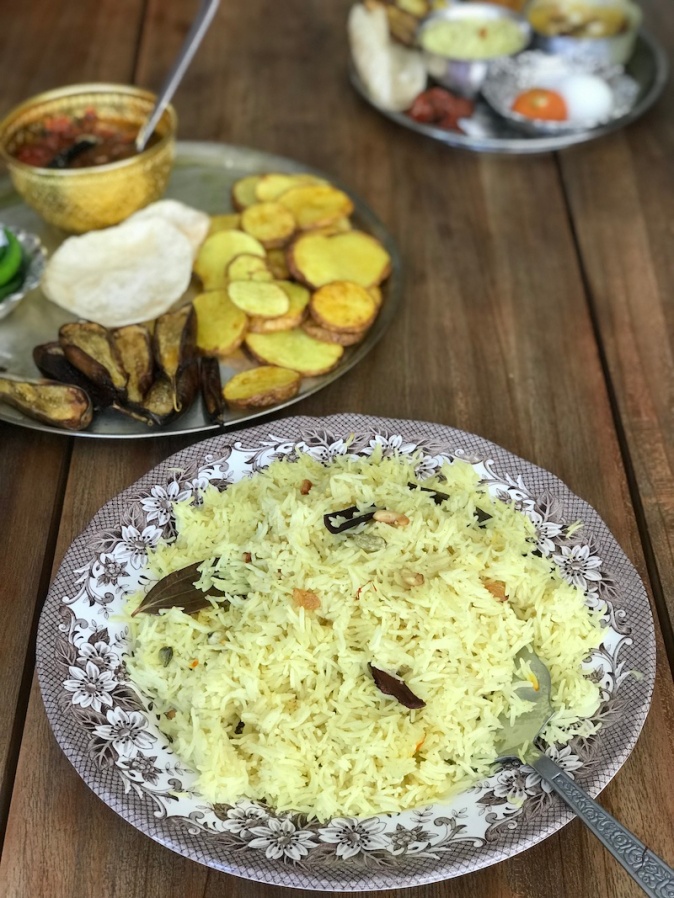
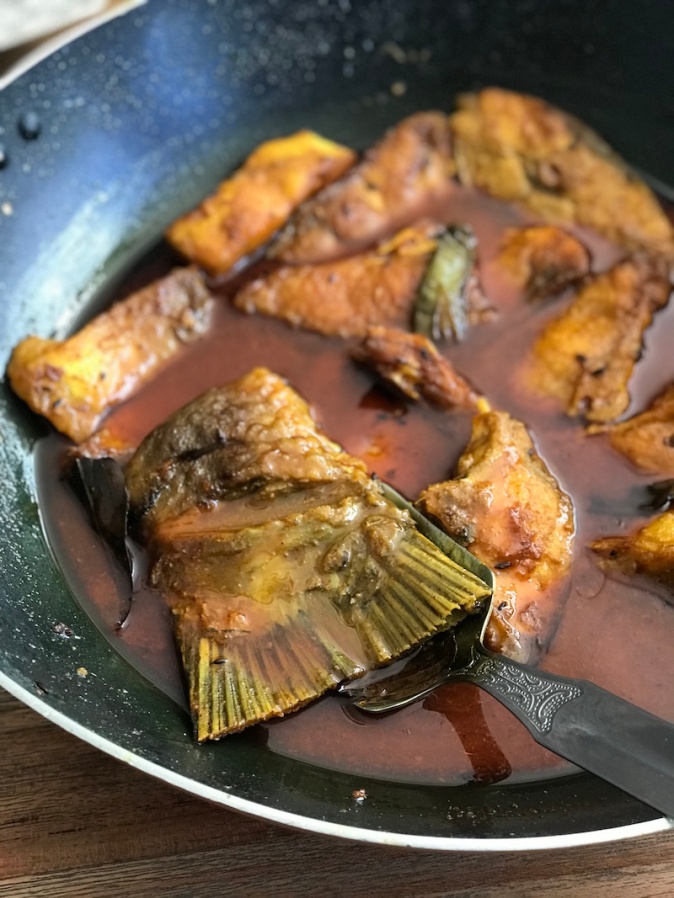
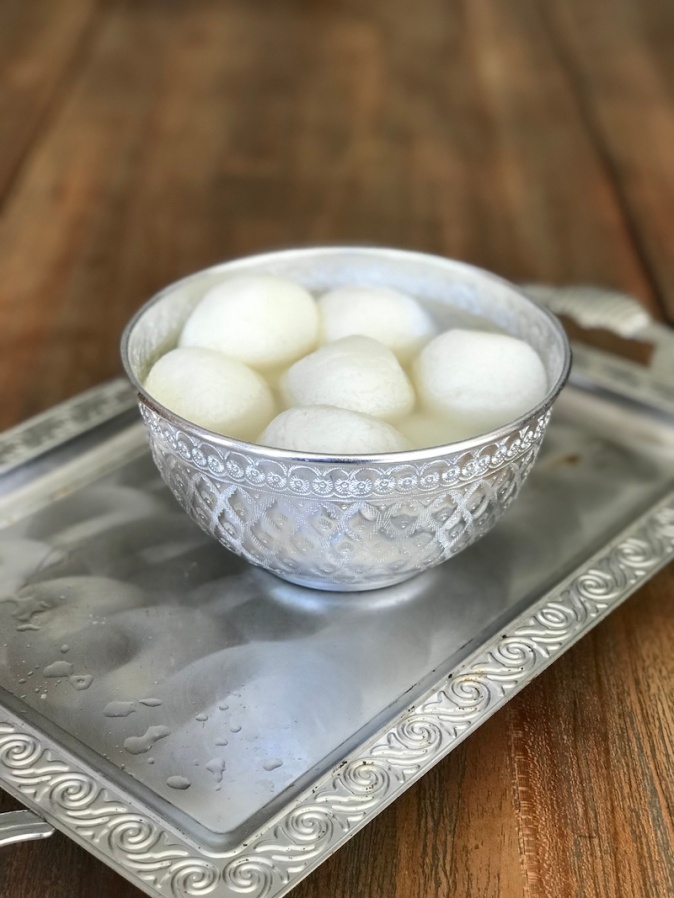
Celebrating Puthandu, the Tamil New Year… back to back celebrations
The day before was Puthandu, the Tamil New Year and it was naturally a holiday here (for those who are still wondering… Chennai is our new home). We had sapaddu, a traditional Tamil lunch served on banana leaf. Matree, herself a Christian, was keen to do a small puja in our puja room. She had decorated the room with flowers and strung a garland with mango leaves and hung it by our entrance door. The puja was followed by the traditional lunch that she had cooked. She insisted that we sit on the ground and eat while she served us individually. We swapped her suggestion into sitting on the ground and putting the food on our coffee table! It was a beautiful afternoon and we savoured everything that she had cooked. She explained the order in which we had to eat. First, we had to eat the plain white rice with Vendekkai Sambar, sambar dal cooked with ladies finger. Next, we had to eat the rice with Kara Kulambu, the spicy tamarind and tomato curry of brinjal, potatoes and other vegetables. The light Milagu Rasam or Pepper Rasam came last with the rice. A carrot beans Poriyal or curry and Urulai Kilangu Masala, a spicy potato curry and some Appalam or papad were served as sides to the rice. The Ulundhu Vadai she made were soft as well as crispy and could be had on their own or had to be dunked into the sambar. I have to admit that her vadas made from the batter that she had made at home, were the best I had ever tasted in my life. The Dessert looked exotic and something I was tasting for the very first time. Javvarisi Payasam was a milk pudding or payasam made with tapioca pearls. It had the delicate fragrance of cardamon. Cashews and raisins roasted in ghee, were tossed in it. I bought a new silk sari for myself, a traditional weave that would be worn for this occasion and put a garland of malli, the heavy-scented jasmine in my hair. Sharing the Puthandu menu below… again, starting with the prasad offering and then the rest.


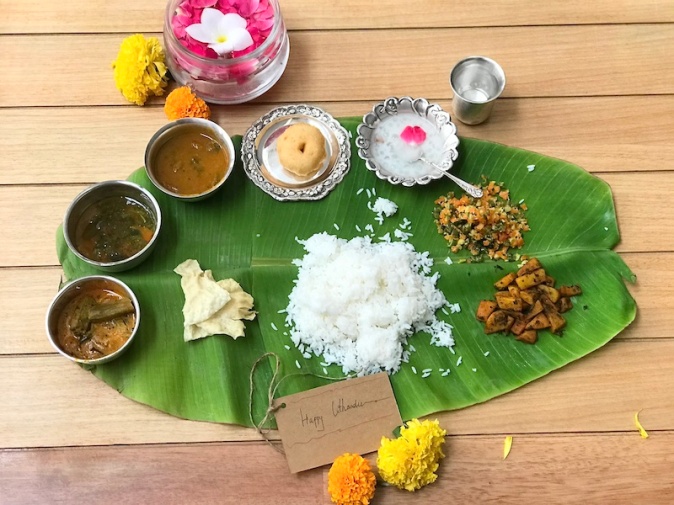

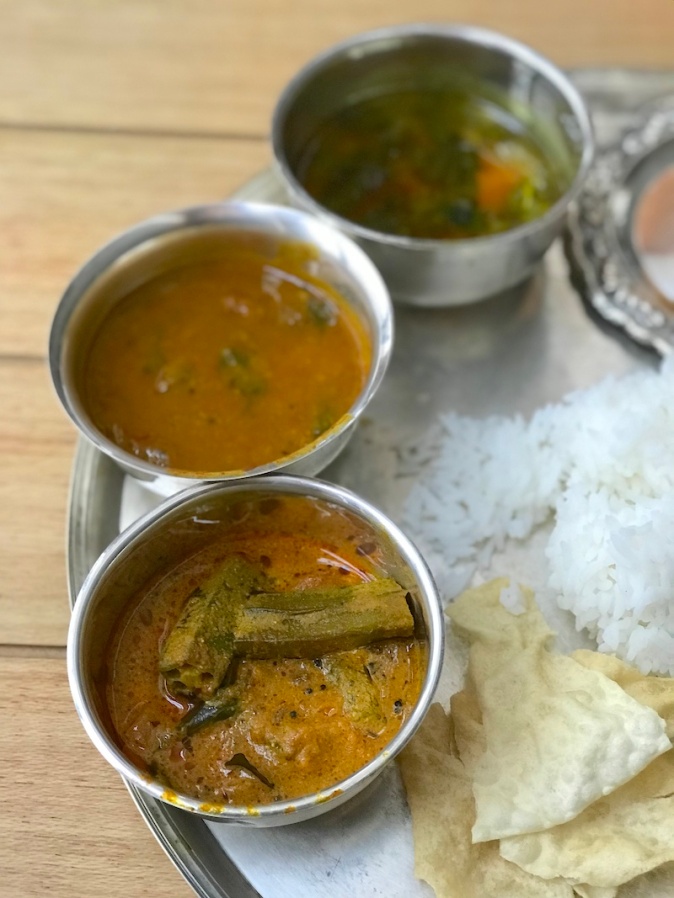
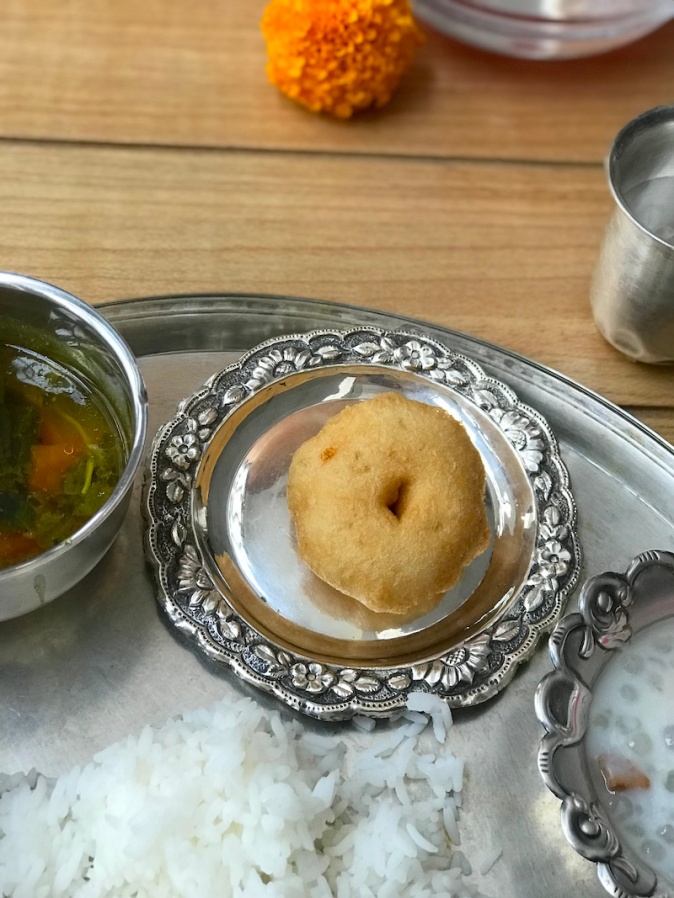

In my happy space… in my home, talking about Bengali food
A prequel to Noboborsho was my Bengali food chat with culinary expert Rushina Munshaw Ghildiyal in her InstaLive series #SpiceChroniclesWithRMG. Rushina started this in May last year during lockdown as an Instagram LIVE research project and her culinary marathon was now headed to Bengal. Rushina captured me in my happy space in her inauguaratory Bengal episode … in my dining room, in my home, chatting about Bengali food. I wore a kantha stitch dupatta instead of the traditional red and white saree on Lil Z’s insistence on wearing something casual and this was the most casual I could get! Sharing a picture that Lil Z took of me sitting amidst all my favourite cookbooks, dekchi, pots and pans and my shortlisted items from my Bengali pantry. You can enjoy the episode here.
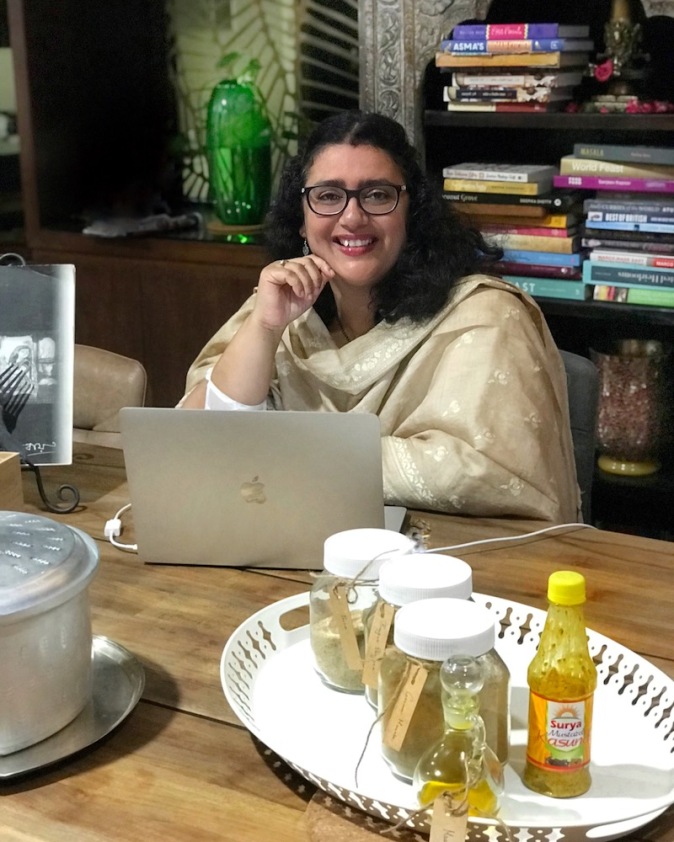
I felt like sharing the therapeutic energy of our backwaters and the new day in my virtual Noboborsho video greeting with friends and family. I wish I could embed the video here with the birds’ chirping and the sound of the seabreeze. Sharing a still screenshot from a frame… hope you all will like it and and be engulfed with the same emotion that I felt in the morning… a new journey filled with hope, faith and joyful anticipation of a bright future!
Unblogging it all… Ishita
Thank you for joining me on my daily food and travel journey on Pinterest, Instagram, Facebook and Twitter!
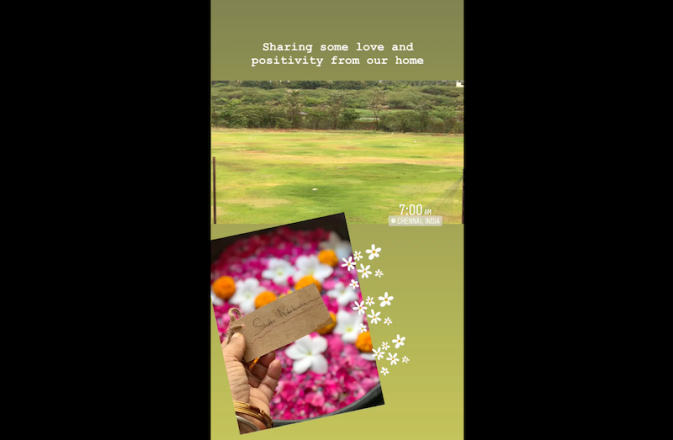
Some posts from my recent Chennai Chapter: Finally calling Chennai home Homemade spicy Chicken 65 Chicken Chettinad cooked in a claypot Celebrating Pongal with Sakkarai Pongal and other dishes Some posts about Bengali food: Shubho Noboborsho | A traditional Bengali menu for Frying Pan Diaries podcast Traditional Bengali Cuisine | All The ‘Slight’ Details A-Z of Bengali Fish Bengali recipes from my blog
Disclaimer: This isn’t a sponsored post, nor are there any affiliated links for any of the brands that may have been mentioned in this blogpost. The subject, story, opinions and views stated here are my own and all images are from my personal album. While you enjoy reading my posts with lot of visuals, please do not use any material from these posts.

Buying fresh fish from the fishermen straight off the seashore in Kovalam… this was kind of an ultimate ode to fish lovers like us. The warm glow of the rising sun, the fresh breeze and the excitement of the buyers added to the bustle of the morning.

It was already 6:30am on a Saturday morning and we hurried. We had to reach Kovalam beach to catch the morning haul directly from the fishermen. Although the beach was very close to where we live, I feared that if we reached late, the fresh catch would be dispatched to the adjoining Kovalam fish market and the surrounding fish markets in the city. As we reached the Kovalam fishing village, a few fishing boats were already parked on the beach. Kovalam or Covelong, is a well-known fishing village near Chennai and has a combined history of French, British as well as Dutch colonisation. Apart from the bustle of fishermen and their fishing activities, the beach also attracted tourists and surfers. The Z-Sisters were expecting squids and calamari, fresh off the brilliant memory of Lil Z’s birthday celebration at Bayview restaurant at Taj Fishermen’s Cove. The resort was built on a Dutch fort, located at the same beach. We have always planned to visit the beach once our new car arrived. However, our conversation at Bayview as we savoured the fresh catch of the day from the Kovalam beach earlier, proved to be catalytic. Hence we ended up the very same weekend, at the beach in the early morning hours with Matree, our wonderful live in lady, who liaised with the fishermen in their local dialect to negotiate on the prices and certify the quality of the fresh catch.
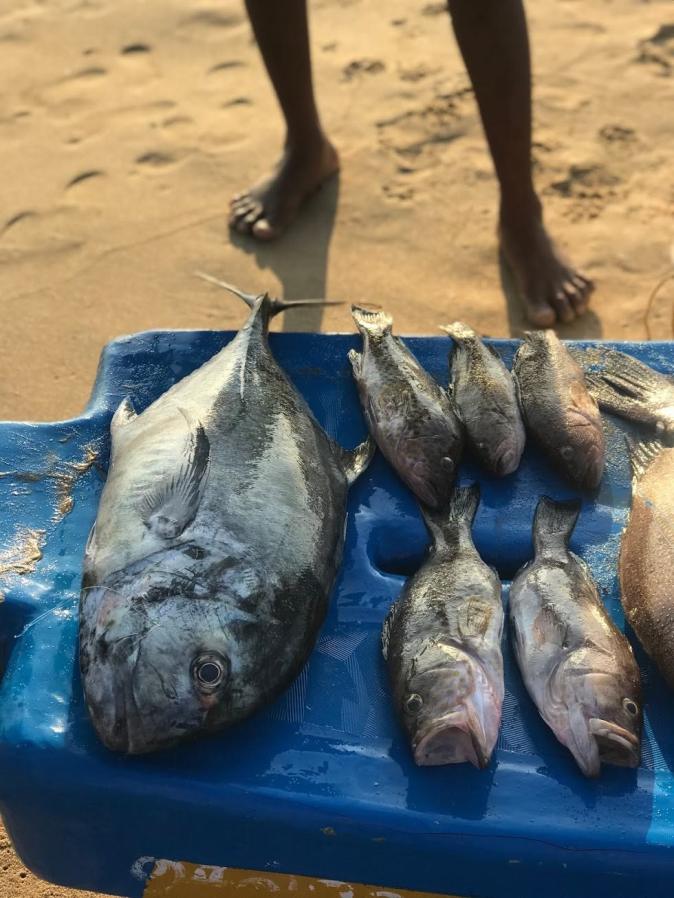
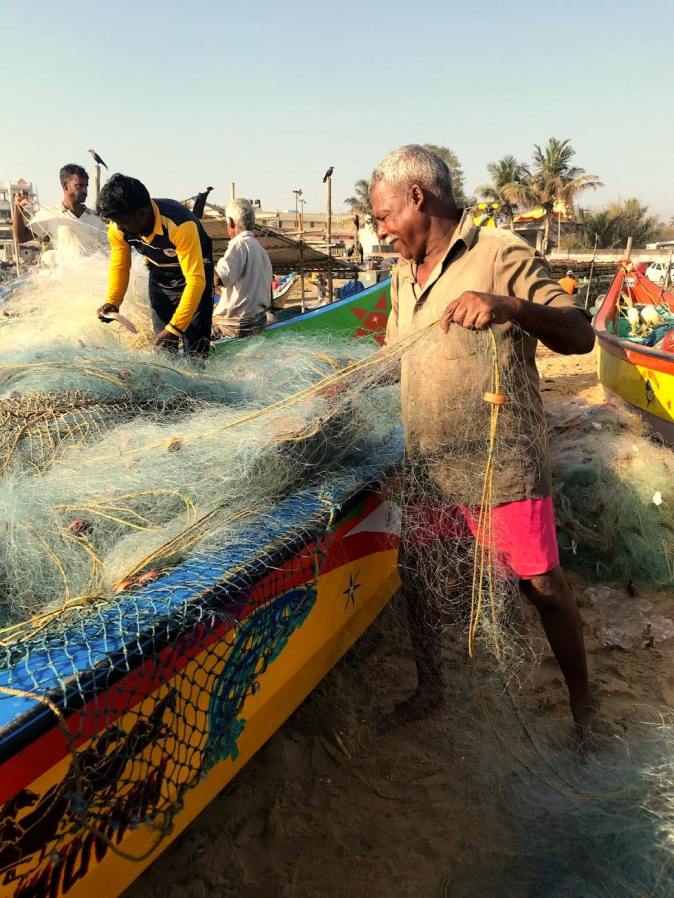
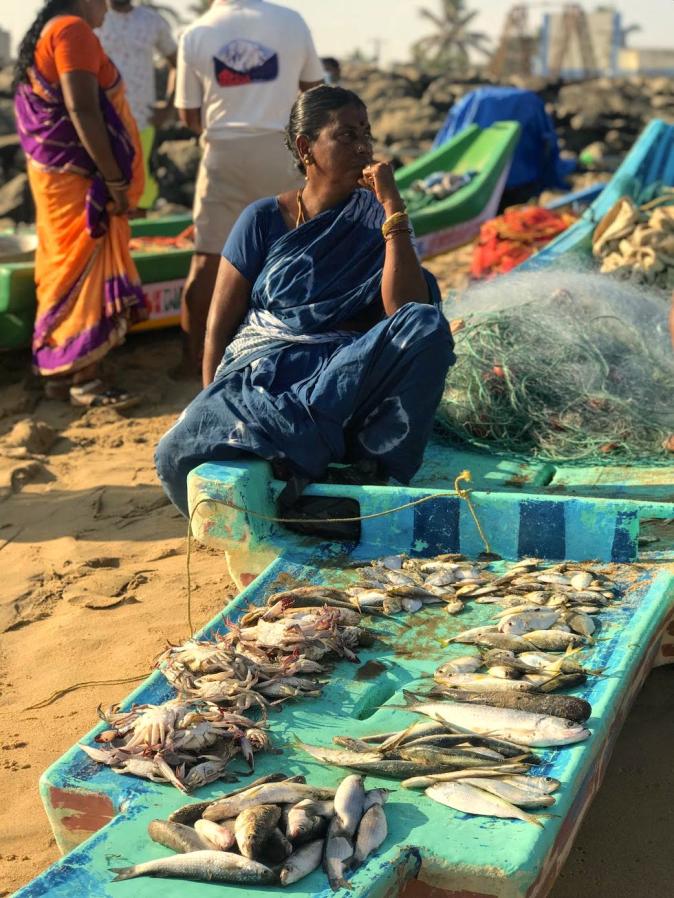


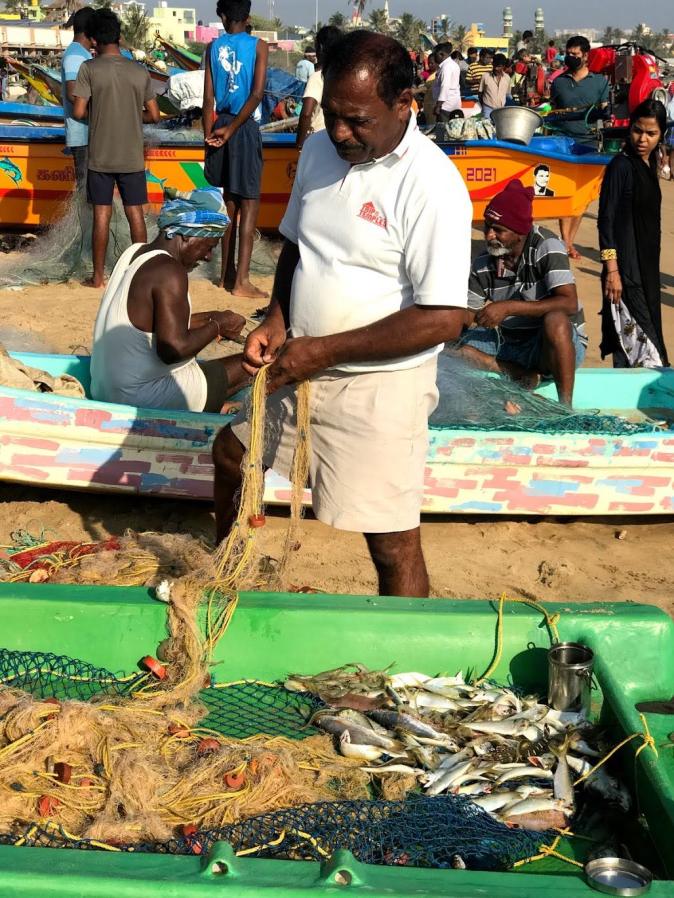
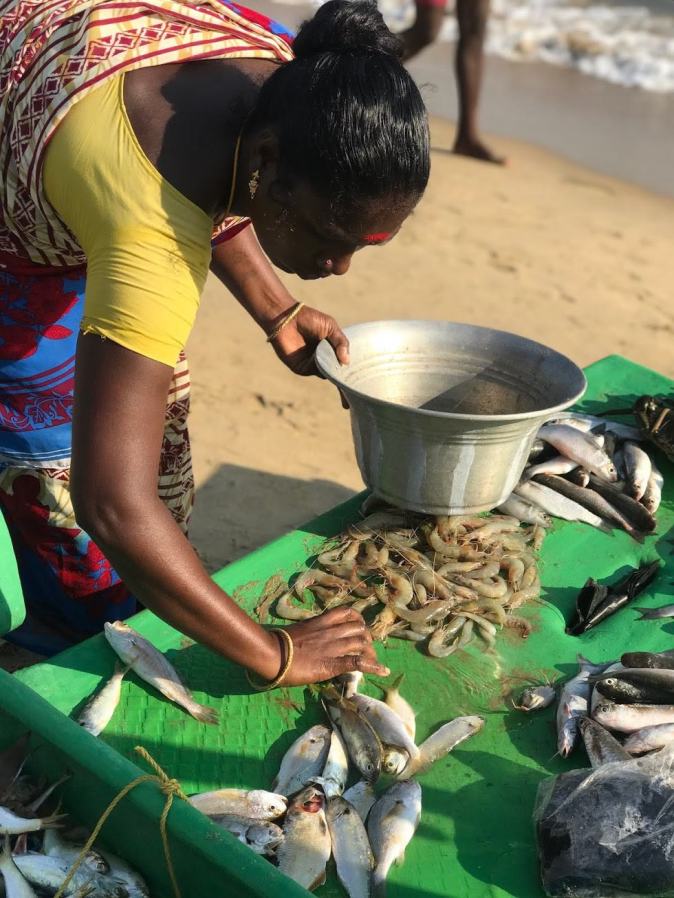
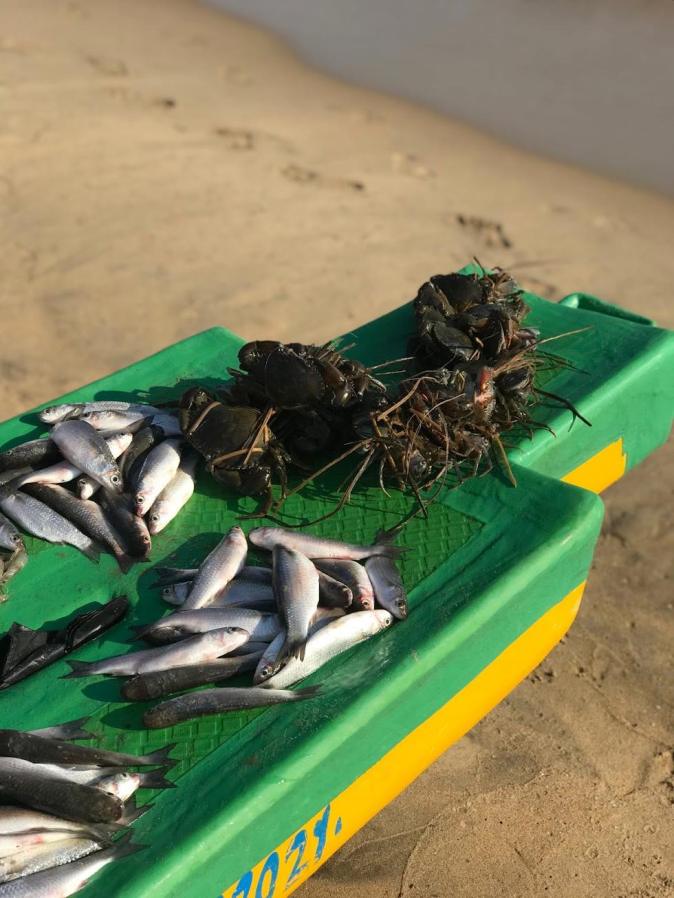
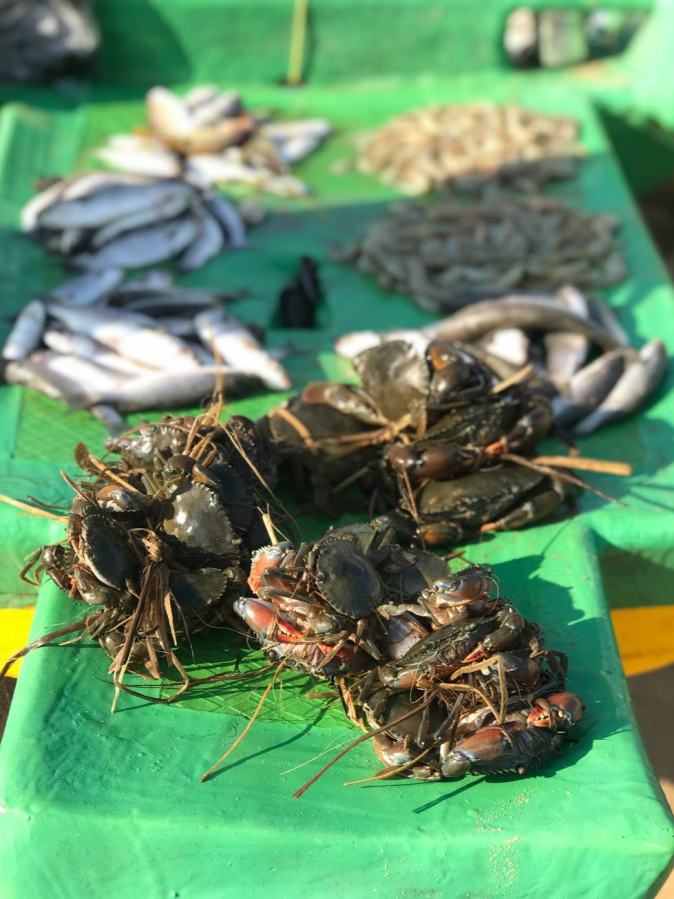
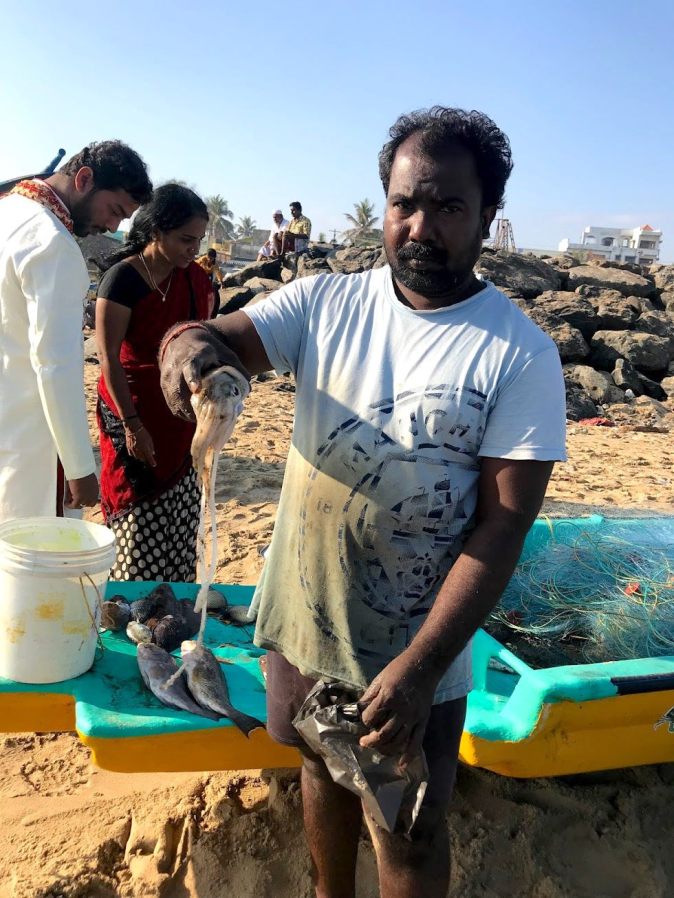
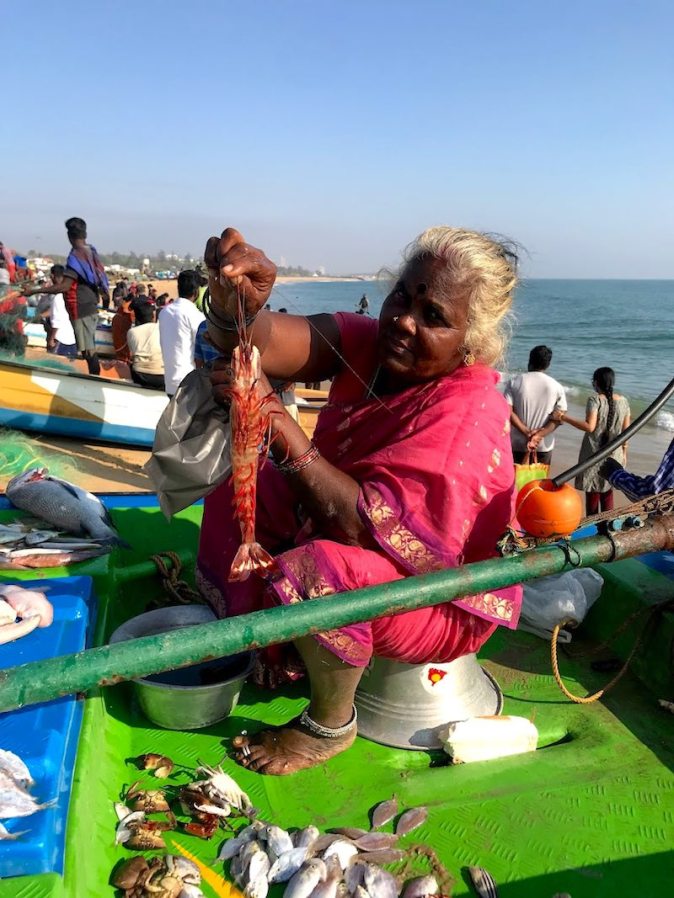
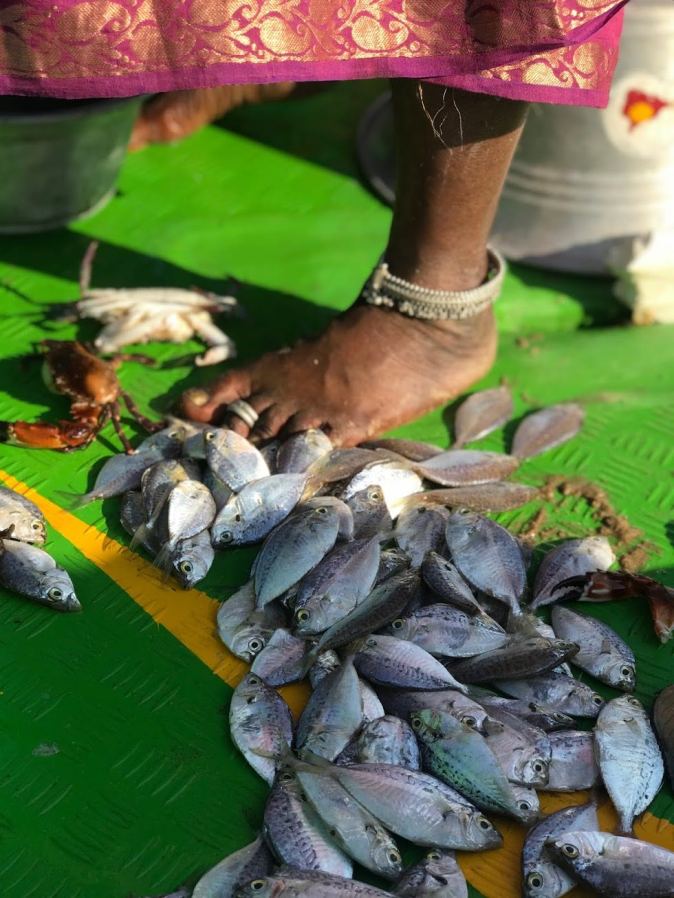
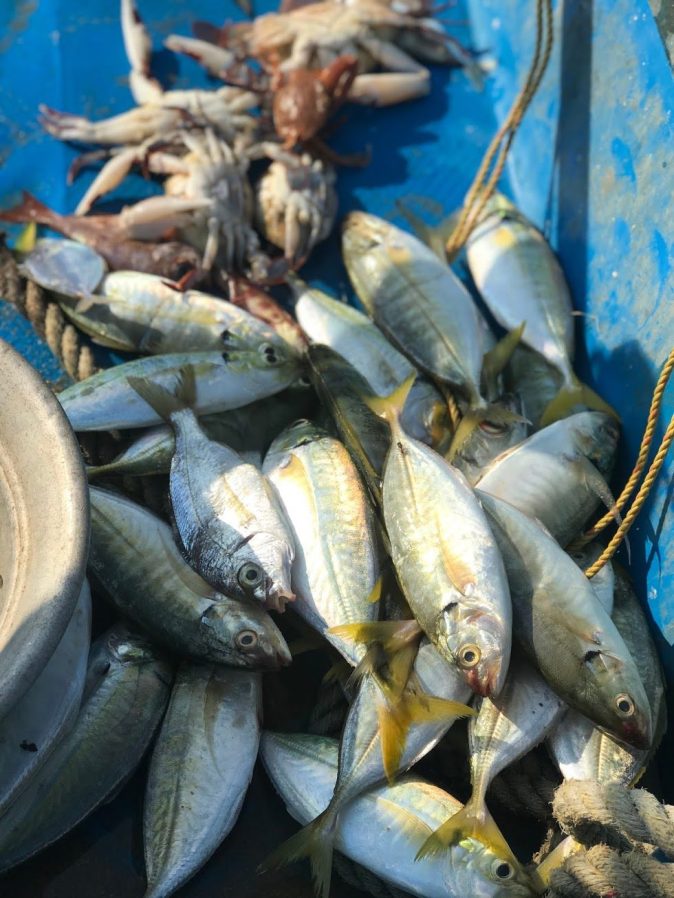

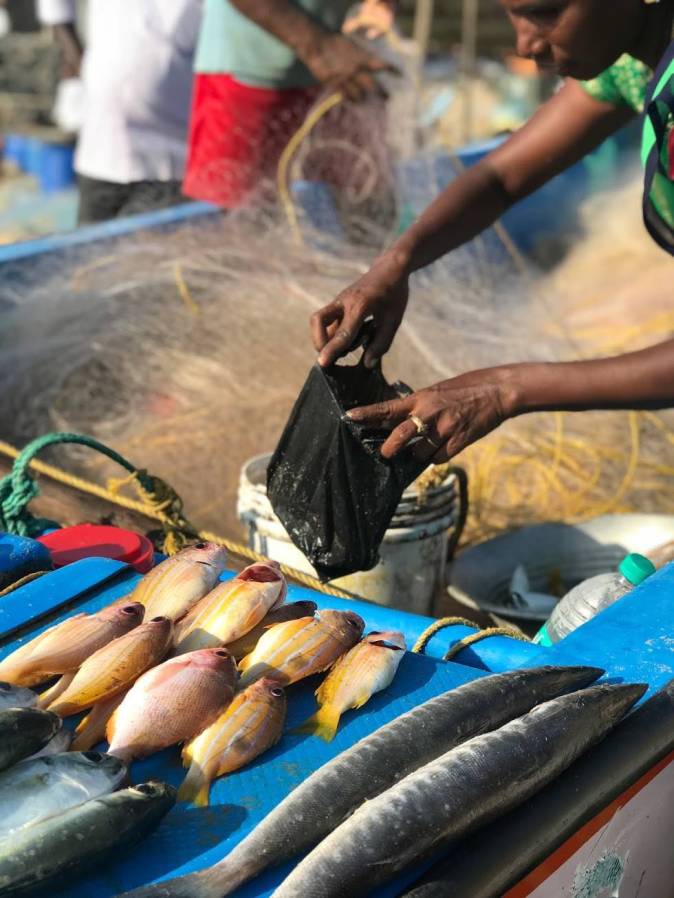
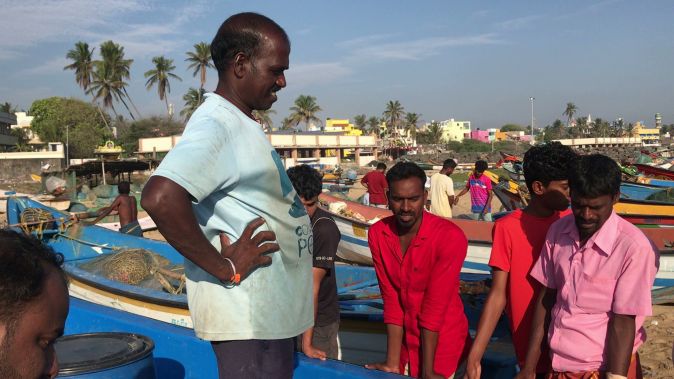

Kovalam Beach to Kovalam Fish Market … it’s a fresh seafood haul all the way
When we arrived at the beach, the fishermen were still unloading the nets and sorting out their catch. The shortlisted ones were thrown on to the boat to be showcased to lure the enthusiastic buyers. The non-shortlisted ones were thrown mercilessly on the sand in the beach. A few lucky ones from the second category were swept back into the seawater by the oncoming waves. We had mostly squids and a big King fish in mind. Crabs were aplenty along with a whole lot of other types of fish. Matree suggested that we also visit the fish market nearby, where some of the morning’s earlier hauls would perhaps be ready for purchase. Contrary to her expectations, the fish market was completely empty. It was the day of the new moon and a lot of Tamilians fasted or ate vegetarian food. Matree explained that this could be the probable reason why the fish market was still not ready. A matronly fisherwoman, whom she referred to as Pati or grandma, caught hold of us and insisted that she a few great catches. Pati shared that her bounty comprised of fish offloaded from the fishing boats which had arrived on the shores around 5am. She took out a Vanjiram, or King Fish from an icebox covered in ice. Matree suspected that the Vanjiram had been frozen. A dialogue ensued to make sure that it was a fresh catch of the day. After a gentle negotiation between the two ladies, the 2.8 kg Vanjiram cost us Rs 2,200. An additional Rs 100 tended to cleaning and cutting of the fish into 35-40 delicate pieces. We also ended up buying Sankara, or Red Snapper at a cost of Rs 450 for 4 pieces, with 2 complementary pieces thrown in generously by Pati. After finishing our purchases at the Kovalam Fish Market, I insisted that we should go back to the beach once more, looking for squids. The fishermen were still engaged in sorting out their catch from their never-ending long fishing nets. We managed to buy a small squid that weighed 500 gms (scroll down to check out for the cutie). Only 100 gms of it was accompanying us back home, after cutting and cleaning. Not a very generous portion for each one of us for our lunch that day, but good enough to try the beer batter fried squid for the first time!
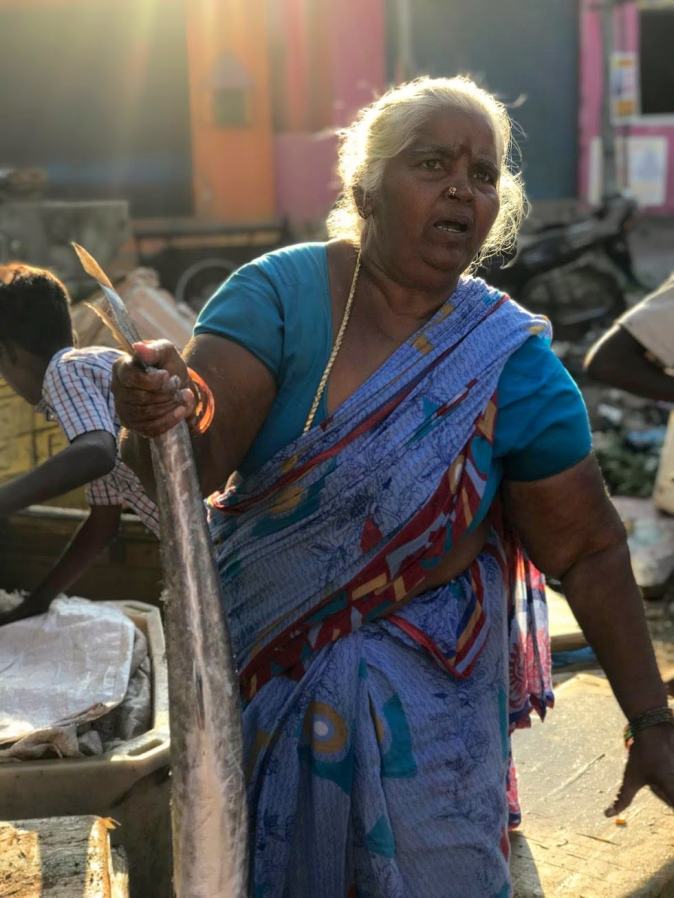
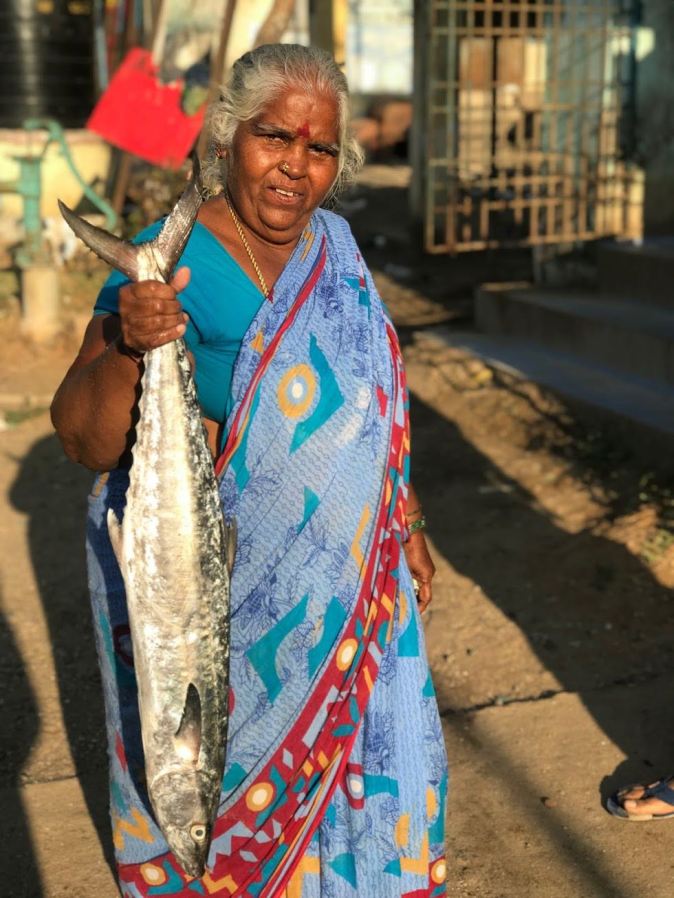
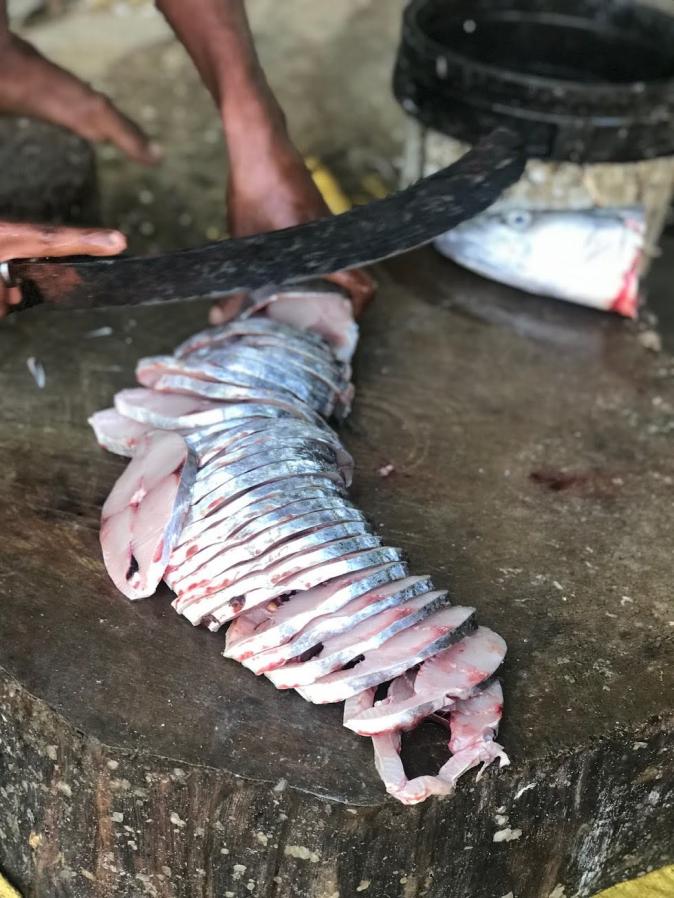
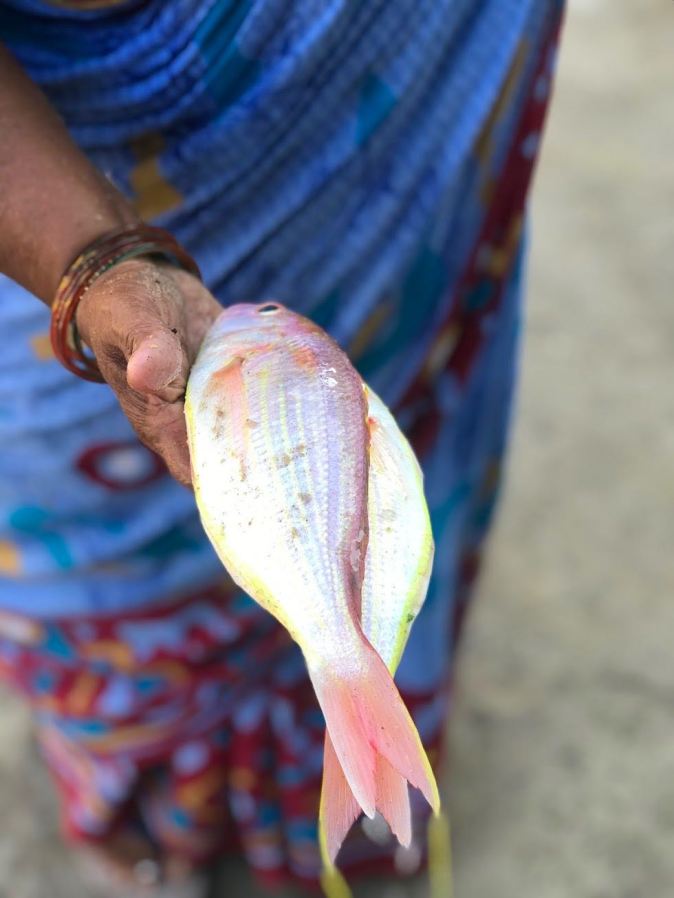
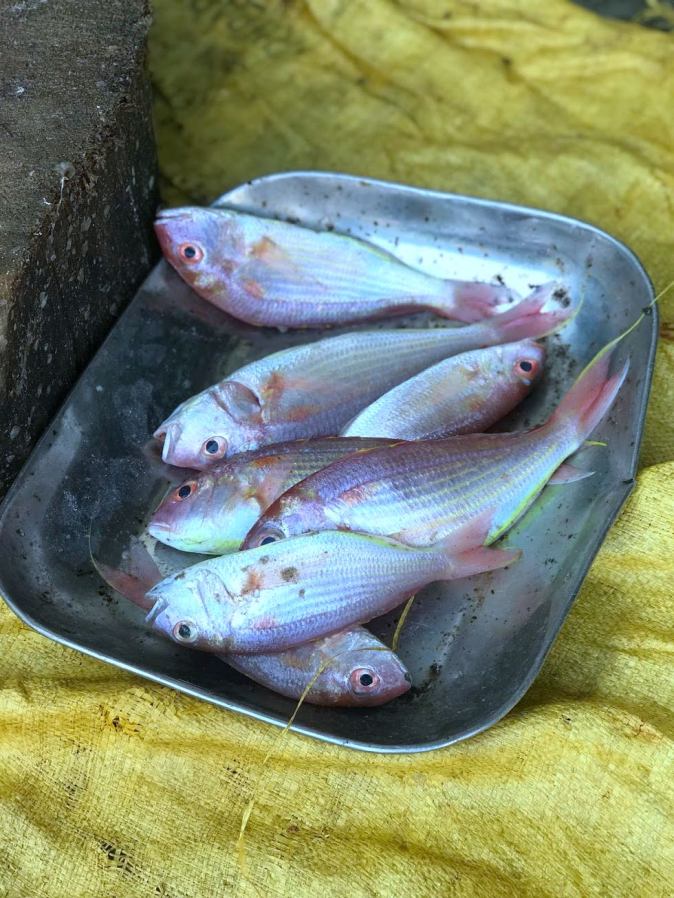


If we were to repeat our experience … this is how we will do it
There’s a variety of fish on offer – from the popular King Fish, Red Snappers, Pomfrets, shrimps, crabs to sting rays, depending upon the season and the fishermen’s luck at the ocean. Since the fishermen are still laying out their catch from the nets, don’t wait if something catches your fancy. I missed out on a big squid and an octopus, thinking that I will first have a look through the seashore. Do explore local fish and try out varieties that you haven’t tasted before. We missed out a 5 kg Parai or a Bluefin Travelly which Matree suggested would taste very much like Vanjiram or King Fish. Going to the seashore around 7:30 am instead of earlier, may be a good idea as the fishermen would have finished unloading their catches. There are also some casual restaurants nearby where one can select the fish to be fried with a special masala marination. Open during the weekends, these restaurants start operating as early as 9 am and closes around 9 pm. I learnt that the fishermen were mostly Christians, while these restaurants were owned by Muslims. Pati and many other fish vendors were Hindus. Kovalam also boasts of a very sacred Durgah, a temple on the beach and an ancient Catholic Church. I have also set out my intention of eating out in one of these restaurants in this fishing village… soon!
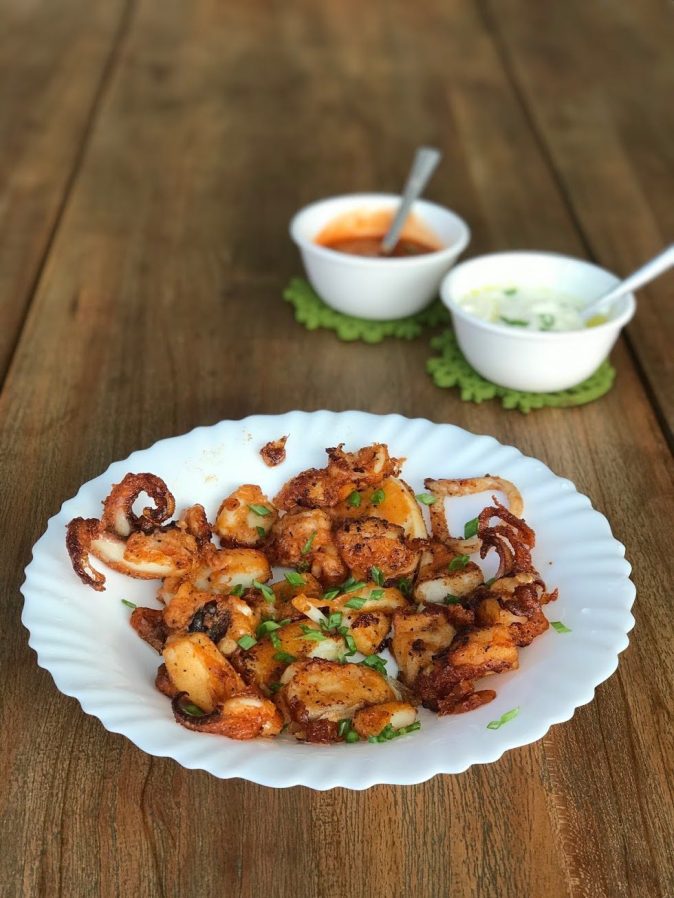
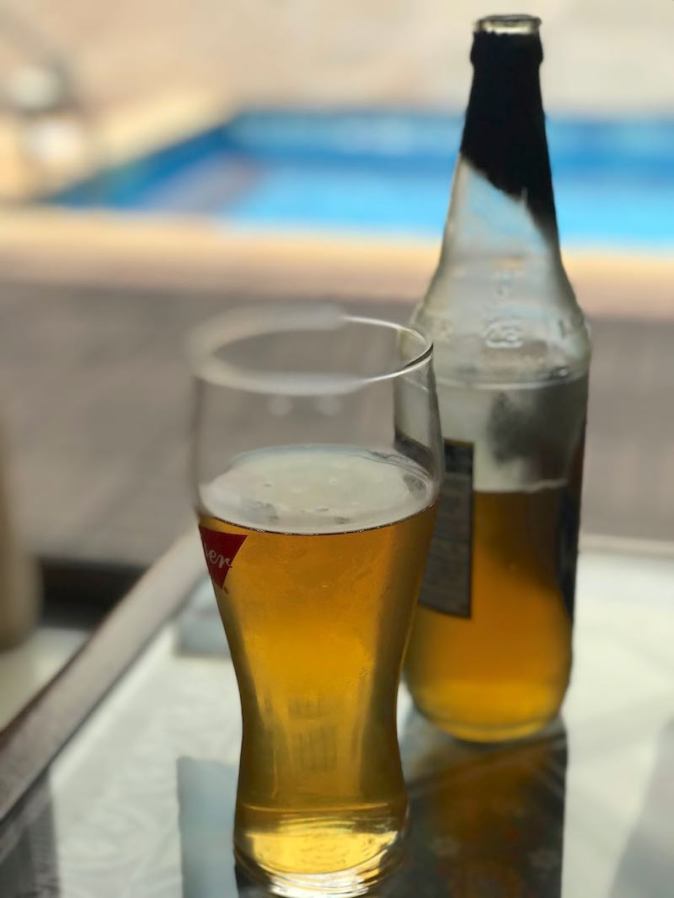
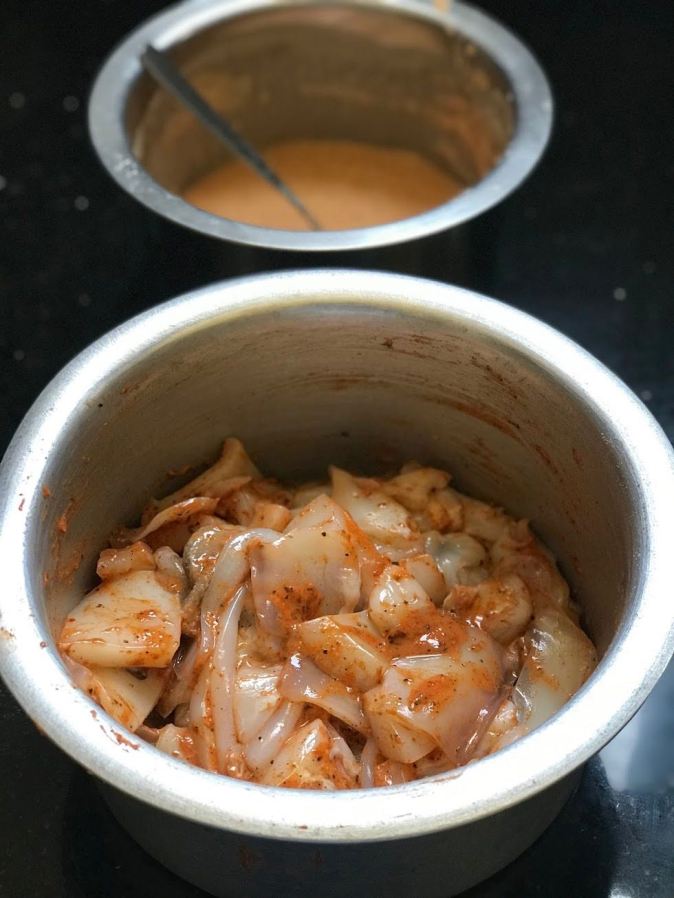
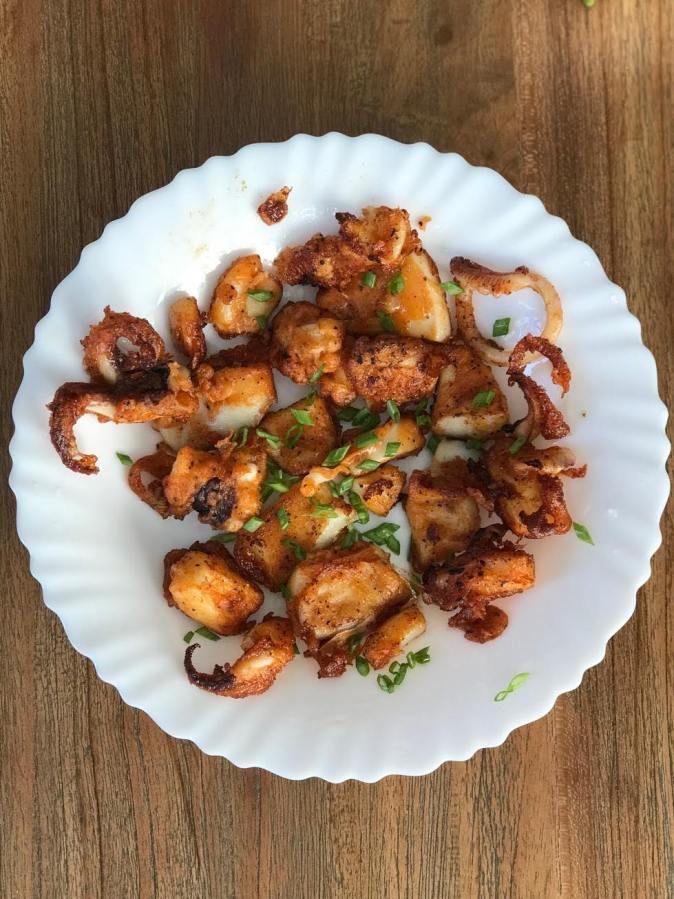
The most exciting way to explore a place, for me, is via its local markets. I love the excitement, the hustle and bustle, the animated conversations between the buyers and the sellers… and finally the prized possession of a fresh haul. It’s been quite a long time since I have walked though a market fearlessly. Although I had my mask in place, this was a great reboot to my system. Of course, the Bearded Biker’s navigational skills and post shopping planning (icebox and other things) made the fishy exploration seamless. Our lunch comprised of a spicy preparation of fried King Fish ala those restaurants in Kovalam fishing village, courtesy Matree. Also, Beer battered Squid with Yoghurt and a Tomato-Chilli dip, courtesy moi. Here’s raising a mug of beer to more such fishy and exciting escapades… and delicious meals!
Unblogging it all… Ishita
Thank you for joining me on my daily food and travel journey on Pinterest, Instagram, Facebook and Twitter!
Some posts from my recent Chennai Chapter: Finally calling Chennai home Homemade spicy Chicken 65 Chicken Chettinad cooked in a claypot Celebrating Pongal with Sakkarai Pongal and other dishes
Disclaimer: This isn’t a sponsored post, nor are there any affiliated links for any of the brands that may have been mentioned in this blogpost. The subject, story, opinions and views stated here are my own and all images are from my personal album. While you enjoy reading my posts with lot of visuals, please do not use any material from these posts.
100 gms squid, cut into small pieces, approx. 1inch/piece 250 ml yoghurt Mix the olive oil and lime juice in the yoghurt. Garnish with spring onions. Serve chilled. 2 tomatoesBeer Battered Squid
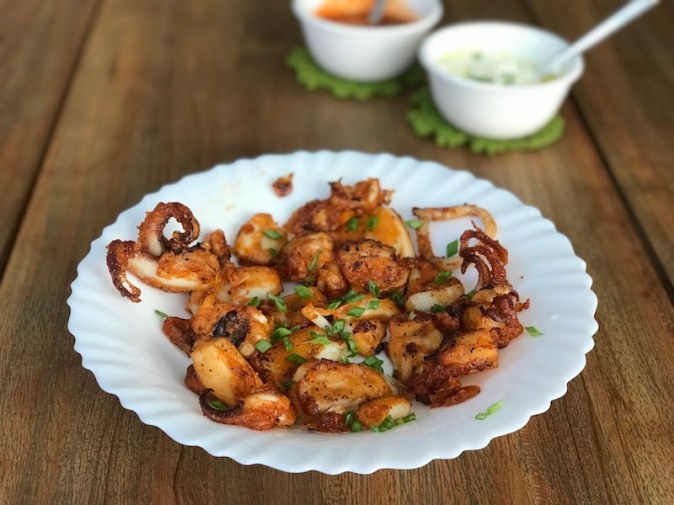
Ingredients
1 tsp pepper
1 tbsp red chilli powder
1 cup all maida or flour
½ cup beer
½ lime, squeezed
salt, as per taste
white oil for deep fryingMethod
Yoghurt Dip
1tbsp olive oil
½ lime, squeezed
1 spring onion, finely choppedTomato-Chilli Dip
½ medium sized onion, finely sliced
1 tsp red chilli powder
1 tsp garam masala powder
½ tsp mustard seeds
curry leaves – 4
1 tsp white oil
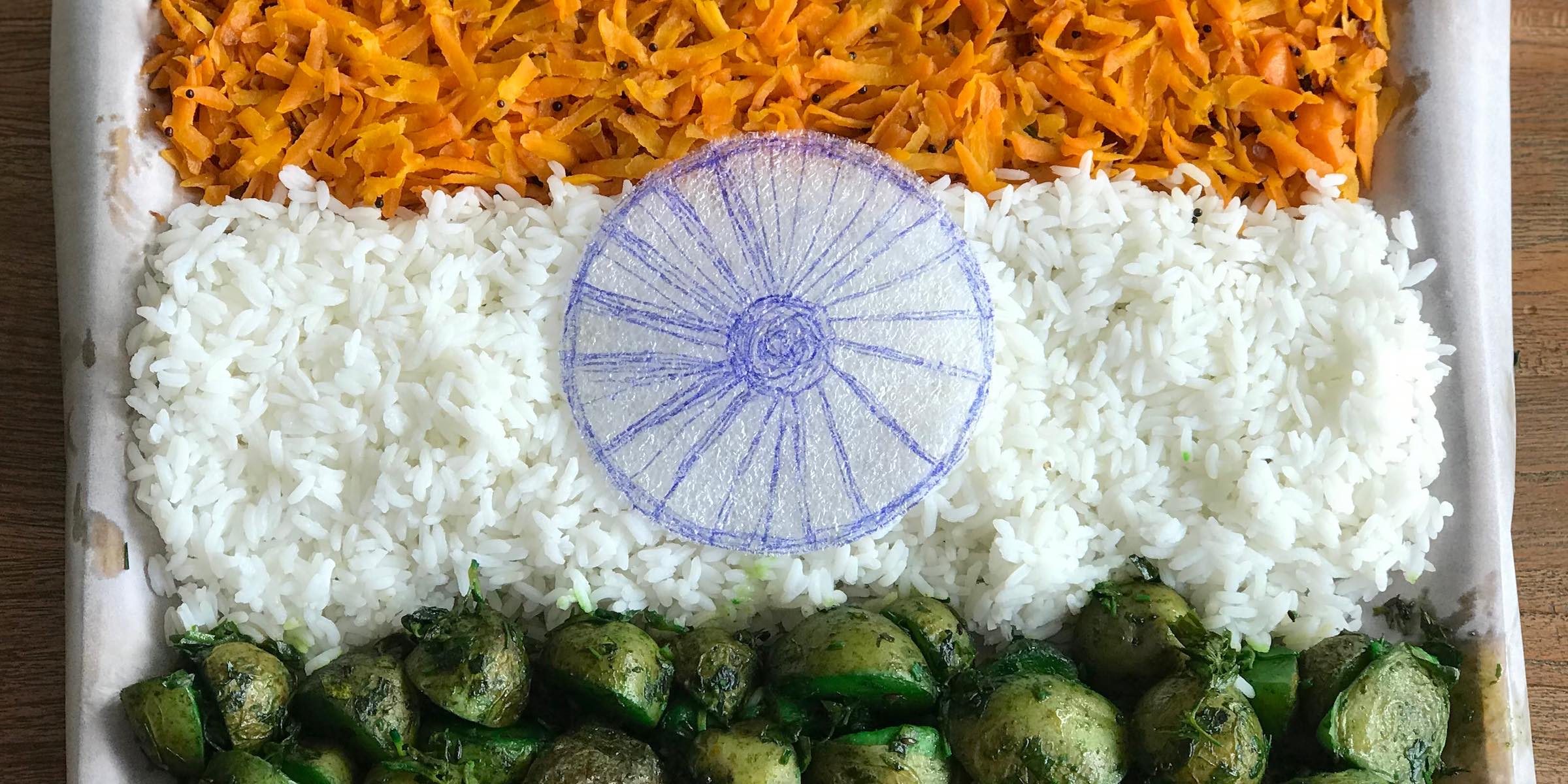
Happy 72nd Indian Republic Day! May the love and pride for our nation keep soaring high amongst all Indians, much like the Tricolour!
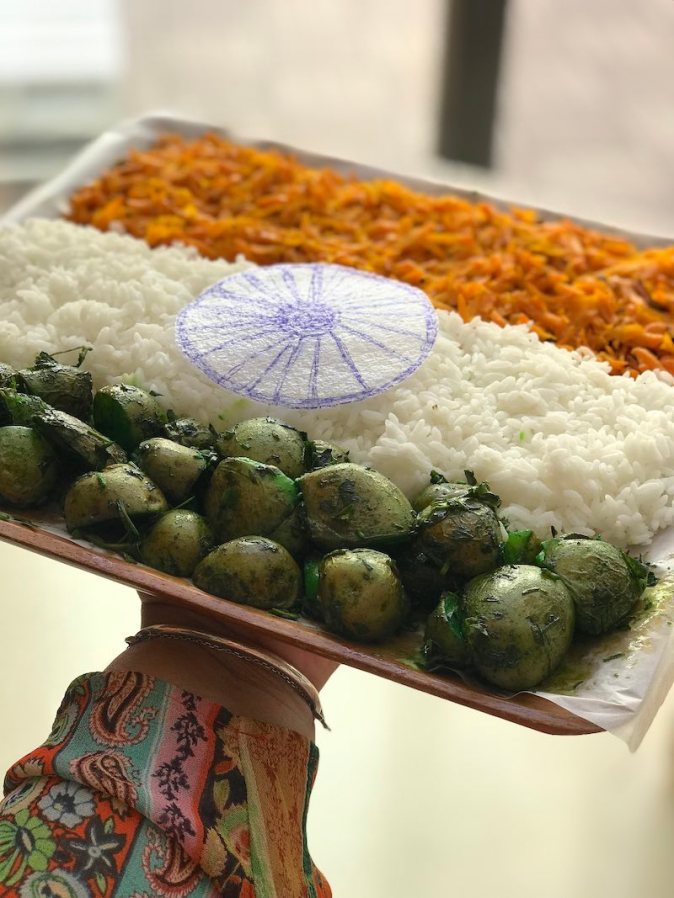
I have been living abroad for the last 20 years and have just moved back to India from Dubai in October 2020. For those who may be expecting with fluttering hearts that the decision was initiated by a patriotic call to my roots, the country where I belong… the Bearded Biker got a transfer within the organisation that he has been working for many years. We were very excited as both our parents live in Kolkata and the last year was witness to the havoc it created in our minds not being able to travel to Kolkata, if and when we wanted to. We opted for Chennai in a heartbeat. Excepting for a short stint in Frankfurt, we have always lived by the sea. Living in Dubai always felt like an extension of India. The only conscious decision that I have maintained all these years, was that I was never going to give up my Indian passport.
Definitely not because of patriotism.
What does patriotism mean to me? I can’t pinpoint. What is it to be born an Indian? I can’t pinpoint. How does it feel to be a non-resident Indian living abroad? Again, I can’t pinpoint. Isn’t it better to be a first -class citizen in India rather than living a life off a second-class citizen elsewhere? I definitely can’t pinpoint. How do I inculcate Indianness in the Z-Sisters? Well, I don’t think I do.
Now, may I ask you a question? If you have an answer to that, I may have an answer to all the above questions. What does being born in a particular family or having certain individuals as parents mean to you?
That is exactly what I feel. I have never questioned the family that I was born to, or the surname that I inherited or analysed the nature of my parents. If I didn’t like any behavioural pattern in them, I have been conscious not to have imbibed that. While I don’t deny that I have been raised with certain values or I am guided by ethics and principles that have been passed on by them, I also have my own value system and my own ideas and ideologies that have been shaped by my own journey. I may have tried to change a few things that I haven’t liked about the environment I grew up in, otherwise retained everything that I loved about it. Yes, I have been lucky to have had a happy childhood with a lot of happy memories, a safe upbringing and a life of relative ease. However, I am very different from each of my parent and I lead a different life. There are arguments and our opinions don’t always match. It’s quite obvious that I try to shake them up, make them see my viewpoint. I may or many not succeed – it all depends upon each case.
One thing is certain though, no matter what, I will never give up on my parents. Or leave them for any other parents.
My emotions for India are pretty much the same. I am proud of India’s achievements, I am saddened at her failures, I scream at her frustrations. I bask in her glory and fade when she’s ashamed. But I have always stood by her, will always stand by her and will never bash her.
Neither, my emotions were magnified when I was living the life of a non-resident Indian for two decades, nor have they been sealed with a ‘high-level of patriotism’ certificate, now that I am back. Like I wished at times that Ma or Baba would behave like a certain friend’s parent, yet I have never felt that urge to belong to any other family but my own, my feelings for India has been the same.
I have never discussed Indian politics not because I don’t understand politics, but because I understand how it has the massive potential to incite us and divide us – both in an ongoing party happening at the world stage or in a living room.
I only discuss food. I only discuss travel. Out of choice and out of faith. For I believe, these are the two things that connect people and their hearts across different religions, regions, generations and mindsets. Also sports, but only when the nation is playing against another.
I don’t know whether the hoisting of the Indian flag is poignant to me because of what we were taught in school or because I have always associated the Tricolour with Baba hoisting the flag on the Republic Day, the Independence Day or Gandhi Jayanti as he carried out his roles in his respective government postings. I had the privilege of seating at the front row, seeing him take the gun salute. As the Tricolour unfurled, I had goosebumps all over. To be honest, it had less to do with patriotism and more to feeling that Baba was a superhero and all the parade and drama unfolding in front of him, were directed towards us!
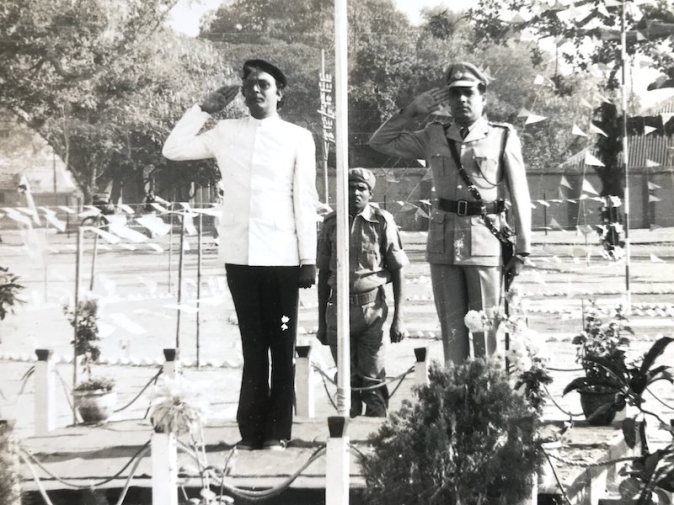

The Z-Sisters have been studying in a British school all along and after moving to Chennai, they are now studying in an International school. I have no qualms admitting that they may or maynot know the Indian National Anthem by heart. I have never insisted and I have never imposed. Just like my Ma never insisted that I learn Rabindrasangeet although she was a Tagore aficionado and had the tutelage from the greatest exponents on RabindraSangeet like Kanika Bandopadhyay, Nilima Sen and others. In my life’s ups and downs, I often wake up humming a Tagore song, its lyrics reflecting exactly the emotions I am going through at the hour. As if, they have seeped into my subconscious. With the viral video doing the round today in WhatsApp groups, about a four year old girl Esther singing Band Mataram, I did feel a little tweak inside … should I have insisted? There was a community flag hoisting ceremony in the morning which I didn’t sign up for, as I felt that we should still maintain a certain amount of social distancing. I have tied up an Indian flag in our terrace after reading up the dos and dont’s of hoisting the Tricolour. After all, we are in the home turf now and we could end up hurting someone’s sentiments or sensibilities (if we stood taller than the flag and other criterions), considering we are in the world’s largest democracy with approx 1.38 billion people, each having their own sentiment. Today’s plan is to sing the National Anthem together and maybe learn a bit on what the terms like republic, democracy and others mean. Also reminisce on our very privileged visit to the Governor’s House in Kolkata where we saw one of the original copies of the Constitution of India while sipping on Darjeeling tea in a cup which had the proud symbol of Ashok Stambh on it.
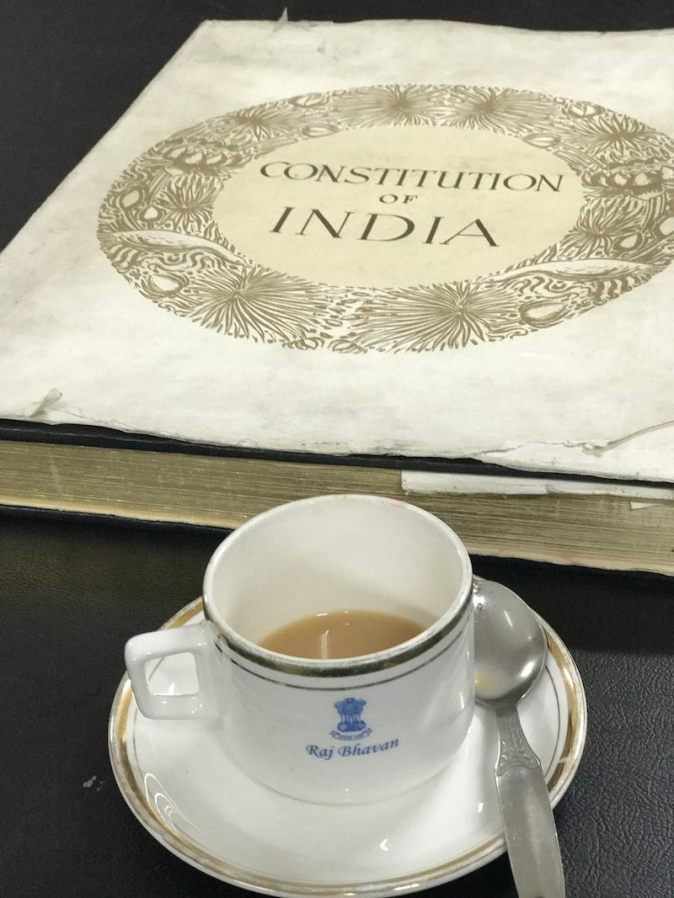
I haven’t imposed any Bangaliana on the Z-Sisters, yet they are the ones planning our traditional Bengali menu for our Bijoya get togethers at our home. My heart swells when Big Z declares that I make the best mishti doi in the world. Similarly, I am accused by many of not having imposed any Indianness on them.
What is Indianness? Can there be really one definition? Excepting the emotion that is in unison as was recently witnessed when India won the India-Australia test series. If showing the Taj Mahal or knowing what each colour in the Indian flag stands for, I think I have passed the litmus test, so have the Z-Sisters!
I have already mentioned that when we were discussing our move out of Dubai, we chose India as we didn’t ever aspire for a different passport or wanted to move westwards. As I have already mentioned that it’s got nothing to do with patriotism. Or I am writing this blogpost just because I am back in India. The sights and sounds of India have always rejuvenated me, although I recognise that living in India after twenty years may be different from the romanticism of travelling through India on our family vacations… although we have broken through the comforts of the typical Incredible India routes for the NRIs and foreigner tourists by exploring the rough terrains of Leh and Ladakh following the bike trails. We are the kind of family who gets as excited eating in the streets of Lucknow as enjoying the colonial flavours of Windamere in Darjeeling. There’s a lot to learn and unlearn. The Z-Sisters haven’t for once questioned our decision to move to India. Li’l Z asked me the other day… ‘you are privileged and have a voice Mama, so how are you going to use it?’ That’s serious food for thought though, but for today, I will simply dress my part and celebrate Republic Day by doing the best I can… cook a simple tricoloured food and write. By the way, we live very close to the backwaters and the canal that flows by is called the Buckingham Canal. Guess, even the canal in this Muttkadu backwaters knows that we will probably be excited by that… so what if it’s alibi a canal’s name?
My ethnic kaftan has a few more colours than the tricolour, but quite representative of the Indian flag really. Our lunch was spot on though!
Unblogging it all… Ishita
Thank you for joining me on my daily food and travel journey on Pinterest, Instagram, Facebook and Twitter!
Some posts from my recent Chennai Chapter: Finally calling Chennai home Homemade spicy Chicken 65 Chicken Chettinad cooked in a claypot
Disclaimer: This isn’t a sponsored post, nor are there any affiliated links for any of the brands that may have been mentioned in this blogpost. The subject, story, opinions and views stated here are my own and all images are from my personal album. While you enjoy reading my posts with lot of visuals, please do not use any material from these posts.
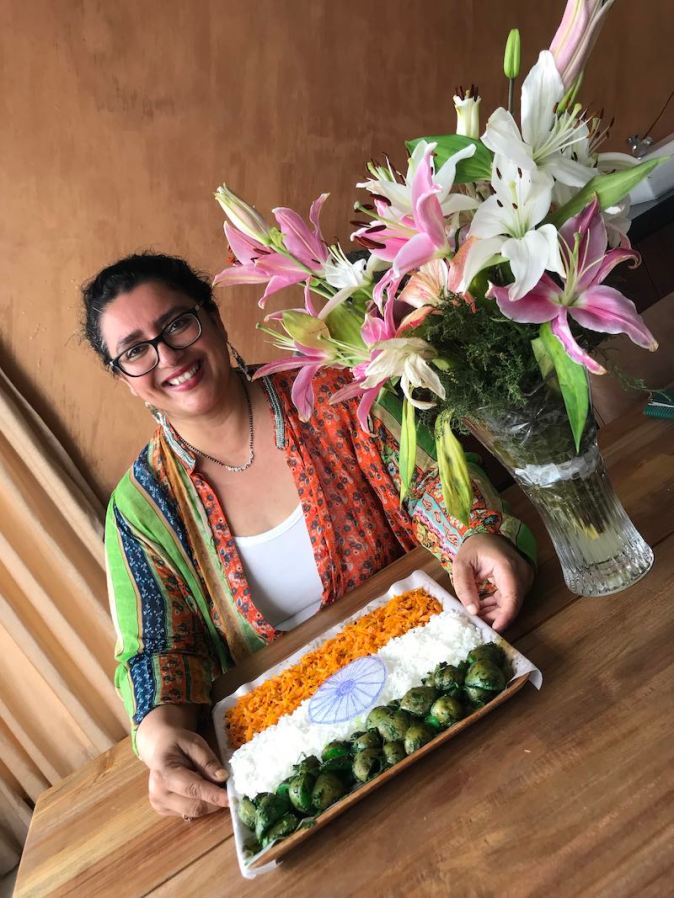
Below are my Independence Day pictures from my Kolkata visit in 2018. Every year, around July and August, we used to visit Kolkata – a period I term as my ‘summer hibernation’. I missed out on my 2020 summer hibernation and am looking forward to my frequent Kolkata visits from Chennai.


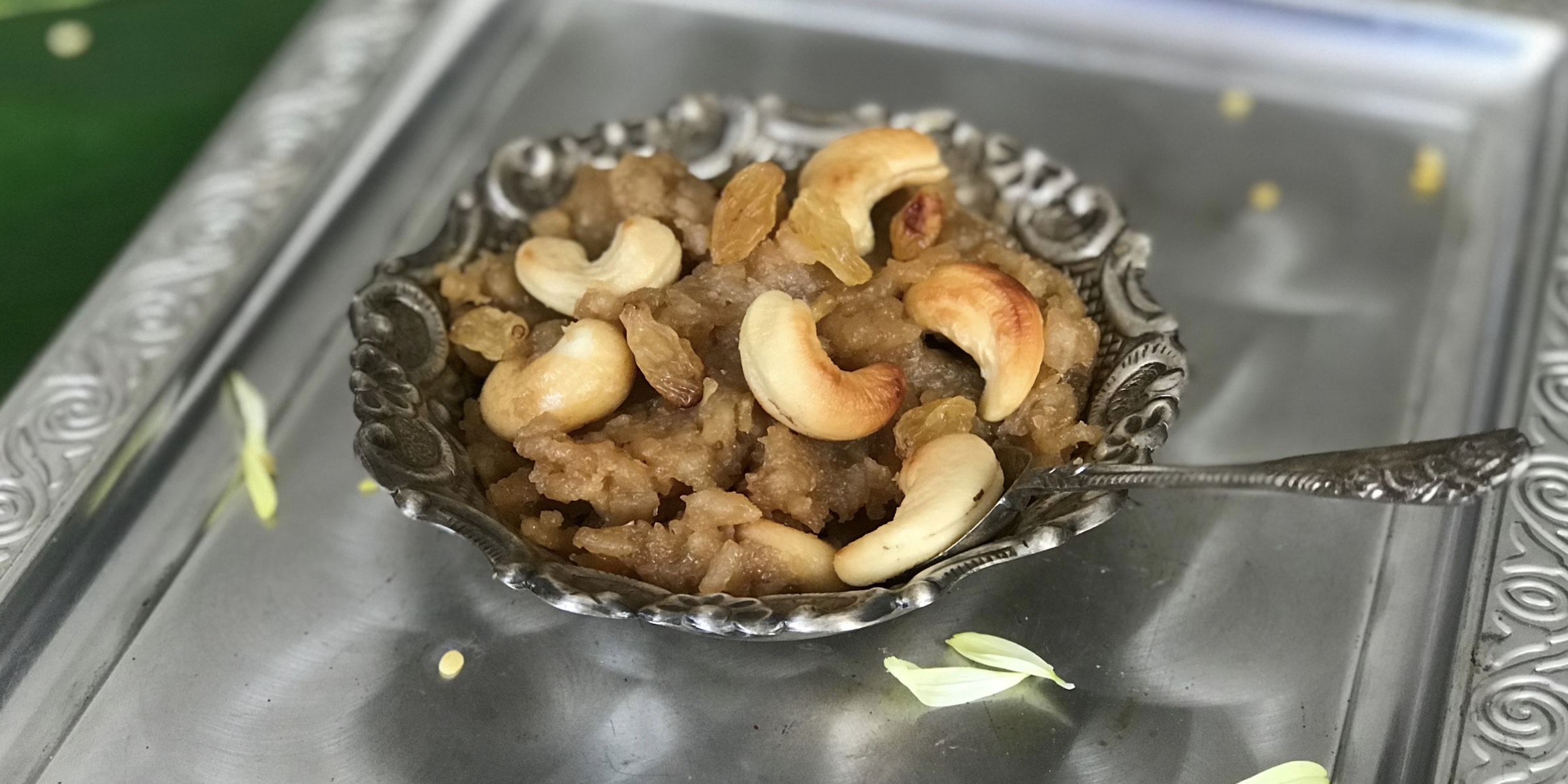
Wishing you abundance and joy as new harvest is celebrated all across India. They may have different names… Makar Sankranti, Pongal, Maghi Bihu, Uttarayan, Lohri and others, but the intentions are the same. It’s a celebration of nature’s bounty and to her show gratitude. It also marks the sun’s transit to Capricorn, hence marking the end of winter in the Northern Hemisphere. Needless to say, it’s the perfect time to release everything from the past and welcome a new decade by setting new intentions!
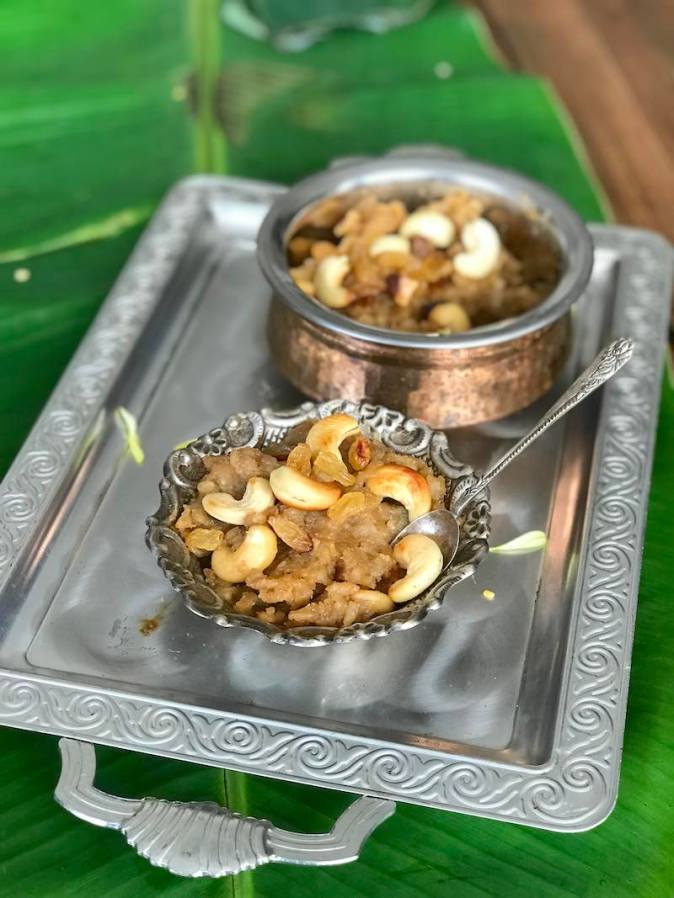 I’m immersing myself into every new experience that I can get in my new adopted home, Chennai. Nothing can be better than a festive season or a celebration to learn about it’s cuisine and culture. Ideally, I’d visit local markets, explore back alleys, try out popular casual eateries alongside the long-standing finer restaurants. I love meeting cooks and chefs of both restaurants and family kitchens, listening to their food stories and food memories. The last year has been quite different in that sense … I haven’t been able to embrace new people in their kitchens and homes spontaneously and without any fear, unlike other times.
I’m immersing myself into every new experience that I can get in my new adopted home, Chennai. Nothing can be better than a festive season or a celebration to learn about it’s cuisine and culture. Ideally, I’d visit local markets, explore back alleys, try out popular casual eateries alongside the long-standing finer restaurants. I love meeting cooks and chefs of both restaurants and family kitchens, listening to their food stories and food memories. The last year has been quite different in that sense … I haven’t been able to embrace new people in their kitchens and homes spontaneously and without any fear, unlike other times.
I wanted to learn to make a few dishes that are cooked for Pongal so that we could have a special Pongal lunch at home (below) along with the Z-Sisters. During this time of the year, Bengalis celebrate Makar Sankranti. The harvesting season calls for Notun Gur, the season fresh jaggery and different kinds of pithes, a kind of dumpling made with rice dough and filled with fresh coconut and jaggery. I will not be making pithes this time or be able to visit our Bengali friends in Dubai, some of who would invariably make pithes at home… but I can proudly say that I have learnt to make the Sakkarai Pongal, the special Pongal dish cooked with newly harvested rice, moong dal and sugarcane jaggery. I also learnt a few other regional dishes followed by a hearty breakfast with this wonderful family who opened up their traditional home kitchen for me. Yesterday felt extremely special, as after a long time I went into the homes and kitchens of two wonderful families in our community ~ Veni and Subha. Of course, with my mask and social distancing protocols in place.
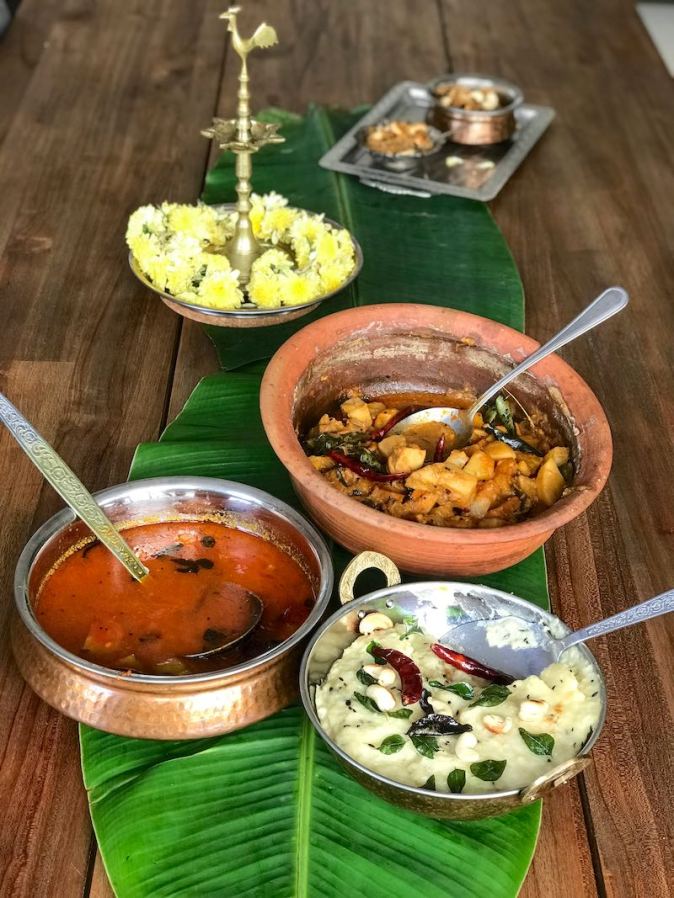
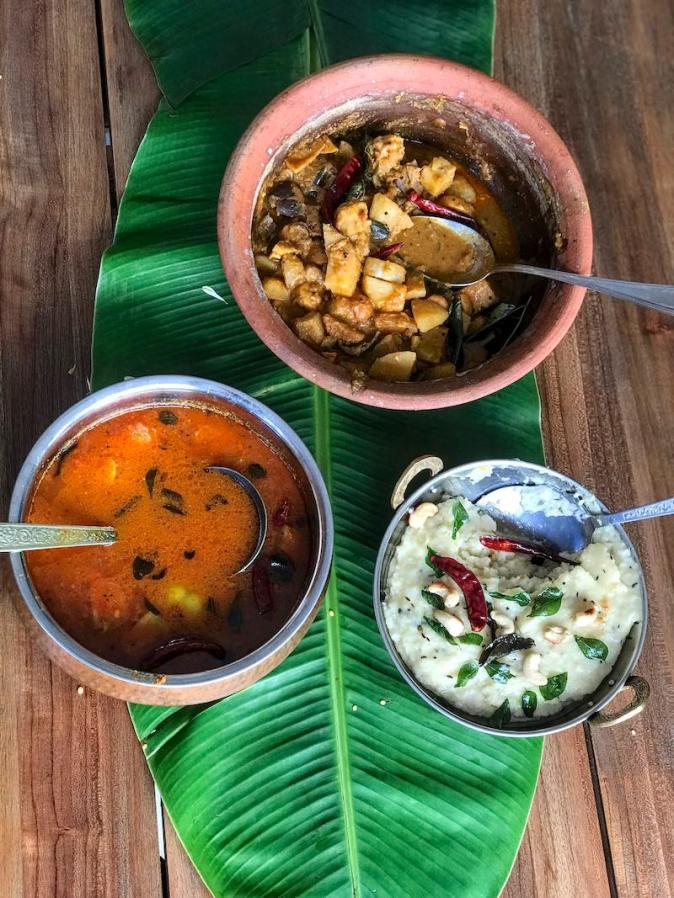
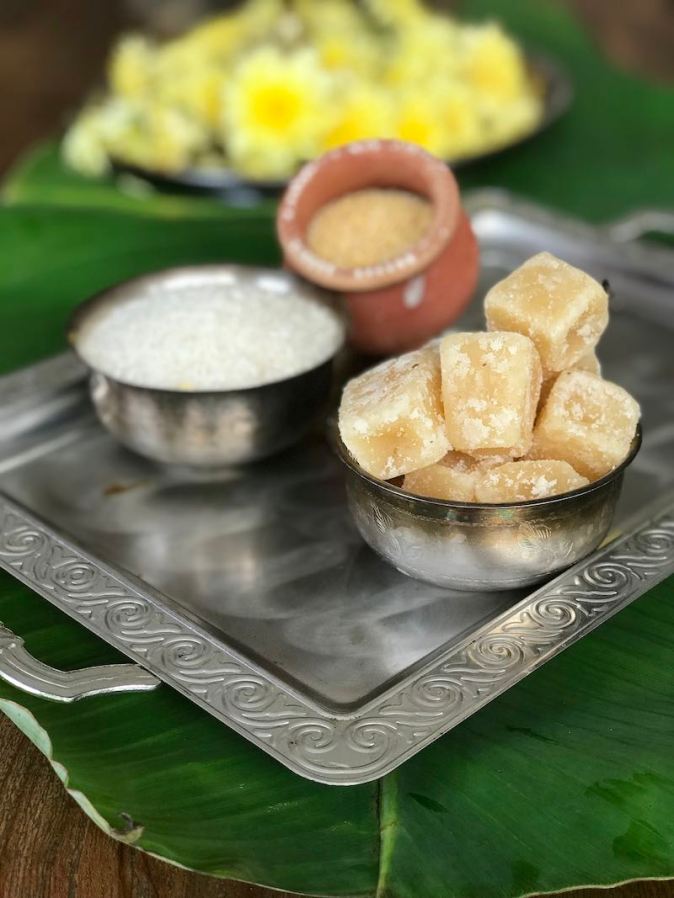
Adda with Veni and digging into her Kolkata konnect
When I met Veni, we hit off instantly. She is a Tamilian from Kolkata, hence an honorary Bengali by her own admission. I caught Veni chatting voraciously with a few other residents of the community one evening, about regional sweets. I am not sure whether the discussion had a probable sweet inclination because of the Kolkata influence in her or was it me lurking in the background trying to get a confirmed place in my new friendship circle and manifesting a topic that I could partake in effortlessly. Did Tamilians, like Bengalis, discuss sweets for hours, I wondered! Veni and her family – her husband Swami, their two cute little boys and her parents, welcomed me wholeheartedly into their home when she heard I wanted to learn how to cook the Sakkarai Pongal. This was a special sweet cooked with newly harvested nice, moong dal and sugarcane jaggery. Traditionally, it was cooked in an urli or a claypot in the courtyard, the sun god being a witness. The idea was to have the porridge overflowing as that heralded an overflowing abundance while everyone shouted Pongalo Pongal… may this rice boil over!
I had to reach at 7:30 in the morning as Veni’s mother planned to cook a few dishes for breakfast. Veni had already mentioned that her mother didn’t follow the traditional method of cooking sakkarai pongal in the urli and used a pressure cooker instead, to fast track the preparation. Aunty reminded me of my mum-in-law… very hands on and at the helm of their kitchen. Their kitchen was a cleverly revamped space that combined both modern aesthetics and regional cooking requirements. Aunty spoke to me in Bengali and rebuked me occasionally “eyije dekho” / look here, instructing me to bring back my attention to her cooking rather than chat away with Veni. Along with the sakkarai pongal, our breakfast menu consisted of the savoury vadas and ven pongal to be served with sambar, coconut chutney and multiple refills of filter coffee. Aunty shared her culinary wisdom with me – how to use the grated jaiphal and the edible camphor to sakkarai pongal sparingly or to mix a bit of regular sugarcane jaggery to the special sugarcane jaggery to sakkarai pongal as the latter could lend a salty taste at times. While Aunty was occupied with stirring and “steering” the preparation of the dishes by standing infront of the gas stove, Veni provided prompt assistance in clearing away pots and pans, or whizzing away fresh coconut in the mixie to make the coconut chutney. I learnt that Aunty’s family had been settled in Kerala and her cooking was occasionally influenced by the Malabari style of cooking. Like every family recipe, each family had their own tweaks to the same recipe. But I guess like all mothers’ cooking, Aunty’s preparations too, won the hearts of everyone in this family. Veni’s husband Swami, loved his mum-in-law’s version of sambar. Post my cooking session at Veni’s, I was contemplating whether I should include sambar in my lunch menu at home with a store bought sambar masala that was already there in my pantry. I was advised not to fuss so much about whether I had certain vegetables at home. Any vegetable that was stocked in the refrigerator, could easily go into the sambar, only once in while.
Veni addressed me as “Didibhai”, an endearing term for an elder sister in Bengali and her two little boys had something or the other to share every few moments, with their new found friend “Ishita Aunty”. To my utter surprise, each boy sang two Tagore songs… Rabindrasangeets, for me… “ami chini go chini tomare, ogo bideshini” and “jodi tor daak shune keu na ashe, tobe ekla cholo re”. Their Bengali pronunciation and renditions were perfect as though they were thoroughbred Bengalis. Veni apparently sung these to the boys as bedtime lullabies! Every artwork in their house had some story and as we had a long adda at their long dining table, even the dining table seem to have a story. The wooden top was recycled out of Kilpauk post office and all the wood that was used in their house was recycled. I felt very much at home and welcomed with a lot of affection and warmth. Inspite of that, I wanted to know whether traditional Pongal meals were a family affair or whether the celebrations called in for bigger gatherings like other Indian festive celebrations, for example Diwali or Eid. Families celebrated Pongal at their respective homes, although Veni and Swami celebrated with guests when they lived in Mumbai. They were very happy to have me, the first guest at their home during Pongal after three years. In fact, Swami shared how he missed out on Pongals all these years, as he was usually in Dubai on work at this time of the year. And guess which was his favourite restaurant ? Ravis’s ofcourse… much like the Bearded Biker!
Once Aunty finished cooking, an assortment of prasad, an offering went directly off the gas stove to the deities in their prayer room. Veni pampered me with a platter and guided me to the best spots in her dining room and in the garden for natural lighting. She seemed to be an Instagram pro, appearing enthusiastically in my video and presenting the platter with a Pongal greeting. While we all ate together, much like most mums, Aunty didn’t join us and was busy serving us. Each dish was delicious. The vadas were undoubtedly one of the best I’d ever tasted, incredibly soft and fluffy from the inside and at the same time deliciously crispy from outside. The sambar tasted very different from the ones I had tasted before in most of the South Indian restaurants in Dubai. I think, it was the variety and freshness of vegetables and Aunty’s secret which probably did the trick. A take away parcel of the sakkarai pongal accompanied me back home, which led to a bit of change in my menu plans… all for good!

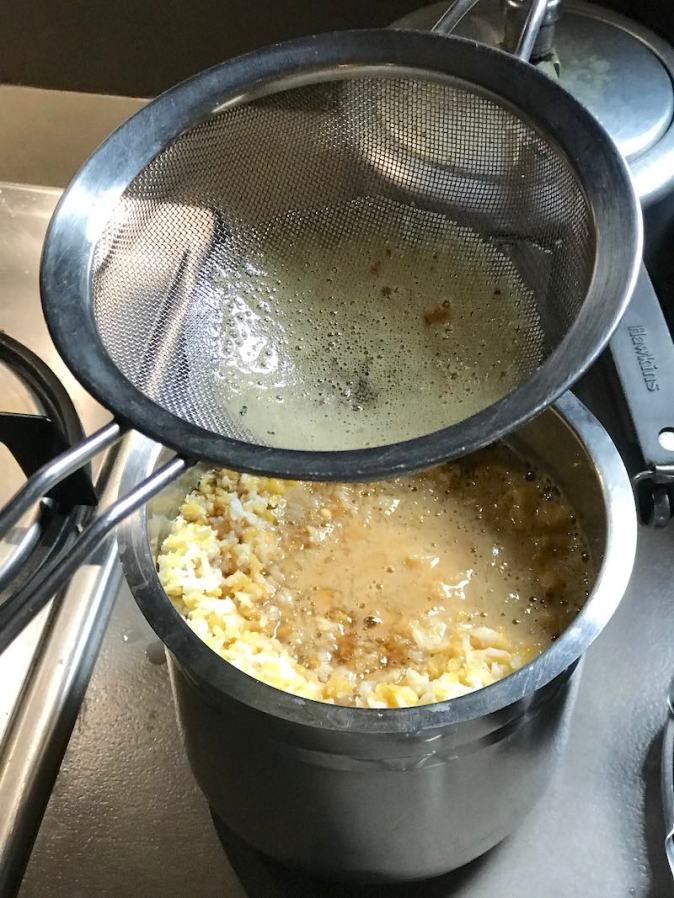
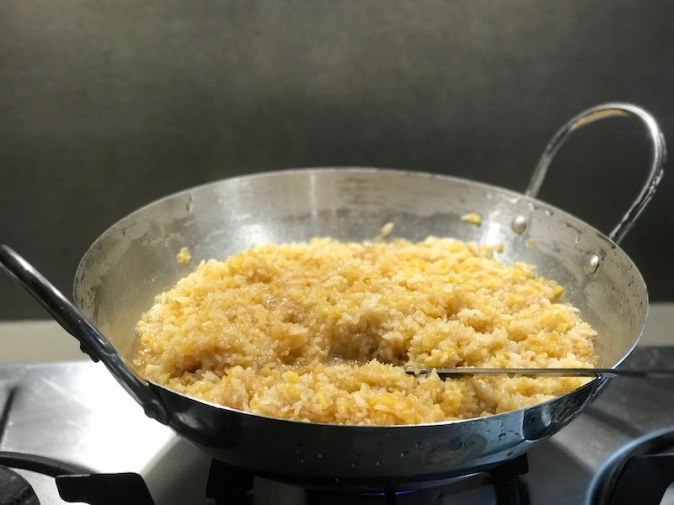
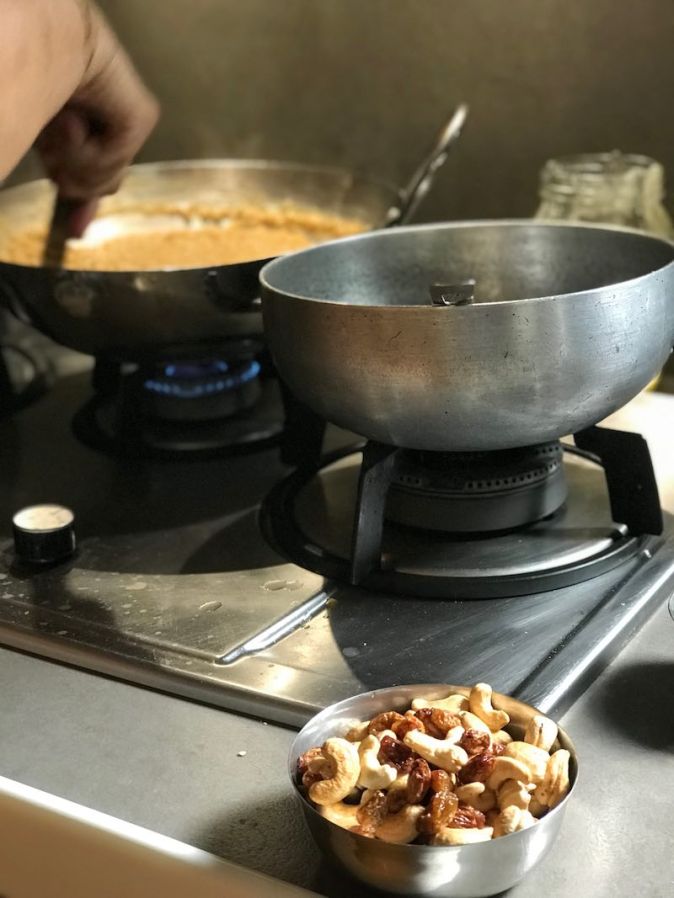
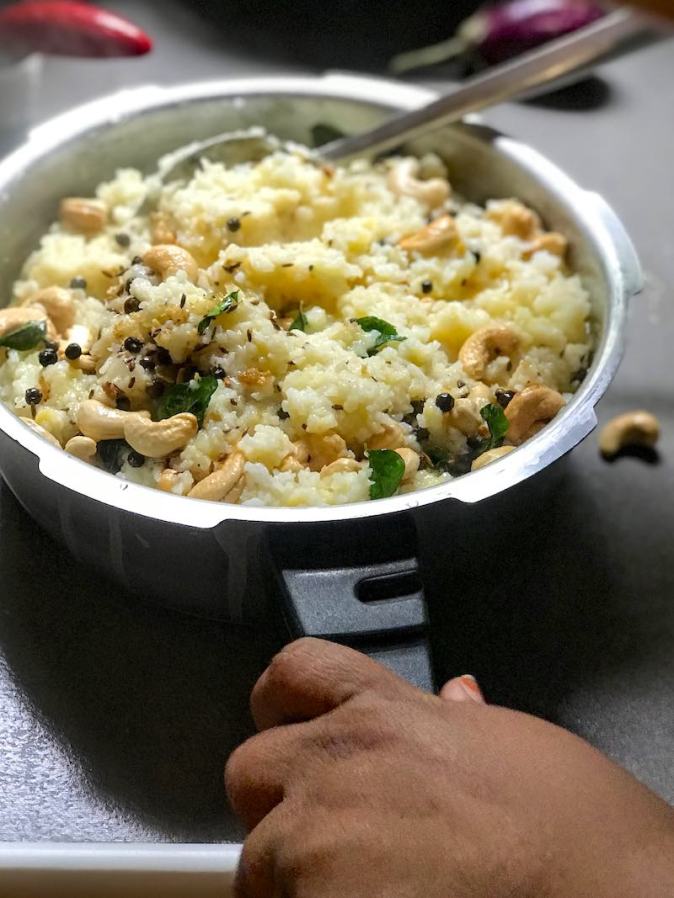
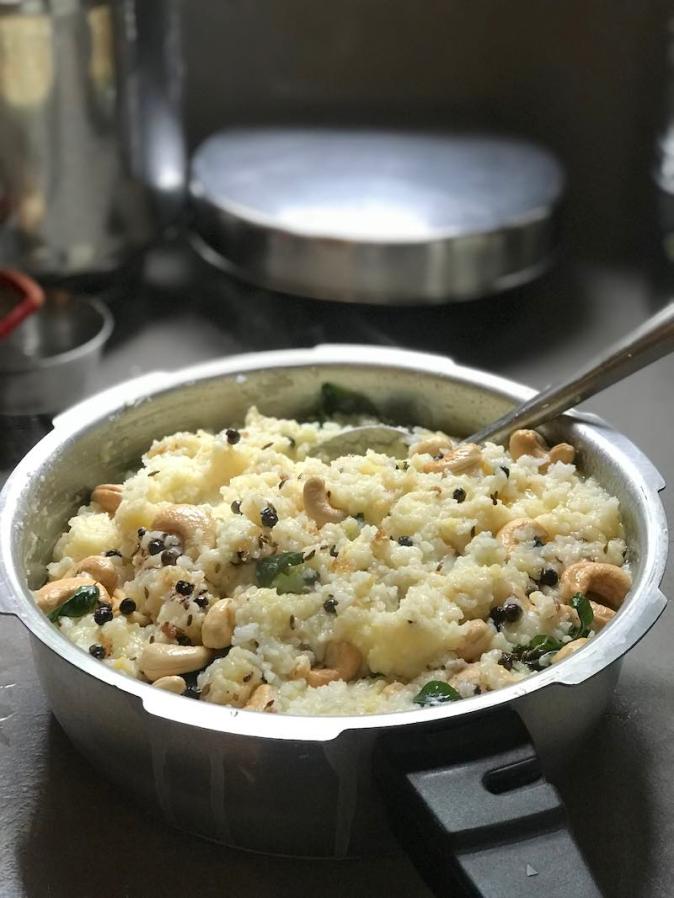
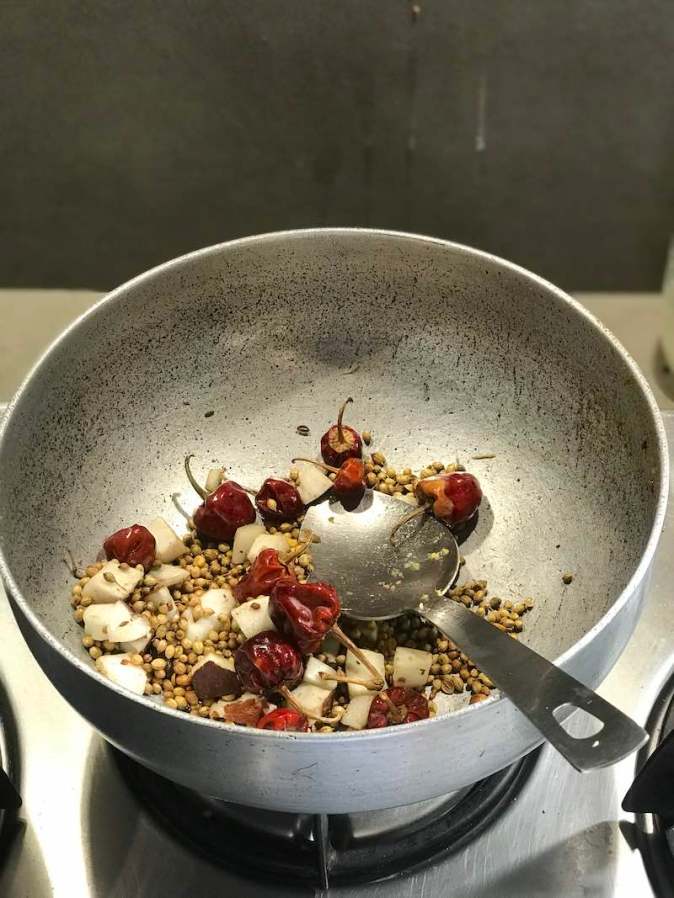
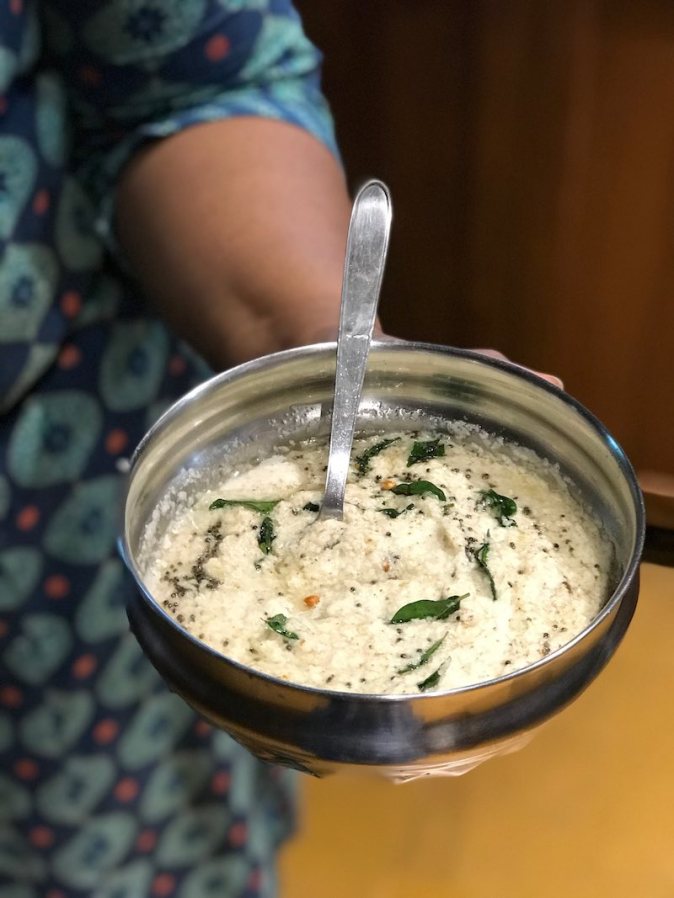
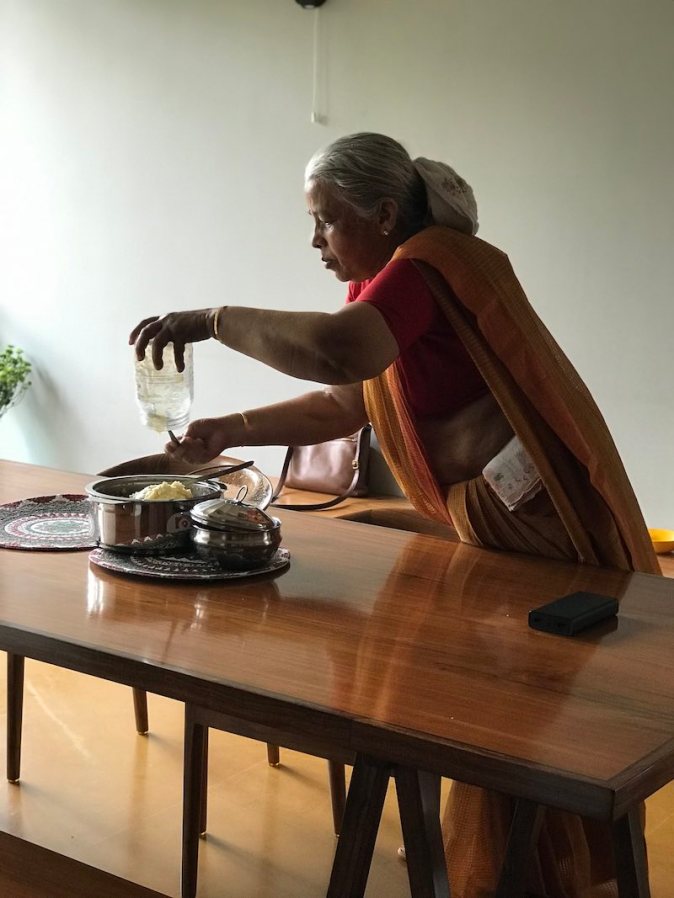
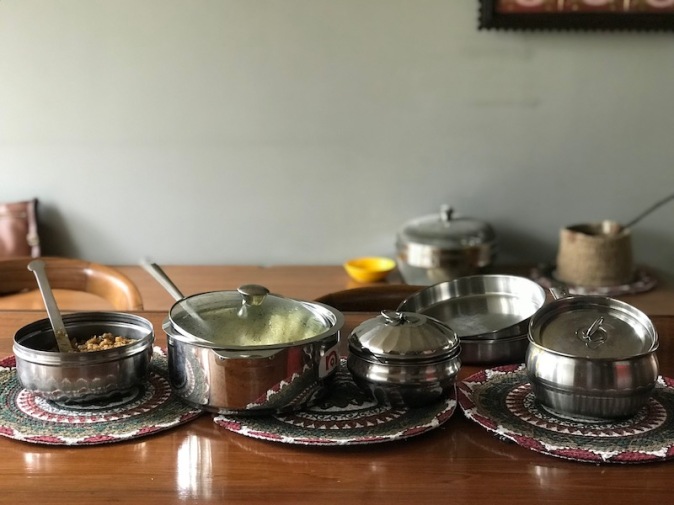
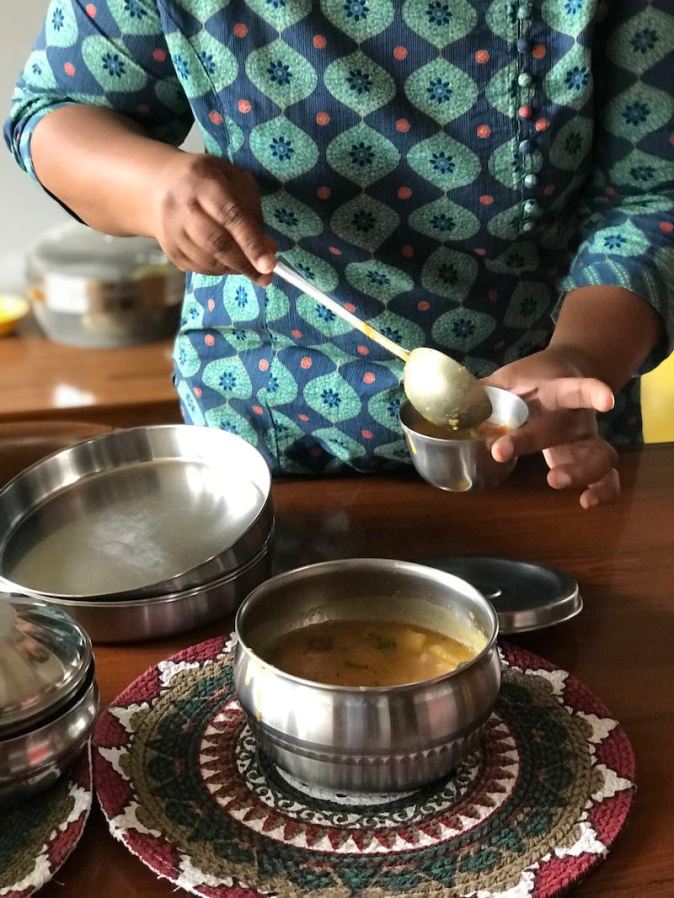
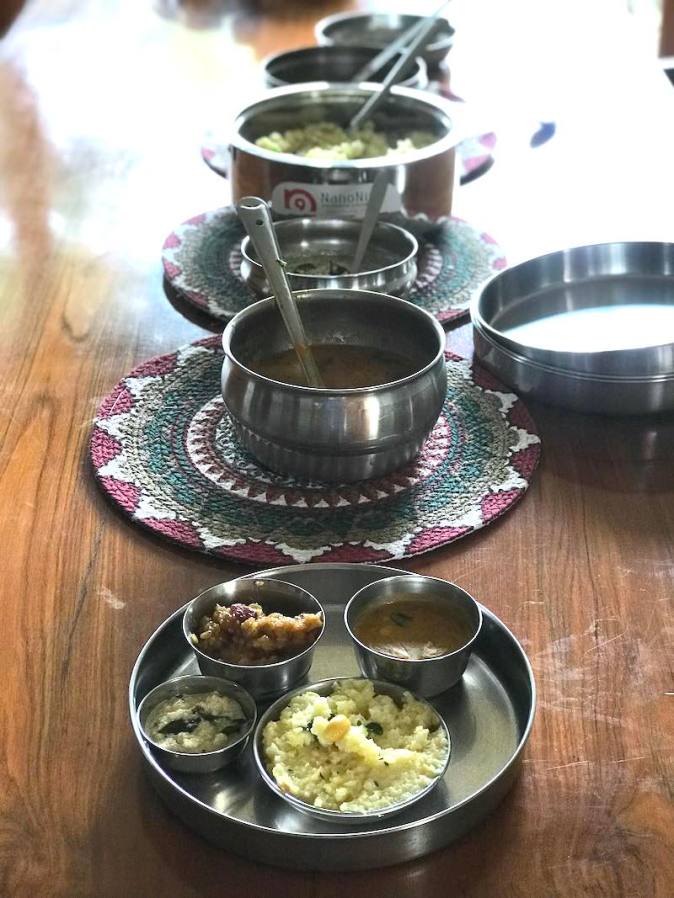
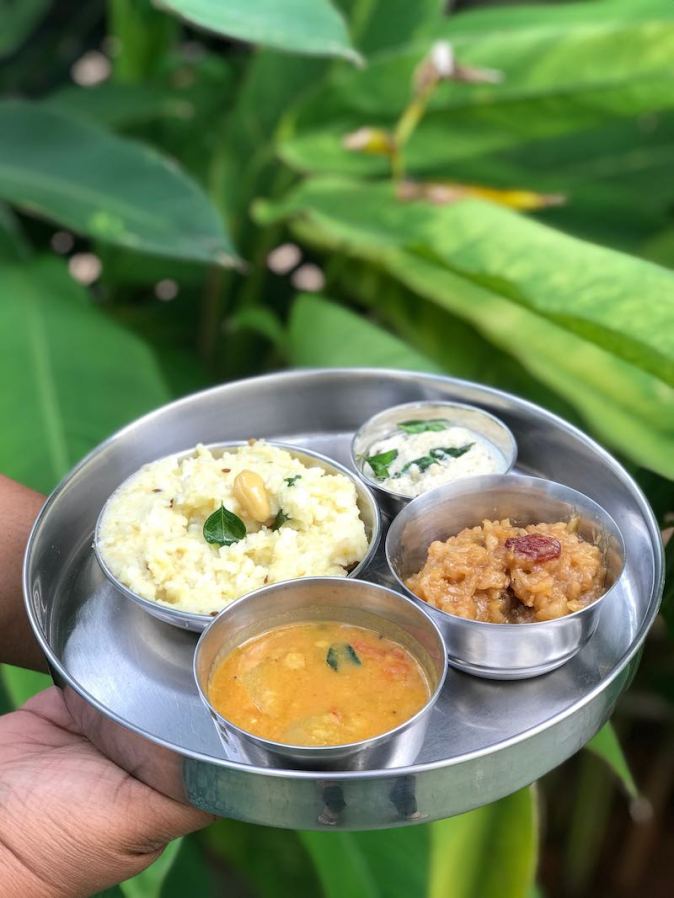
A glimpse of tradition at Subha’s
I had also wanted to witness the traditional preparation of sakkarai pongal, the overflowing of milk as the rice, dal and jaggery slow cooked on fire in a pot. Subha came from the Chettiar family and for them the celebration of Pongal as a festival was huge. She and her family celebrated Pongal in the traditional way. I had reached out to her and although I had an open invite, I missed out on the timing and the actual ceremonial preparation. The kolam, the traditional floor artwork done with rice powder in Subha’s kitchen was intricate and beautiful. There were two pots in which sakkarai pongal had been cooked ~ one by her and the other one by her husband. Subha explained the process and showed me how she had offered prasad. She led me to their beautiful puja room, which was adorned with deities created in Tanjore artwork. She served the food on banana leaf which was then placed on the traditional weaved tray that was used to clean the rice. Subha welcomed me to join them for lunch, saying that the food was very different and extremely authentic. As much as I was enticed with her lunch invite, I was too full from the breakfast. Although my heart said that Subha’s invite was too good to miss, my brain guided me elsewhere… to my home to prepare lunch as it was already noon.
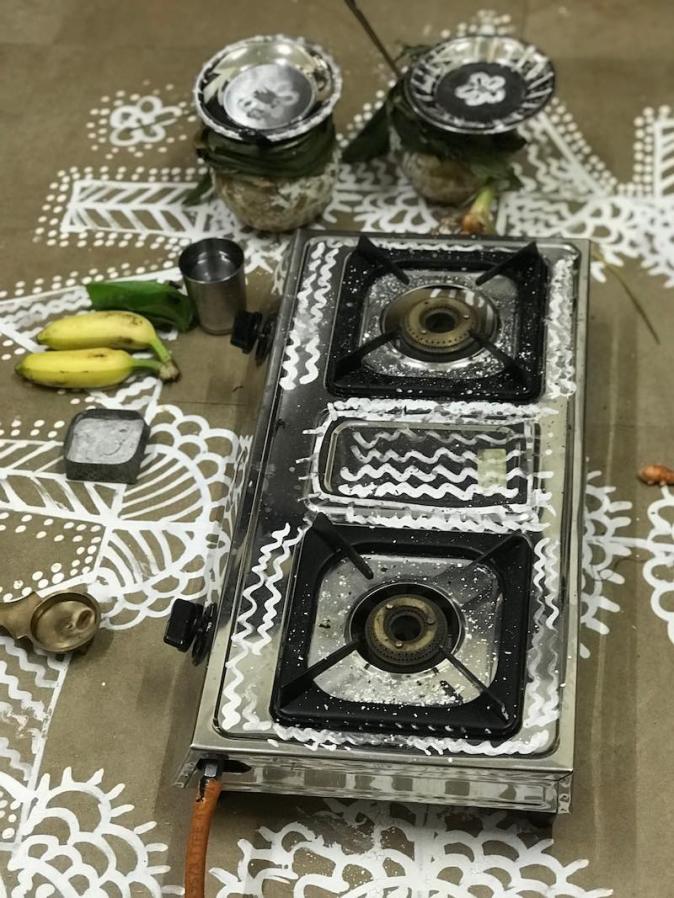
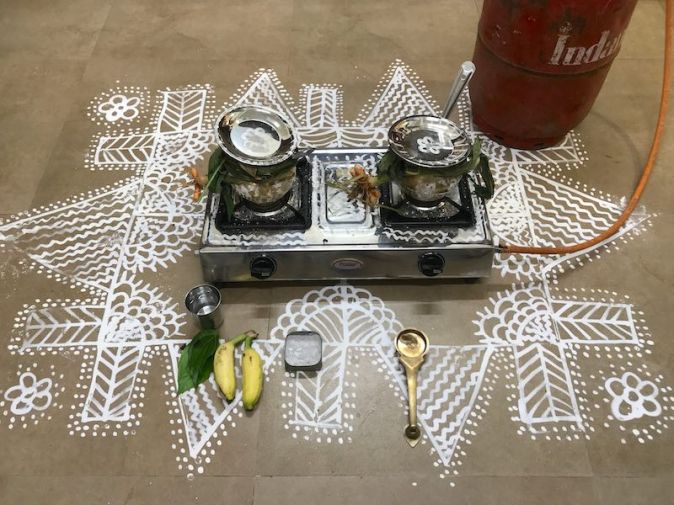
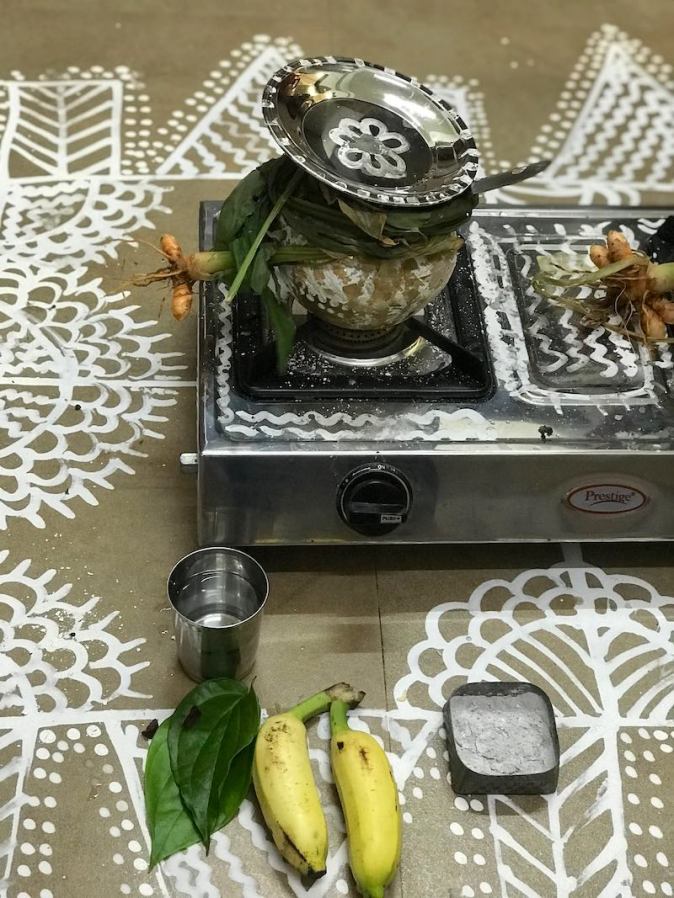
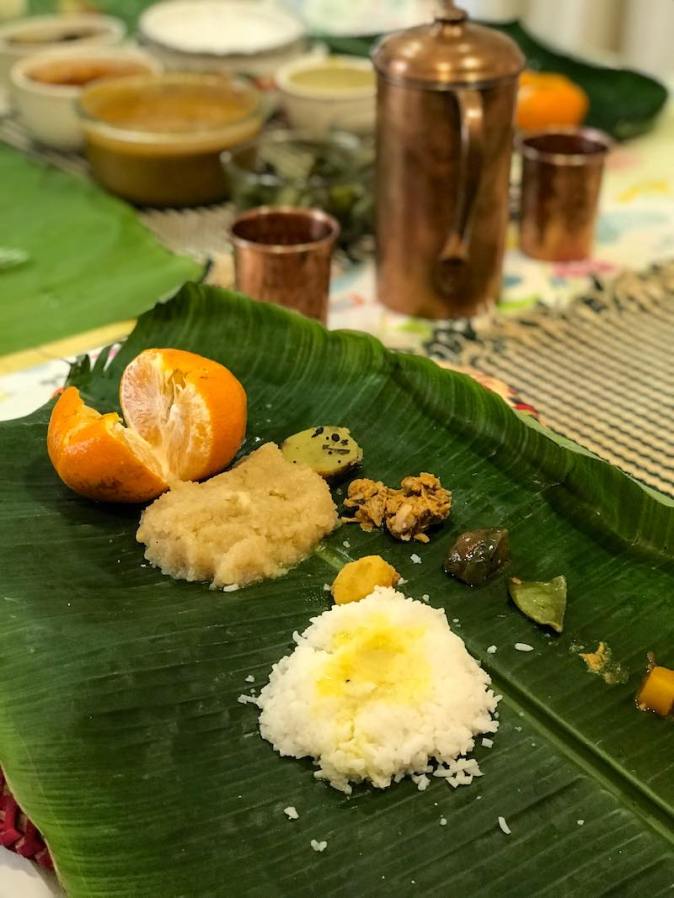
When a burst of colours hit the roads and floors
I took a small detour to the local market just outside our community gate. There were many vendors selling sugarcane plants and turmeric plants – the Pongal tradition called for decorating the entrance with both these plants, the sugarcane and turmeric representing sweetness and savoury respectively. Both in food and life, I guess! On my way back, a quick walk around the community presented me with an array of different kolams that adorned the entrance doorways. There were pulli kolams, the dotted designs as well as some colourful ones. A few #fromwhereistand shots for my Instagram were ready and I scooted home to don my apron for downloading my morning’s culinary knowledge at the earliest.
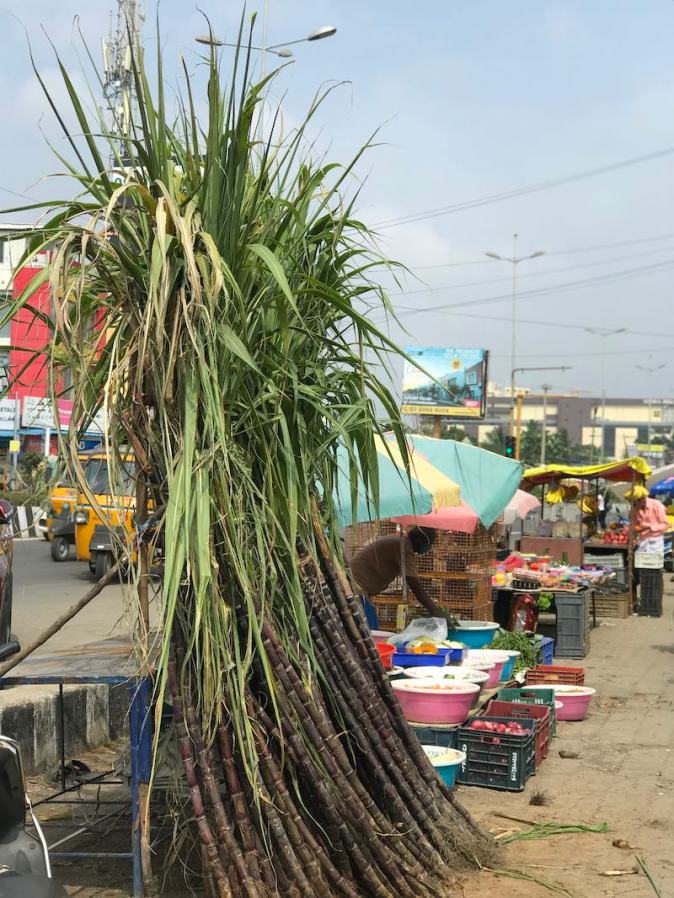
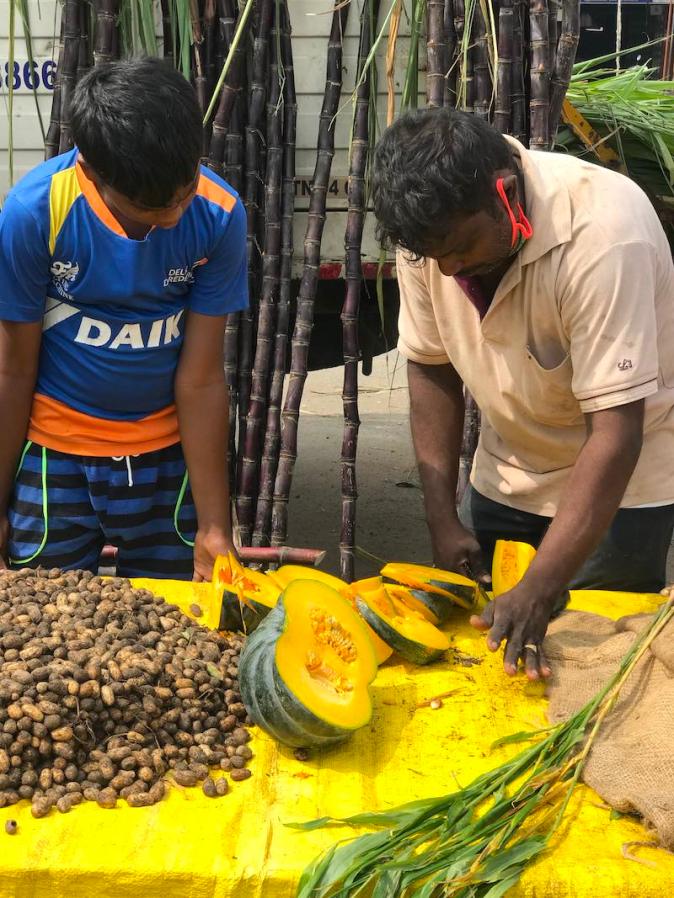
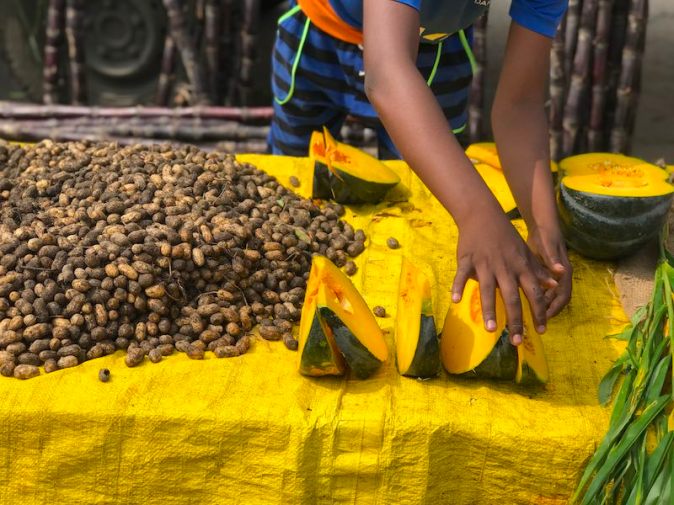
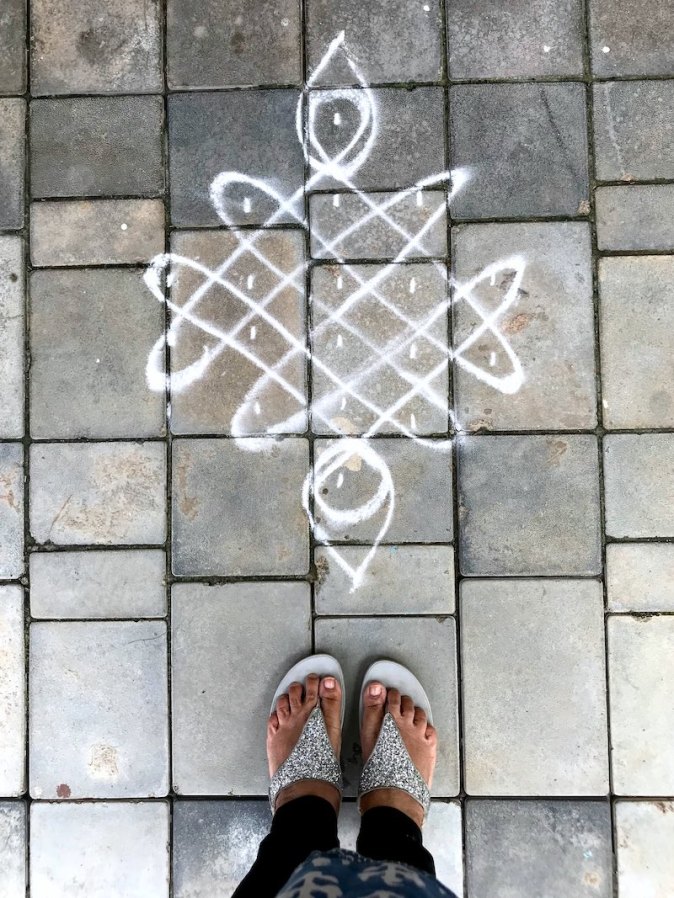
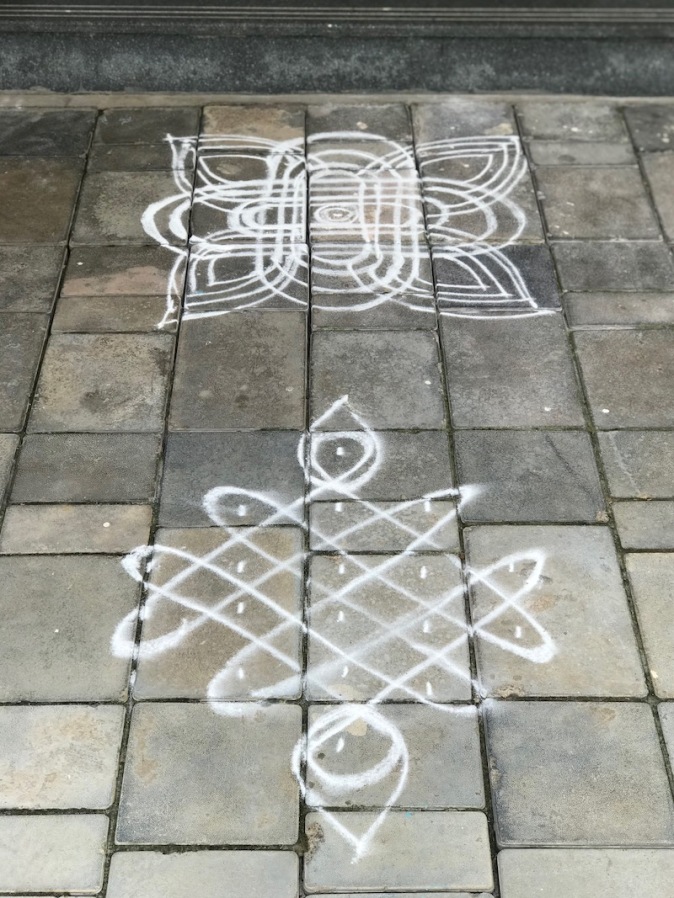
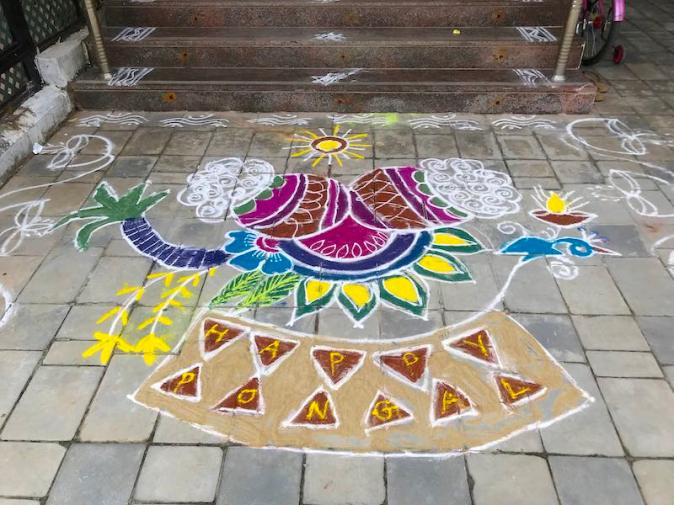
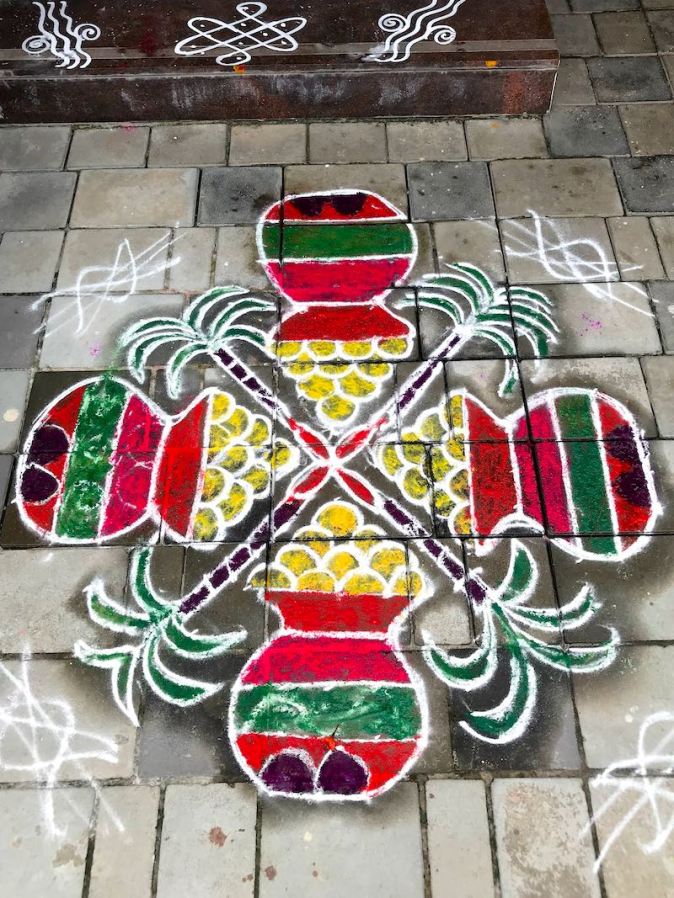
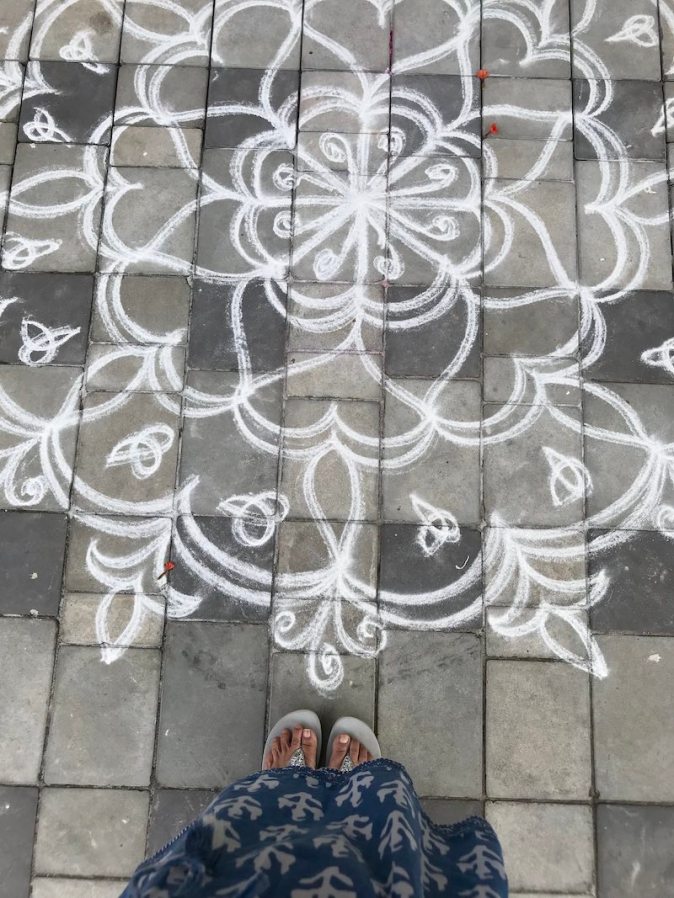
Embracing the sensory overloads of Chennai wholeheartedly
The sights of flower vendors or women wearing brightly coloured saris with fresh flowers in their hair, I have embraced all these sensory overloads wholeheartedly. The day before moving into our new home which fell on Diwali, I stopped by the road to buy some flowers. The flower lady insisted on putting some flowers on my hair too, taking out a hair clip from a secret chamber. The Universe must have heard my heart’s desire to decorate our home with flowers on a regular basis. Lady Priya, the lovely part-timer who’s come into my life works in the temple in the mornings, setting out rangolis with flower petals and manages her sister’s flower shop in the evenings. Every Monday, she brings in fresh flowers from the local wholesale market, which she offers me at cost price. Their fragrances last for a few days, specially a variety of rose called the pannir rose. Sometimes she strings the flowers into garlands or sets them on silver plates. We place them all around the home, sprinkling a bit of rose water. When she is lucky enough to catch hold of a bounty from the flower market, we decorate a large uruli with flowers and tea lights floating in water. Every time we do that, the traditional uruli, a family heirloom from Bearded Biker’s side, or our Jordanian ceramic bowl adorned with silver filigree, acquires a different dimension altogether rather than lying on the coffee table as mere showpieces. Even the Royal Jasmine, one of the many varieties of jasmine, blooming in our garden or Rangana, the geranium gracing our community gardens are subtle reflections of nature’s colourful bounty that surround us in our new home.
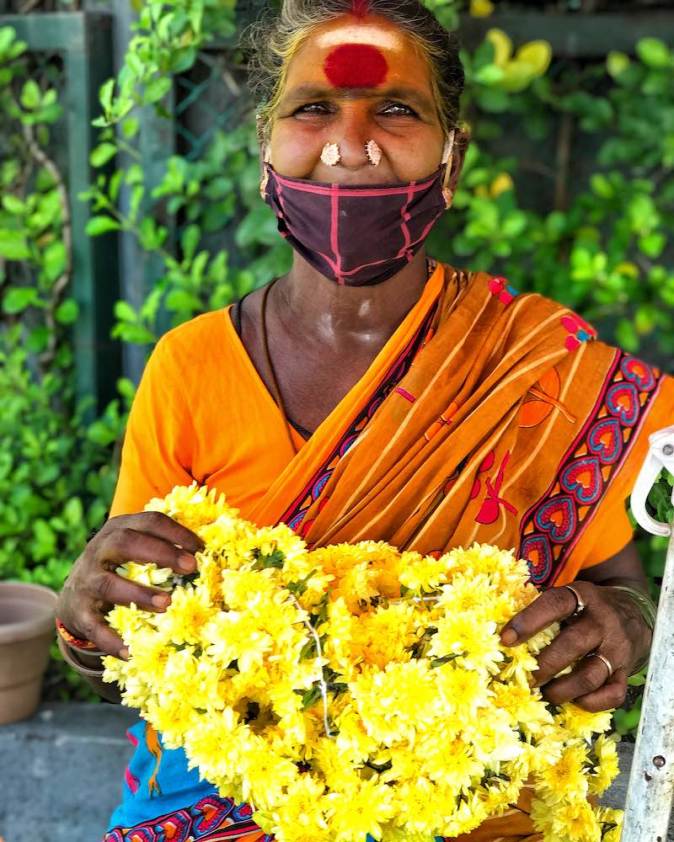
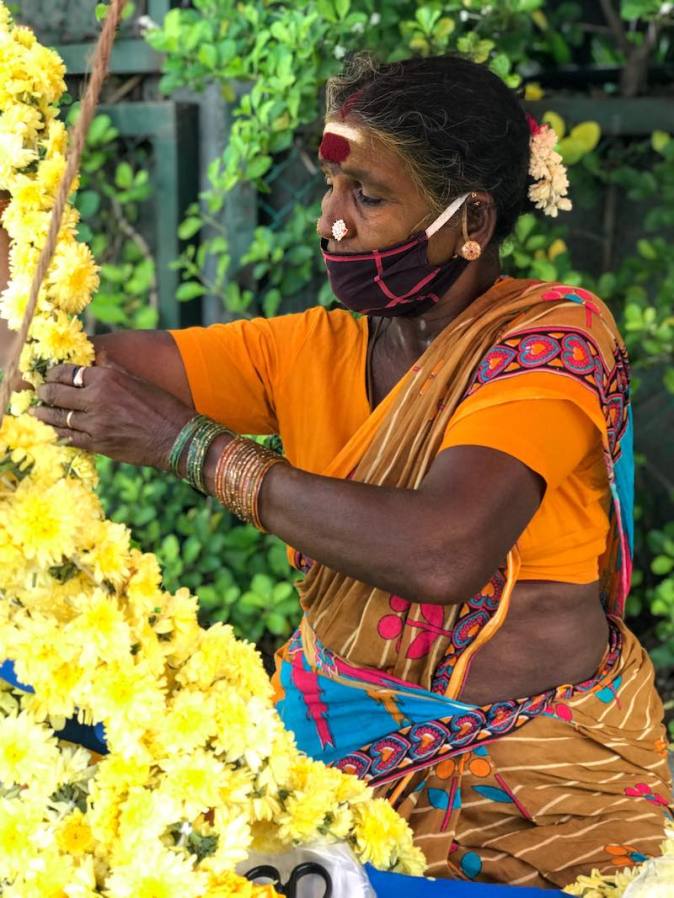
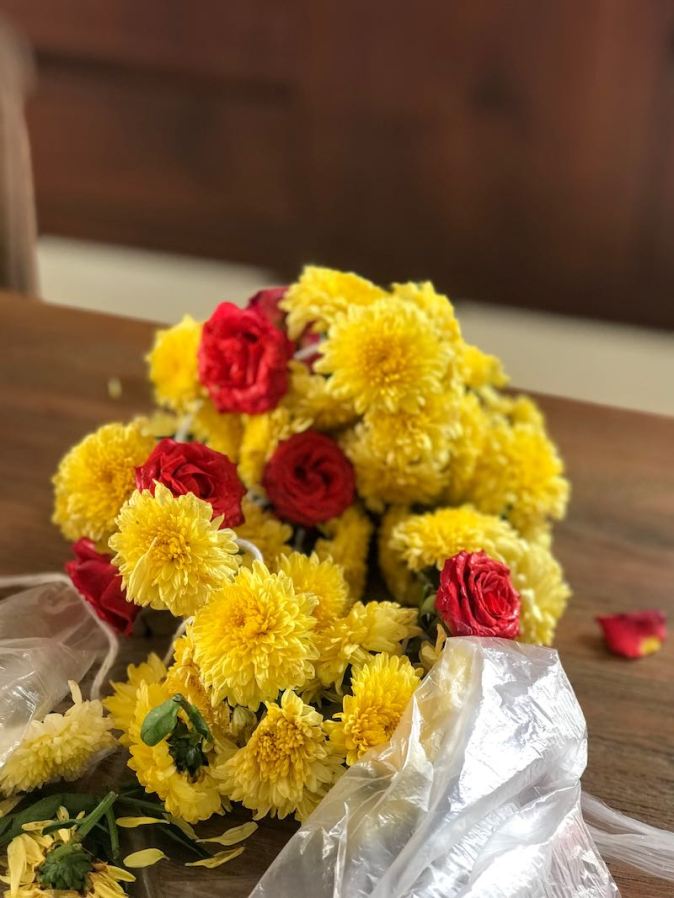
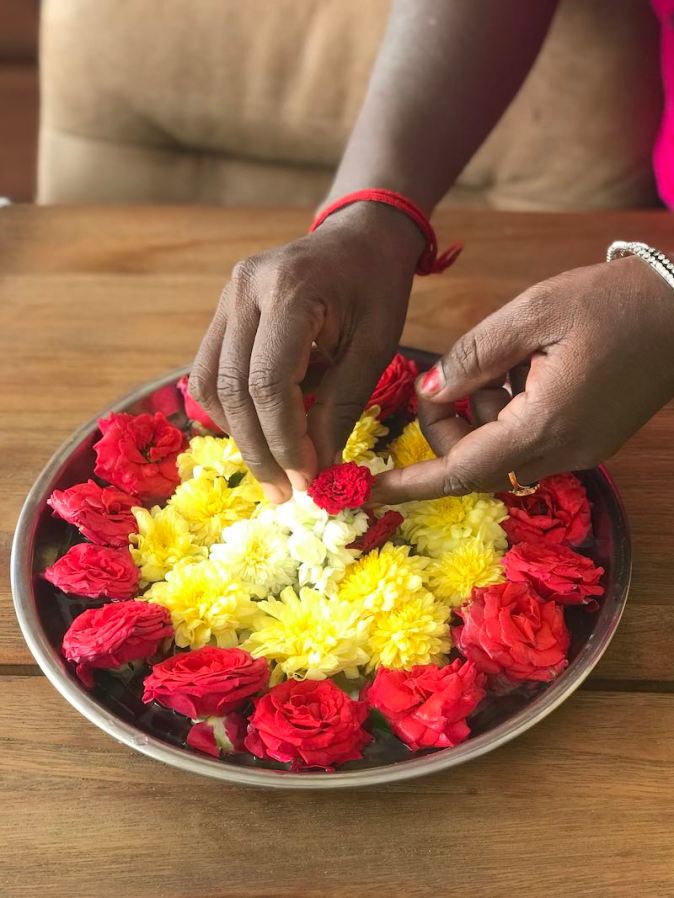
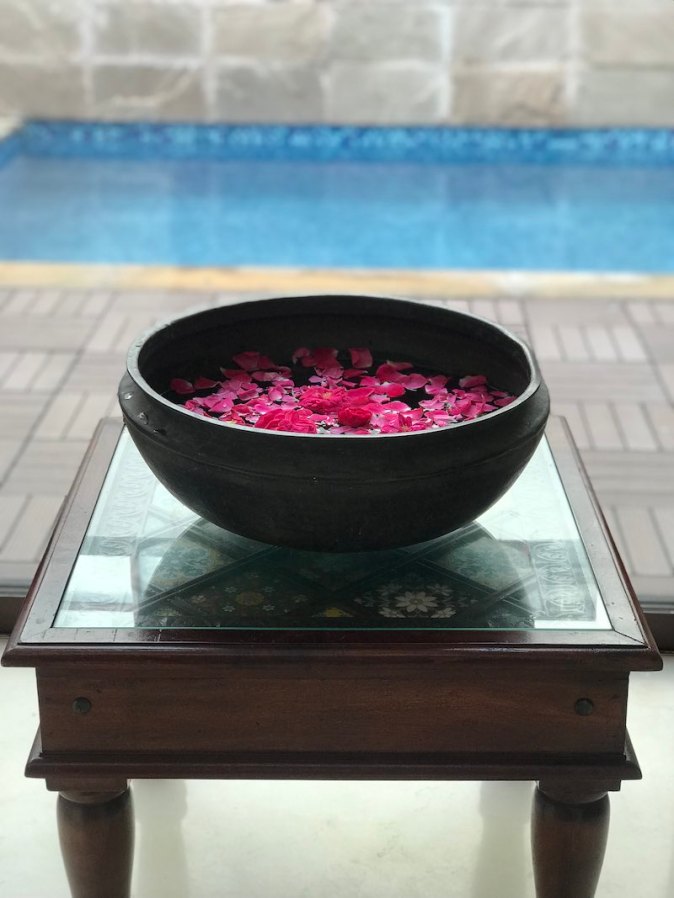
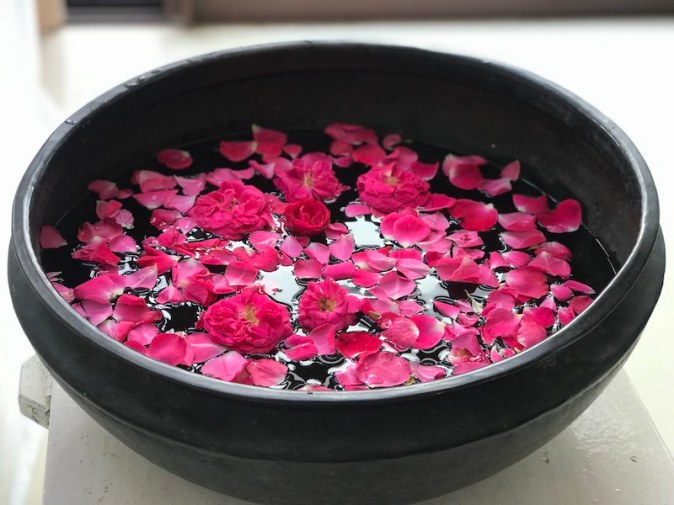
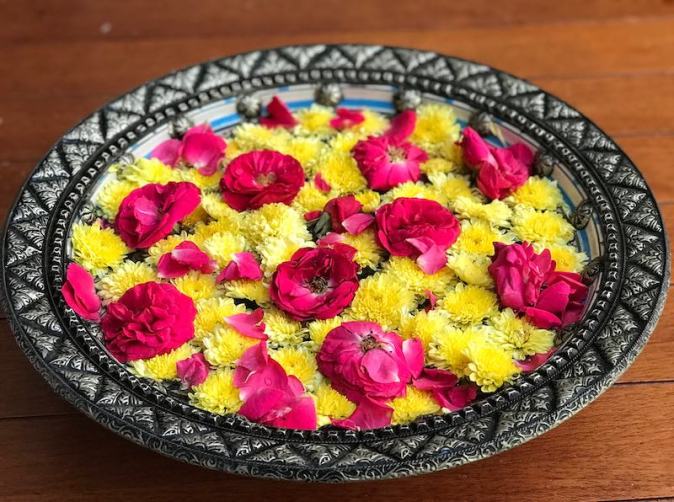
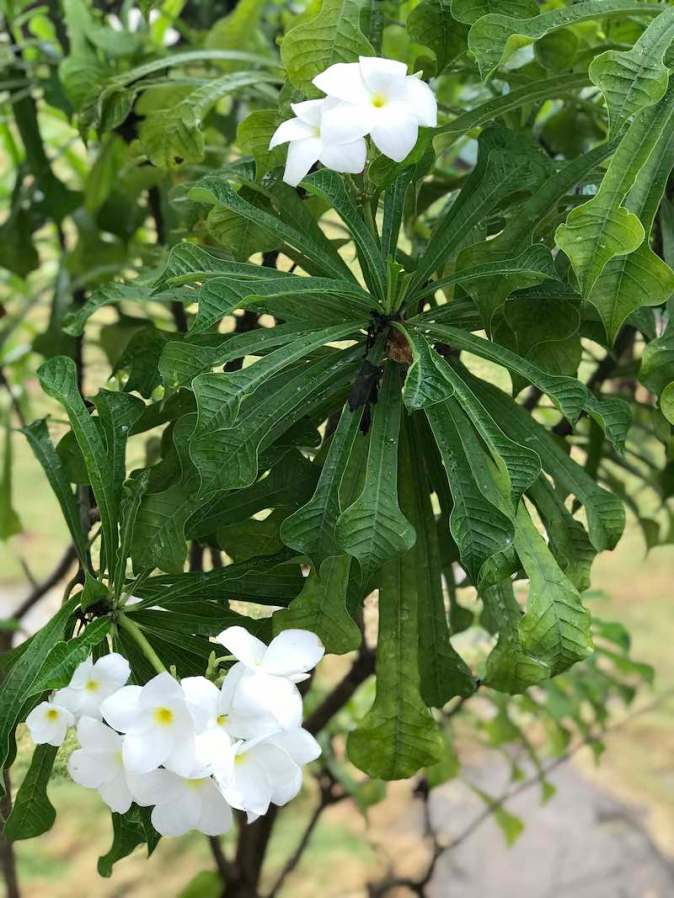
Finally at home for Sappadu
My initial plan for our lunch menu was to make the chakarai pongal at home. I had instructed our wonderful cook Lady Priya accordingly, to make a vegetable dish the day before. It was to pair with steaming hot rice and ghee and I intended to serve on banana leaf. Aunty’s parcel of sakkarai pongal acted as a boon in disguise. I cooked a quick sambar and the savoury ven pongal that I had learnt in the morning. The kāykaṟi kirēvi, or a vegetable gravy cooked in a claypot by Lady Priya, added a rustic charm to our lunch set up. Aunty’s sakkarai Pongal deserved special spotlight, hence I took out the silver spoons and bowls from my treasured collection. I also placed sugarcane sticks and turmeric plants in front of our puja room and offered a prasad of the ven pongal that I had cooked.
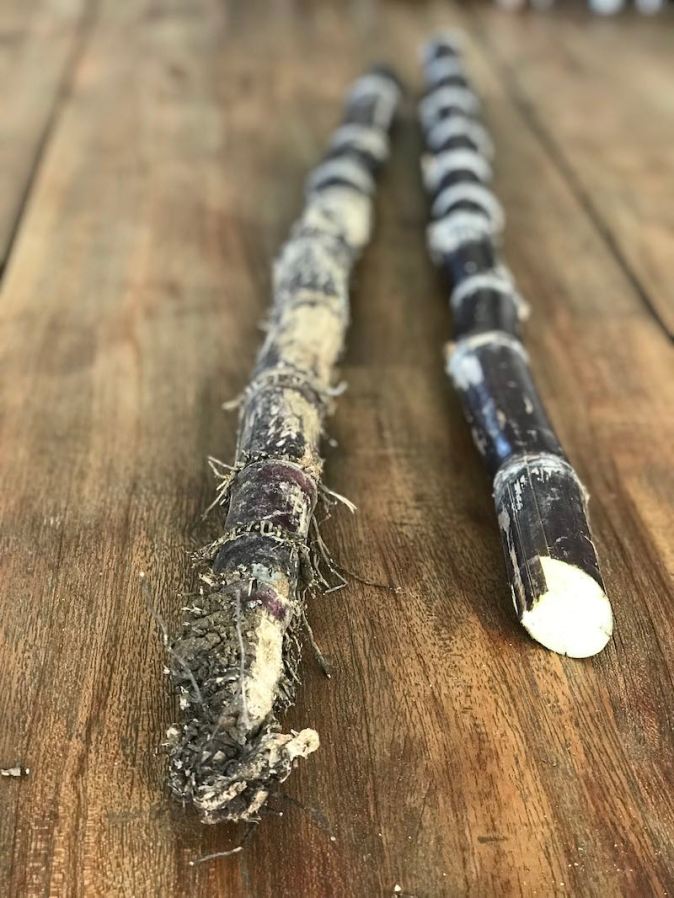
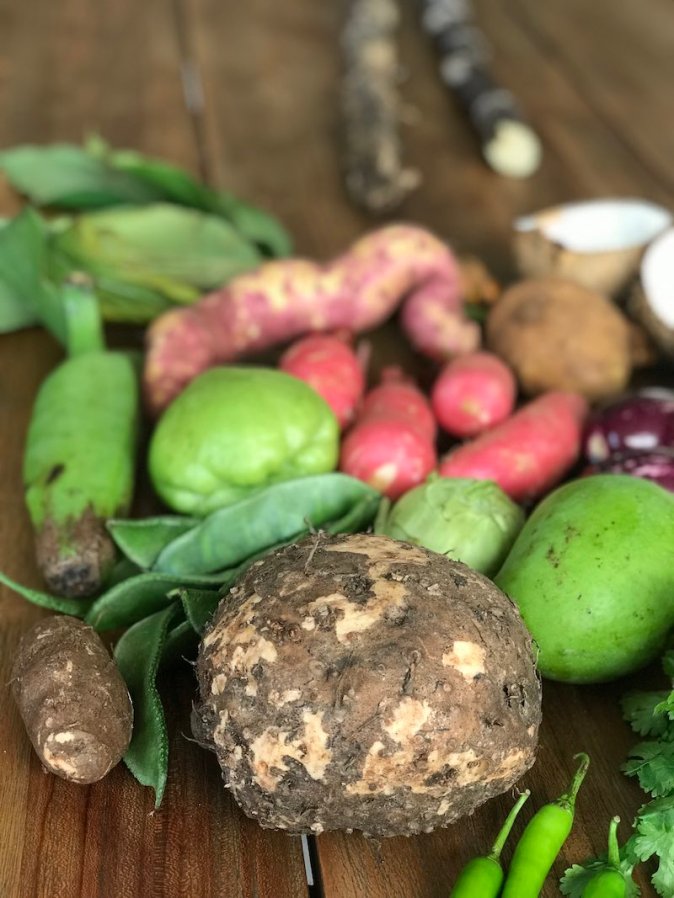
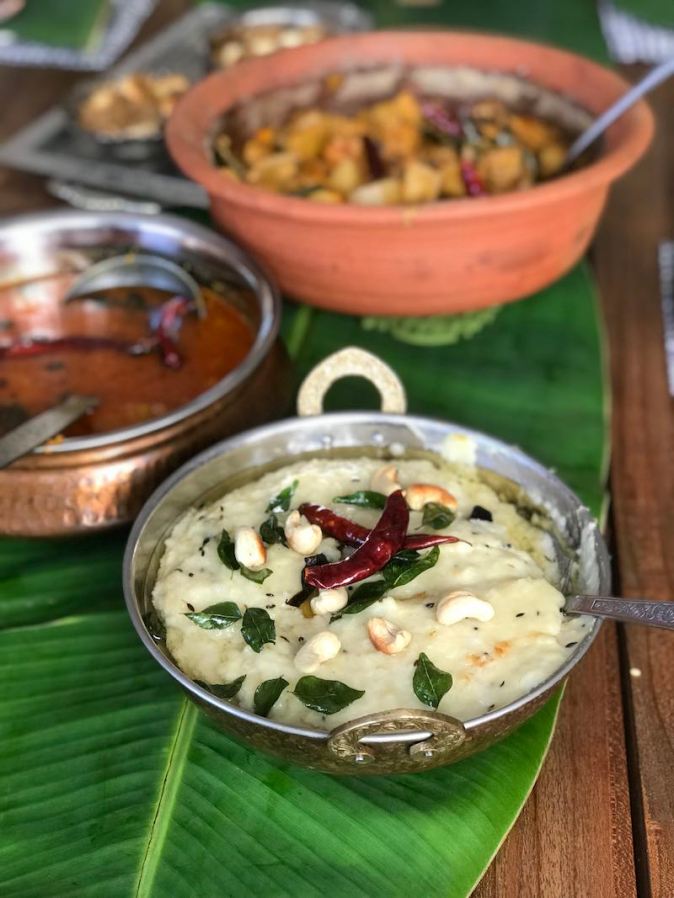
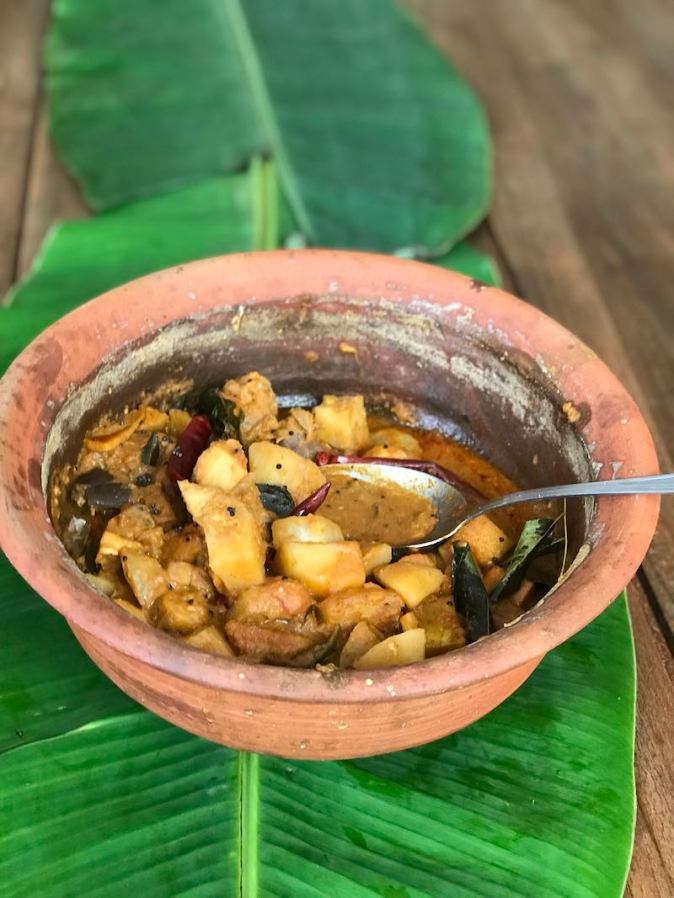
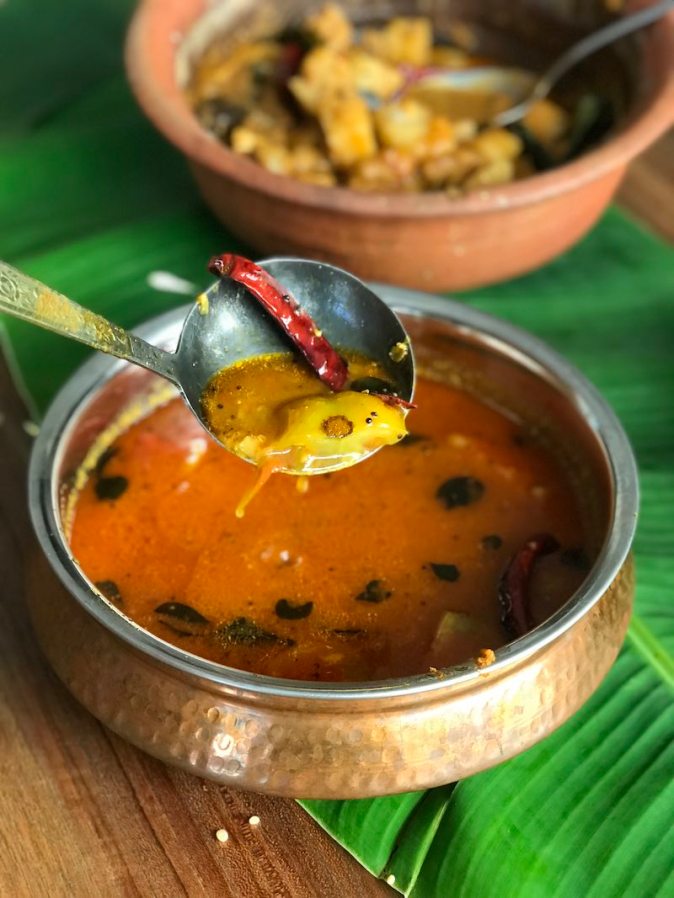
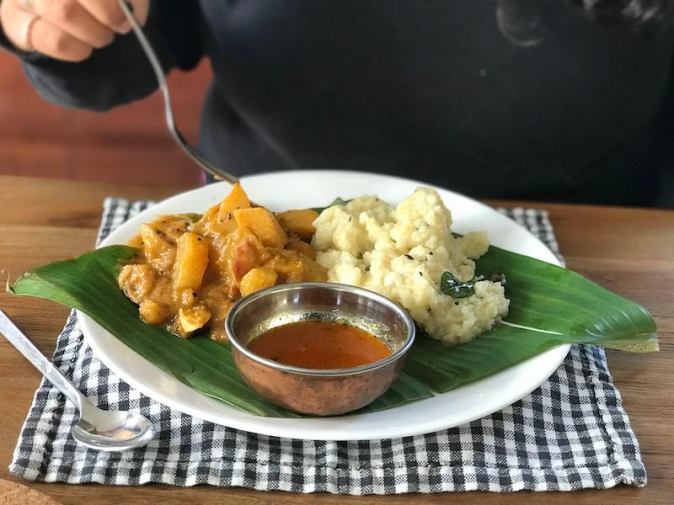
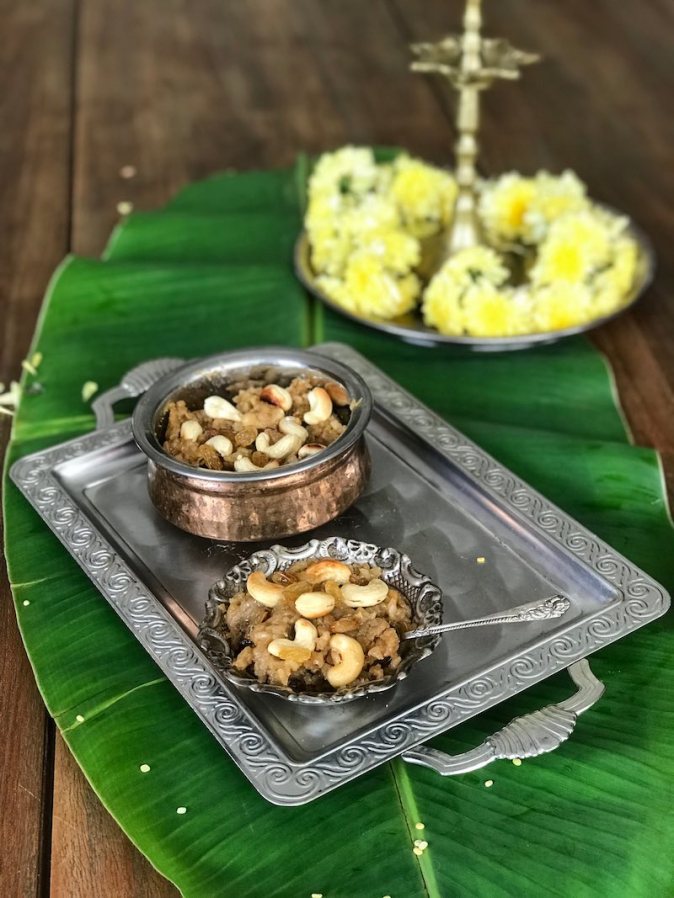
Festive celebrations mean a lot to me. I don’t believe much in rituals but I believe and respect the immense faith that brings people together. Whether it is Bijoya Dashami or Christmas, we have always celebrated them at home so that the Z-Sisters may have some special memories that will anchor them in their respective journeys in life. All these months, I have missed being with my parents and parents-in-laws, so learning to cook with Aunty and chatting with Veni’s father as we celebrated Pongal over breakfast, felt indeed very special. Pongal is celebrated over a few days, each day marking something special. I may or may not be able to learn any more new dishes, or visit another home… but this memory will last me a lifetime. May all the seasons continue to overflow with abundance and give us many reasons to smile!
Unblogging it all… Ishita
Thank you for joining me on my daily food and travel journey on Pinterest, Instagram, Facebook and Twitter!
Some posts from my recent Chennai Chapter: Finally calling Chennai home Homemade spicy Chicken 65 Chicken Chettinad cooked in a claypot
Disclaimer: This isn’t a sponsored post, nor are there any affiliated links for any of the brands that may have been mentioned in this blogpost. The subject, story, opinions and views stated here are my own and all images are from my personal album. While you enjoy reading my posts with lot of visuals, please do not use any material from these posts.
* The recipe is guided by Aunty’s home style cooking of Sakkarai Pongal, that I had jotted down.
1 cup rice (new harvest rice Pongal raw rice is available in stores. Aunty used Gobinbdobho, a special rice that Bengalis use for making payesh)Sakkarai Pongal
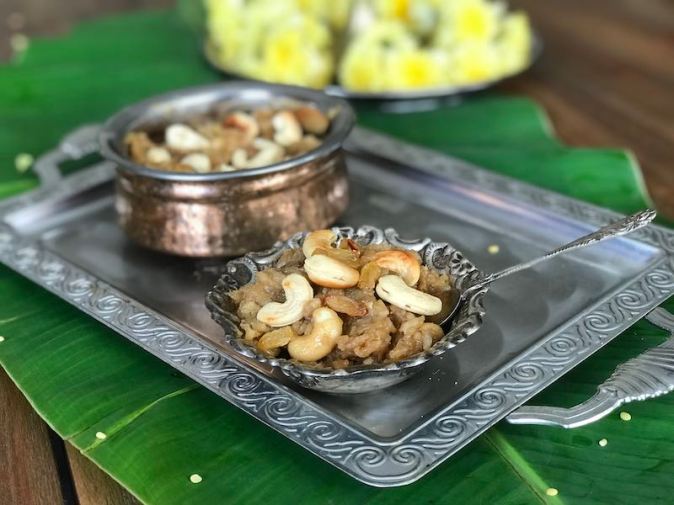
Ingredients
1 cup moong dal
¼ cup sugarcane jaggery, powdered
16 cardamoms, powdered
jaiphal or nutmeg, grated (a pinch)
edible camphor
½ cup milk
1 cup cashews
¼ cup raisins
4 tbsp gheeMethod
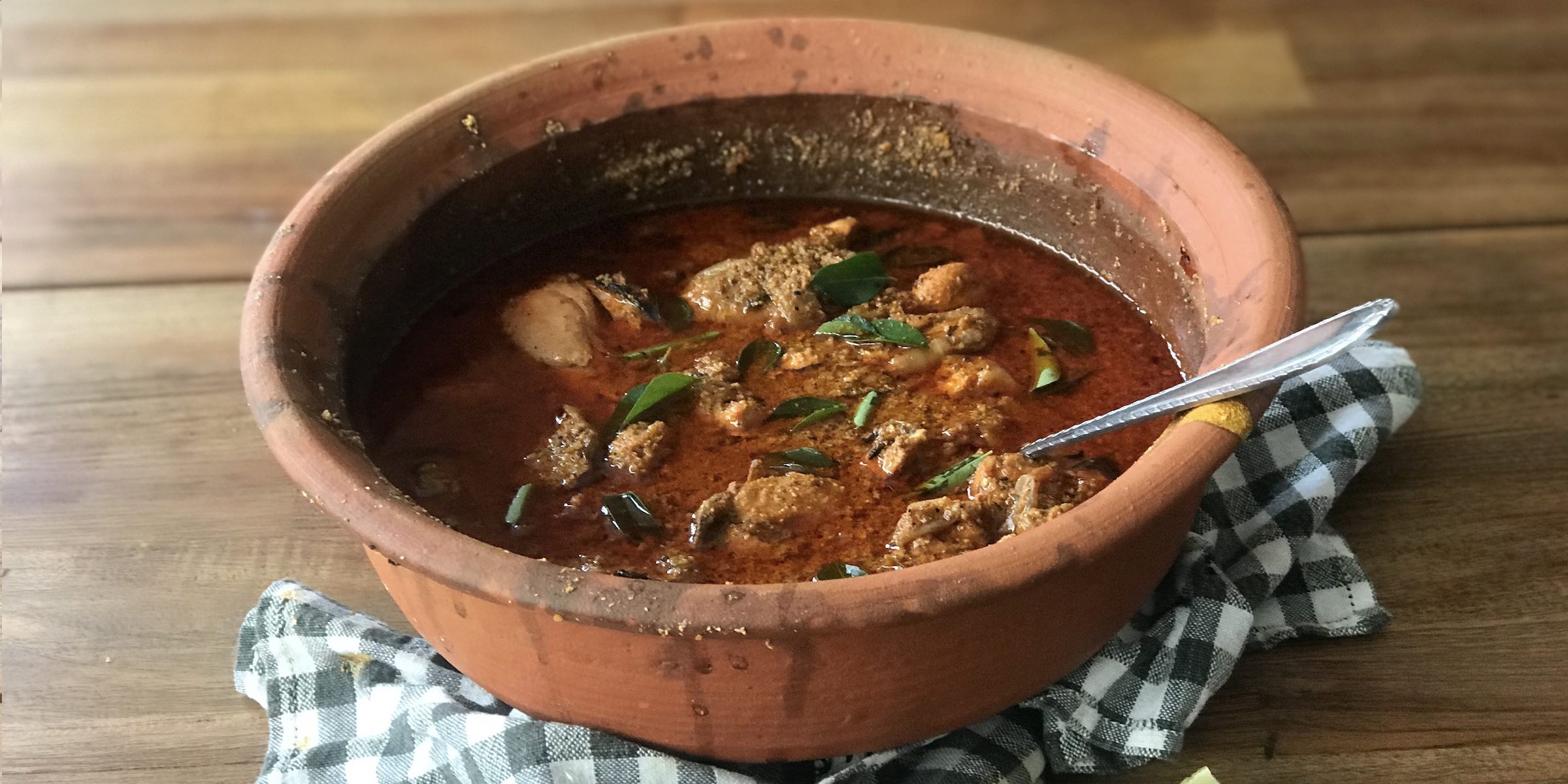
One of the most exciting ways to explore and learn more about a region, for me, is to learn to cook regional dishes. I cooked Chettinad Chicken in a claypot, an affair that I have been longing for a long time. It turned out to be delicious and I’m currently obsessing over everything about it… the aroma, the texture and the excitement of cooking in a claypot.
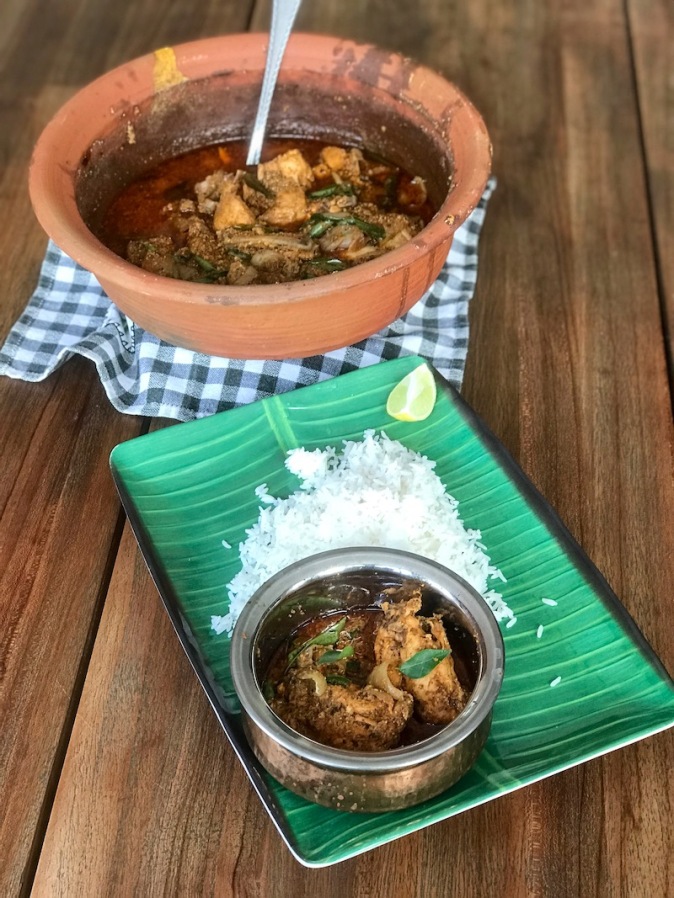
I have been gathering recipes from Tamil Nadu – the easy ones to be stirred on the weekdays while I am keeping aside the elaborate ones for the weekends. Today, I cooked Chettinad Chicken in a claypot, an affair that I have been longing for a long time, specially after a drive to ECR or East Coast Road that brought me to a shop selling potteries and earthen cookwares. I have used earthen tagine for cooking Moroccan chicken or fish in the Mediterranean style before, but this was the first time I used earthenware for Indian style of cooking that probably required tempering of spices in hot oil. I was assured by the vendor that my claypot would be safe and sound… hence I took a leap of faith and survived safe and absolutely sound!
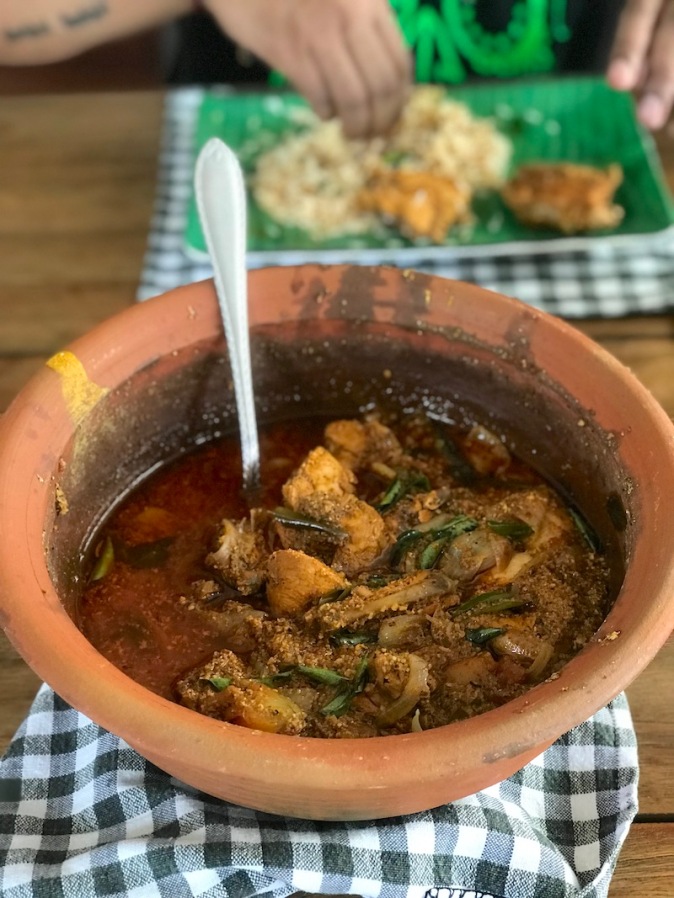

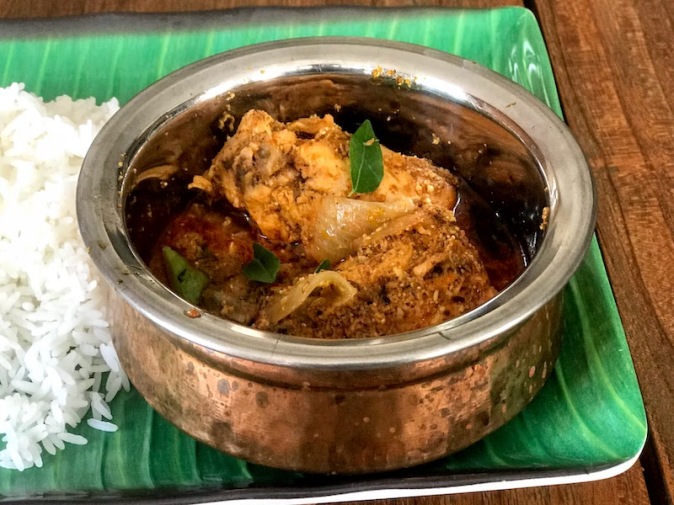
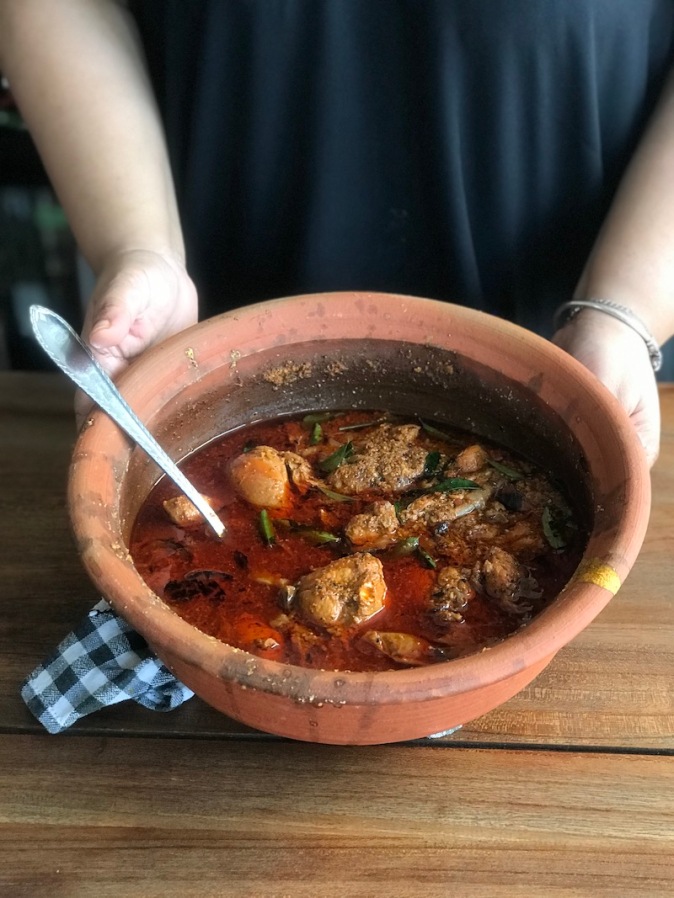
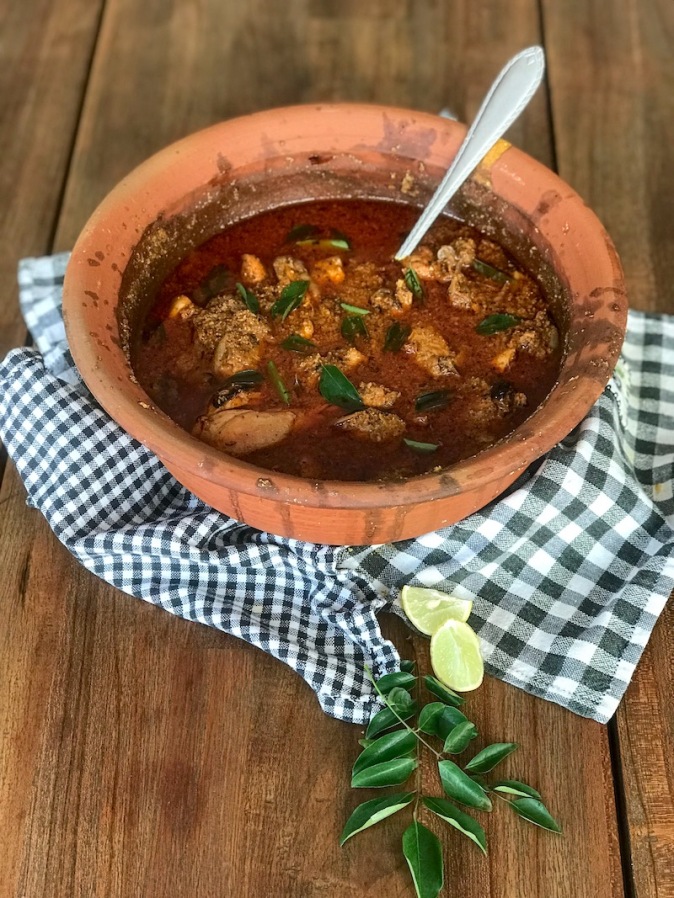
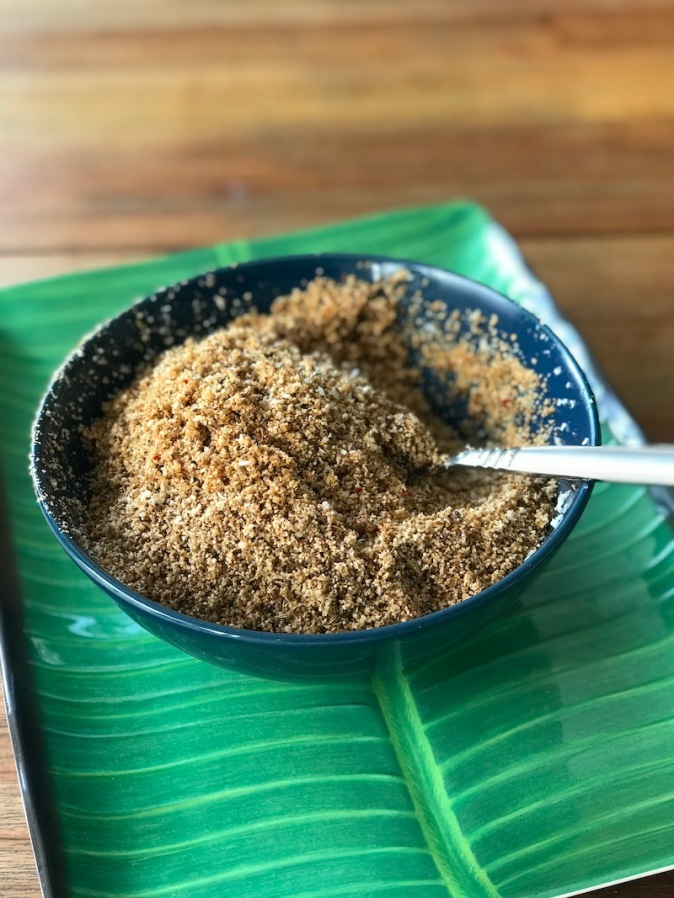
Chettinad cuisine is one of the most popular regional cuisines of Tamil Nadu. Originating from the Chettinad region, the speciality of the cuisine is the use of a variety of spices and fresh ground masalas. Although the Chettinad Chicken recipe called for roasting a lot of spices, the cooking itself was neither elaborate nor difficult. I missed out on two ingredients – the small round fat gundu red chillies and kalpasi or black stone flower. While I substituted whole red chillies for the gundu red chillies, I couldn’t substitute anything for Kalpasi. The latter is a kind of a lichen and often blended with other spices – I have added that to my next grocery list.
The WhatsApp group in our community, specially the women’s group, has become quite a lifeline for me. Yes, there is a subgroup from amidst the residents’ group, much like a lot of WhatsApp groups that seem to overwhelm us in our daily lives. Various tips poured in when I asked about Kalpasi and I learnt that it was a flavouring ingredient that added aroma to rice variety and curries. A bit of it was enough to lend flavour. The stone flower is often dry roasted with other spices like cinnamon, cardamom, cloves, fennel seeds, coriander, red chillies, pepper corns and then powdered to flavour curries. Some used it sparingly in its whole form for making coconut based kurmas and fried it along with the onions. Too much Kalpasi could make a dish bitter.
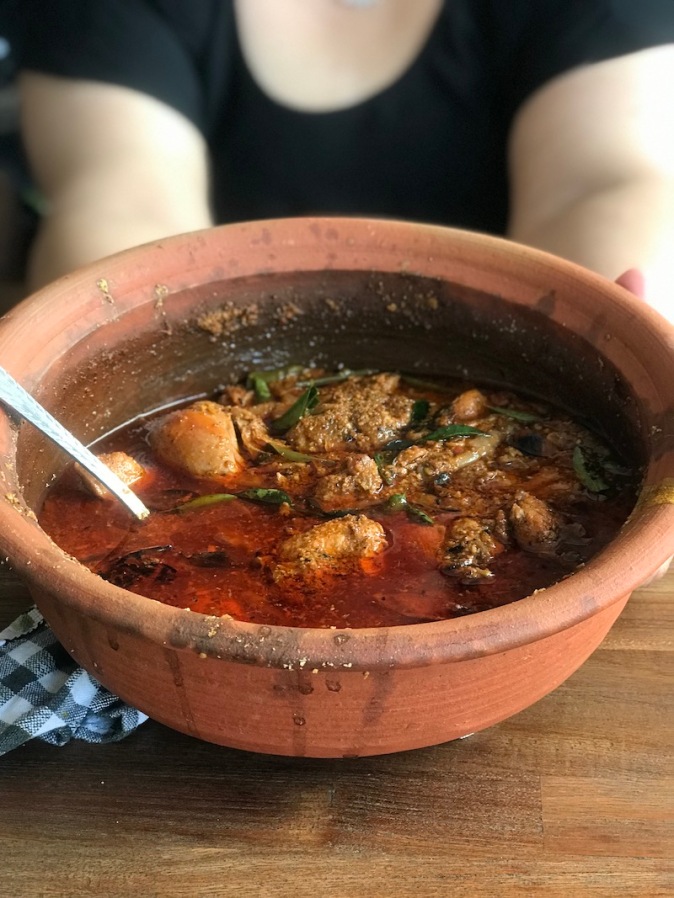
Food cooked in an unglazed claypot gives out a strong earthen aroma and the food retains all the oil and moisture. Moreover, since food can only be slow cooked on slow to medium fire, do remember the adage … patience is a virtue.
I poured myself steaming hot rice and I couldn’t stop obsessing over the Chettinad Chicken that I had cooked for lunch. I am sanguine it was the same for the Z-Sisters and the Bearded Biker. That… when humbly said!
Unblogging it all… Ishita
Thank you for joining me on my daily food and travel journey on Pinterest, Instagram, Facebook and Twitter!
Some spicy recipes that you may like: Homemade spicy Chicken 65 Stuffed Chilli Spring Rolls Thai Papaya Salad
Disclaimer: This isn’t a sponsored post, nor are there any affiliated links for any of the brands that may have been mentioned in this blogpost. The subject, story, opinions and views stated here are my own and all images are from my personal album. While you enjoy reading my posts with lot of visuals, please do not use any material from these posts.
* The recipe shared in my blog is guided by our wonderful cook who follows home style cooking and the recipe has been tried in our kitchen.
1 kg chicken with bones, de-skinned and cut into medium sized piecesChettinad Chicken
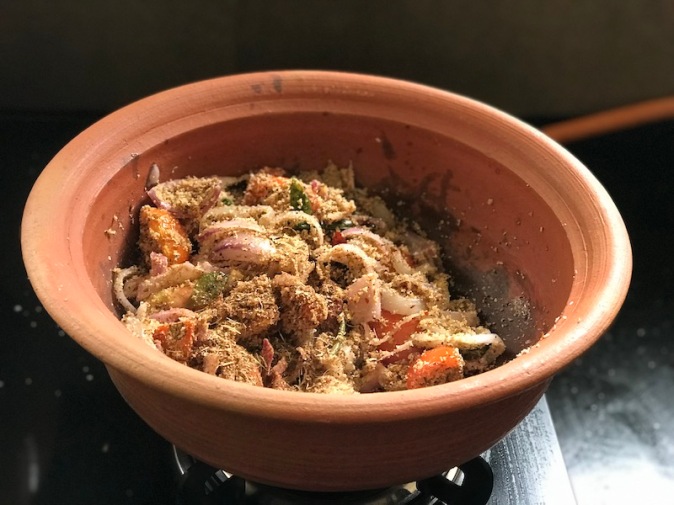
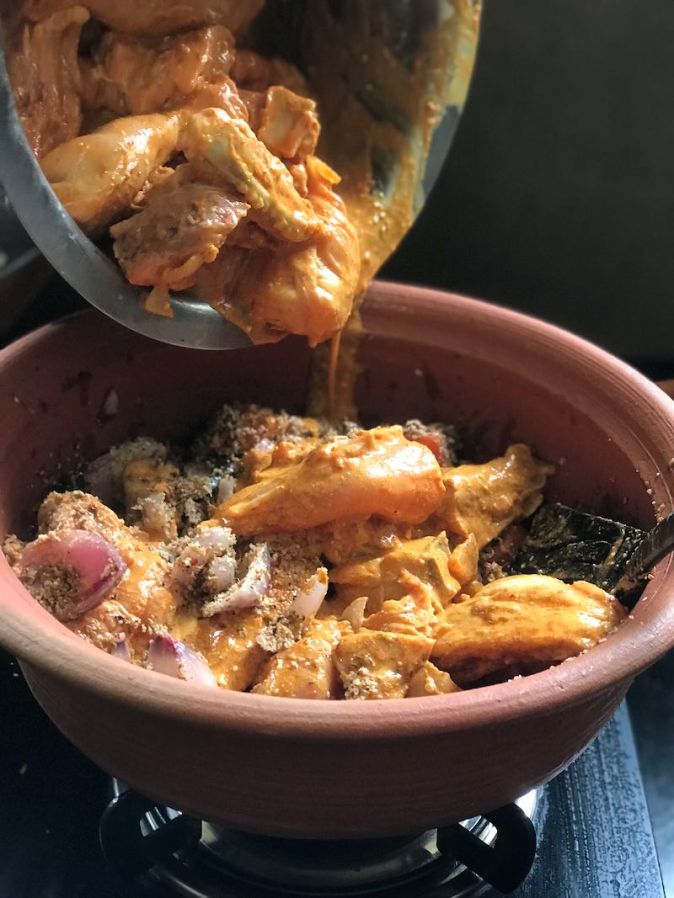
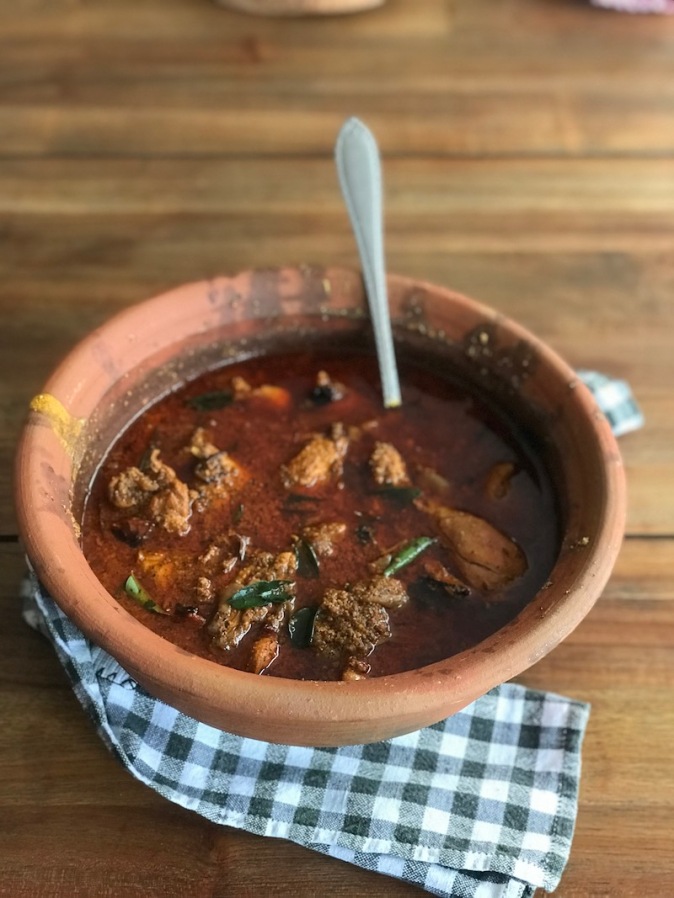
Ingredients
8 Indian shallots, thinly sliced
4 medium sized tomatoes, cubed
4 tbsp poppy seeds
4 tbsp fennel seeds
2 tbsp cumin seeds
2 tbsp coriander seeds
1 tbsp turmeric powder
2 two-inch cinnamon sticks
8 pieces green cardamoms
8 pieces cloves
2 star anise
8 dry red chillies
2 tbsp ginger-garlic paste
1 cup fresh grated coconut
1 lime
20 fresh curry leaves
½ cup vinegar
2 tbsp white oil
salt as per tasteMethod
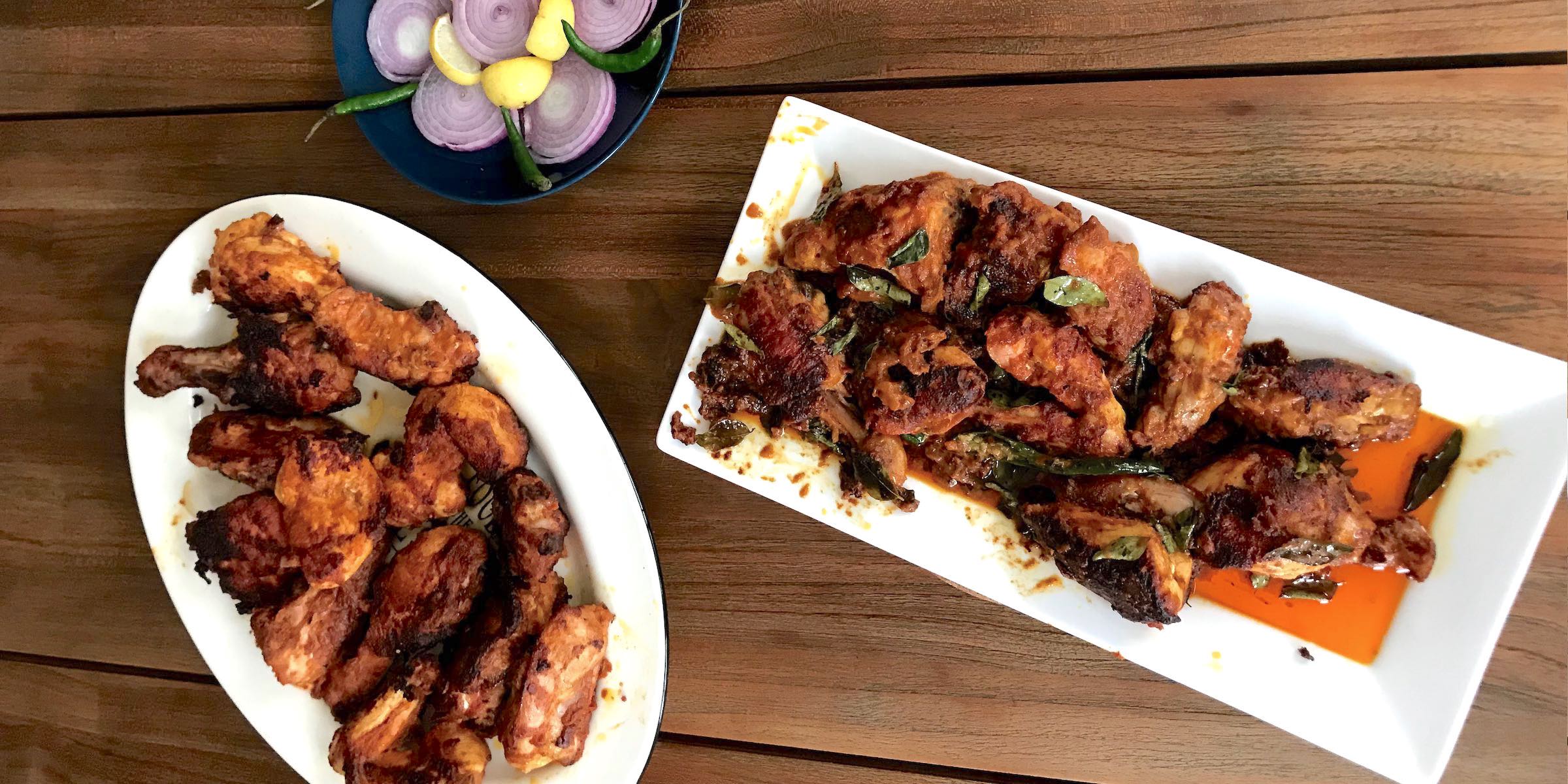
Getting into the Chennai groove with a homemade spicy Chicken 65 for today’s lunch. I made two variations of it – with and without gravy. This is probably the closest any of my blogposts have gotten real-time!
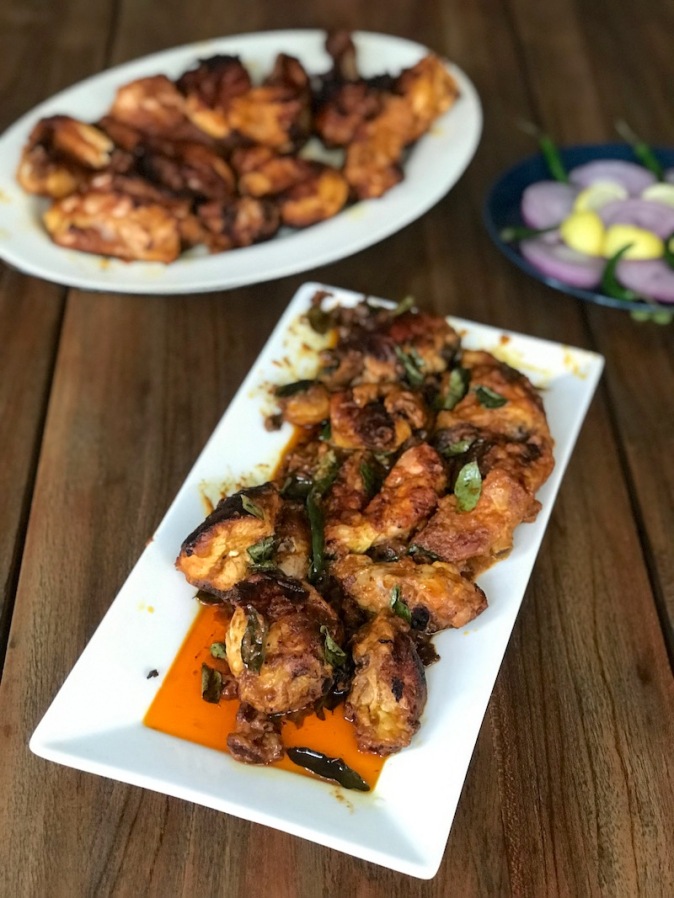
My last blogpost was kind of very long as I belted my heart out into how we have settled down in Chennai. The behind-the-scenes activities started in April 2020 and we moved into our home in Diwali. We finally felt at home by New Year’s eve… all of these culminating in a long emotional blogpost. The header image showed a meal that I had cooked a few days earlier, in the manner of a bhog... Khichuri, a dish made with rice and lentils, accompanied by the humble aloo bhaja / fried potato, begun bhaja / fried eggplant and a sweet tomator chutney.
Big Z vented on Facebook… because the header image captured a lunch that wasn’t real time. ‘This is deception and clickbait Ma. This wasn’t for lunch or dinner today
‘. I responded back, ‘where have I ever written that this was for today?’ The conversation got me thinking… what about an almost real time blogpost?
While it is easier to go real time on Instagram and instastories, my style of blogposts required a bit of tending and time. So today’s post is dedicated to her. It is also a loving retaliation from me defending my dignity on social media and putting myself to the challenge to blog about today’s lunch before we hit tea time. Instagram and instastories included! This was today’s lunch – my rendition of the legendary regional favourite – Chicken 65. I made two variations of it, one without gravy that Lil Z liked. The other one had a slight gravy as the Bearded Biker and Big Z preferred their meals with rice. Lil Z and I preferred rotis, unless it’s a fried rice, pulao or biryani. A simple onion salad with a squeeze of lime and green chillies by the side … and that was it. I could hear Big Z scream, ‘Ma, this isn’t salad!’ Then again, we hardly have salads in traditional Indian cuisine excepting a countable few regional salads here and there. Would you agree?
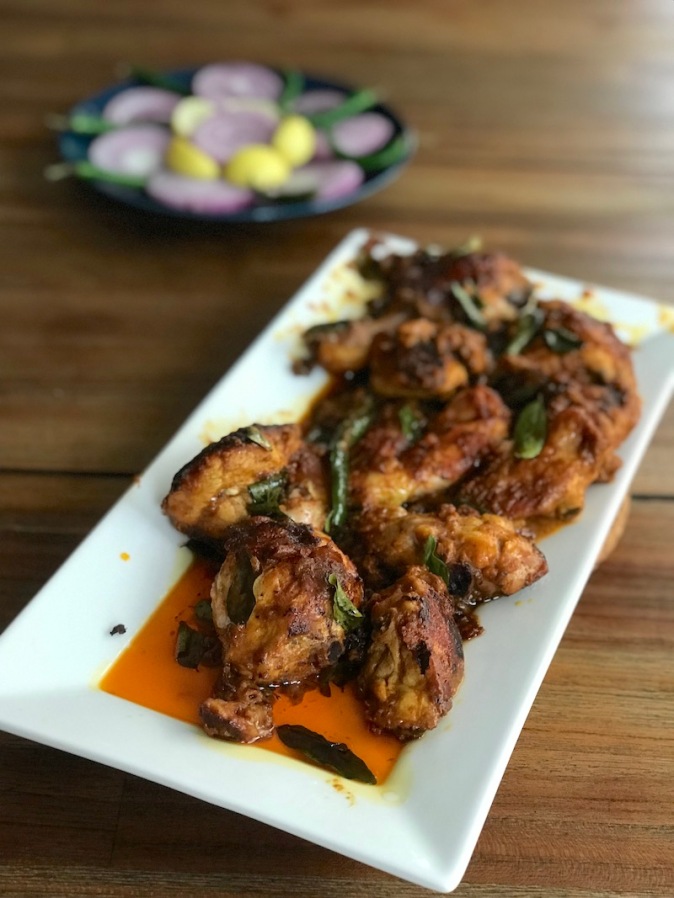
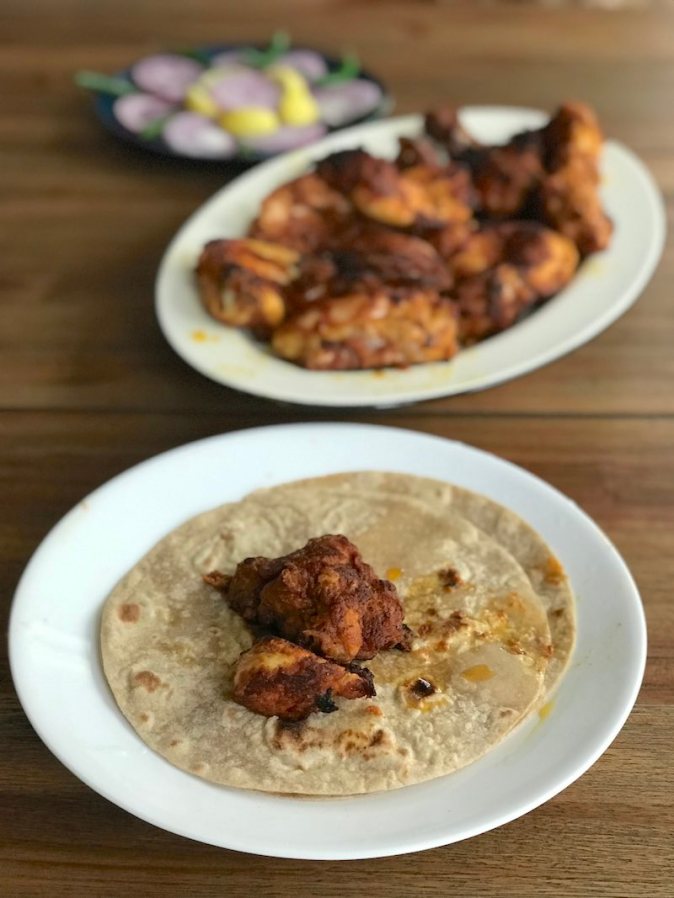
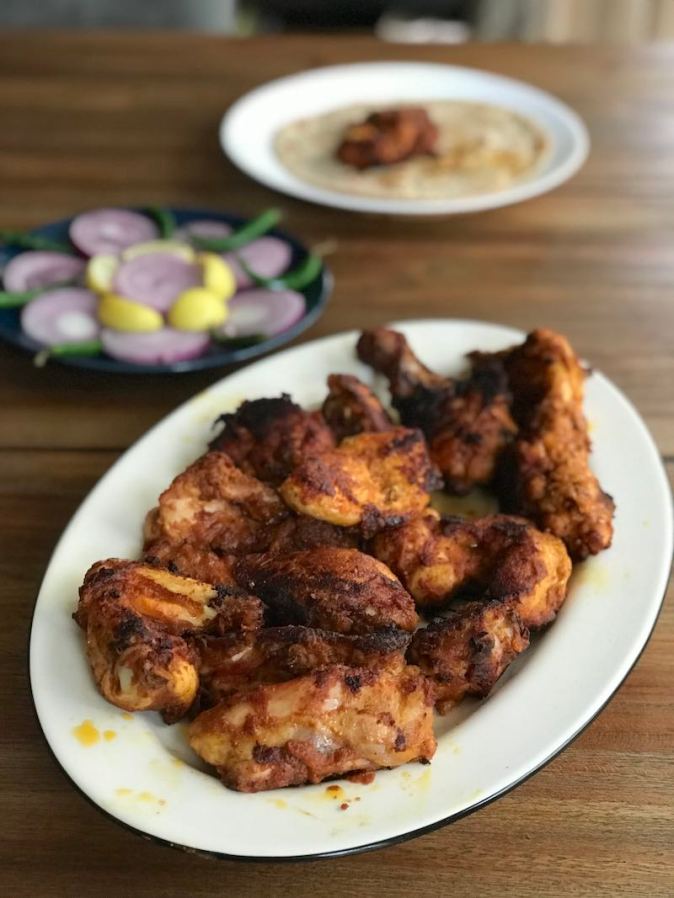
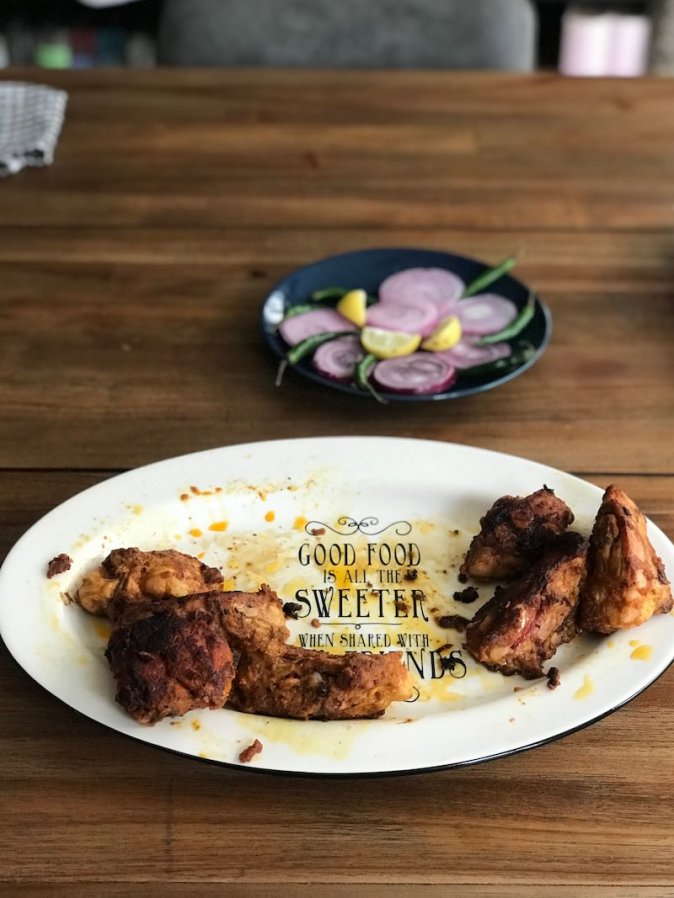
Chicken 65 is a spicy, deep-fried chicken dish originating from Hotel Buhari, Chennai (courtesy, wiki). The internet is abuzz with many variations of Chicken 65 – from Hyderabad, Andhra Pradesh and other places. I learnt this recipe from my wonderful part-time helper and while not delving into the authenticity of the recipe, I tweaked it a bit (adding a bit of sugar, the Bong touch!). The outcome was pretty insane and exactly how we would like – tender and juicy, crispy and spicy.
I can’t wait to read Big Z’s reprise on Facebook… and yes surprisingly, we are conversing via multiple realms these days. What matters most is that conversations must keep on going and that we remain connected, what do you think?
Unblogging it all… Ishita
Thank you for joining me on my daily food and travel journey on Pinterest, Instagram, Facebook and Twitter!
Some spicy recipes that you may like: Stuffed Chilli Spring Rolls Thai Papaya Salad
Disclaimer: This isn’t a sponsored post, nor are there any affiliated links for any of the brands that may have been mentioned in this blogpost. The subject, story, opinions and views stated here are my own and all images are from my personal album. While you enjoy reading my posts with lot of visuals, please do not use any material from these posts.
2 kgs chicken, medium sized pieces with bones fresh curry leaves, a handfulHomemade spicy Chicken 65
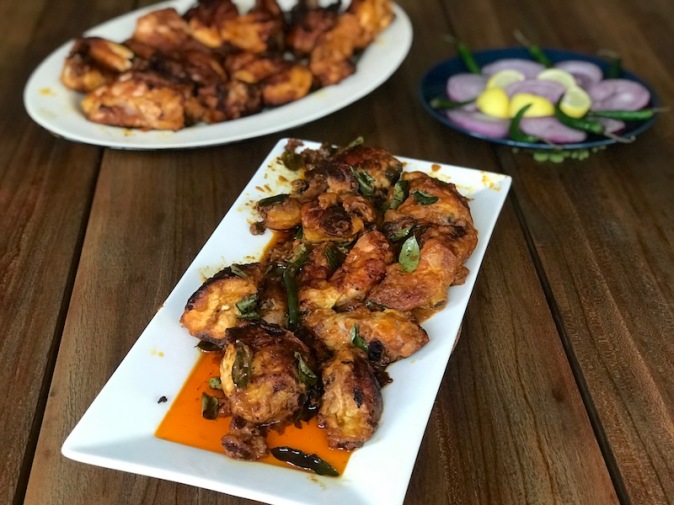
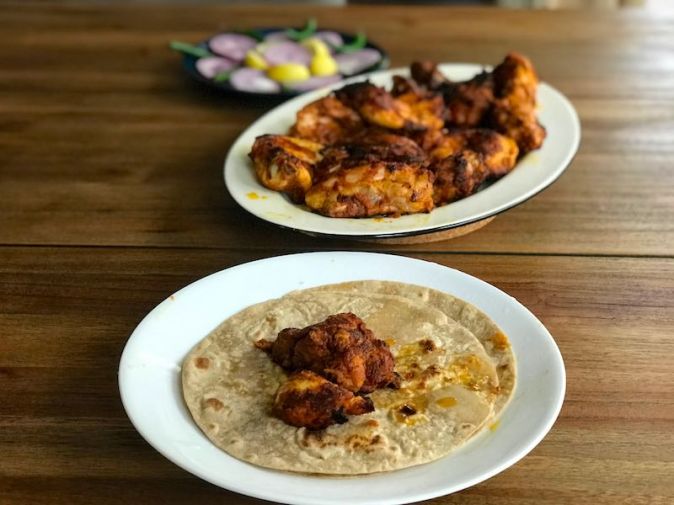
Ingredients
4 green chillies, sliced
3 tbsp red chilli powder
3 tbsp garam masala powder (store bought garam masalas vary with the region.
1 tsp turmeric powder
2 tsp ginger garlic paste
2 tsp sugar (my tweak)
salt, as per taste
1 cup refined flour
2 tsp corn flour
200 gms plain yoghurt
white oil for deep fryingMethod
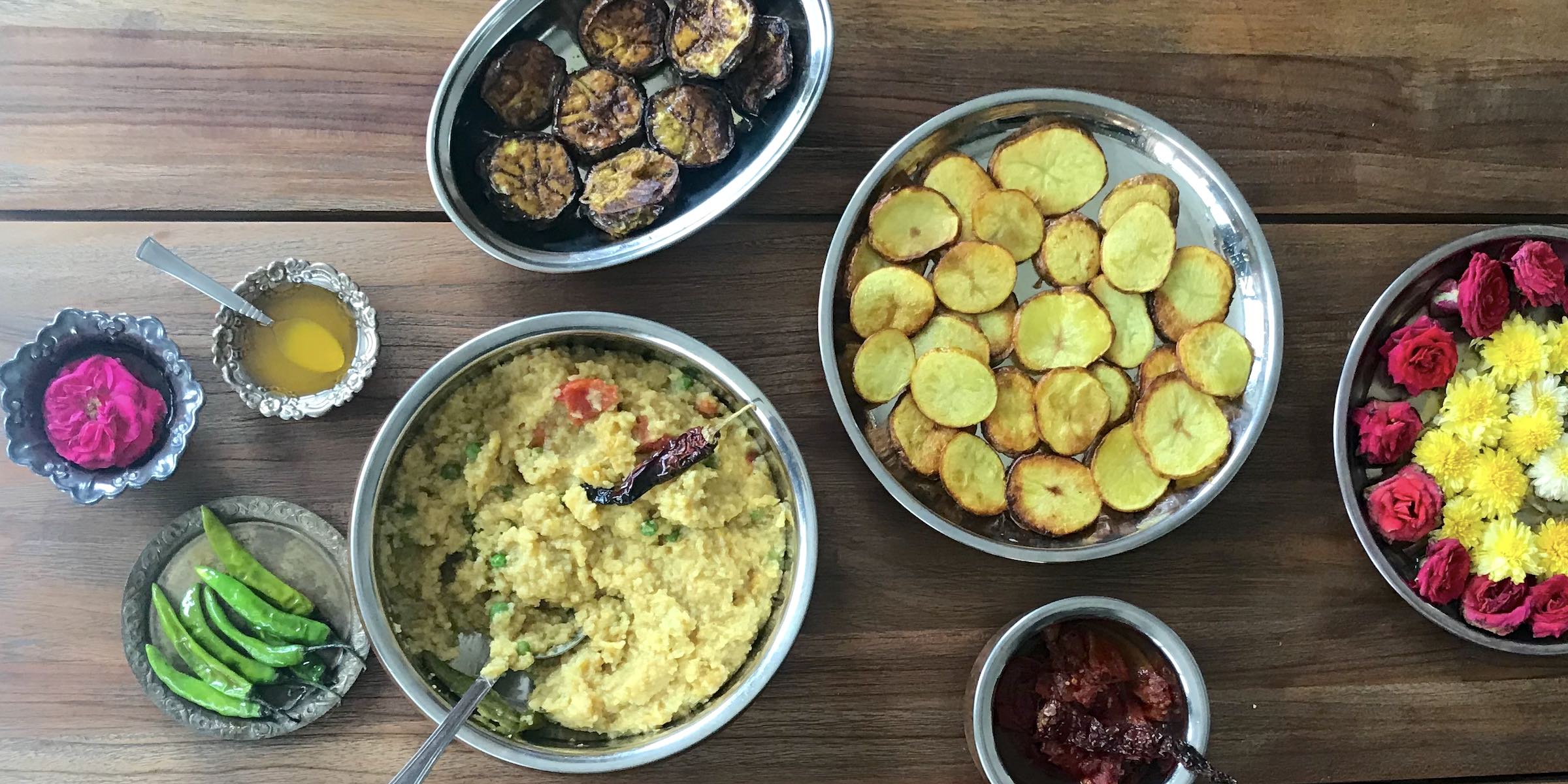
Wishing you all health and happiness for the New Year from our new home in Chennai, as we start a new chapter in a new city!
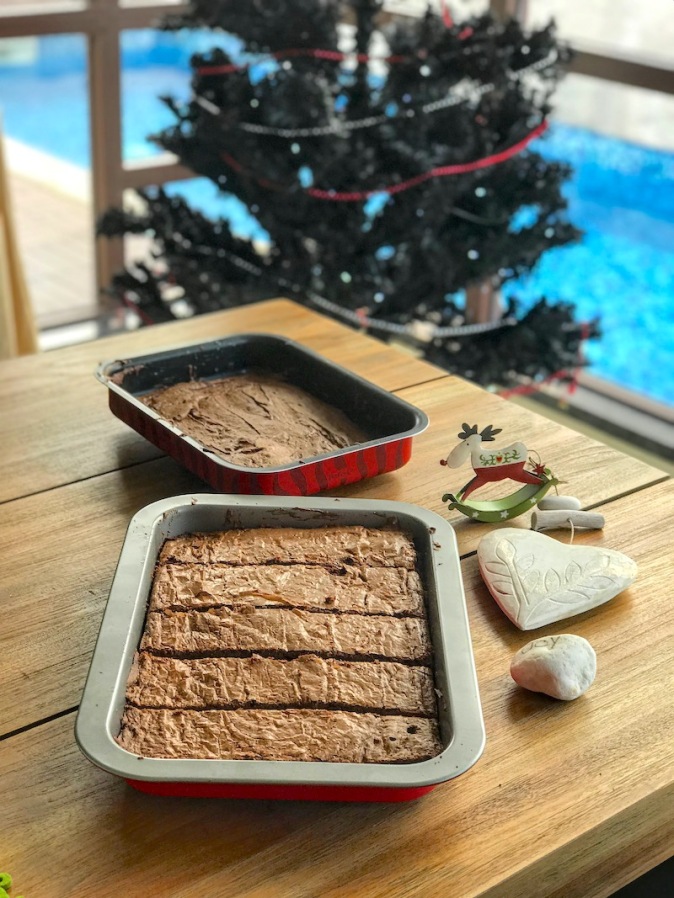
We moved to Chennai this October after two decades of living in Dubai. I can’t wait to explore, learn and know more about the city that is going to be my fourth adopted home after Colombo, Frankfurt and Dubai. “How are you liking Chennai?”; “How does it feel to be back to India after so many years?”; “How are the Z-Sisters adjusting to their new school?”; “Have you all settled down?”; “Given the long stint in Dubai, surely making new friends at this age would be the most challenging?”… to all the questions that are coming my way, my answer is the same. It feels quite surreal that we have finally moved. It also hasn’t sunk in that we have moved. With all the developments that have been happening in the world over the least few months, there must have undeniably been an army of visible and invisible human forces, also some mighty divine forces at play to keep the process going for moving countries and settling into a new city. The other day, I asked the Bearded Biker, “ How are you feeling?” He replied, “I can’t feel yet”. In some sense, it’s pretty much the same for me too. Although we haven’t been moving around the city as such, whatever sights and sounds I have seen and heard of Chennai, I already feel at home.
For every house in every neighbourhood that we have driven past in Chennai, I could almost point to its twin in some para in Kolkata! The city feels so familiar with its kaleidoscopic traffic – be it the crowded buses, the gatherings of people at various crossings, a myriad of food stalls by the roadside, the tangled electric and telephonic wires running precariously across streets and more. Naturally, there were differences, but the warmth and readiness in accepting new people (us, in this case) was exactly the same.
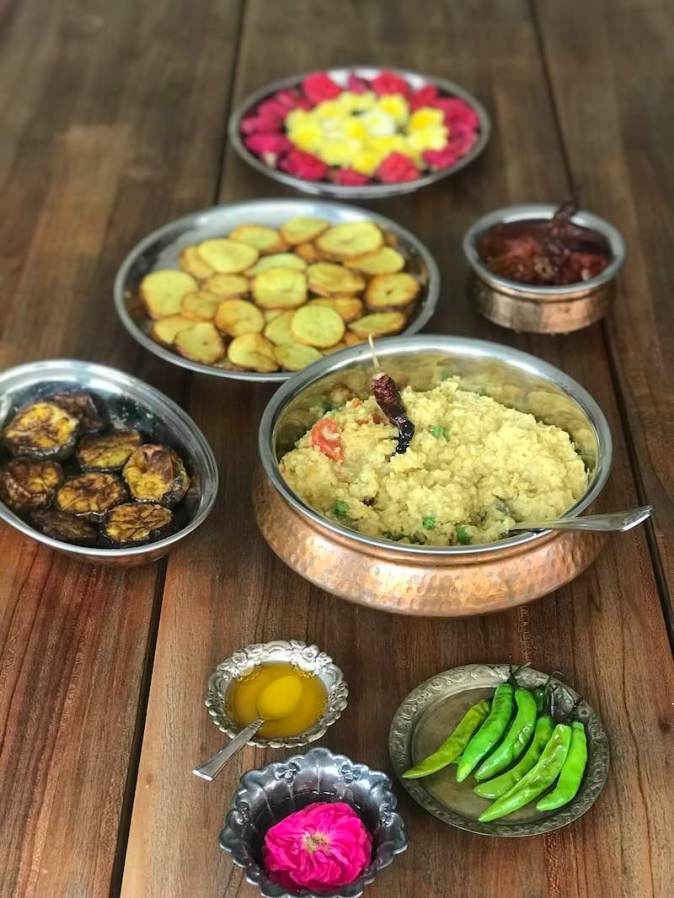
What makes a new city feel like a home – making new friends, embracing a city’s idiosyncrasies… or is it home cooked food churning out of the kitchen?
I have realised that the criterions for feeling at home have changed over the years. While in my earlier days in Srilanka, making a few good friends and meals arriving at the dining table when I was hungry (preferably not cooked by me) was all that it would take to make me feel at home! Fast forward to two decades later, specially this year – after maintaining social distancing, keeping in touch with Dubai friends over zoom calls, months of staying in a limbo in our Dubai home in anticipation of tentative dates for our move and then finally landing in Chennai, moving into a temporary accommodation (although in the lap of a luxury 5 star hotel) and finally moving into a proper home, I find solace now when simple Bengali food rolls out from our kitchen. Or, when our home is filled with the aroma of Z-Sisters‘ wonderful baking. A simple meal is all it takes to win my heart. Like the other day when I cooked khichuri, a dish made with rice and lentils, accompanied by the humble aloo bhaja / fried potato and begun bhaja, signing off with a tomator chutney. It was more in the manner of a bhog, an offering during any pujo and marked our new kitchen’s ribbon cutting.
A Bijoya get-together at our place with a traditional Bengali spread for our friends had become an annual ritual for us. This year was an exception for obvious reasons and also because we had just moved into our temporary hotel accommodation in Chennai. We moved into our new home on the day of Diwali and although it couldn’t have been a more auspicious day than this to move in, I wasn’t ready to cook yet. The day when I cooked the above mentioned dishes, it kind of felt like a cosy house warming pujo. However, unlike the elaborate festive Bijoya spreads at our home, this time the menu was humble and reminiscent of the Lokhi pujo that used to take place at my ancestral home in Naihati.
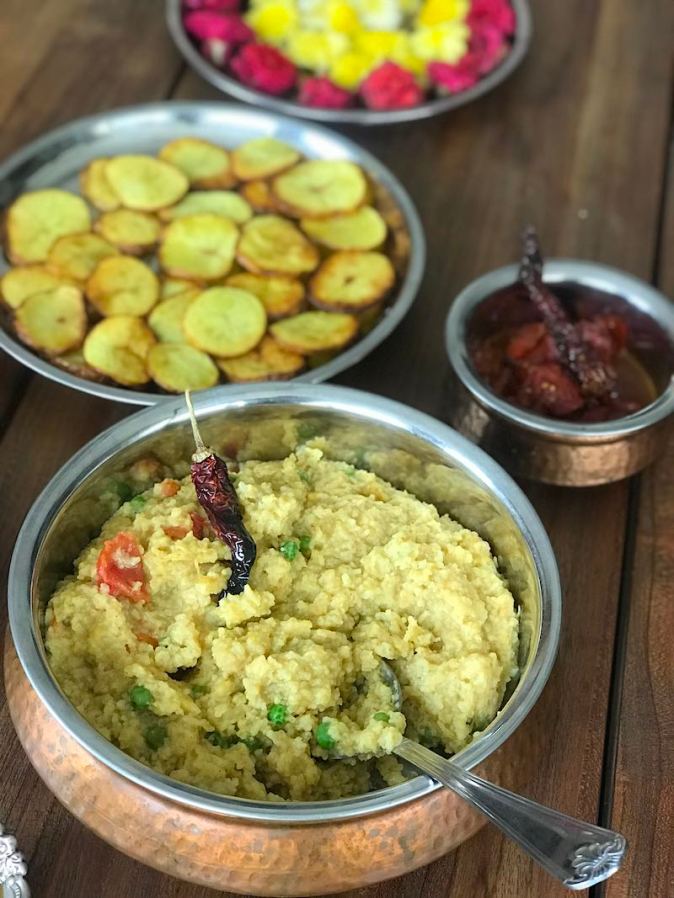 Khichuri and aloo bhaja, as would be cooked for bhog or offering during a pujo at home
Khichuri and aloo bhaja, as would be cooked for bhog or offering during a pujo at home
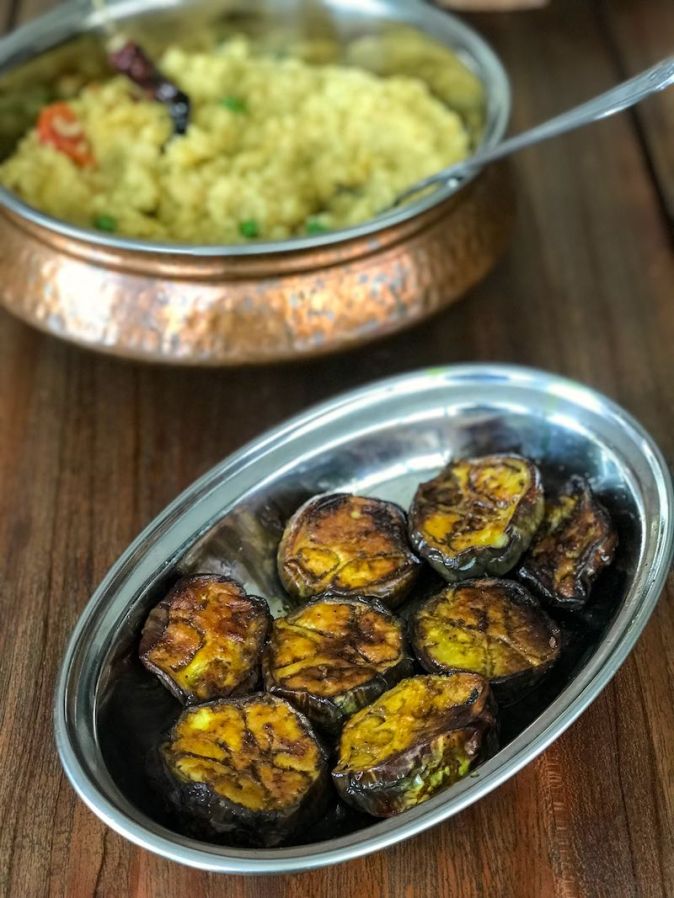 Begun bhaja or fried eggplant smeared with turmeric and salt, is enough to perk up a simple khichuri
Begun bhaja or fried eggplant smeared with turmeric and salt, is enough to perk up a simple khichuri
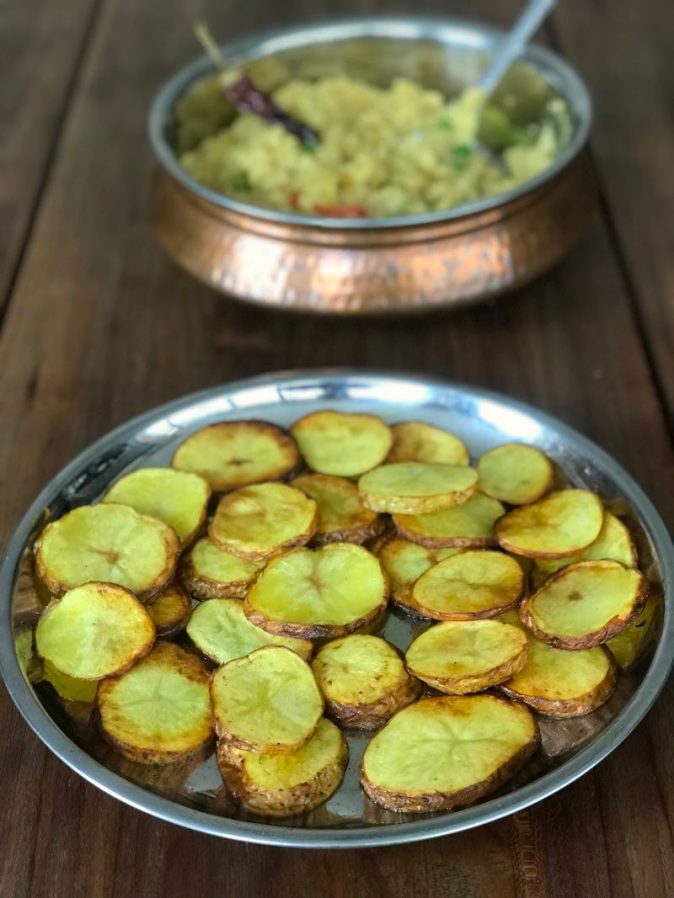 Potatoes cut into round pieces, with skin on – kind of a Bengali version of sliced jacket potatoes … fried, but of course!
Potatoes cut into round pieces, with skin on – kind of a Bengali version of sliced jacket potatoes … fried, but of course!
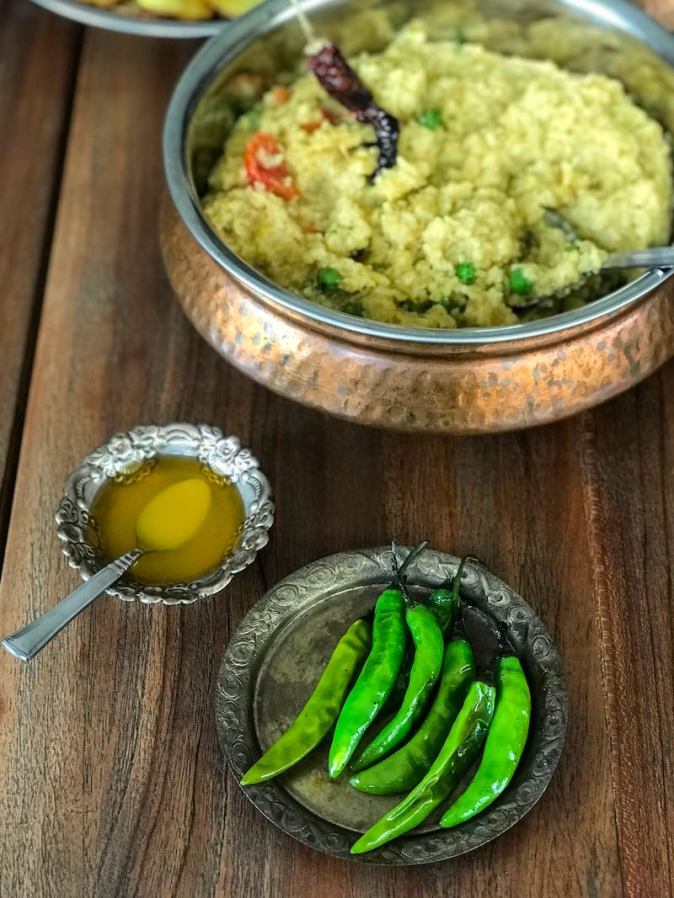 Ghee has to be Jharna ghee – a gaowa ghee, which is ghee prepared from cow’s milk; and green chillies acting more like oxygen for the Bearded Biker
Ghee has to be Jharna ghee – a gaowa ghee, which is ghee prepared from cow’s milk; and green chillies acting more like oxygen for the Bearded Biker
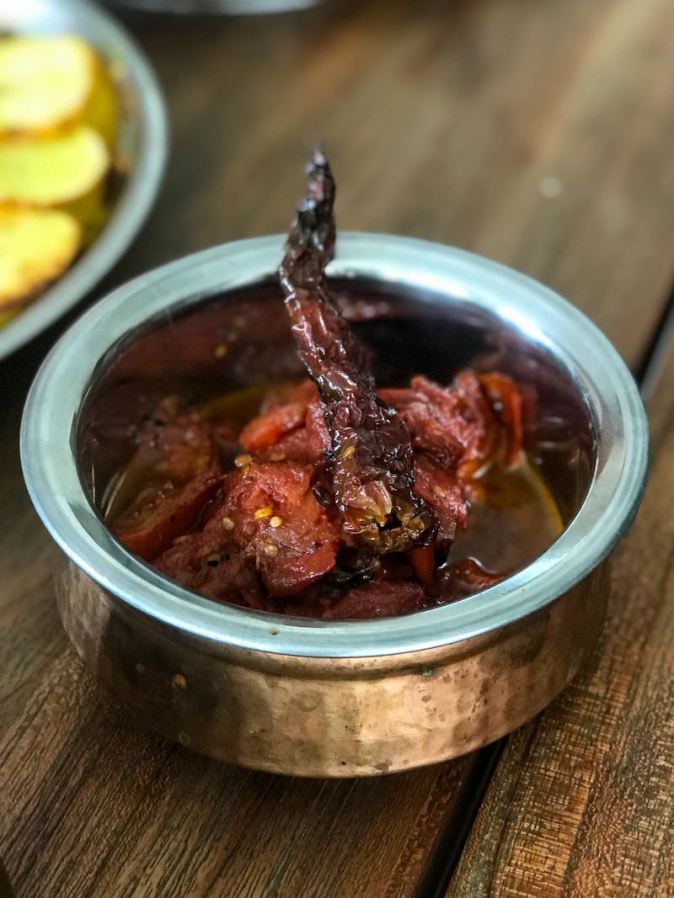 Tomator chutney as a sweet sign off, specially in absence of more formal mishti or desserts
Tomator chutney as a sweet sign off, specially in absence of more formal mishti or desserts
Even before we moved into our new home, the Bearded Biker had made sure that our kitchen was the first room to be in one hundred percent working condition. In spite of that, I didn’t rush into cooking proper meals on a daily basis. Instead, I focused on unpacking and arranging the house. We quite fell in love with the ease of ordering in food through food delivering apps like Swiggy and tried out various restaurants for the first two weeks.
In Dubai, we hardly ever ordered from out. From the elaborate Lucknowy Biryani to the complicated Georgian Khachapuri, we cooked everything at home. If we did ever order, it was never through food delivery apps. I had been very conscious about the high commissions charged by these apps that seem to eat into the restaurants’ margins, specially the small eateries. In India though, I gathered it was a different scenario. Due to sheer volumes of these home deliveries, specially during the Covid period, the delivery apps managed to become instrumental to the F&B business. Through the period of our transition and settling in, we ordered from a variety of restaurants – a few Biryani houses, desi Chinese and even a restaurant serving Kolkata rolls and street-style tawa noodles.
For a family who takes a lot of pride in their love for Awadhi Biryani (even travelling to Lucknow for an evening only to eat), the Aatu Erachi (mutton) Biryani from BVK (Bai Veetu Kalyanam) cooked in traditional coal and firewood really impressed us. Equally impressive was the packaging. Covered with Banana leaf in a round re-usable tin container, the serving portions were really generous and came accompanied with a curd raita, brinjal chutney and bread halwa. We also enjoyed the Bengali food and Kathi rolls we ordered from Bayleaf restaurant on the day of Bijoya. Compensating for not having cooked for our annual Bijoya dinner, we ended up ordering an elaborate spread of khichuri, luchi, mochar chop, deemer devil, kosha mangsho, katla kalia, kaancha amer chutney and malpua served with rich rabri. Amongst the few desi Chinese restaurants we tried, we realised that chilli chicken dish isn’t the way we Kolkatans are used to. It is more like chicken cooked in a light soya gravy. Again, the chicken lollypops from most restaurants were pretty phenomenal and came with a spicy Schezwan kind of a gravy sauce. Special mention goes out for chicken lollypops from Red Box.
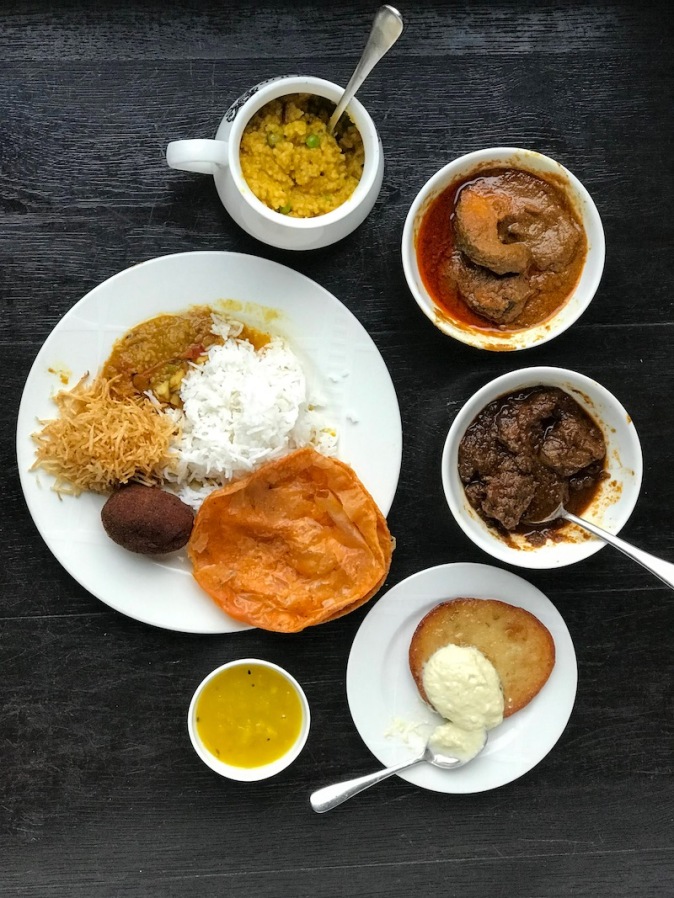 An elaborate spread of traditional Bengali food from Bayleaf restaurant
An elaborate spread of traditional Bengali food from Bayleaf restaurant
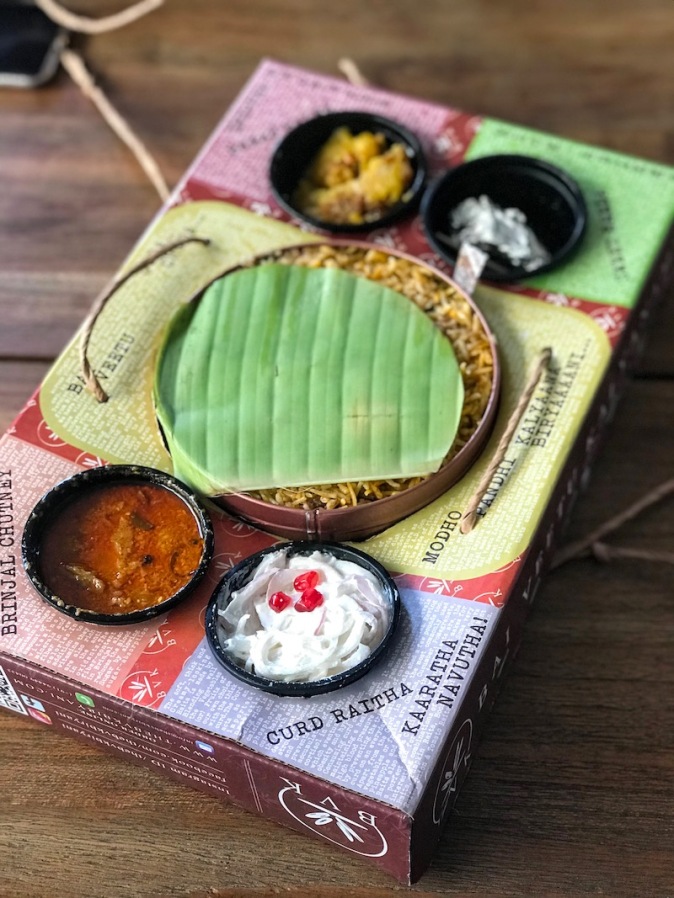 Aatu Erachi Biryani from BVK
Aatu Erachi Biryani from BVK
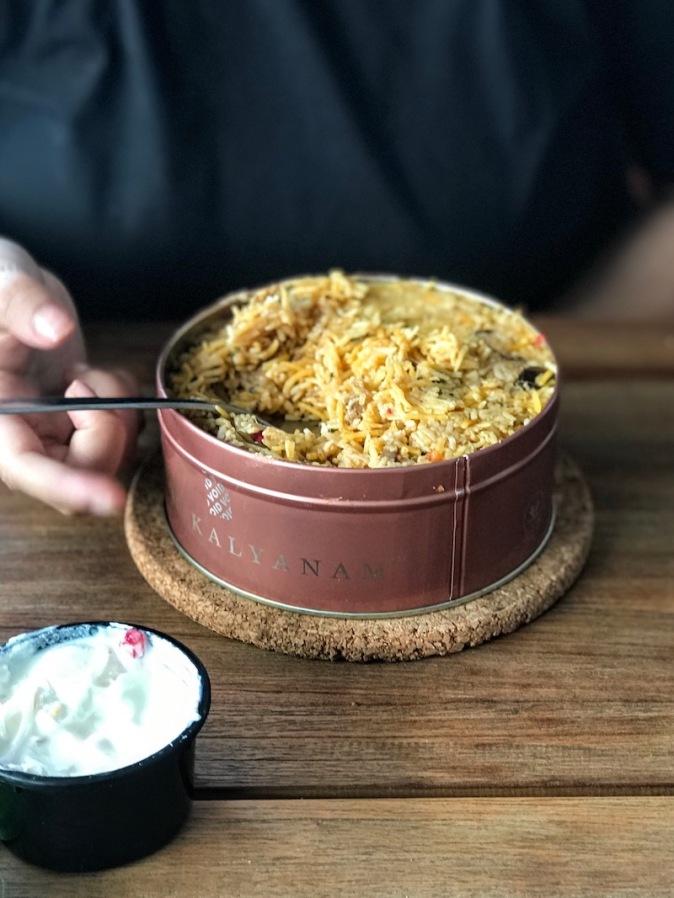
When Sundays start seeming like Sundays again – not the first day of the working week… with kochi pathar jhol, a slow cooked mutton curry for lunch and a promise of a bhaat ghoom, the special afternoon siesta induced by bhaat, or rice!
In Dubai, we had got used to Fridays and Saturdays being our weekends. Switching to Sundays being our first working day took a longer time than switching back. Soon I would message my Dubai friends on a Sunday asking whether they would like to hangout over zoom! While we bought our poultry products over apps like Licious, Tender Cuts, Fresh to Home and others, the Bearded Biker practically obsessed over buying mutton from a local butcher shop. The butchers here refer both lamb and goat as mutton, but for us Bengalis, it is the kochi patha or tender goat curry is what we fantasise about. As if by destiny, there were two good butcher shops just outside our community gate, highly recommended by a friend I had recently made. Our Sunday ritual has now become quite like this – the Bearded Biker scurries to our star butcher Tejuddin as early as possible, so as to get hold of the best cuts. I then marinate the meat and slow cook it in the manner of my mum-in-law’s cooking. This is the taste of traditional mutton curry that I have always associated with our Kolkata homecoming meals. Ma uses a pressure cooker, but I resorted to a deep bottomed pan on Tejuddin’s insistence on the tenderness of the meat. The indulgent bhaat ghum, or the lazy afternoon siesta induced by bhaat or rice, hasn’t yet materialised because many household logistics are requiring tending during the weekends… inshallah soon!
I always say this very proudly to everyone – people do many things when in love. I have nailed the legendary Kolkata Biryani and now this… the slow cooked mutton ala mum-in-law!
Leaving aside the rich mutton curry, a simple paanchmeshali torkari with bori, or a mixed vegetable cooked in gravy along with dried lentil dumplings and white rice does make an amazing prequel to the mutton curry. A few other simple Bengali delicacies have already graced our kitchen in Chennai – pulao, bhaja moonger daal and simple begun bhaja in all its avatar, radhaballavi or deep fried flat breads with spiced stuffing with aloor torkari and more. While our weekend menus most often reflect our Bengali roots stirred up by culinary nostalgia and childhood memories, its completely different on the weekdays. In between online office and schooling, lunches are mostly grab and go. Dinners are a bit more leisurely and the menu is quite casual that can be prepared easily by all of us – pastas, grills and wraps or a simple curry with plain rice.
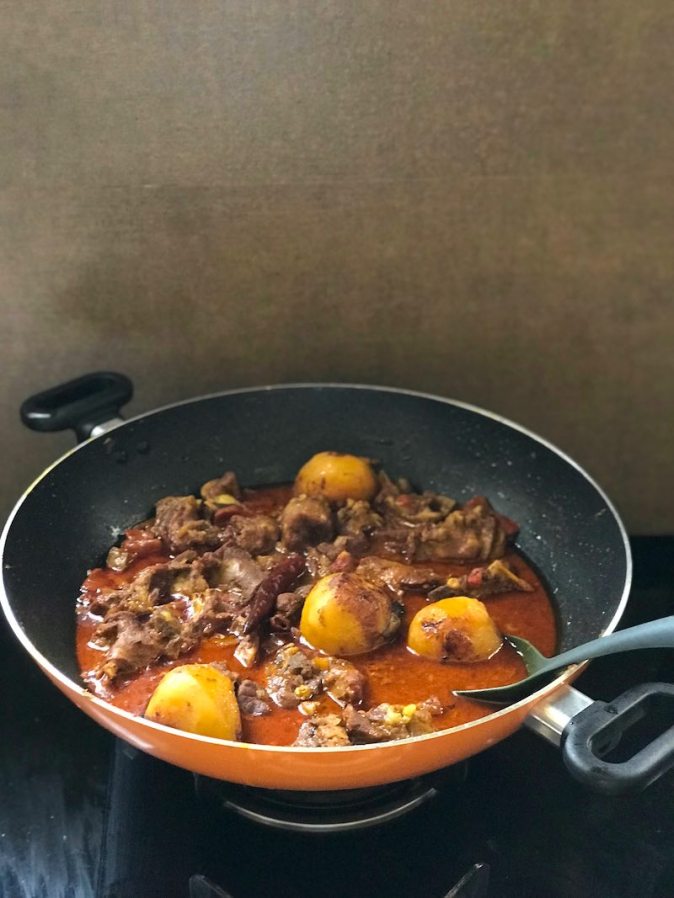 Mutton slow cooked in Bengali home cooking style
Mutton slow cooked in Bengali home cooking style
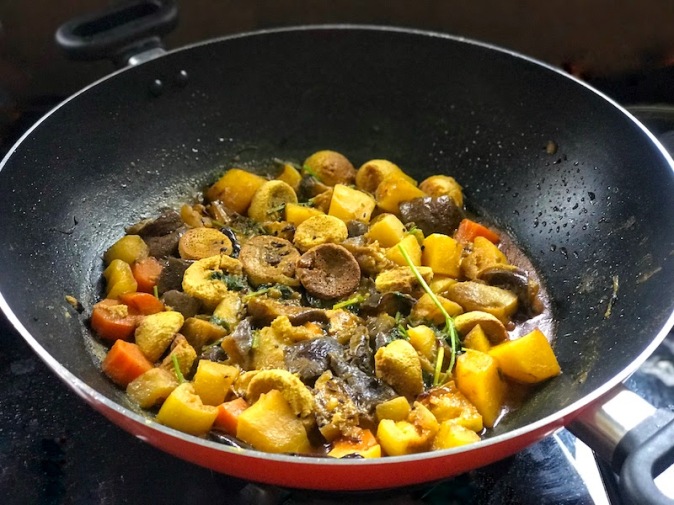 Paanchmeshali torkari with bori, or dried lentil dumplings
Paanchmeshali torkari with bori, or dried lentil dumplings
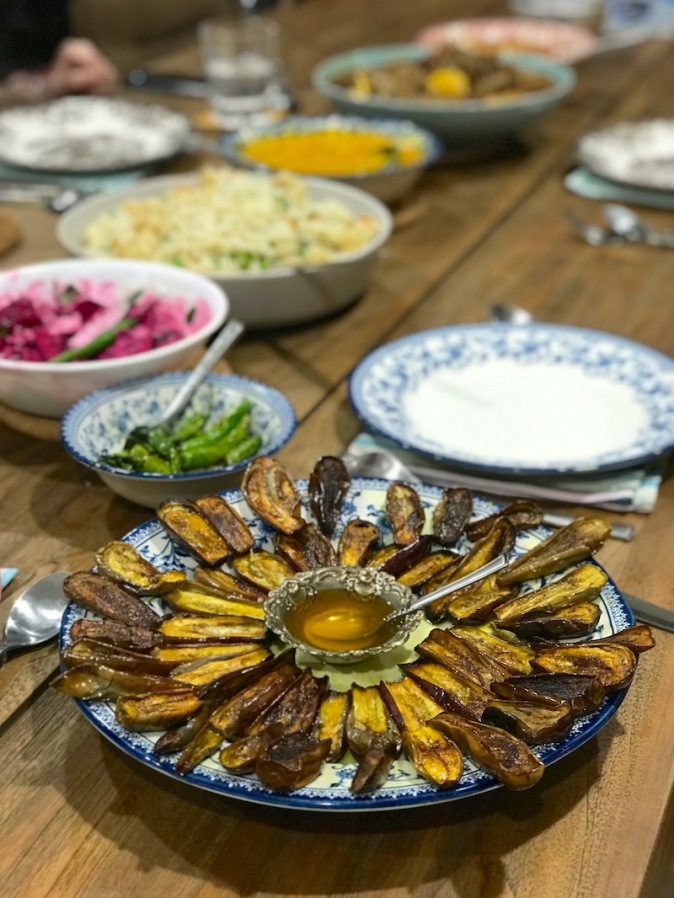 Begun bhaja, or fried eggplant
Begun bhaja, or fried eggplant
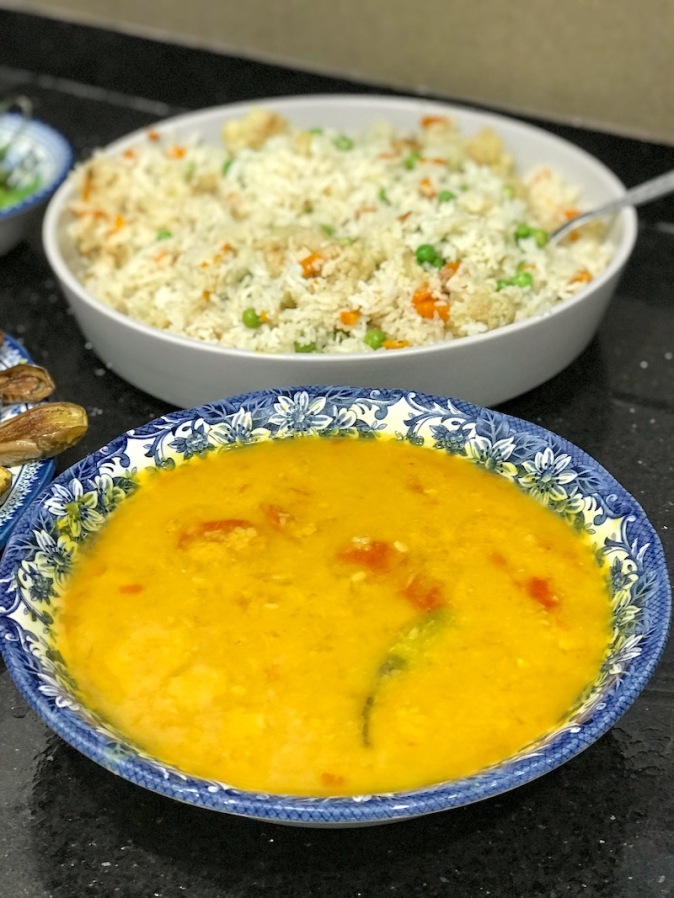 Niramish pulao and bhaja moonger daal
Niramish pulao and bhaja moonger daal
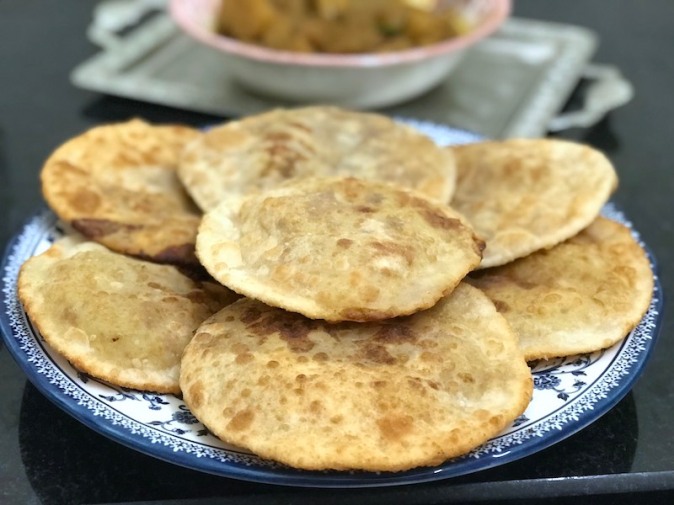 Radhaballavi and aloo torkari
Radhaballavi and aloo torkari
Mishti… a Bengali’s connection to the sweetness of life. And a bit of khuchur muchur or snacky tit bits with chanachur and nimki
“What you seek is seeking you.” Rumi’s words cannot be more true than in my life. I have always been blessed with friends and family who love to eat as well as feed. Our close friend Srikanth, a Tamilian born and brought up in Kolkata and now settled in Bangalore has been instrumental in bringing Banchharam, the legendary Bengali sweet shop from Kolkata to Bangalore. As soon as we moved into our home in Chennai, he sent us a trousseau of traditional Bengali sweets, all the way from Bangalore. From nolen gurer roshogolla delicately dunked in rosh, chanar jilipi, a variety of shondesh – the soft makha shondesh included, mishti doi set in claypots and every mishti that I could imagine. Our fridge that night was reminiscent of my mum and mum-in-law’s fridges… stacked with sweets. I have always wondered the need for stocking so much of sweets on a day-to-day basis. Both mums’ reasoning has always been… what if a guest turns up suddenly? Along with the assortment of sweets, there were some familiar packets of what we refer as khuchur muchur or savoury tit bits. The sweet, spicy and sour Mukhorochok chanachur aptly named tok-jhaal-mishti… and nimki, the diamond shaped fried savoury pastry, both being the ultimate accompaniments during tea-time.
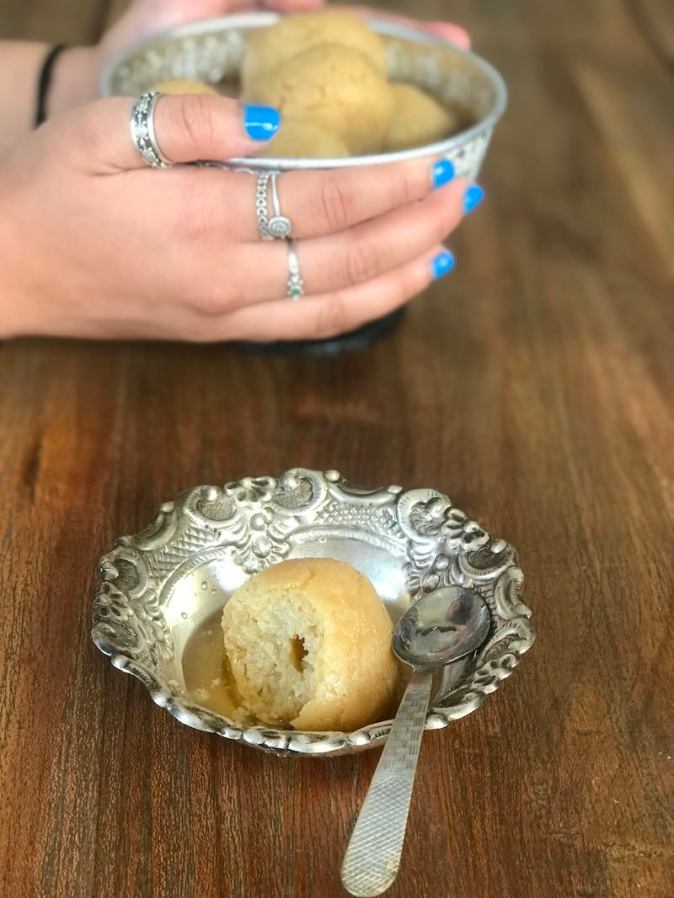 Nolen gurer roshogolla
Nolen gurer roshogolla
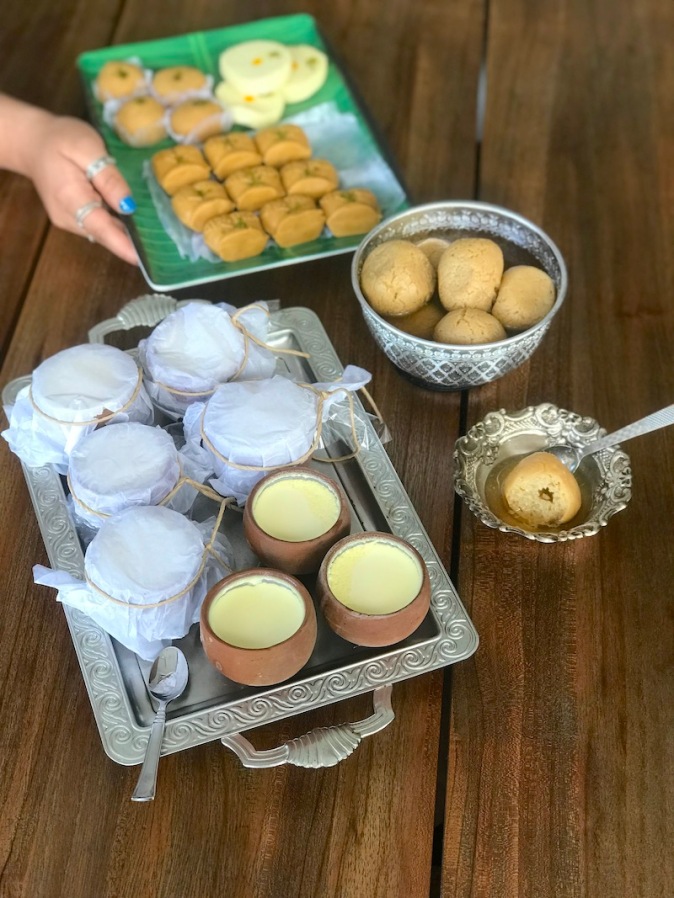 An assortment of traditional Bengali sweet
An assortment of traditional Bengali sweet
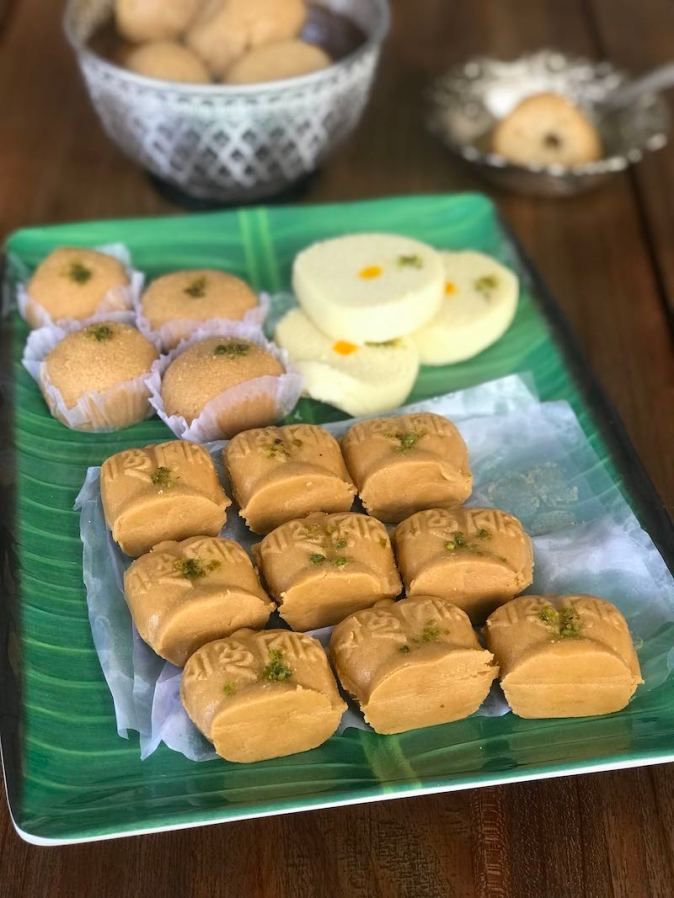 Gurer shondesh
Gurer shondesh
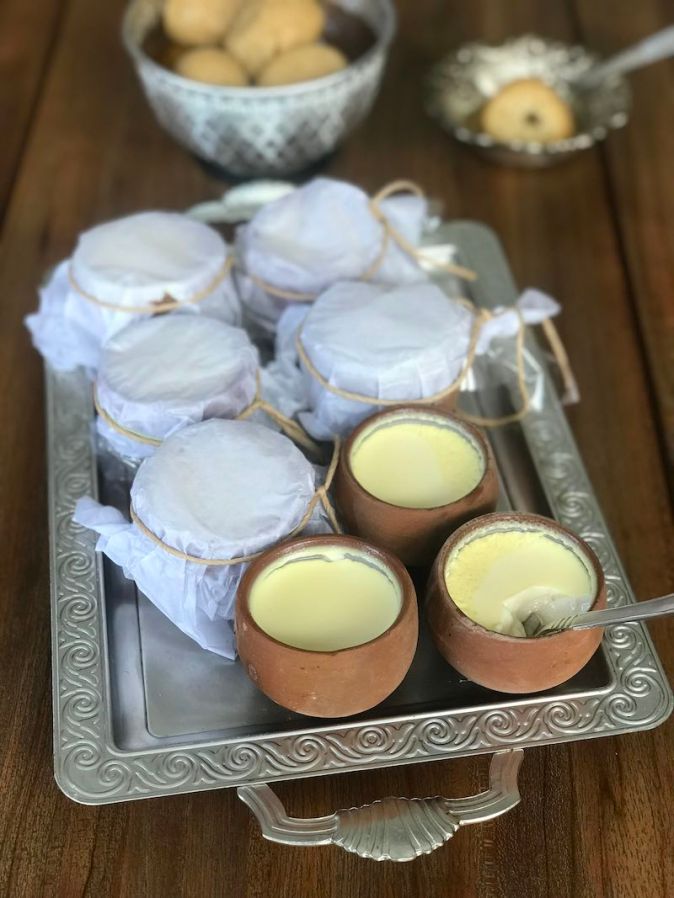 Mishti Doi
Mishti Doi
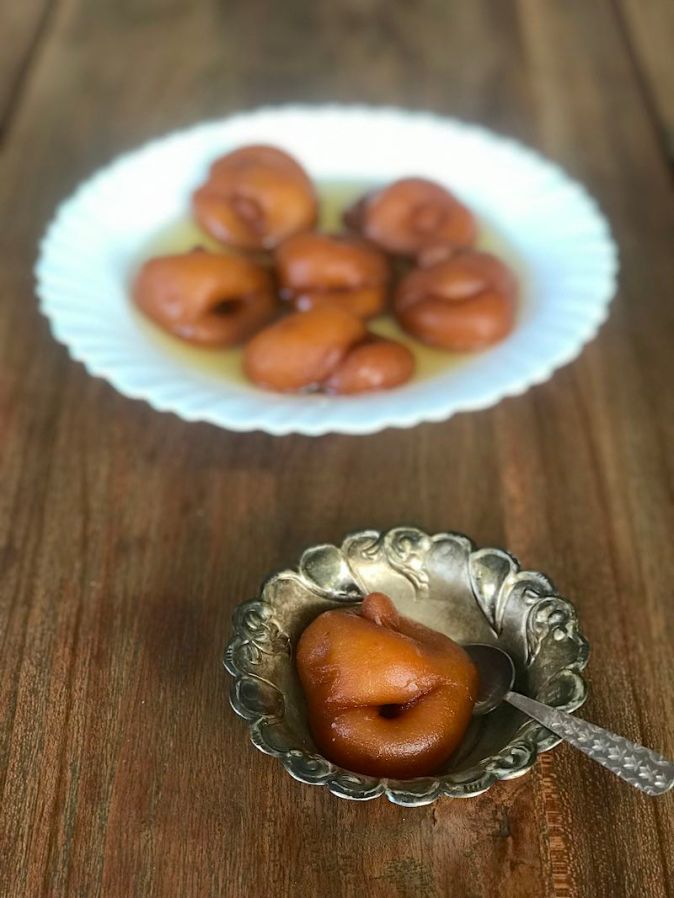 Chanar jilipi
Chanar jilipi
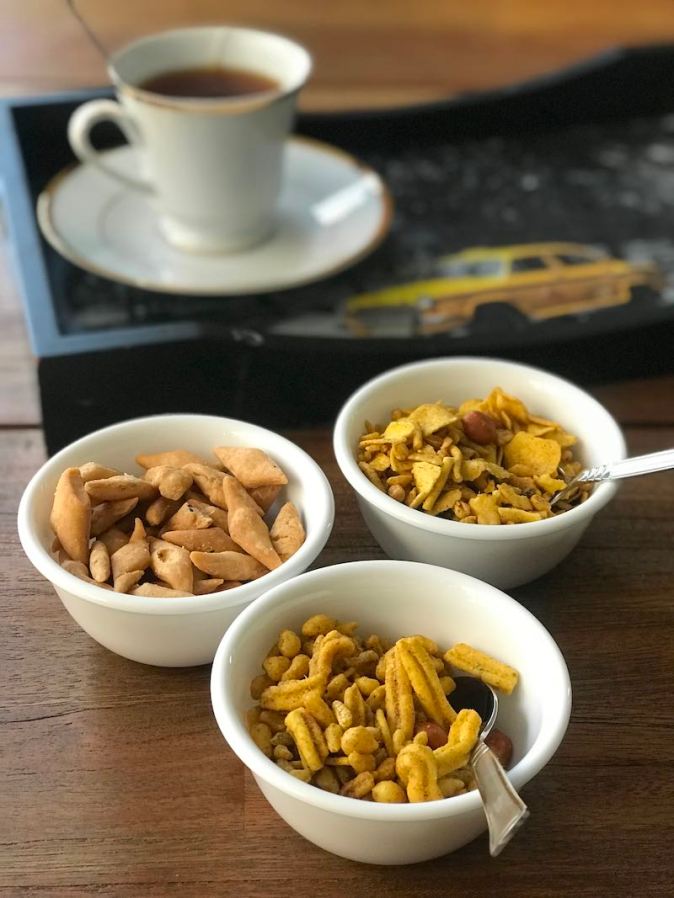 Chanachur and nimki
Chanachur and nimki
What constitutes my Bengali kitchen?A few quintessential Bengali must-haves in a Bengali pantry… and a few precious cookbooks
Our kitchen isn’t confined to Bengali cooking. There are spices, salts and sauces from around the world as well as different types of oils. However, the must-haves in my Bengali pantry would definitely have to be these quintessential Bengali items… a very strong and pungent mustard oil, a gaowa ghee under the brand called Jharna, the thick mustard dip Kashundi, spices like panch phoron, the Bengali five spice mix of fenugreek, nigella, cumin, radhuni and fennel seeds powdered and blended in equal proportion; the Bengali gorom moshla consisting of powdered cardamoms, cloves and cinnamons in equal proportion, kalo jeere or black cumin seeds and few basic spices that are common to all Indian kitchens. Gobindobhog, the small-grained fragrant rice is preferred for making signature dishes like Payesh, the rice pudding or the Murighonto, a rice dish with fish head. Different types of boris, the dried lentil dumplings make their coveted entry in some vegetarian dishes like shukto, borir jhaal or dishes made with shaak or leafy vegetables. We are also most excited about the availability of posto or poppy seeds which were banned in Dubai. Posto in different forms – bati posto, aloo posto, different vegetables cooked with posto – like begun posto or potol posto have always been such an integral part of lunch in my side of the family with connections from epar Bangla, which refers to West Bengal.
Along with the trousseau of traditional Bengali Sweets that arrived from Bangalore, our Santa from Bangalore also sent some cooked items like the typical Bengali shingara, kochuri and vegetable chops made with beetroots and carrots. On my special request, there were a few ready to be fried radhaballavis too! To add to the punch, there were spices like panch phoron, a wood pressed Mustard oil, kashundi, Jharna ghee, different kinds of boris, Gobindobhog, muri and as mentioned earlier Mukhorochok chanachur and nimkis. Also, patali gur and Dulaler talmichri or palm candy… the latter having a Bengali pedigree as legendary as Boroline, the antiseptic cream!
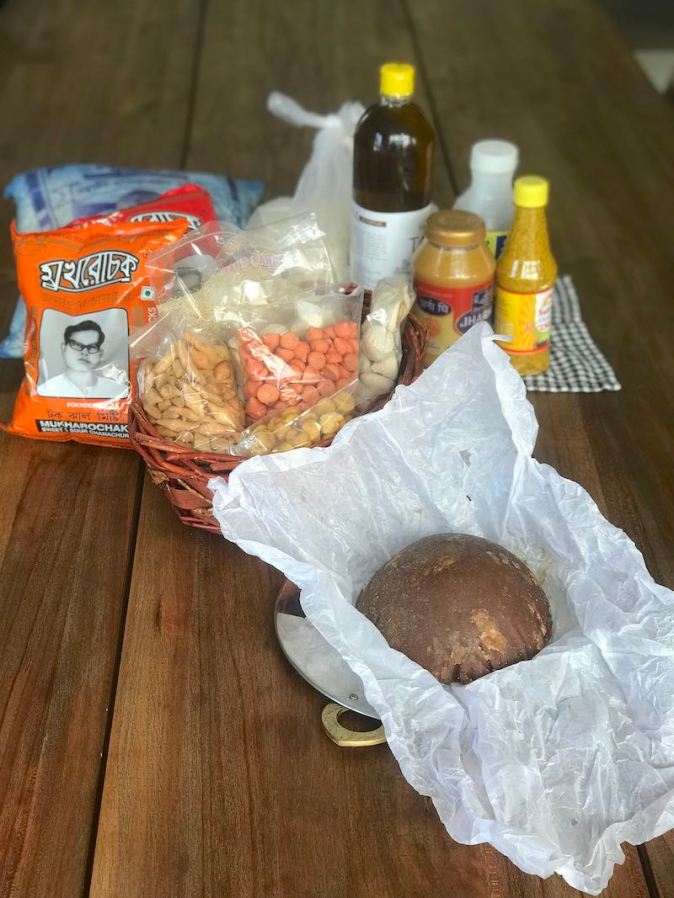 Some quintessential Bengali items in a Bengali pantry sent by my friend
Some quintessential Bengali items in a Bengali pantry sent by my friend
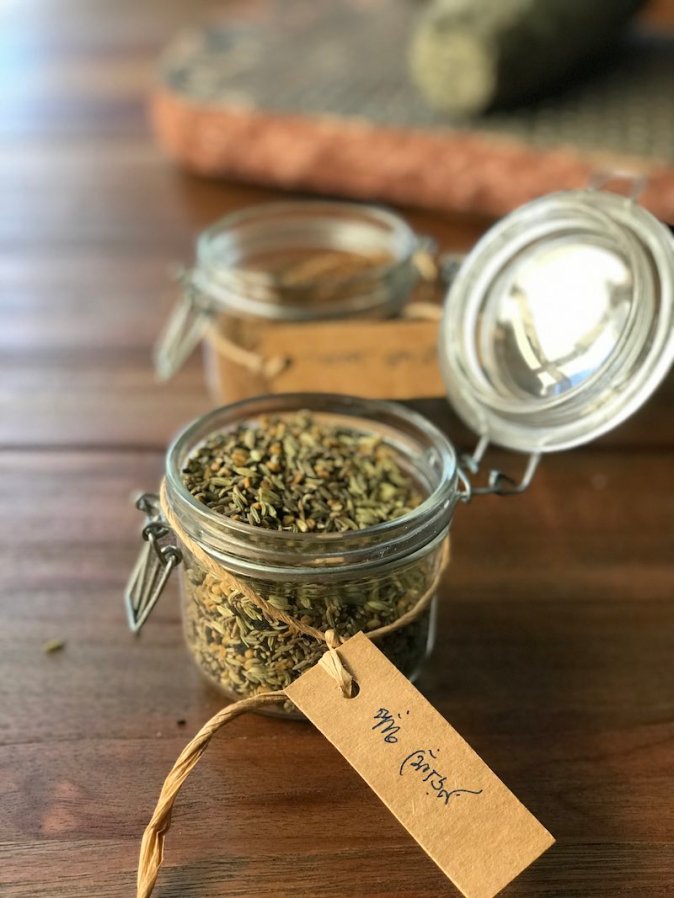 Panch phoron, the Bengali five spice mix – fenugreek, nigella, cumin, radhuni and fennel
Panch phoron, the Bengali five spice mix – fenugreek, nigella, cumin, radhuni and fennel
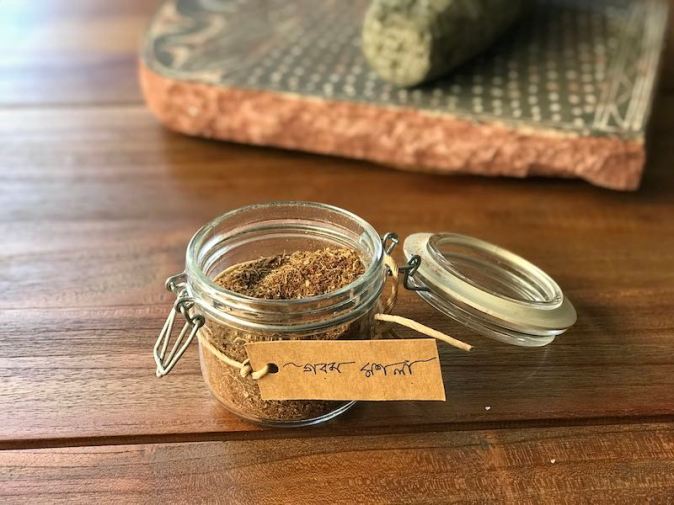 The Bengali gorom moshla consists of cardamoms, cloves and cinnamons in equal proportion
The Bengali gorom moshla consists of cardamoms, cloves and cinnamons in equal proportion
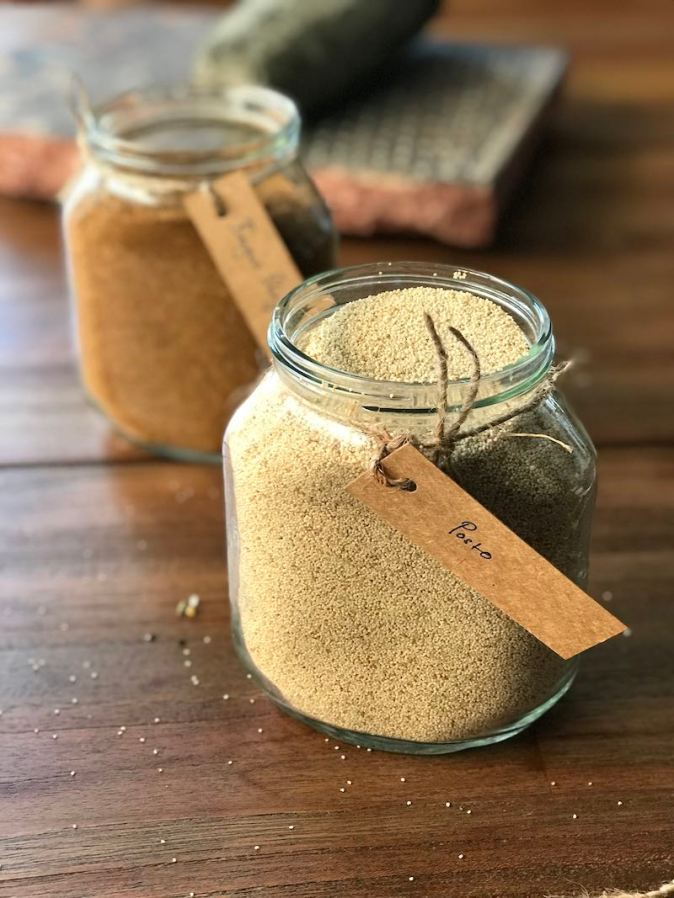 Posto or poppy seeds
Posto or poppy seeds
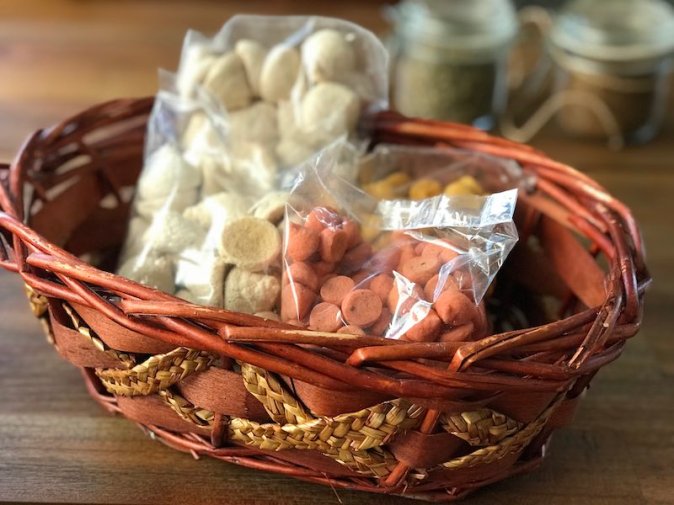 Bori or dried lentil dumplings
Bori or dried lentil dumplings
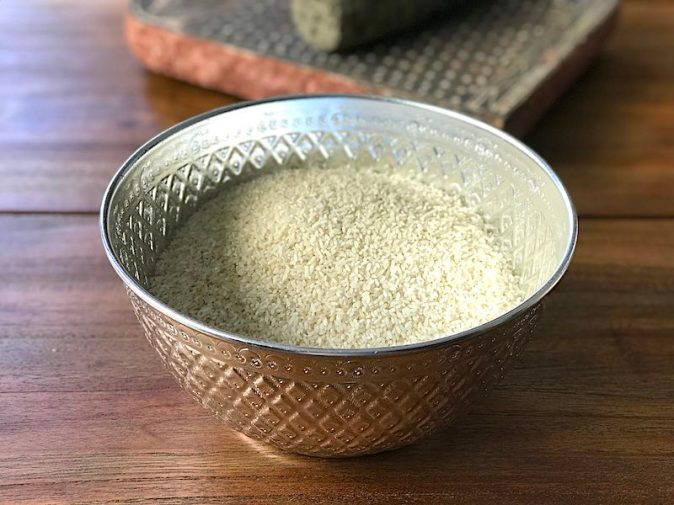 Gobindobhog rice
Gobindobhog rice
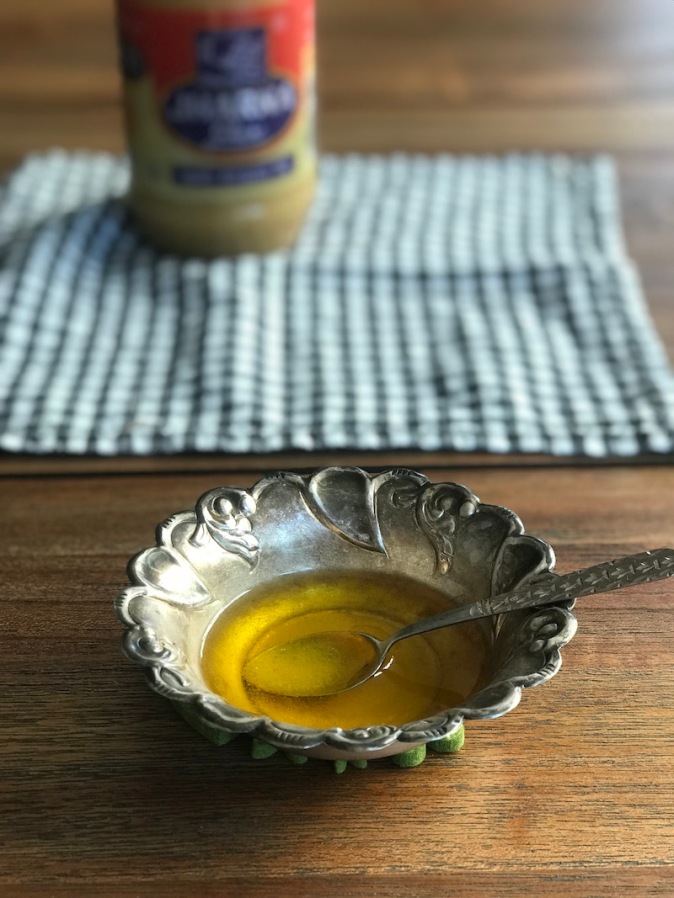 Jharna ghee
Jharna ghee
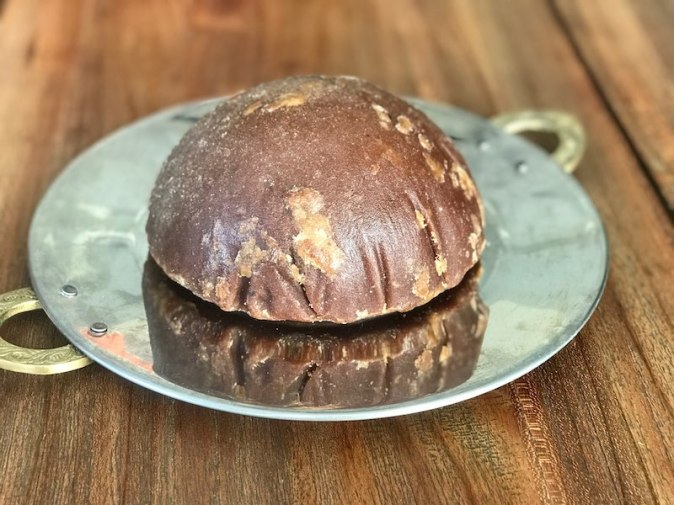 Patali gur
Patali gur
Mustard oil ; kashundi
Over the years, I have also collected a cabinet filled with traditional pots and pans, utensils and knick knacks that I like to use when I present Bengali cooking. Some of them have been handed over and can be considered as heirloom – like the shondesh mould that the Bearded Biker’s Dida used, the dekchi in which I always cook payesh when I’m cooking for auspicious occasions like birthdays or pujo and the beautifully etched Sheel and Nora, the grinding stone and pestle that are used typically to grind wet masalas. Cookbooks also form a part of my priceless possession, many signed by the cookbook authors and chefs that I have been fortunate enough to meet. Although the internet is abuzz with many blogs on Bengali recipes, I still love going through cookbooks. Interestingly, the most referred to cookbook on my shelf is a simple cookbook, the N.I.A.W. (National Indian Association of Women) Cookbook that my mum-in-law had gifted to both S and me after our wedding, lovingly signed “Cook happily & Eat merrily”! The cookbook is a compilation of recipes from different cuisines around the world. The recipes are simple, easy to follow and there are no pictures. The next most referred cookbook is one by Tanima Ray, a personal compilation of family recipes by my father’s close friend Mridul Pathak, and a more recent one called Taste of Eastern India, brilliantly captured and penned by Kankana Saxena. It’s a precious gift from Kankana and the only cookbook that has got both my mum and mum-in-law’s sign of approval regarding authenticity of recipes. Moreover, the recipes are very easy to follow and the pictures are not only just brilliant but present a lot of signature Bengali dishes in a manner that make me so proud of my culinary heritage. That I have always been, but honestly I still haven’t found too many cookbooks depicting the rich heritage of Bengali cooking. Mallika Basu’s Miss Masala offers humorous read on her early life in London along with quick Indian recipes, also shares some Bengali recipes. Rinku Bhattacharya’s The Bengali Five Spice Chronicles is also quite an easy read. Thakurbarir Ranna by Purnima Thakur or Pragyasundari Devi’s double editions of Amish O Niramish Ahar, will interest a serious culinary reader. The latter published in 1902, is often referred to as the first cookbook in Bengali.
And then there are blogs… I have connected to many passionate food bloggers, in my initial years of my blogging or in my food writing journey. Some of them are Bengalis and I have been fortunate enough to meet up with some of them. We all feel the same bond – our mission to write on food and our culinary heritage. Whether it is Anindyo and Madhusree of Pikturenama, Debjani of Debjanir Rannaghor, Kalyan of Finely Chopped, Soma of E-Curry, Sandeepa of Bong Mom’s Cookbook, Sudeshna of Cook like a Bong… these are bloggers who have inspired me and keep me motivated. Asma Khan, who I knew from the time she penned a blog called Darjeeling Express, is now a noted restauranteur and star of of the documentary series Chef’s Table on Netflix. I have often resorted to them for food adda virtually or met up with them in their respective cities. I hop on to their blogs occasionally for tried and tested traditional and non-traditional Bengali recipes or to keep my blog mojo going.
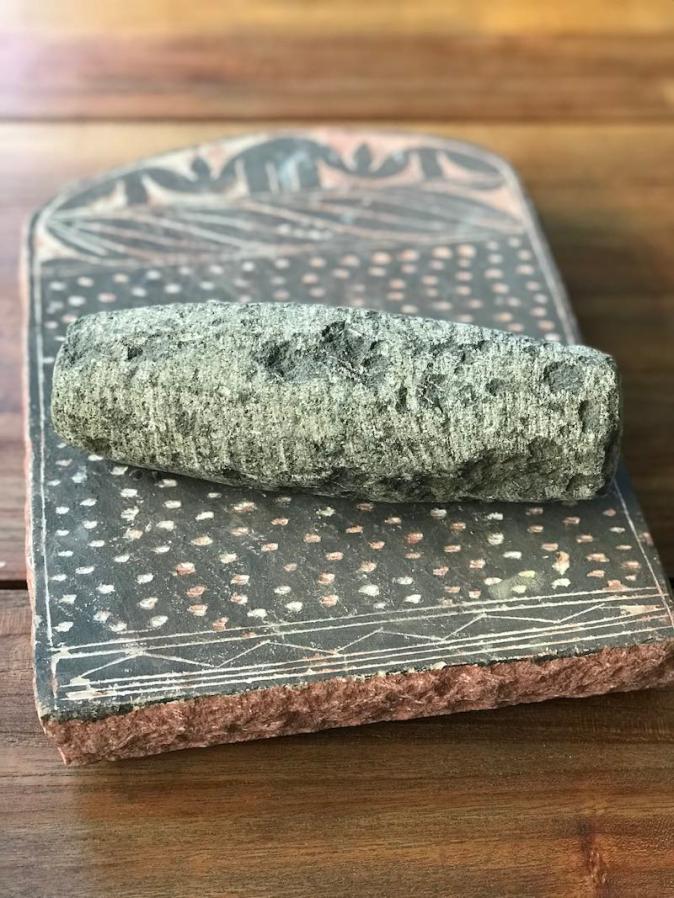 Sheel Nora for grinding wet spices
Sheel Nora for grinding wet spices
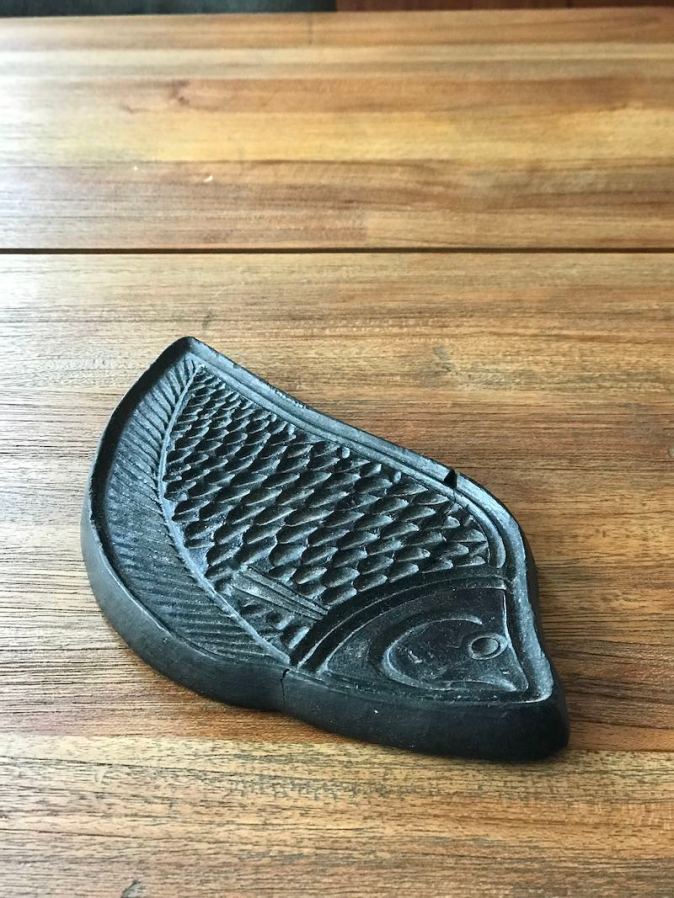 Shondesh mould belonging to the Bearded Biker’s Dida
Shondesh mould belonging to the Bearded Biker’s Dida
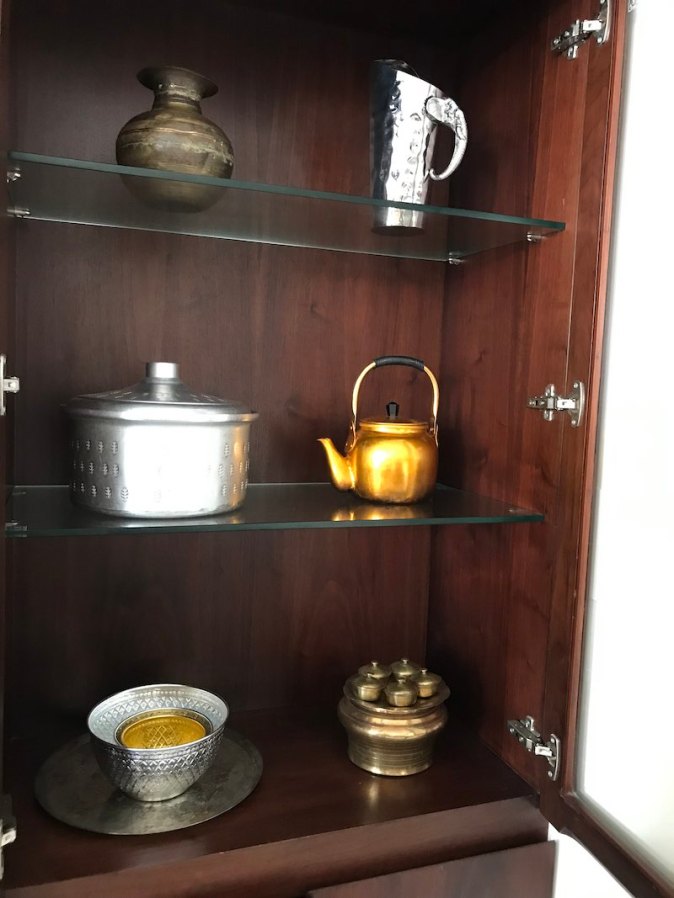 Some traditional utensils from my photography cabinet
Some traditional utensils from my photography cabinet
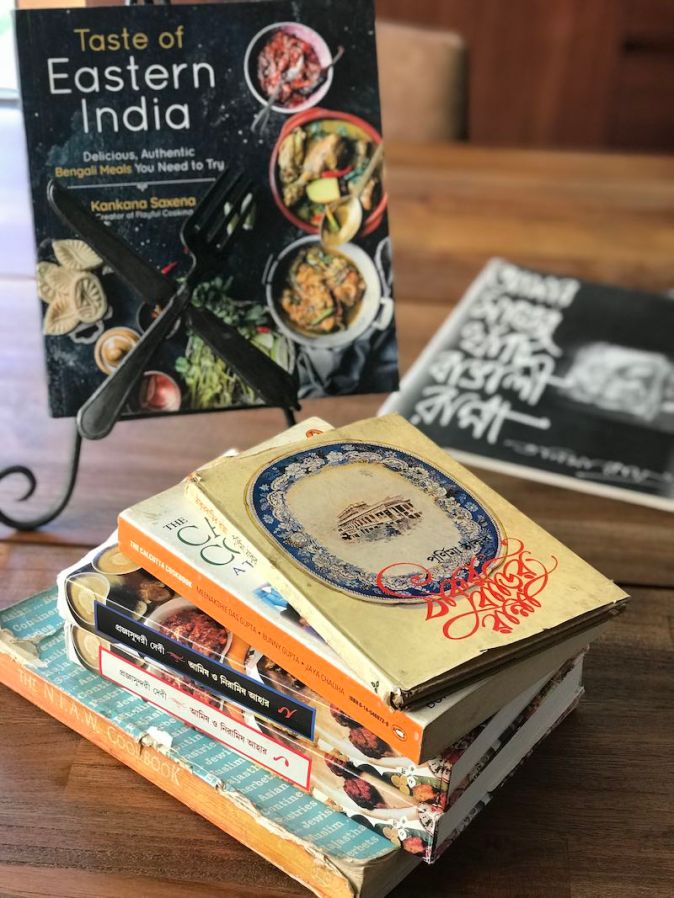 My collection of Bengali cookbooks
My collection of Bengali cookbooks
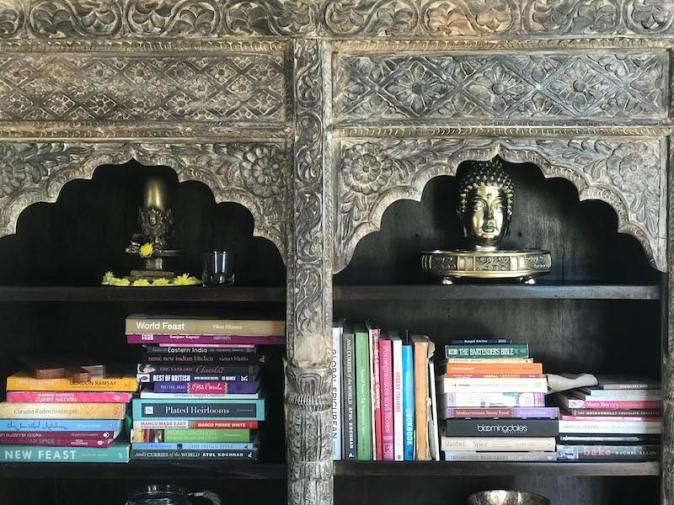 My precious possession of cookbooks – all signed by the chefs and authors I’ve met
My precious possession of cookbooks – all signed by the chefs and authors I’ve met
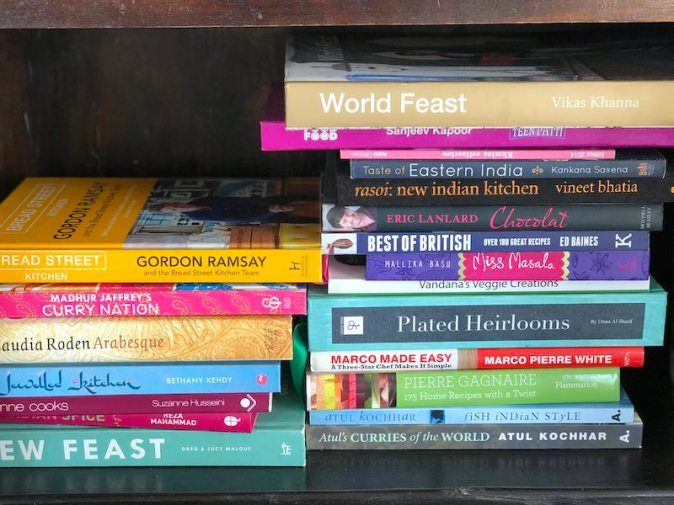
Farm freshness delivered to the doorstep
We are still very traditional in the sense that we still prefer reading books, rather than read on kindle; feel, touch and see the fruits and vegetables we buy rather than buy them online. In Dubai, we got every kind of fruits and vegetables from around the world. But I am finding that the freshness of fruits and vegetables here are completely different, whether bought from popular neighbourhood grocery stores like Nilgiris and Freshies. I am not sure whether the food mileage and seasonal offerings have something to do with it. Every Wednesday, there’s a vegetable market within the community set up by a supplier called Ansio Fresh who source directly from the farms. We have a wide variety ranging from seasonal fruits and vegetables grown locally or otherwise, to choose from. Although initially the weekly vegetable market was set up during the lockdown period, it has continued even now and is gradually becoming quite popular with the residents. Apart from this weekly community event, I also look forward to the residents’ whatsapp group, which has been pretty much my lifeline since we moved into the community. Anyone having a good experience with any producer, artisanal or gourmet products, information is immediately shared. Orders are placed within the group and the product is delivered to the doorstep within hours.
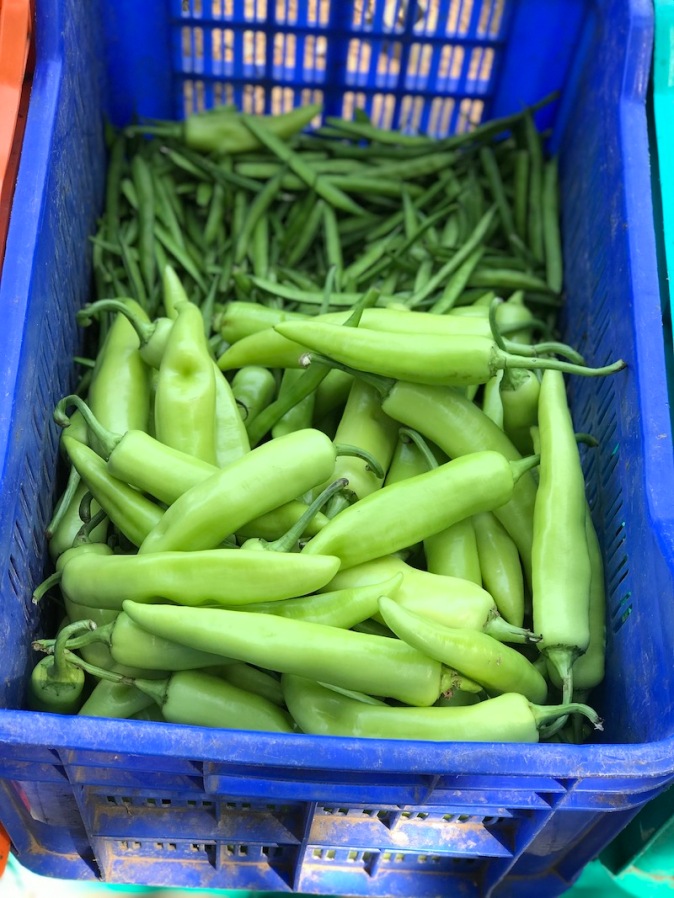
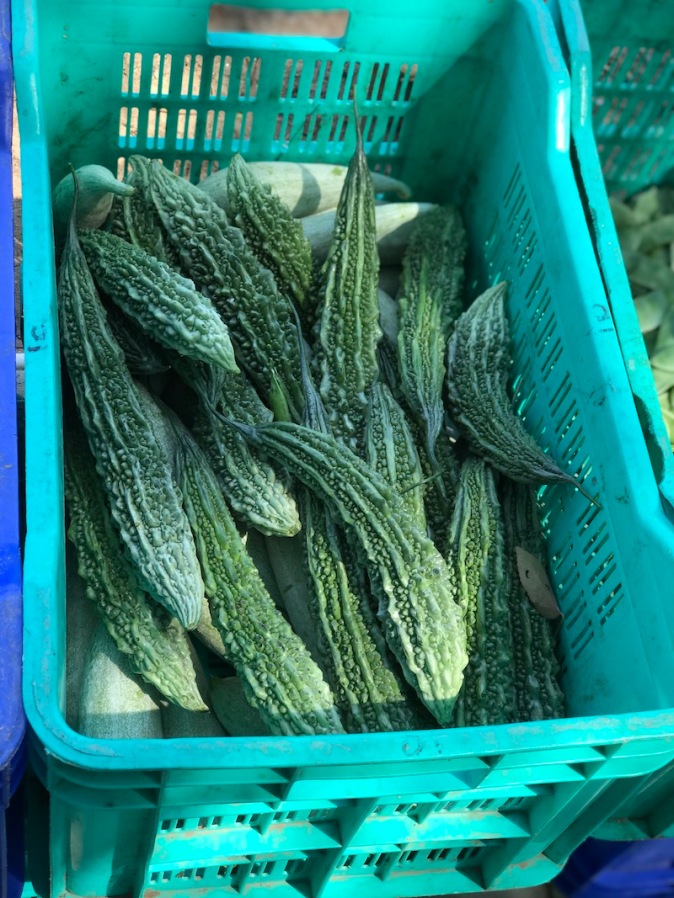
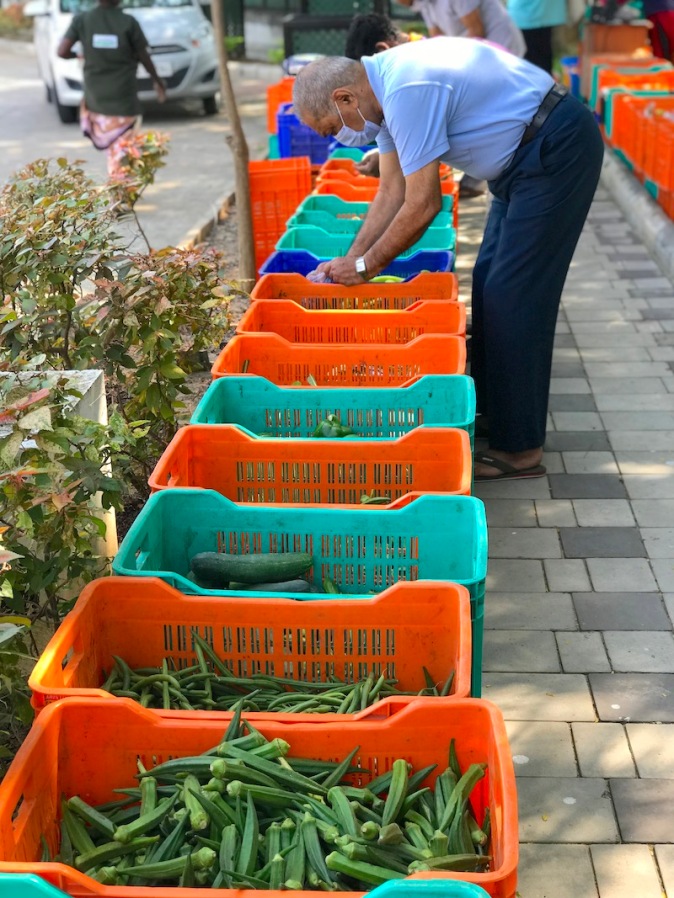
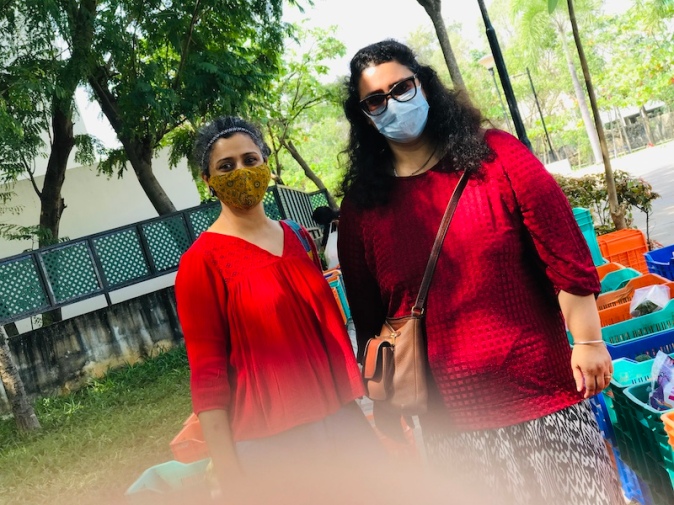
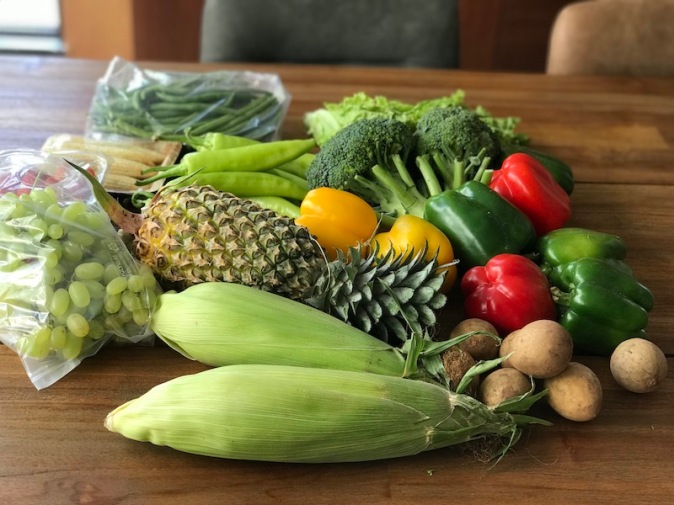
Rockin’ around the Christmas tree…
Have a happy holiday!
From Diwali until this Christmas … well, that’s exactly how long it practically took us to unpack all the boxes that had packed in our Dubai home. Day by day, the house is evolving into a home. Bits and bobs are still left, and I am guessing they will still be there for the next few months… but every day we pat ourselves and say we are ‘almost there’! From learning that we will be moving… to have finally moved into a new city after having wrapped up years of living in Dubai … that too amidst the pandemic… it’s been quite a journey. From last December until this December – its a whole year of unfolding of multiple events! There’s something magical about Christmas and just like Durga Pujo and our Bijoya get togethers, the festive season and Christmas celebrations at home with friends who had become like family, had become annual rituals for me. Every year, Big Z insists on setting up the Christmas tree as early as the first week of November, bringing it down only by end of January. To that effect, the Christmas tree was set up a bit late at our home this year – in the first week of December! She kept the decoration very simple, saying that she wanted it to reflect how she felt this year – solemn and lonely. Solemn, because we lost one of our Labrador sons – Cinder in November. Lonely, probably because she had to leave her friends in Dubai without any proper farewell. Unlike Lil Z who has met up with some of her school friends who live within the community, Big Z is making an effort to make new friends. Much like us. We had all become so snuggled up and comfortable within the group of close friends that we had in Dubai, that sometimes it feels like we have forgotten the art of making new friends! Thankfully, the community and the neighbourhood that we have moved into, is very warm and welcoming. Many residents are still maintaining social distancing and most taking all the necessary precautionary measures. This festive season promises to break a few barriers (hopefully not codes) and bring the community together. There was a festive bake sale for the children for which Big Z made delicious homemade brownies and Lil Z baked vanilla muffins, while the other children put up such amazing fare. I also met up with a few residents and got the feeling that we would soon make some good friends here.
The Z-Sisters are ardent bakers and quite proficient in that. The aroma of their occasional baking fleeting though our home is my happy space. While I like to be experimental in the kitchen with my cooking, recipes that require following them to the tee, restrict me. Exactly why Big Z finds baking exciting … she likes having a structure. The Bearded Biker is also meticulous about following instructions but isn’t into baking. He’s more focussed on meat dishes from around the world and follows recipes meticulously to stir up elaborate and complicated meat recipes. Lil Z is still quite young and mostly chooses recipes that are colourful and fun. So I guess, each of our cooking preferences reflect our philosophies in life!

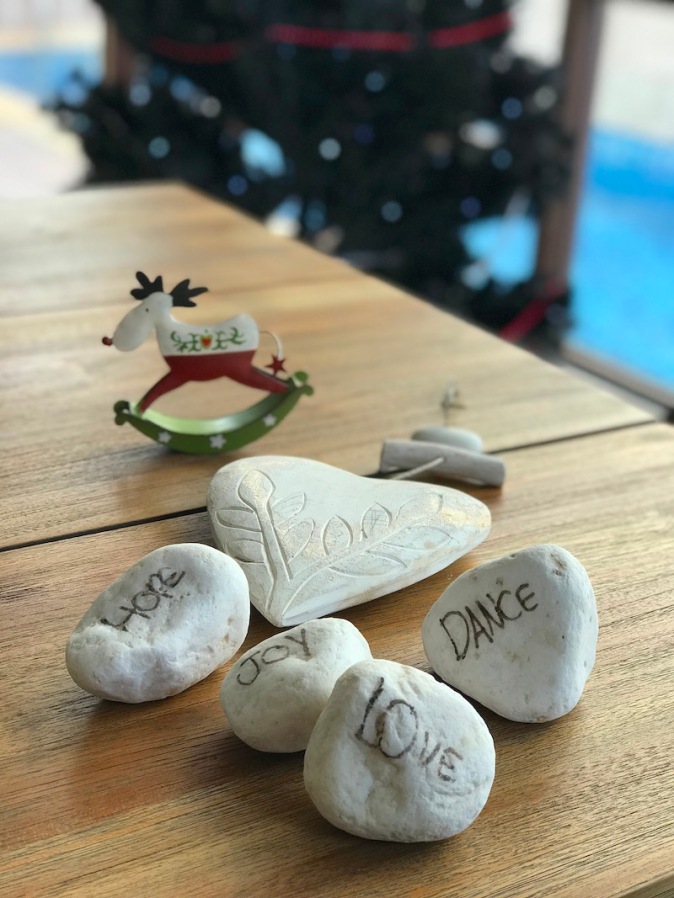
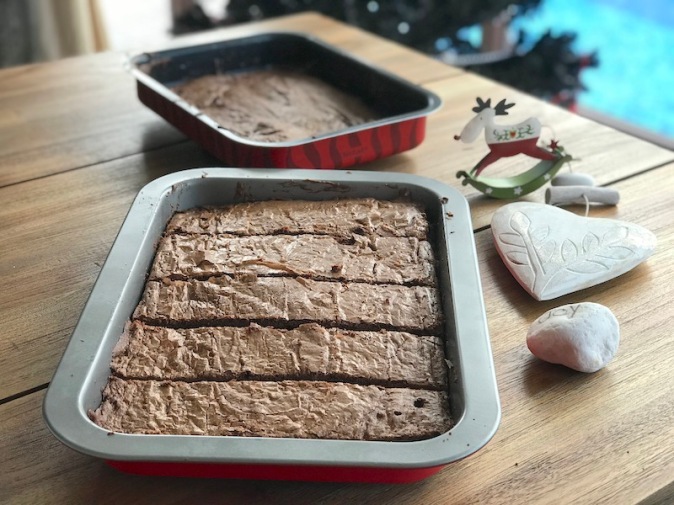
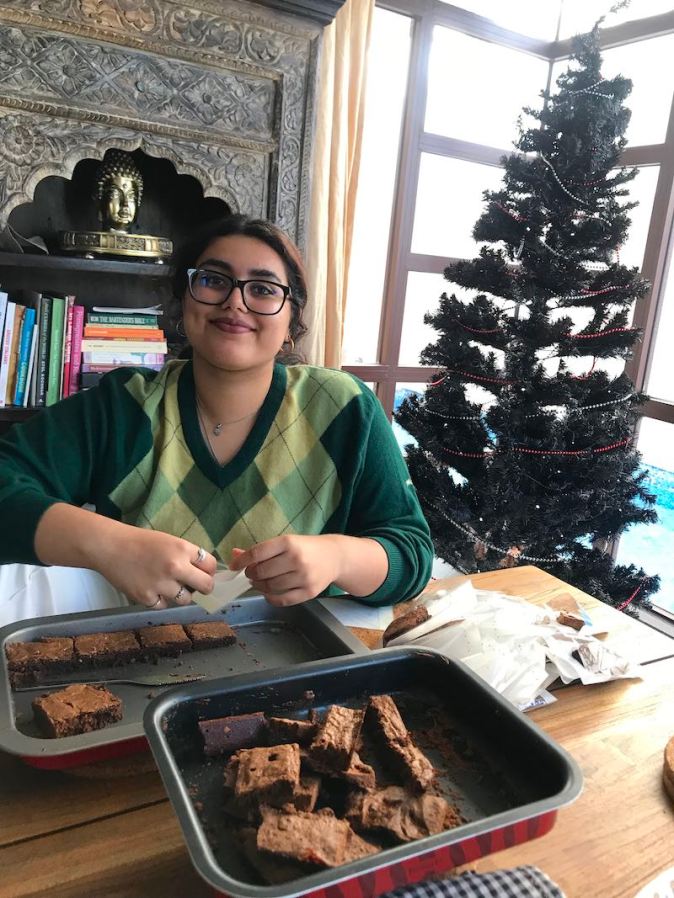
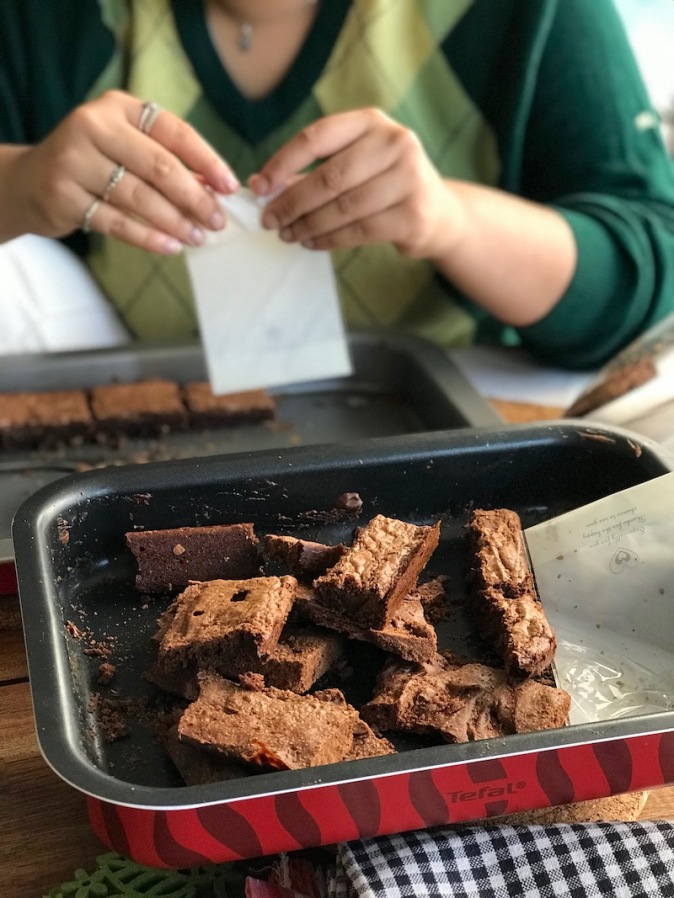
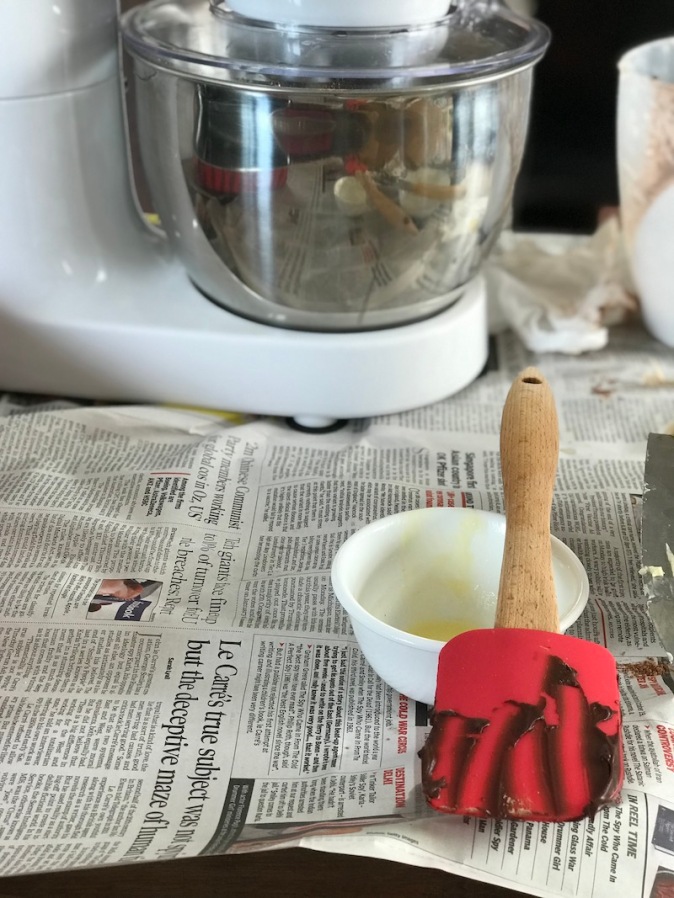
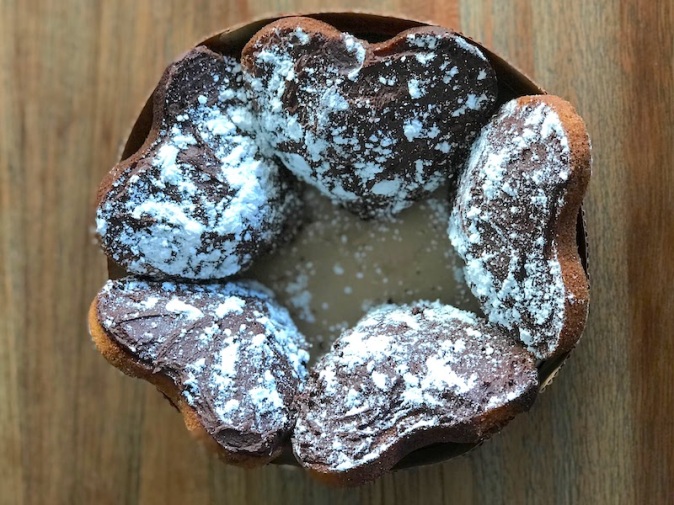
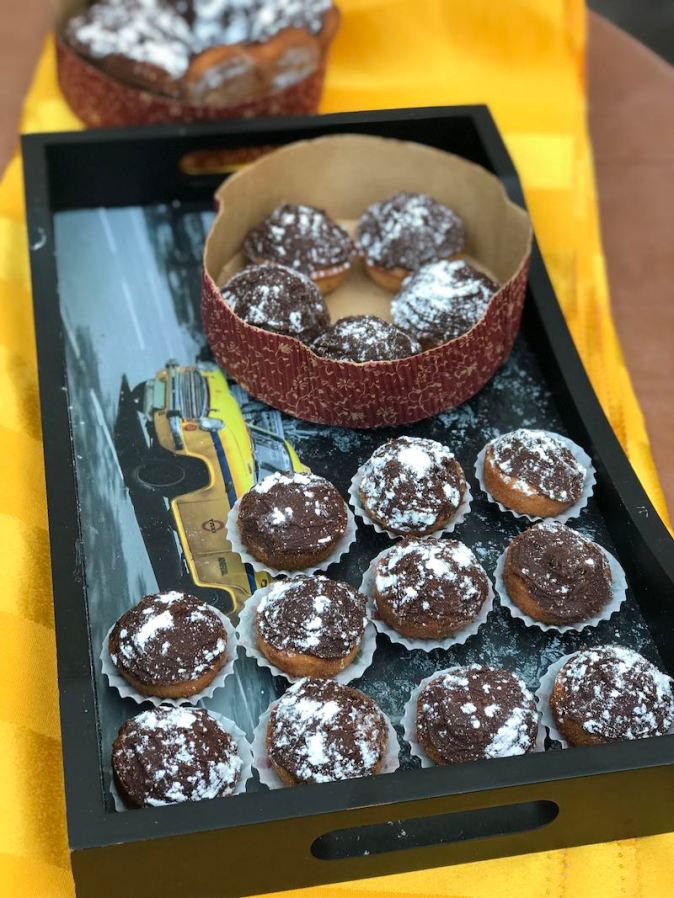
Celebrating Christmas at our home had also become an annual ritual, much like the Bijoya get togethers. This was an honour that was conferred upon us after our return from Germany! An elaborate spread surrounding the roast turkey, mulled wine stirred by a close friend, Christmas rum balls made by another friend, cookies by Lil Z, our garden lit up in fairy lights, s’mores in the bonfire and an impromptu skit by the children and carol singing by all those gathered … our Dubai home embraced it all. This Christmas was a bit different in that sense, reflected beautifully in Big Z’s Facebook update…
We had a family Christmas this year instead of having a Christmas party with friends. We opened gifts in the morning, went back to sleep, ate a yummy lunch, baked for hours, cycled for a bit and then ate turkey for dinner. Lil Z organised easy activities like crafts and cookie icing whilst I screamed Christmas songs at the top of my lungs. Even though today was simple and relaxed, it was super fun. I actually enjoyed this family Christmas more than normal parties because it was slow and felt like a longer Christmas day than normal. Of course, we played with Brownie and he sat under the table waiting for scraps of food and went out on his first walk in a couple of weeks. Throughout it all, for the first time since Cinder left us, I still had fun while remembering him and how wonderful last year was with him.
I realised that while preparing for all the get togethers at our home, whether it was for Bijoya, Christmas or any birthday celebration, I put all my heart and soul into cooking the food and I set out with a lot of intention. This year, everything was different. There were too many things happening all simultaneously in my life that sometimes I am just surrendering to where’s life taking me rather than what I should be doing / or what I want to do. Big Z’s post also made me realise that sometimes in trying to bringing everyone together in the past, no matter what my intentions were … we didn’t get the time to be with each other. This Christmas too, I spent the whole day cooking but somehow, we felt as if we are all together.
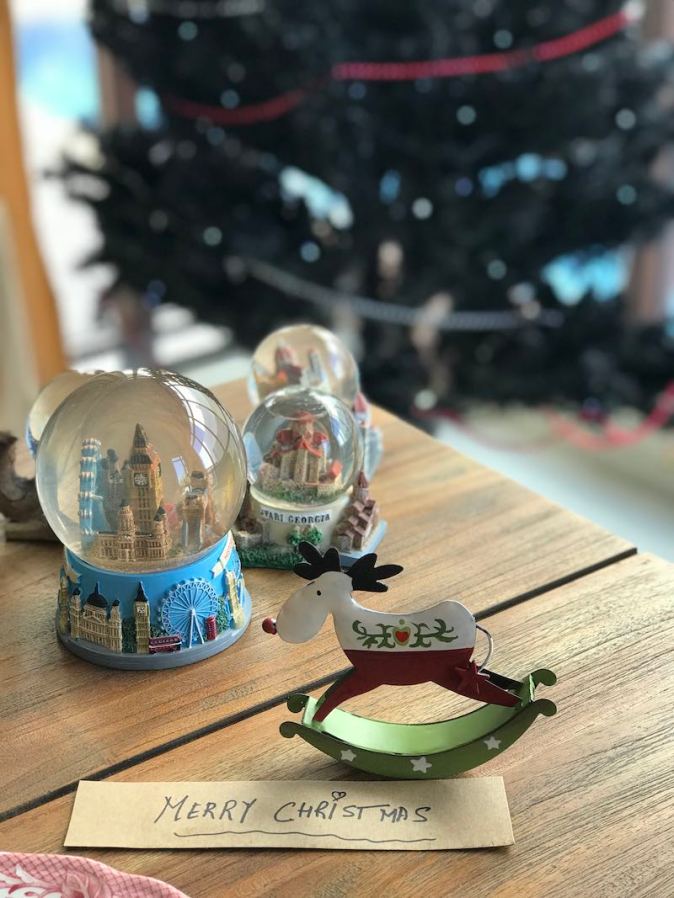

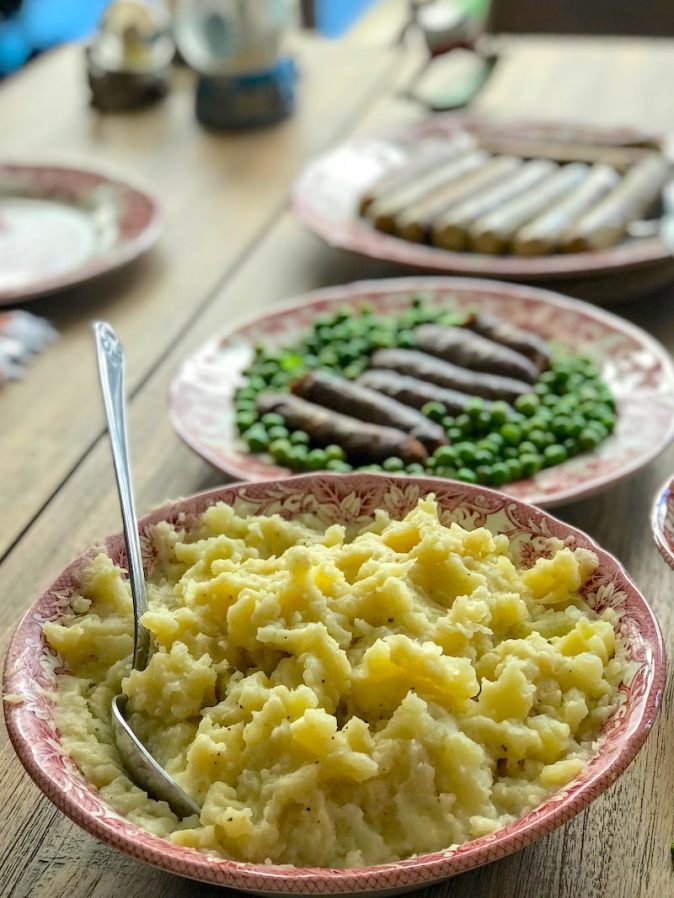
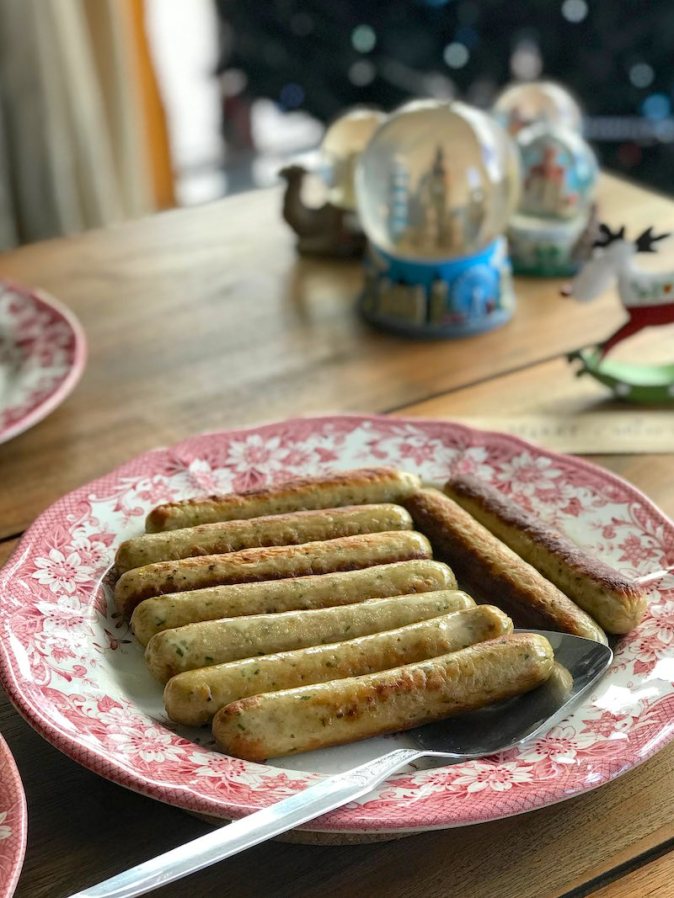
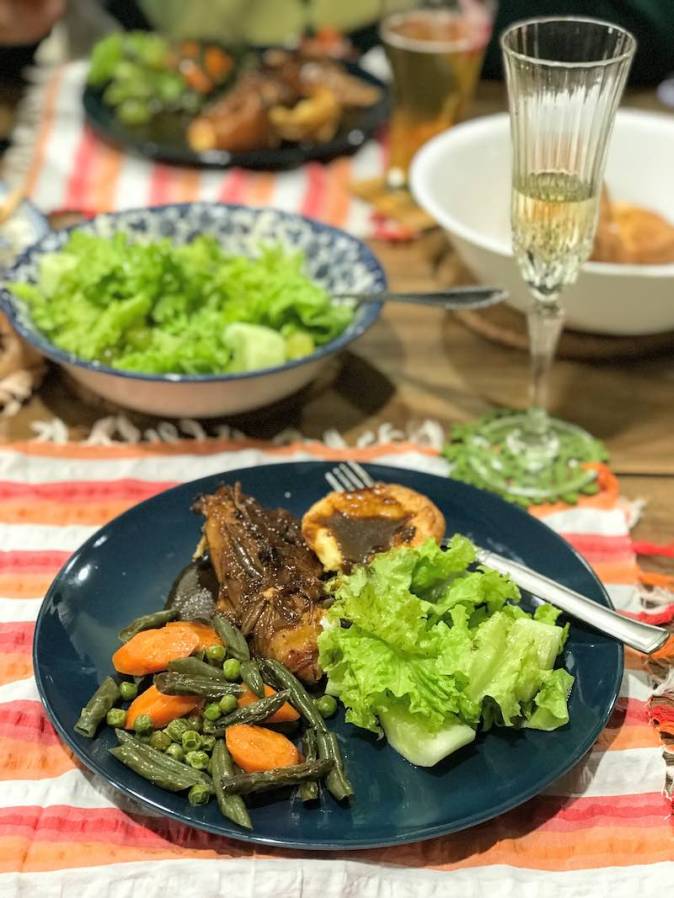
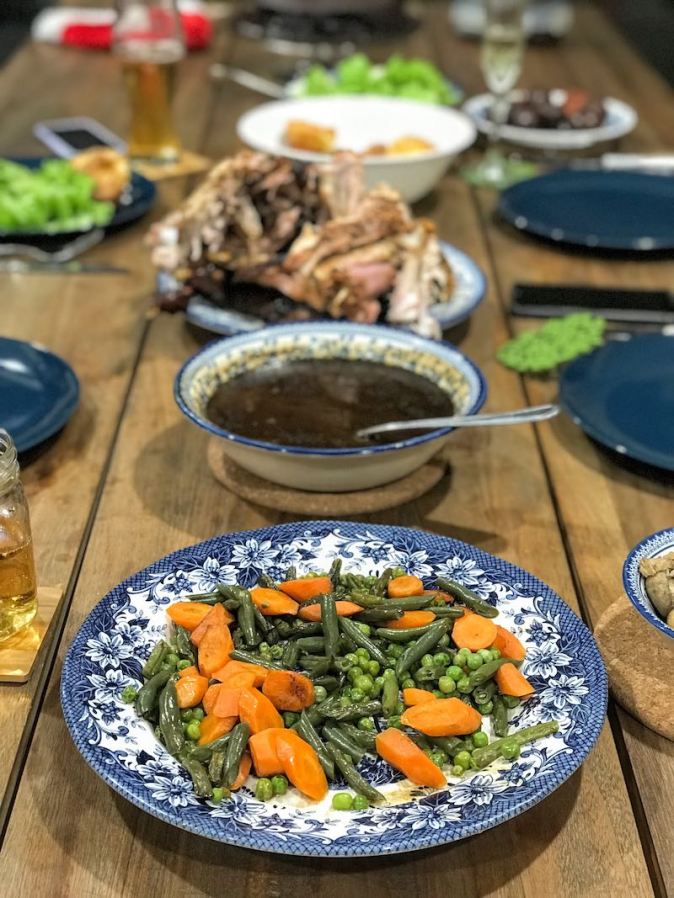
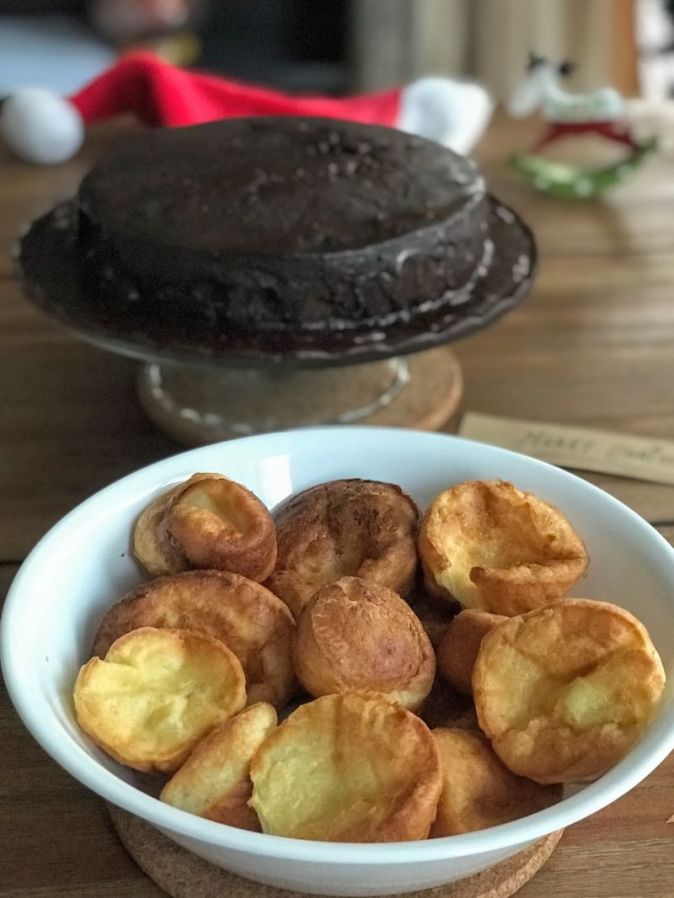
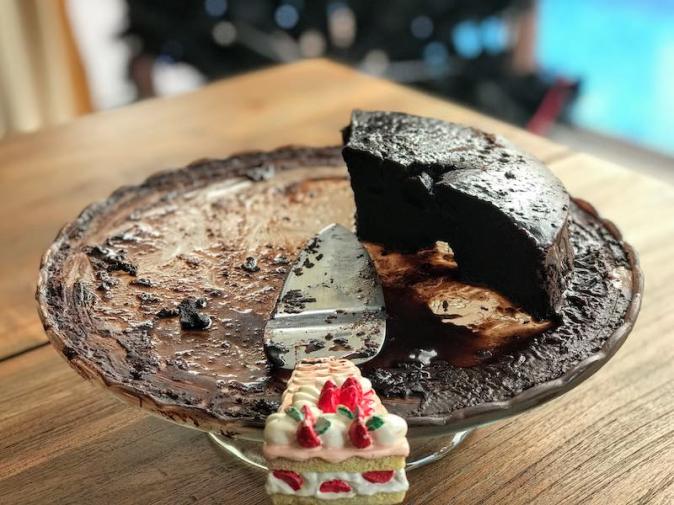
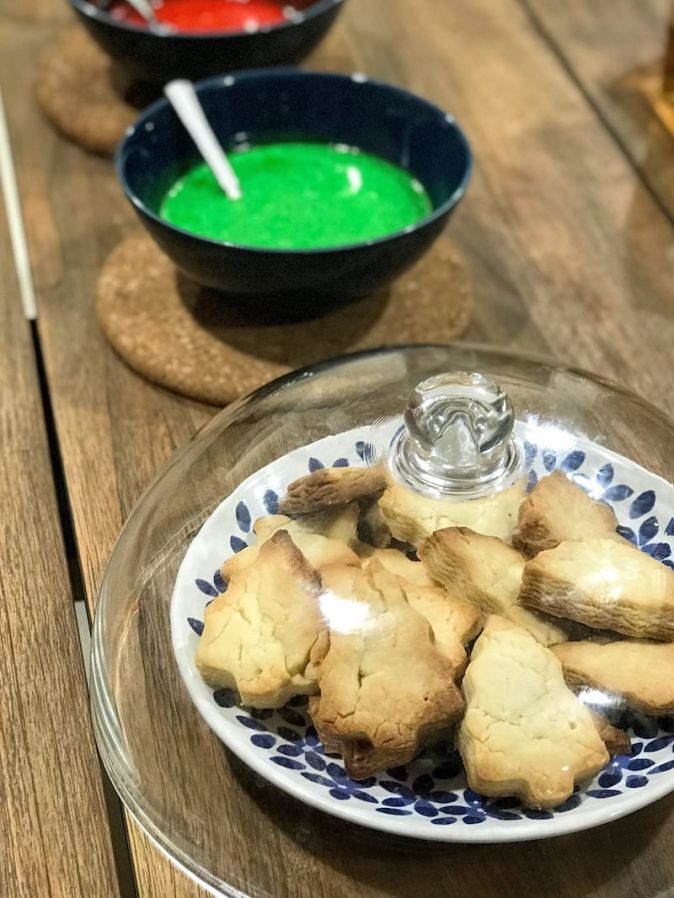
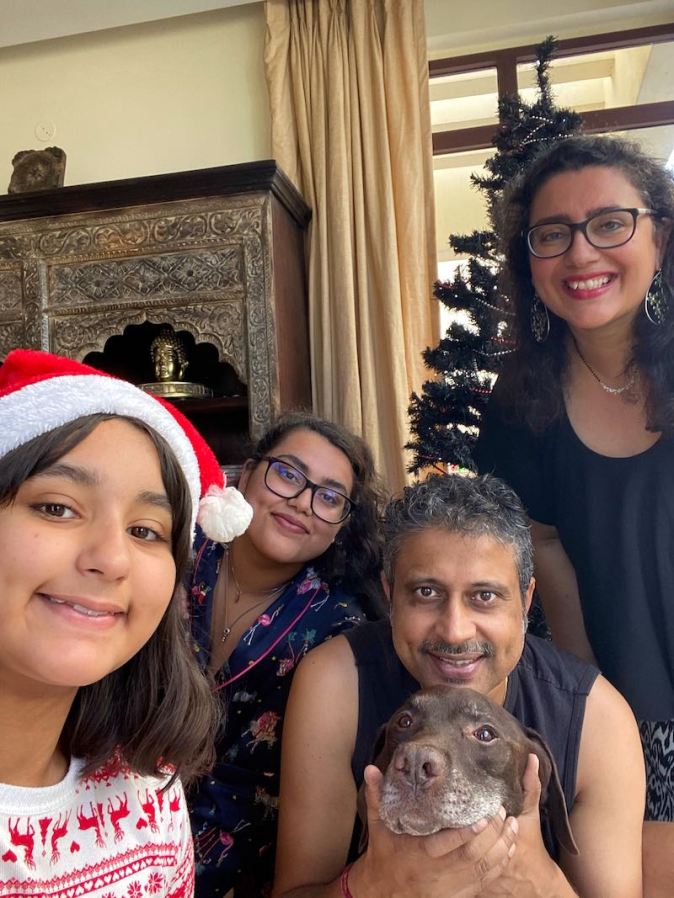
It was a fairly elaborate Christmas lunch with mashed potatoes, green peas, German pork sausages – both spiced and non spiced, spicy meatballs and Zwiebelsosse, a typical German onion sauce that I learnt to make when we lived in Frankfurt. We ordered the sausages and meatballs from a Bangalore based company called Meisterwurst. For dinner, it was a roast turkey, steamed vegetables and mushrooms in white sauce. Big Z also made some Yorkshire pudding to be had with the turkey gravy. The Bearded Biker carried on with his legacy of shaving the turkey like every year… alibi a smaller audience this time. Big Z’s chocolate cake and Lil Z’s cookies with DIY icing signed off the festive dinner splendidly. There was so much of happiness in the simplicity of it all. We also ushered in 2021 in a similar manner – cozy, at home with the five of us. Yes, finally we are at our home in Chennai. And guess what? I am also mishti doi ready in our Chennai kitchen… I have bought some claypots on my day out to ECR the other day with my lovely friend I have made from the community. The objective is very simple… to try out my first batch of bhapa mishti doi and to make some new friends!
May 2021 bring in lots of joy and happiness in your lives… and let’s stay connected more than ever – spicier, sweeter and stronger!
Unblogging it all… Ishita
Thank you for joining me on my daily food and travel journey on Pinterest, Instagram, Facebook and Twitter!
Recipes that you might like making for the New Year: Happy Cinnamon Rolls that you can make at home Homemade Bread with Sprinkled Sesame – an ever evolving romance Stuffed Chilli Spring Rolls – because a little spiciness in life is sweet Kogel Mogel recipe Bhapa Mishti Doi
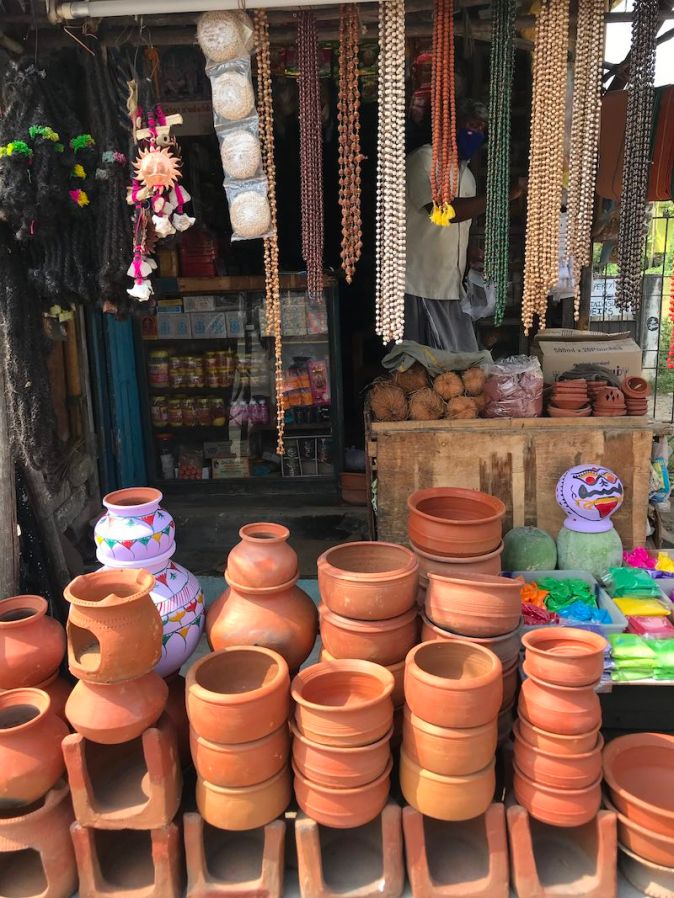 Disclaimer: This isn’t a sponsored post, nor are there any affiliated links for any of the brands that may have been mentioned in this blogpost. The subject, story, opinions and views stated here are my own and all images are from my personal album. While you enjoy reading my posts with lot of visuals, please do not use any material from these posts.
Disclaimer: This isn’t a sponsored post, nor are there any affiliated links for any of the brands that may have been mentioned in this blogpost. The subject, story, opinions and views stated here are my own and all images are from my personal album. While you enjoy reading my posts with lot of visuals, please do not use any material from these posts.
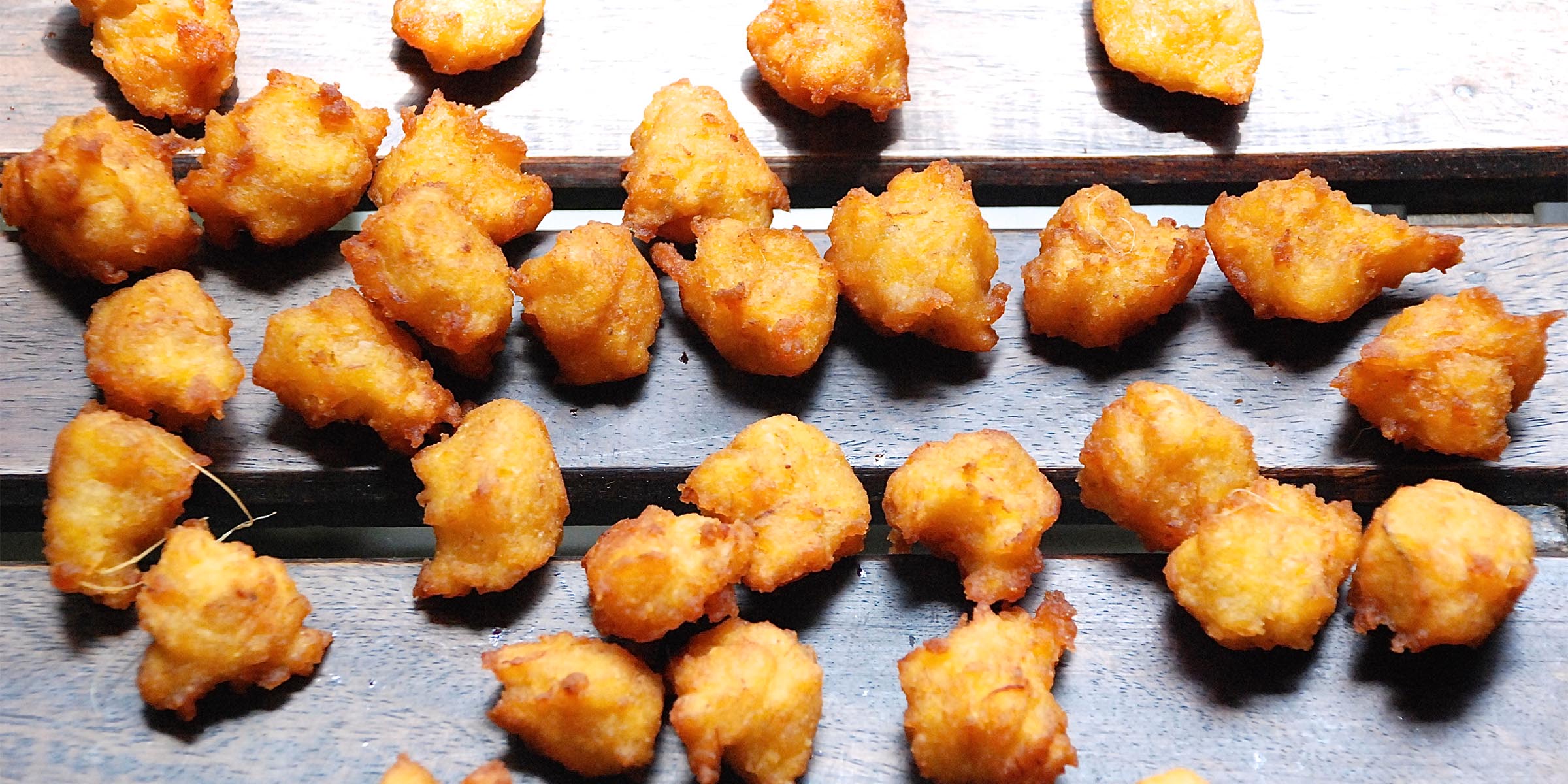
When Janmashtami or the annual celebration of the birth of Lord Krishna is in full swing, these fried mini Taler Boras make their entry… sweet – bitter – crunchy entry!
My attempt at another futile translation… Taler Bora. Palm Fruit Nuggets? The last time when I translated Phulko Luchi to Bengali puffed-up flour flatbread, I was sure that some of Luchi’s crispiness and fluffiness got lost in translation. So this time, can I simply say how I love these fried balls of deliciousness? Or how they might just become extinct, washed away by the more popular fritters and branded nuggets? Or shall I add to the already existing confusion – how will you categorise Taler Bora… under snack or sweet?
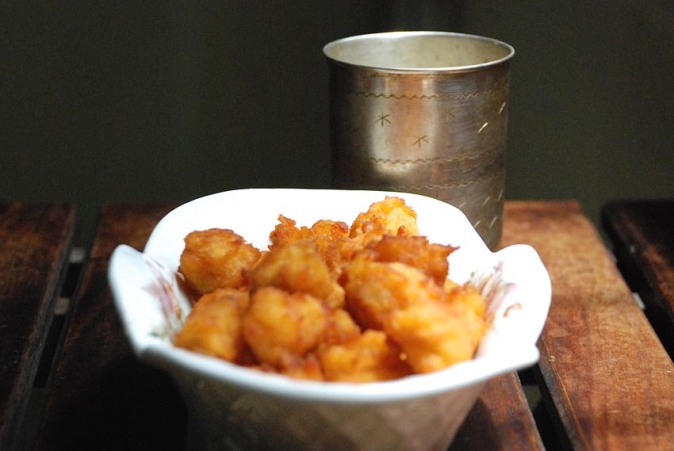
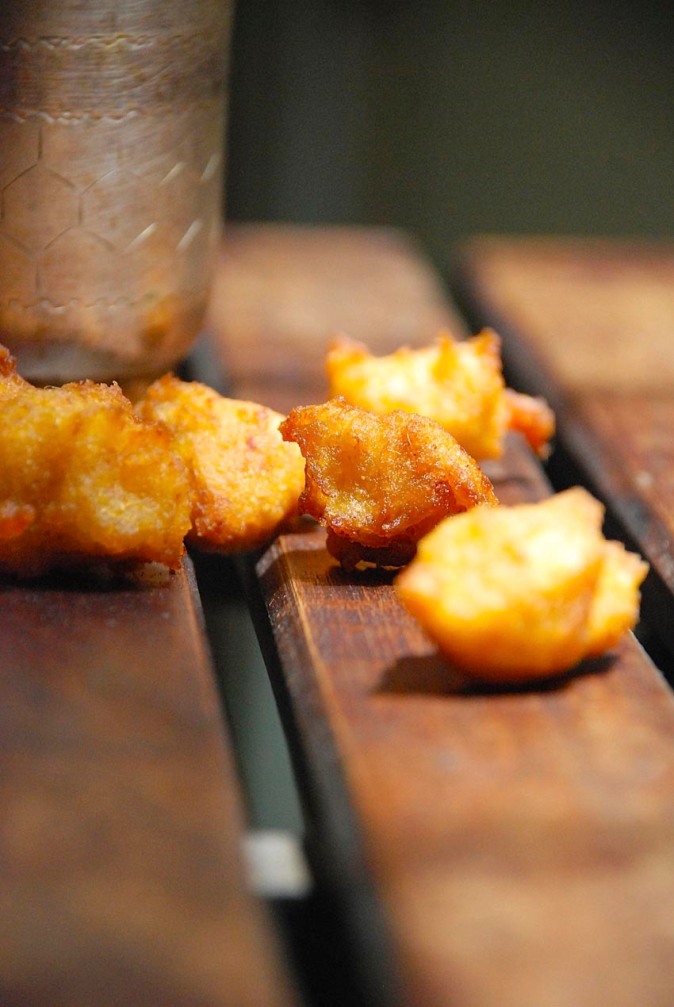
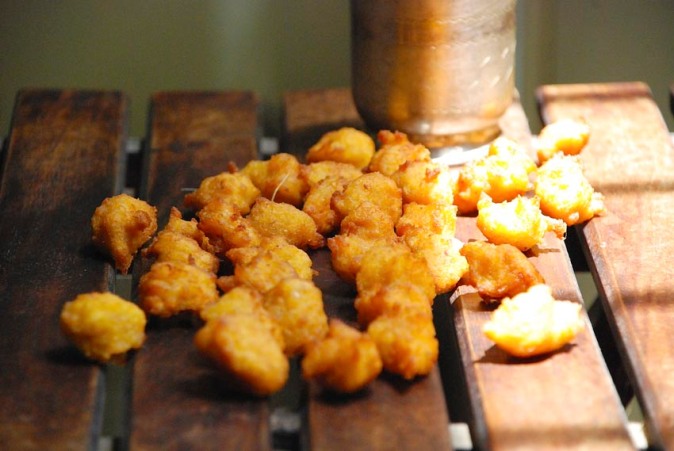
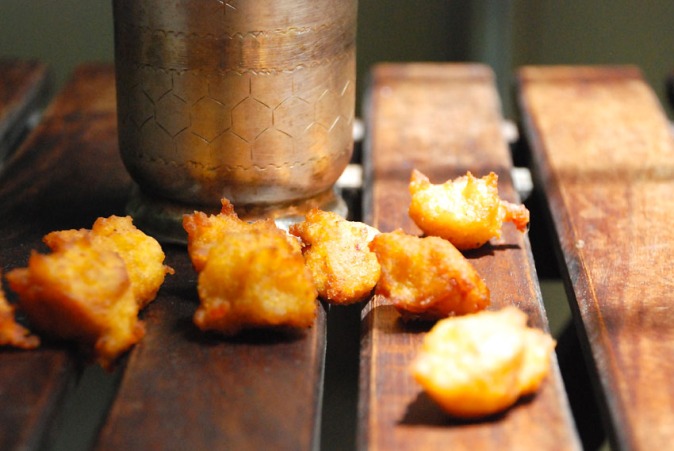
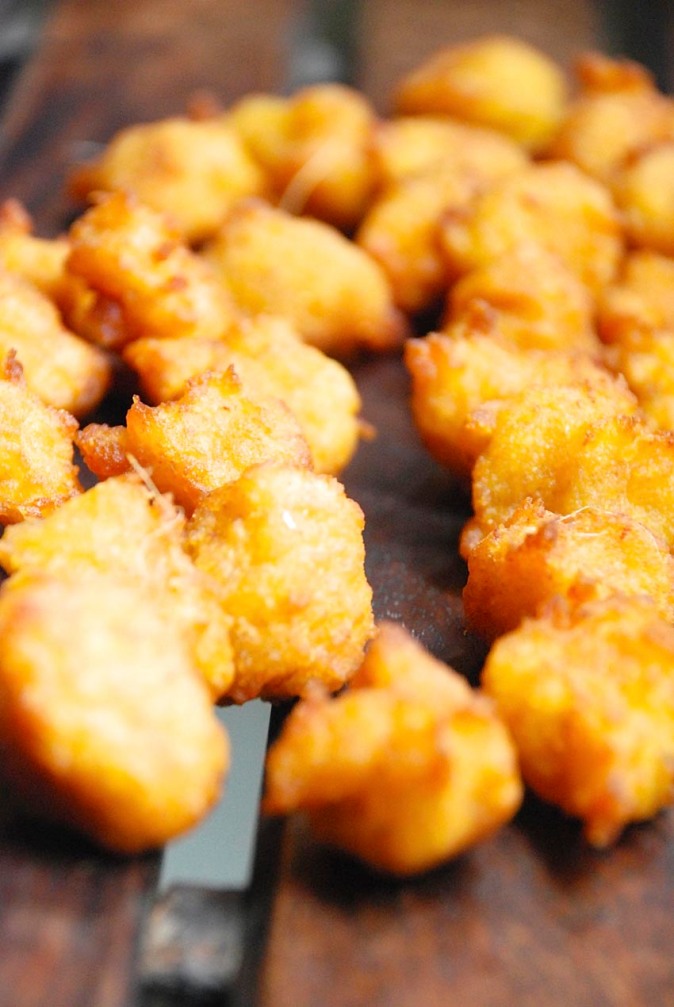
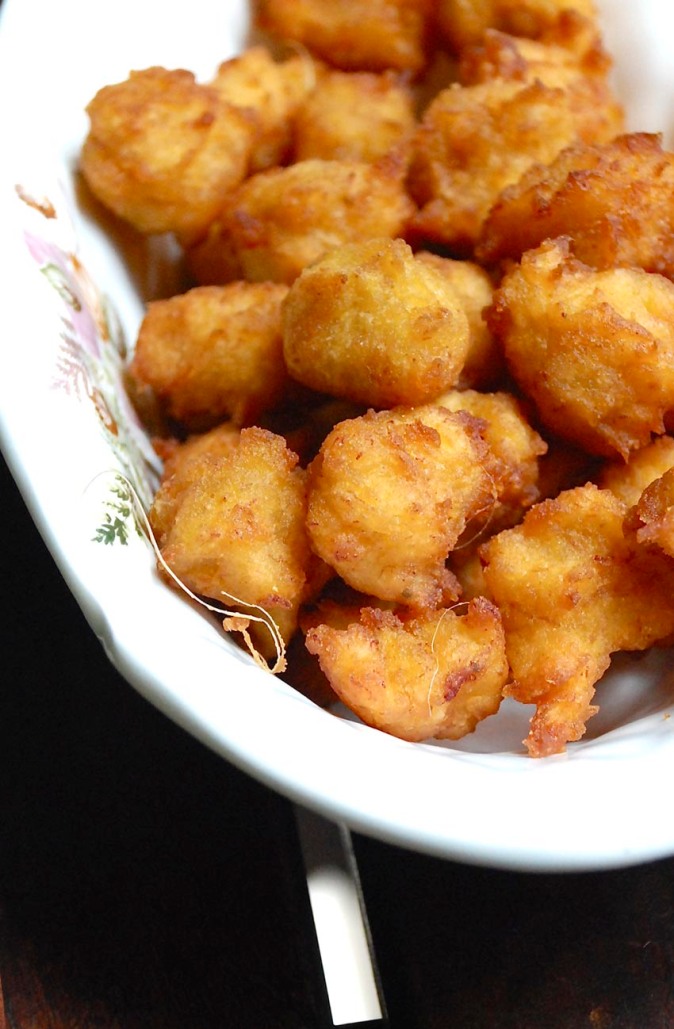
All I know for now, these are fried mini balls filled with love. Love from grandmothers and mothers belonging to the previous generation. Probably not my Ma though, who’s got other kind of cooking skills to her credit! During the monsoons around Bhadra maash (the Bengali month of Bhadra coincides with mid August onwards), when Janmashtami or the annual celebration of the birth of Lord Krishna is in full swing, these fried mini Taler Boras make their entry… sweet – bitter – crunchy – delicious – entry. We resort to Purnimadi, the wonderful lady who’s been cooking and looking after my parents for more than fifteen years. Purnimadi prepares Taler Bora, Taler Shaash and many other edible knick knacks that are typically associated with Janmashtami. She prepares all of these at her home and shares them affectionately with us.

Every year around July and August, we are in Kolkata. An indulgence that I have been referring to as my summer hibernation. The Z-Sisters and I stay on for a longer period, while the Bearded Biker is headed back to Dubai to join back work. The 10ft x 6ft balcony in my parents’ house overlook a lot of greenery that fools one into believing that there can be no cacophony on the road below the lush green foliage cover. One couldn’t be more fooled. All day long, the chayer dokan or the roadside tea stall across the road, are frequented by the locals, mainly parar chokras or the young men from the neighbourhood. Their day jobs seem to be just hanging around the tea stall and drink tea, accompanied by tea biscuits and rusks, which are very typical of these roadside tea stalls. It seems to me sometimes, that these never ending tea-refills must be coming for free!
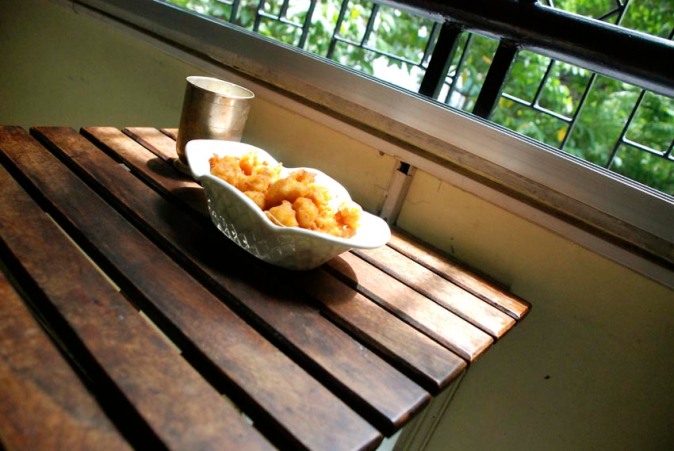
For both my patents, the balcony has almost the window to the world. I may be sounding over-dramatic but believe me, it really has become so. In the mornings, my Baba, a retired bureaucrat, enters the world of somebody else’s reality, by flipping through the pages of the several newspapers that he’s subscribed to. This is my Baba’s version of scrolling through his social media feed while a nondescript radio tuned into the local FM channel unceremoniously cuts into the birds chirping in the nearby Kadam tree (wiki describes it as Leichhardt pine, and coincidentally Lord Krishna’s favourite tree!). The branches of the Kadam tree seem to forcefully barge into the balcony, which is where we all converge during our tea times… and the candid photo shoots of Bengali food cooked at Ma’s kitchen.
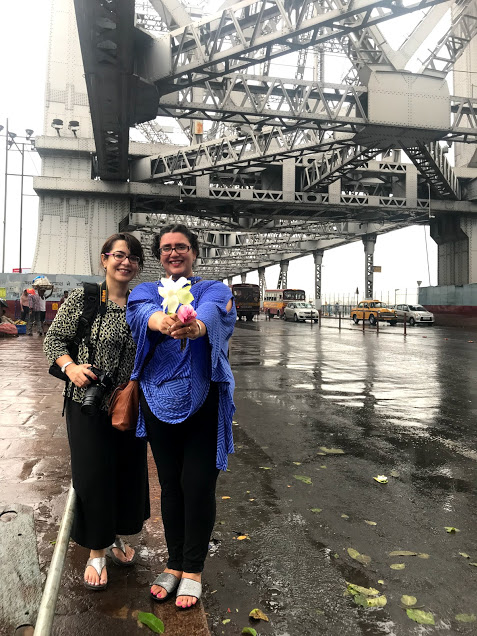 An early morning walking tour with Calcutta Walks last year at this time, along with my photographer buddy
An early morning walking tour with Calcutta Walks last year at this time, along with my photographer buddy
My annual summer hibernations in Kolkata are powered by addas – hanging out with family and friends. They are stirred by a whirlwind of emotions… kaleidoscopic journeys through Kolkata’s alleys and a whole lot of food stimulation. I am curious to know… are you at this hour, living in the city where you have grown up in? Or are you making a home in a different city altogether… far away from home? Wherever you are… keep safe and stay happy.
Don’t ever give up on any festive spirit or traditional recipes that connect you to your roots, no matter how hard it can be at times and how hard times are!
Unblogging it all… Ishita
Thank you for joining me on my daily food and travel journey on Pinterest, Instagram, Facebook and Twitter!
I would love you to see Kolkata through my eyes. Here's a rewind on some of my favourite Kolkata memories: Introducing Kolkata's street food in BBC Travel Show at Dacker's Lane; immersing myself in a surreal Ramadan Walk with Calcutta Walks; indulging myself in the colonial hangover at Flurys; diving into ice creams at my childhood ice cream parlour by the Ganges - Scoop; there's Dilipda's Phuchka, which is 'world famous in Kolkata' and last but not the least... hoping that unique bazars like Tiretti Bazar continue to thrive, where you can still find the last remnants of Chinese culture... but maybe not for long.
-
Taler Bora or Palm Fruit Nuggets
Category=snack/dessert; Cuisine=Bengali
Ingredients
1 ripe tal/palm fruit with 3 medium size kernels4 bananas1 cup suji/semolina1 ½ cup maida/flour1 cup sugar½ cup grated coconutwhite oil for deep frying or ghee (if you are generous!)Method
-
-
- Scrape off the skin of the palm fruit and squeeze out the fibrous pulp from inside. Use a sieve so that the pulp is smooth
- Squeeze the kernels in water before throwing them off, so that all the juice isn’t wasted
- Add the semolina, flour, sugar, grated coconut into the pulpy juice and mix them thoroughly to make a smooth batter. Add mashed bananas and mix them into the smooth batter
- Heat oil in a deep bottomed frying pan. Or ghee (oh yes, generously if you using ghee!)
- Make small balls (1 inch in diameter) and drop them slowly in the hot oil and fry them till they are crispy and golden brown.*
-
*Where will you get Palm fruit in Dubai? A few Indian/Asian stores like Lulu Supermarket, Adil and in the Fruits and Vegetable market in Deira or Backet in Sharjah. A few of the Spinneys outlets hold Market Days on Mondays and stock many Srilankan vegetables. My guess is, you might get palm fruits there as they are also used widely in Srilankan cuisine.
-
Disclaimer: This isn’t a sponsored post, nor are there any affiliated links for any of the brands that may have been mentioned in this blogpost. The subject, story, opinions and views stated here are my own and all images are from my personal album. While you enjoy reading my posts with lot of visuals, please do not use any material from these posts.
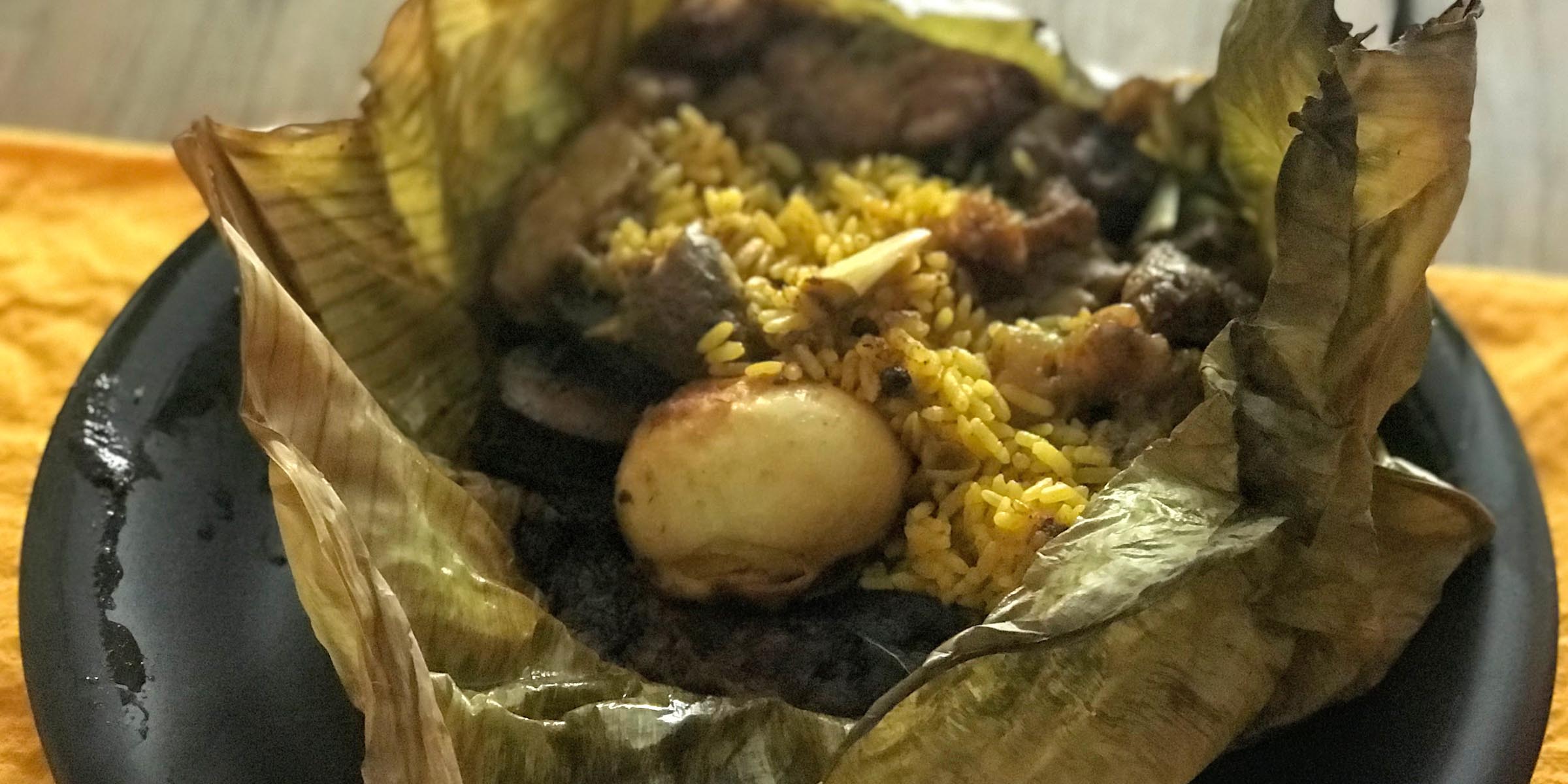
Cooking Srilankan Lamprais at home… what a delicious and elaborate tribute to the country where we set up our first home – Srilanka!
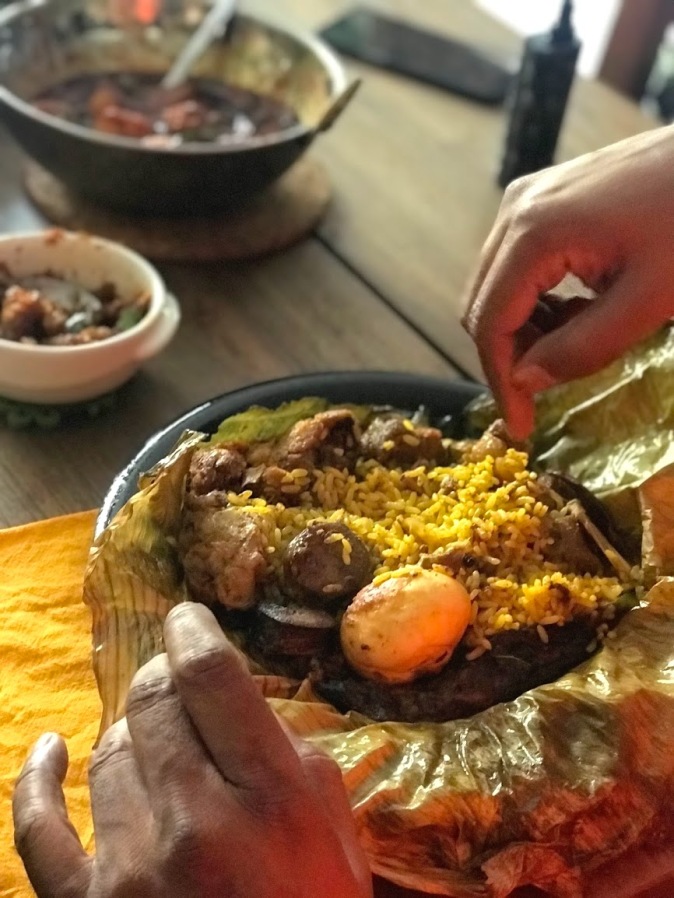
On the day of Guru Purnima when one pays homage to their gurus or teachers, I wanted to pay homage to a country that has taught me a lot – Srilanka! I cooked Lamprais and Deviled Prawns at home, both very popular Srilankan dishes… delicious and elaborate tributes to the country where we set up our first home. Lamprais is a rice preparation where Kaha Bath or yellow rice, along with Lampara meat curry, fried plantain cooked in coconut curry, Wambatu Moju or an eggplant preparation, seeni sambol, fish cutlet and others… all are delicately wrapped up in a banana leaf and cooked in an oven. A Dutch-Burgher influenced dish, Lamprais is a reminiscent of the Dutch colonisation of the island country. Cooking the Lamprais was much more time consuming than I had originally expected with so many things accompanying it. Digging into the lumped rice by hand was mandatory, at least in our home!
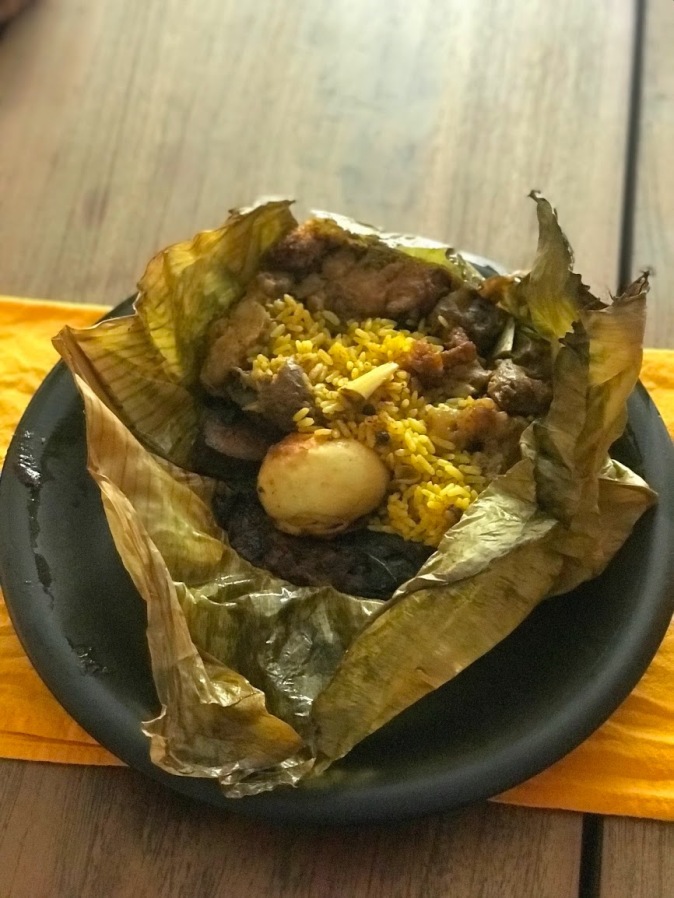 Cooking Lamprais is quite elaborate as there are several accompaniments with lumped rice
Cooking Lamprais is quite elaborate as there are several accompaniments with lumped rice
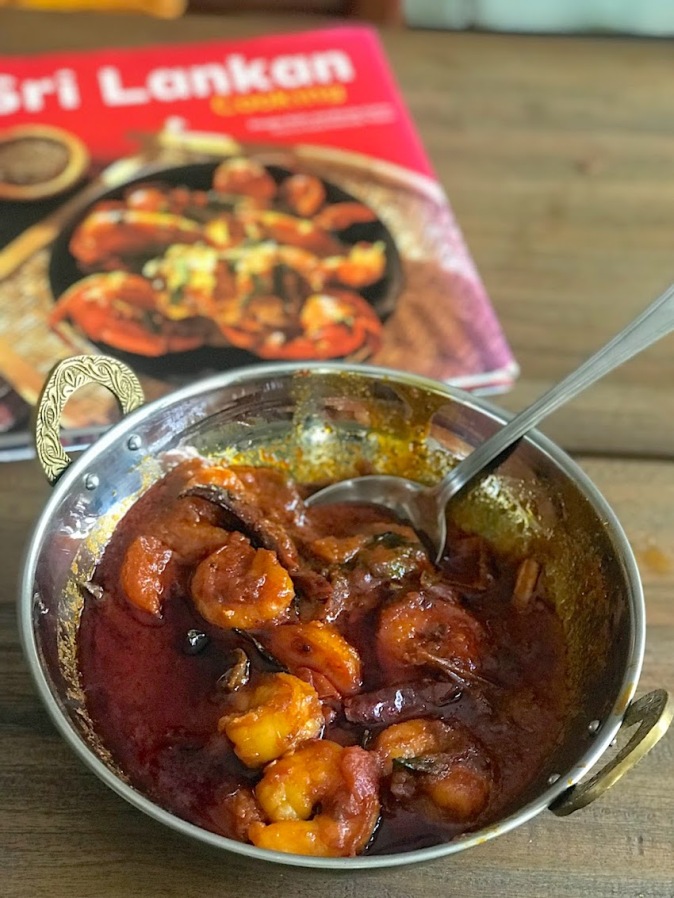 Spicy deviled prawns – Srilankans love their spices and I don’t think a Srilankan dish can ever be spicy enough!
Spicy deviled prawns – Srilankans love their spices and I don’t think a Srilankan dish can ever be spicy enough!
My Srilankan Sojourn – the pre digicam and smartphone era… does anyone even remember the era?
I landed in Colombo in January 1998, a few days after our wedding. This was my first trip to a foreign land and Colombo didn’t disappoint my idea of how ‘abroad’ looked – imported cars, beautifully marked roads, supermarket isles with neatly stacked glossy products, branded clothes and everything that I had imagined. What I hadn’t imagined was the intensity of the tropical lush greenery and verdant landscape, or the eternally smiling friendly faces – quite a contradiction to the regular army checkpoints at roadsides, where we were stopped frequently to show our identity cards. Carrying our passports with us became as natural as carrying our wallets and handbags – even to the neighbourhood grocery. The country was in civil war and waking up to news of bomb explosions far and wide was as normal to us as waking up to the birds’ chirping in our garden. S had been living in Srilanka for a while and was quite used to the on going situation. I found it rather disturbing initially. It was also difficult to explain to our parents back home during our weekly calls that we were – safe and doing fine. After the initial panic buttons were switched on for a while after such unprecedented events, I realised that life bounced back to our familiar understanding of normalcy pretty soon.
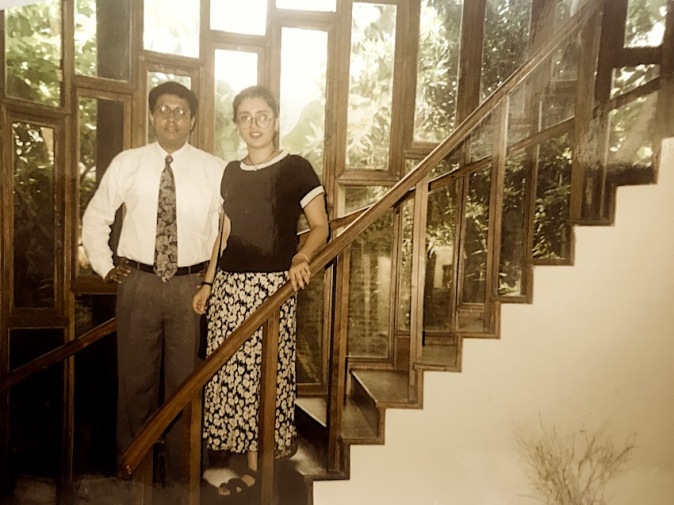
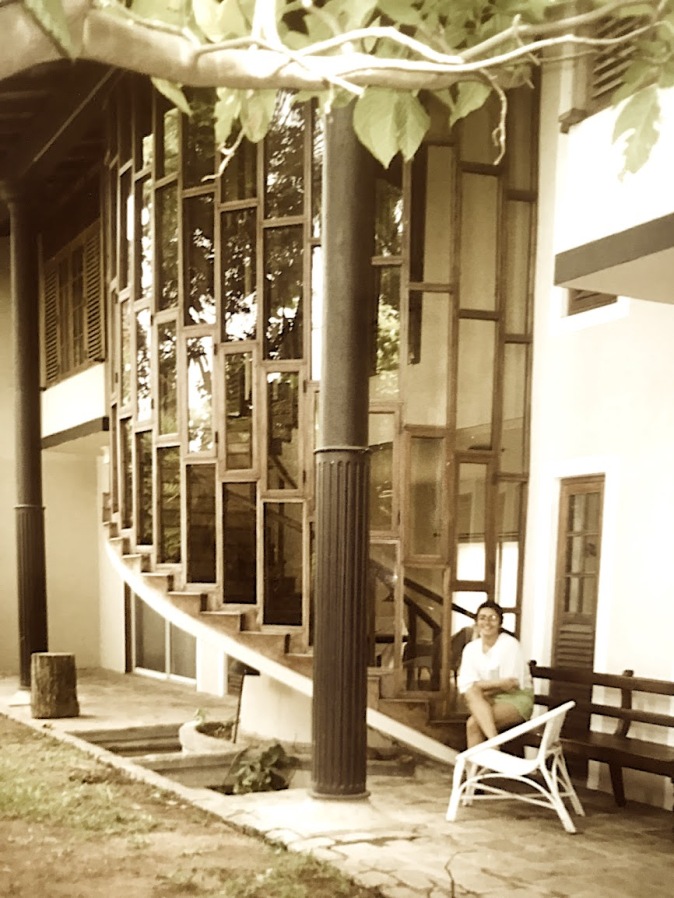 The beautiful staircase in our home at Rosmead Place – taken from both inside and outside
The beautiful staircase in our home at Rosmead Place – taken from both inside and outside
My 1st lesson in Srilanka … home is wherever the heart beats happily.
We lived in Rosmead Place in Colombo 7, a heavily guarded prestigious neighbourhood that housed a few embassies and residences of political dignitaries. Our house was beautiful and pretty huge. Much like the Magistrate’s House in Alipore, the house that shaped my childhood and honed my creativity, the house at Rosmead Place contributed to shaping my youth. It soon became my creative dream pad. S and his colleague, who became our close friend, were put up in this house at Rosmead Place by their office. Each had a bedroom to his own on the first floor with an attached bathroom, while they shared the rest of the house. The ground floor was a single unit – an open kitchen giving way to a living cum dining space. Our bedroom and the corridor leading to it, overlooked into the living room space below from above, much like an inner courtyard. The alcove windows with its wooden blinds overlooked a lush garden that encompassed the entire stretch of the house. Even before I moved in, our house had become a cool hangout spot with the wonderful Srilankan friends that the two boys had made in their initial year. Effectively, I invaded a boy zone and was welcomed whole-heartedly into the gang. Not a single chore was delegated to me. Cooking to doing the dishes post-dinner, everything was off my job list! Grocery was a fun outing together to the popular supermarket chains like Keells and Cargills Food City. The only designated chore for me, was supervising the cleaner who came once a week. He spoke in Tamil and didn’t know a word of English. I didn’t know a word of Tamil. I decided to converse with him in Bengali. Guess what? It worked!
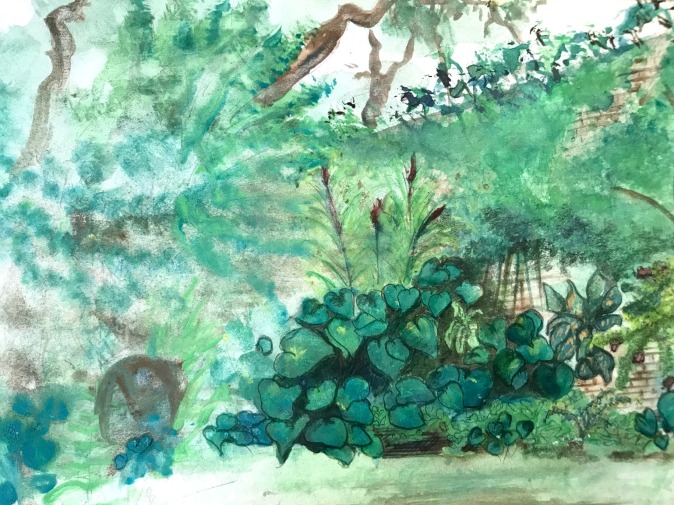 My painting of our garden which thrived on its own, fed and nurtured by short afternoon rain showers
My painting of our garden which thrived on its own, fed and nurtured by short afternoon rain showers
My purpose in life in those days was just to find out my purpose, which has changed its direction and flowed with the ebbs and tides of my life over the years. Quite naturally so!
I sketched and painted quite a lot. I slept occasionally during the days and dreamt during the nights. Once in a while, I cooked and while the boys were at work, I thought of ideas to innovate on our cooking techniques. To this day, the kitchen in our Srilankan house has been by far the largest kitchen we have had in our married journey so far, with the least number of gadgets. Not to mention our cooking skills, which were also at the lowest level. Fish wrapped in banana leaves and placed on a hanger, which was then set on a bucket filled with water with an immersion water heater… that was my genius kind of an idea for cooking steamed fish. We saved on the gas too! I haven’t ever shared this with anyone… I sometimes pretended that I owned the house, and similar houses in our posh neighbourhood. In a way, it was true. S and I set up our first home here, in spite of the fact that we were sharing it. The concept of ‘mine’ or ‘ours’ hadn’t crept in yet. When we got married, I didn’t have any particular notion or expectation of setting out ‘our own home’ or a separate home. My only reason to get married was that it allowed me to hang out more with S. I didn’t have to return home at a given time or rebuked for the long telephonic conversations late at night. In fact, S kept all the phone cards that nurtured our cross-country relationship through the year before our marriage when we were living apart – it’s quite an impressive stack!
My 2nd lesson in Srilanka … to intuitively ‘feel’ ingredients. Much like the different colours that went into a painting in different proportions and mixes, it was the same with ingredients. There was no right or wrong in cooking, nor only one technique. Like an artist continually evolving, a cook too, evolves.
I started making our meals occasionally, with the intention of helping out the boys. My first culinary bible in those days was a simple cookbook that my mum-in-law had gifted to both S and me, lovingly signed “Cook happily & Eat merrily”! The cookbook –N.I.A.W. (National Indian Association of Women) Cookbook was a compilation of recipes from different cuisines around the world. The recipes were simple, easy to follow and there were no pictures. This is the cookbook I most refer to, even today. Those days, I didn’t have much experience in cooking, except making instant noodles or scrambled eggs. This was quite typical of most Bengali families in my known circuit when “porashona kora/studying” superseded everything else in a child’s life, especially for girls. I didn’t fear cooking, nor was I ever anxious about a dish turning out wrong. My principle was simple – if following a recipe, cream custard turned into a sorbet in my next attempt, I presented that smartly as a dish I had planned it to be! There was always something to learn from an experience and that was the great fun. Any dish that I liked soon became my culinary reference point, be it cooked by my mother, mum-in-law, friend or relative or I would come across while travelling.
In course of time, cooking became my favourite subject for experimenting and connecting to people, known or unknown.
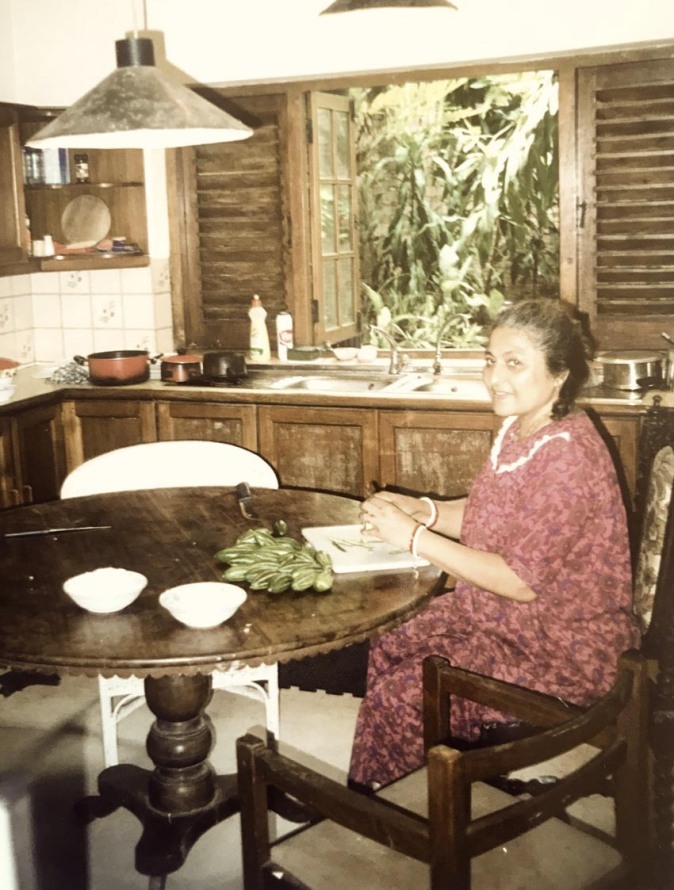 Mum-in-law cooking potol that she brought from Kolkata
Mum-in-law cooking potol that she brought from Kolkata
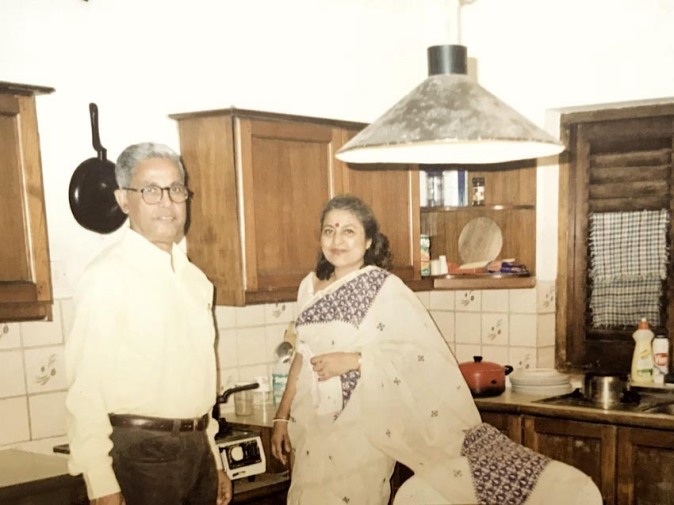 My parents-in-law dressed up for a formal dinner. The kitchen has always been our happy space!
My parents-in-law dressed up for a formal dinner. The kitchen has always been our happy space!
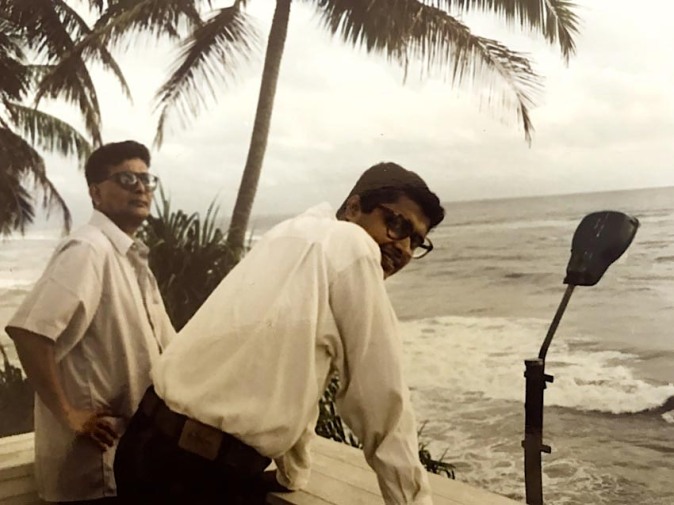 At the heritage property Mount Lavinia Hotel for a sundowner with my father
At the heritage property Mount Lavinia Hotel for a sundowner with my father
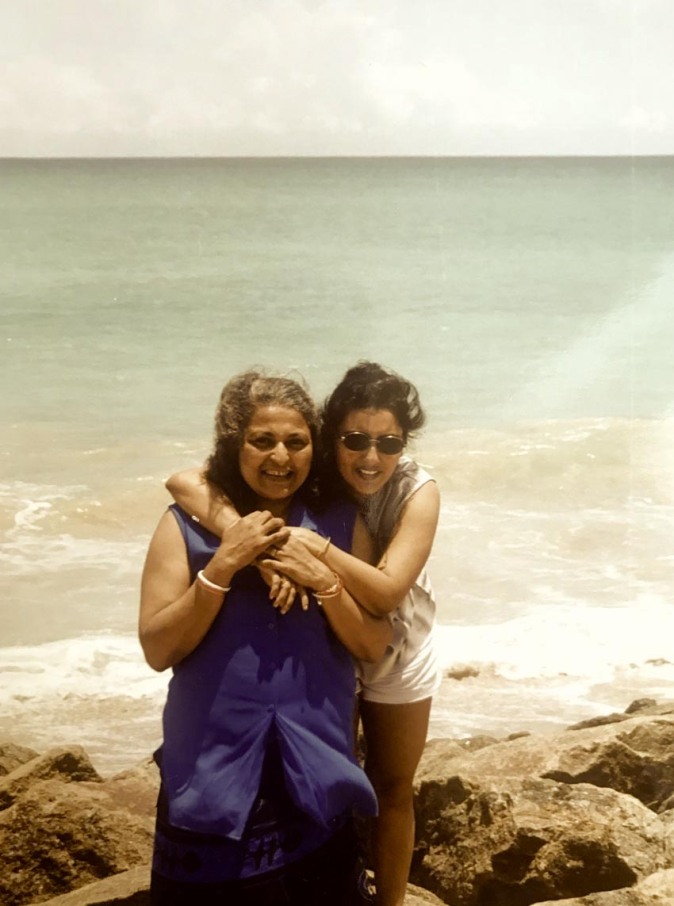 With my mum-in-law on our trip to Galle
With my mum-in-law on our trip to Galle
When my parents-in-law visited us, our kitchen soon became the focal point for all our hangouts and late night chit chats. We ‘binge-devoured’ on traditional Bengali meals cooked by mum-in-law. The first episode of the subsequent future seasons of her carrying potols and other typical Bengali food items in her suitcase when Ma visited us in different cities where we set up home, started from our Colombo days (here’s a story of food, love and good memories travelling in our suitcases)! I accompanied them back to Kolkata to celebrate my parents’ 25th anniversary on the condition that my father would drop me back to Colombo. We wanted everyone in our families back home to visit us in Colombo – such was the charm of the island and the house that we called our home!
My 3rd lesson in Srilanka… to grace kindness, humility and faith on a daily basis.
Our Srilankan friends showered us with immense love. Every person we met, was friendly, kind and smiling. While at home, we were surrounded by giggles and laughter, we were surrounded by joy in spite when we stepped out. This was despite all that was happening in their lives. We heard from how the civil war and the conflict in Jaffna affected the people. Every family had some incident to share that was a result of the conflict. Amidst all these conflicts however, what struck to me was how they had an unflinching faith and hoped for peace in their beloved island.
Discovering Srilanka
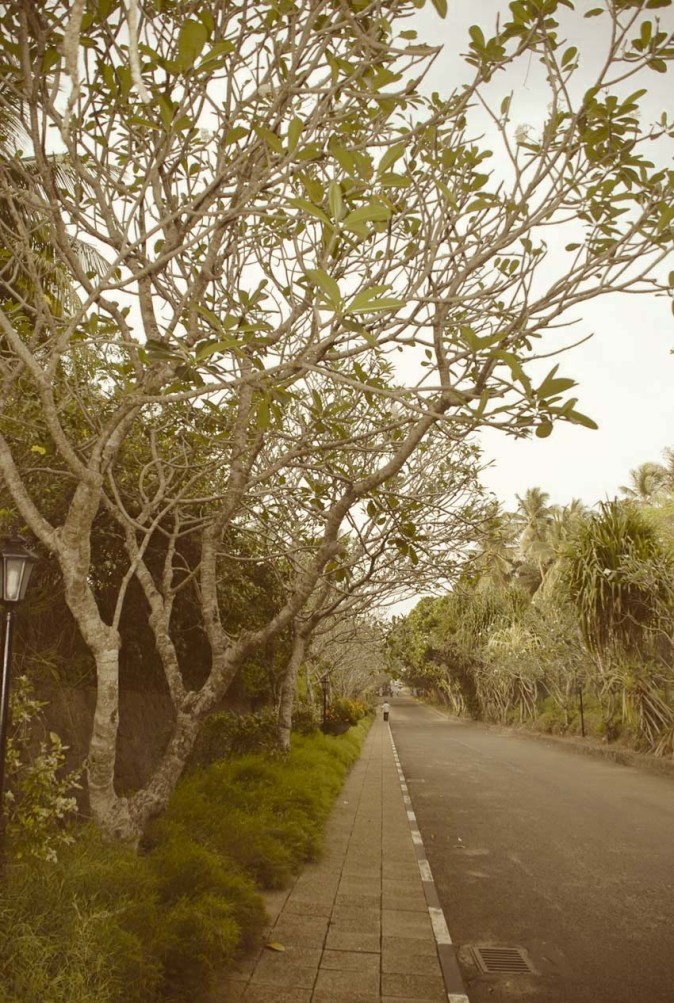
Colombo… the starting line
In the course of the year, I explored Colombo and Srilanka as and when S’s work permitted. While the city was new to me, S already had his favourite spots, which he proudly introduced me to. Ice cream sundaes at the dessert parlour Carnival in Galle Road, my first ‘food court’ meals at Liberty Plaza Food Court, tuk tuk rides to the seaside promenade Galle Face over the weekend (here’s my love story on tuk tuks!). The tuk tuk drivers would mistake S for a local and charge us the regular fare. On realising that we weren’t, they would start renegotiating! On our occasional visits to the lakeside Buddhist temple Gangaramaya, I learnt to emphasise on faith rather than any particular religion. Leaving spirituality aside, the material girl in me loved visiting Odel, the famous Srilankan department store. A short walk from our house, I loved the scented candles, colourful sarongs or their eclectic range of accessories. Every product on Odel’s self seemed to reflect the characteristics of the island and that really inspired me.
Bentota and Galle – the seduction of coastal Srilanka
 Galle’s colonial past is reflected in the architecture of its houses and fortifications
Galle’s colonial past is reflected in the architecture of its houses and fortifications
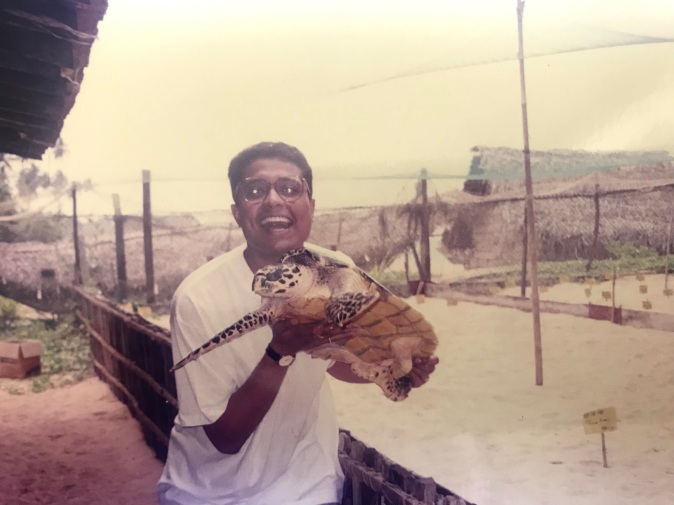 Many endangered species of turtles have been nurtured at the Turtle Hatchery Project at Bentota Beach
Many endangered species of turtles have been nurtured at the Turtle Hatchery Project at Bentota Beach
Our first trip out of Colombo was to Bentota, a laid back seaside town on the southwest coast. We stayed at the Serendib Beach Hotel, a causal beachfront property designed by the world famous architect Geoffrey Bawa. The architecture was characteristic of Bawa’s signature style – simplicity and a blend of the surrounding landscape. Our room on the ground-floor overlooked the serene sea through a grove of swaying coconut trees. Beach barbecues, grills of fresh catch by the table – specially King Fish, watching the locals scaling up coconut trees to tap toddy, sunsets over the sea, late night strolls by the beach and… watching one day old turtles in the nearby Turtle Hatchery – these are just a few of my favourite ‘Bentota’ memories from a long list. A day trip to the Galle situated on the southwest tip of the island, completed our first trip outside Colombo. Built in 16th century by the Portugese colonists, the old town of Galle with its historic fortifications, is inscribed in the UNESCO World Heritage list. Galle’s colonial past was reflected in its architecture and magnificent fortifications. The Portugese had arrived in the 16th century, the Dutch in the 17th century and subsequently followed by the British in late 18th century. The Portugese styled white-washed houses city exuded an old world charm. The Galle Lighthouse, standing tall on the fortification rampart, was one of the oldest in the country and still in use.
Kandy – a UNESCO World Heritage Site and an alluring ancient capital
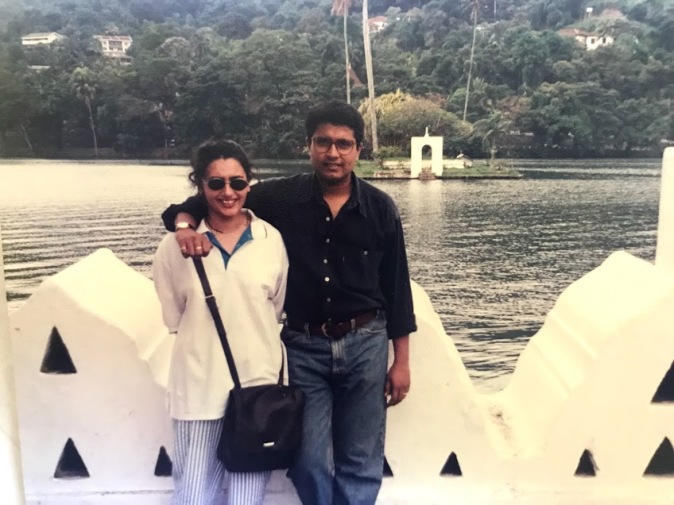 Kandy Lake is encircled with a decorative white parapet that resembles clouds. Built in early 19th century, there are many folklores associated with the lake
Kandy Lake is encircled with a decorative white parapet that resembles clouds. Built in early 19th century, there are many folklores associated with the lake
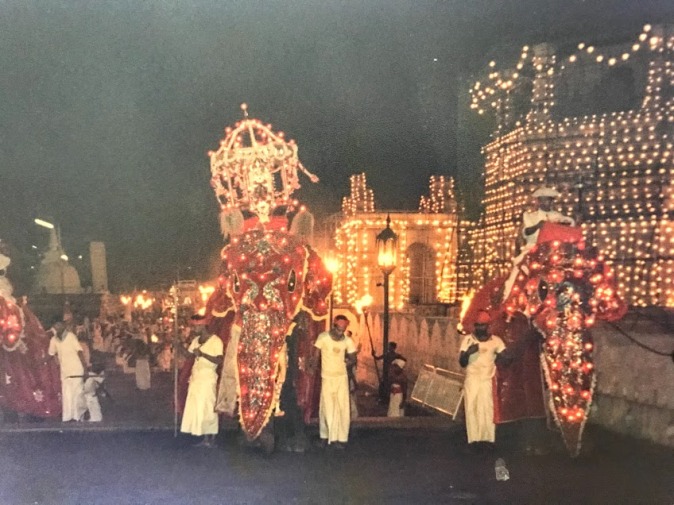 Kandy Esala Perahera or The Festival of the Tooth is a spectacular procession paying homage to Buddha’s sacred tooth relic
Kandy Esala Perahera or The Festival of the Tooth is a spectacular procession paying homage to Buddha’s sacred tooth relic
In August, we took a trip to Kandy, situated three hours away from Colombo amidst the scenic hills of Srilanka. We had booked into a B&B run by one of S’s colleague’s grandparents. The sacred city of Kandy comprising of The Temple of the Tooth Relic was another UNESCO World Heritage site. When we visited the temple, it was still reverberating from the damage left behind by a militant attack earlier in January, the same year. The shrine housed the relic of the tooth of the Buddha and was considered one of the holiest temples in Srilanka. We had planned our trip to coincide with Kandy Esala Perahera or The Festival of the Tooth. Held annually in July or August, the Perehera is a spectacular procession held annually to pay homage to Buddha’s sacred tooth relic which is carried in a golden casket by an elephant. We queued for hours so that we could watch the mesmerising procession standing in the first row. Elephants dressed up in ornamental garments, local folk as well as traditional Kandyan dancers, drummer dancers, fire dancers and many such heart stomping show-stopping activities were part of the procession. We walked the entire circumference of the picturesque Kandy Lake, a manmade lake with an island in the middle. Built in the medieval era, the lake was encircled with a decorative white parapet that resembled clouds. A beef preparation with kankun (water spinach) that we tasted in a restaurant that overlooked the lake and the simple breakfast at the guesthouse with homemade jams and Kiri Peni, a dessert made with curd and palm sugar treacle, still linger on my tastebuds.
Sinharaja – of hikes and forest trails
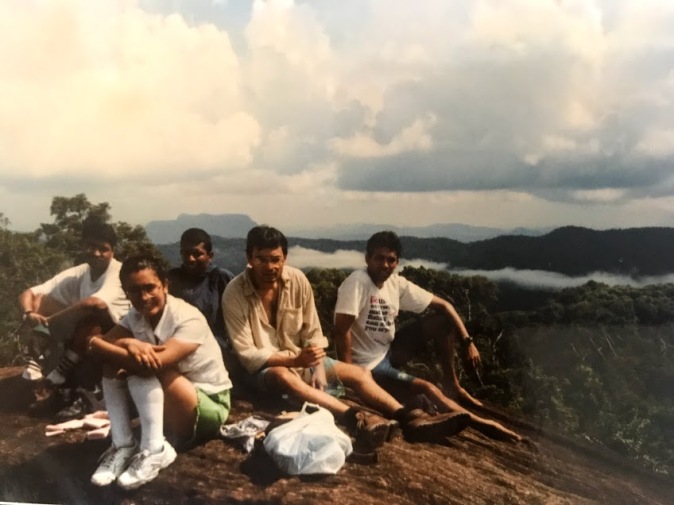 A small break while hiking in the rainforest. My need for wearing those long, thick football socks? Bloodsucking leeches, of course!
A small break while hiking in the rainforest. My need for wearing those long, thick football socks? Bloodsucking leeches, of course!
 The dense rainforest in Sinharaja National Reserve is home to many endemic species and sixty percent of the island’s endemic trees
The dense rainforest in Sinharaja National Reserve is home to many endemic species and sixty percent of the island’s endemic trees
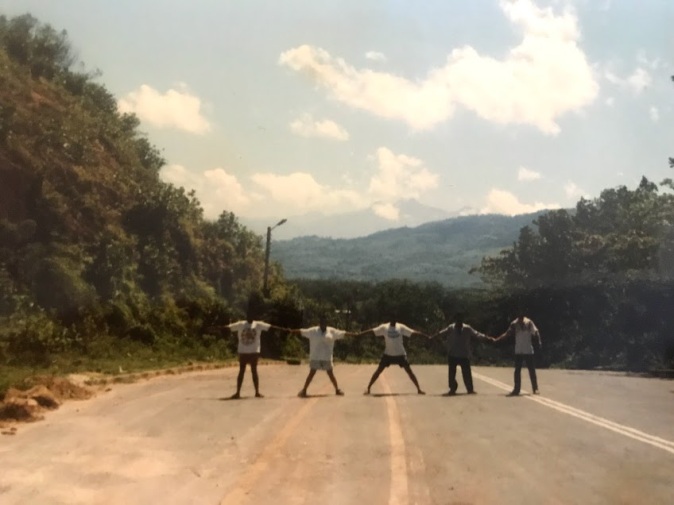 Posing on the highway – nothing is more exhilarating than outstretched hands without any inhibition
Posing on the highway – nothing is more exhilarating than outstretched hands without any inhibition
We went on a hiking trail once with the gang to the dense rainforest in Sinharaja National Park. Recognised as a World Biosphere Reserve as well as a World Heritage Site by UNESCO, the experience was thrilling. Gushing waterfalls and breath-taking views of the forest cover from vantage points made for several gorgeous photo-ops. A subsequent visit to a gem factory and museum at Ratnapura later, opened our eyes (literally so) to the various gemstones that the emerald shaped island was famous for. Those were the pre-digital smartcam days, hence limited captures only after several contemplations! One of my favourite pictures from our Srilanka albums is when our friend’s car broke down. We stood across the highway holding our outstretched hands. And a not-so-favourite moment? The leeches that kept on gnawing at us all along the forest trail!
Revisiting Srilanka – Bentota on repeat mode and hey you, digicam… you are so welcome!
 View of the Indian Ocean from Taj Bentota
View of the Indian Ocean from Taj Bentota
 Senaka Senanayake’s signature style – bright hues depicting Srilanka’s flora and fauna
Senaka Senanayake’s signature style – bright hues depicting Srilanka’s flora and fauna
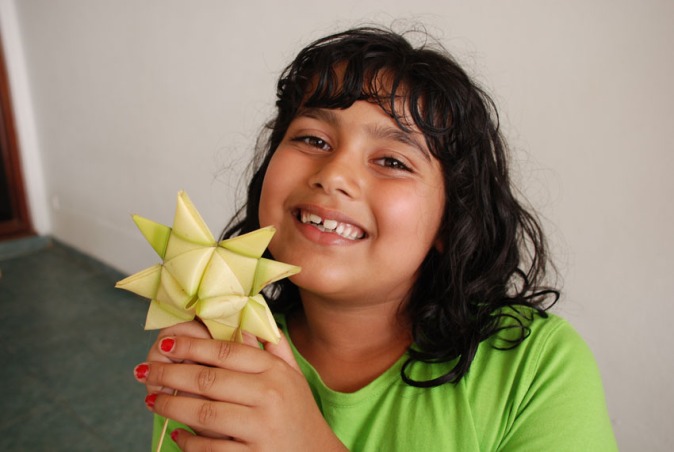 Big Z with her origami art
Big Z with her origami art
When we planned our first vacation beyond the annual Kolkata visits after Lil Z’s birth, our first choice of destination was obviously Srilanka. So off we headed back to the island in 2011. With the Z-Sisters accompanying us, we were exploring a different Srilanka this time – alibi a luxurious vacation mode. Naturally, Bentota had to be the first stop. We booked into Vivanta by Taj, a far cry from our humble holidays in our first years of marriage. Not that it seemed to matter in those earlier days of travelling. Perched on an elevated cliff with a stunning ocean view, Taj Bentota provided us with some precious moments – a mile long stretch of Bentota’s classic golden beach, origami activities, stunning ocean views and authentic Srilankan food. The other truly memorable experience for me was witnessing the work of Senaka Senanayake, one of Sri Lanka’s best-known artists. Several brightly hued canvases depicting Srilanka’s flora and fauna that are so characteristic of the artist, hung on the wall of Taj Bentota – a priceless collection indeed. We also visited the Kosgoda turtle farm nearby, as we wanted to share the experience of holding one-day old baby turtles with the Z-Sisters.
Kitulgala – a riverside rendezvous, an epiphany and the inception of my blog
 Kelani River in Kitulgala… most of the scenes in the ‘The Bridge on the River Kwai’ that were shot in Srilanka are in Kitulgala
Kelani River in Kitulgala… most of the scenes in the ‘The Bridge on the River Kwai’ that were shot in Srilanka are in Kitulgala
My 4th lesson in Srilanka… life always comes back in full circle. In doing so, it gives one ‘cues’ to the direction that leads straight from your heart. Grab them!
After the sunny seaside, we were headed to the scenic Hill Country of Srilanka. We stopped for lunch at the riverside ecolodge Rafters’ Retreat in Kitulgala (here’s my write up). The gushing Kelani river and mountainous forests brought back memories of my trip with the gang from a decade back. It was a similar landscape in Ratnapura where we had stopped impromptu… to bathe in Kalu Ganga! The riverside stop in Kitulgala this time, was momentous in my life. It was like an epiphany and my blog was born. Here’s an excerpt from my first blog post, written nine years back…
Re-visiting Srilanka was more than just a vacation. It was as if, we were searching for our own roots. A decade back we had stood by the banks of the Kelani river, letting our eyes wander into the woods. Now a decade later, the four of us were standing at the same spot. As if one circle of life just got completed.
 Kitulgala is one of the wettest places in Srilanka with two monsoons in a year
Kitulgala is one of the wettest places in Srilanka with two monsoons in a year

The empty bench by the Kelani River (in the picture above) seemed symbolic. With the beginning of the second circle with the four of us, I wanted to unblog them all. The surrounding greens, multiple shades of green reflected on the Kelani river and the empty bench beckoning me – this was predestined to be the first post of my blog IshitaUnblogged, all the way back in 2011!
Nuwara Eliya – the misty hills and romance of Ceylon tea
 The magnificent St. Clair’s Waterfall on our way to the Nuwara Eliya
The magnificent St. Clair’s Waterfall on our way to the Nuwara Eliya
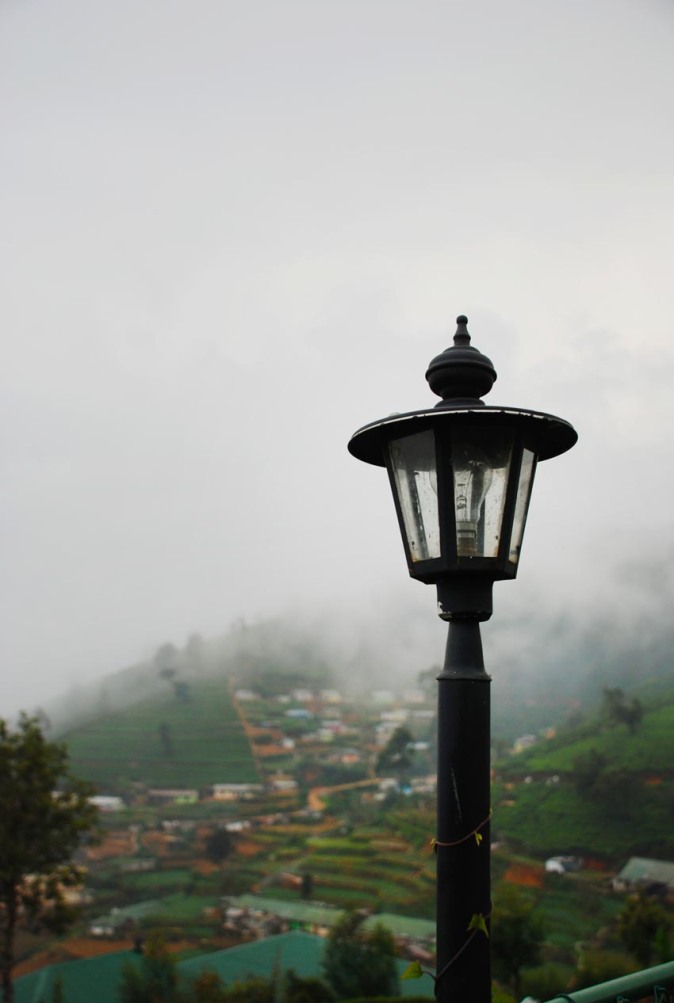 Misty hills of Nuwara Eliya
Misty hills of Nuwara Eliya
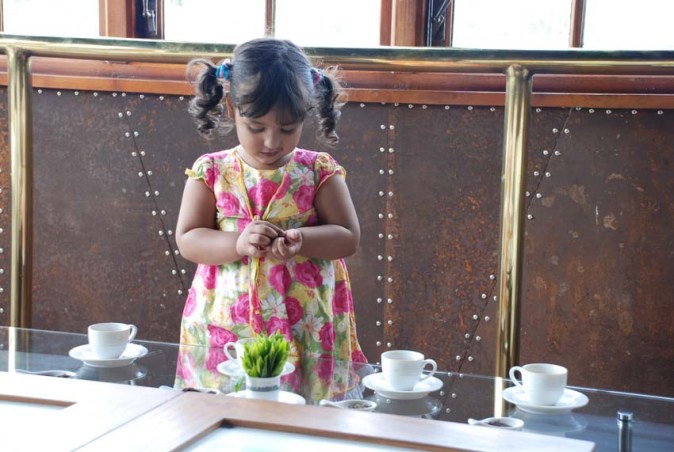 Two year old Lil Z picks on freshly plucked tea leaves to make her own version of Ceylon Tea
Two year old Lil Z picks on freshly plucked tea leaves to make her own version of Ceylon Tea 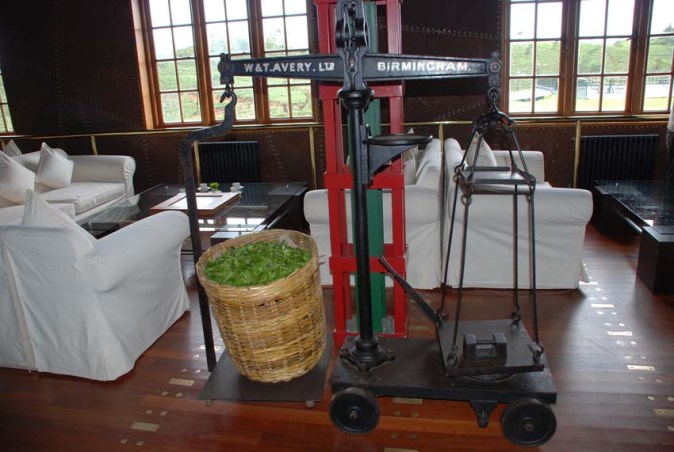 The original machineries from the tea factory have been preserved and are operational, forming aesthetic backdrops in the decor
The original machineries from the tea factory have been preserved and are operational, forming aesthetic backdrops in the decor
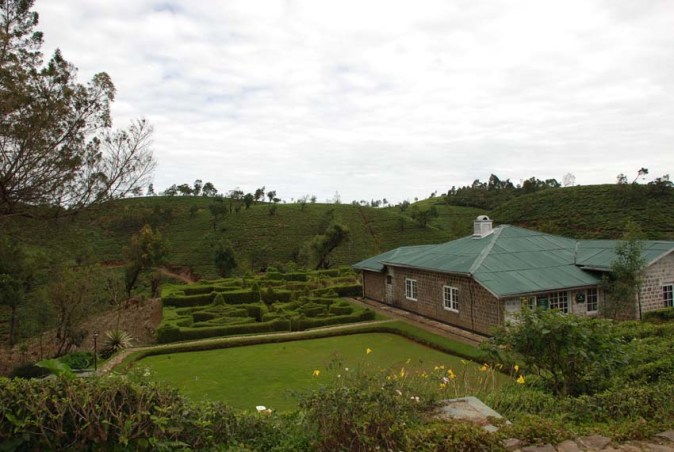 A small tour of the tea museum guided us through the tea making process – from withering to packing
A small tour of the tea museum guided us through the tea making process – from withering to packing
Rolling mountains, rippling waterfalls and mountainous streams marked the landscape as we drove into Srilanka’s scenic Hill Country. Set amidst lush green tea plantations and misty hills of Nuwara Eliya, our stay at Heritance Tea Factory is definitely one of my most unique stays (recalling our experience in my earlier write up). A colonial experience awaited us at this boutique hotel which was once a tea factory during the British Raj, the Hethersett Tea Plantation. The machineries from the original tea factory were still preserved and operational and were cleverly incorporated within the décor of the hotel. These machines were switched on from time to time offering a ceremonial spectacle for the resident guests. The sifting room was now converted to a formal restaurant – Kenmare. Wooden tea cartons held the buffet area serving authentic Sri Lankan cuisine as well as Western delicacies. Apart from Kenmare, there was another restaurant – TCK 6685 (Railway Carriage) Restaurant. It was a theme restaurant, a full-size replica of the actual train’s restaurant from the 1930s. Sitting on its small-gauge rails, the restaurant offered a unique fine dining experience complete with ‘whistle blowing’ and ‘toot-toots’. Food was served served by white-glove clad ‘attendants’ wearing their railway uniform. Our fondest and nerve wrecking culinary memories associated with our stay at Heritance was the formal five-course sit-down dinner on Valentine’s Day, complete with candle lights … along with the tiny Z-Sisters.
Revisiting Kandy – architectural splendour of a holy shrine
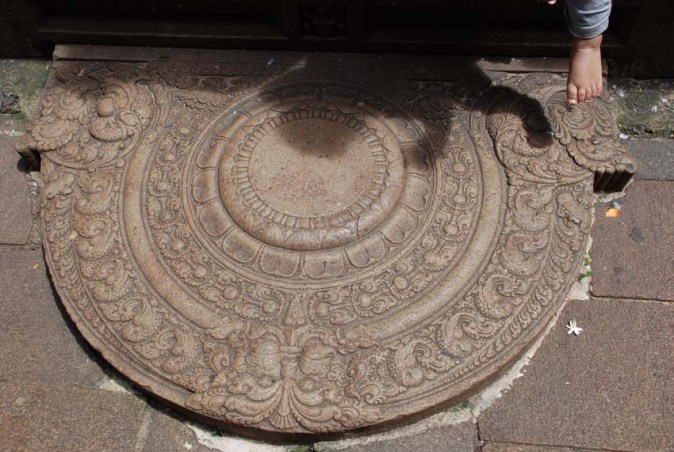 Lil Z stepping on the moonstone carved at the entrance. Much like a welcome mat, it is a unique feature of ancient Sinhalese architecture
Lil Z stepping on the moonstone carved at the entrance. Much like a welcome mat, it is a unique feature of ancient Sinhalese architecture
 Intricate carvings on wooden doors
Intricate carvings on wooden doors
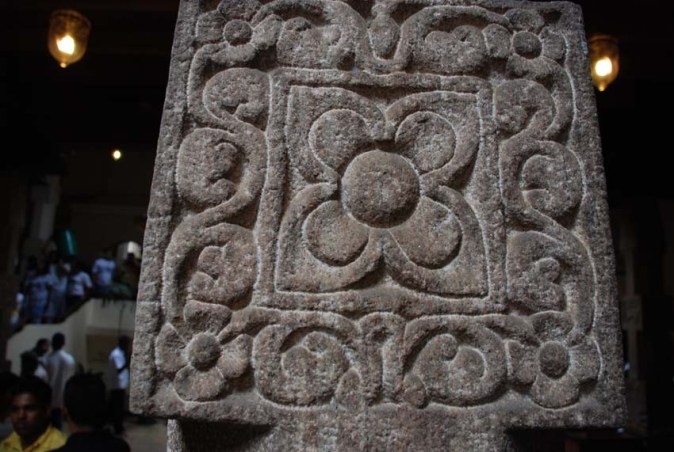 The stone carvings inside the temple date back to the 17th century
The stone carvings inside the temple date back to the 17th century
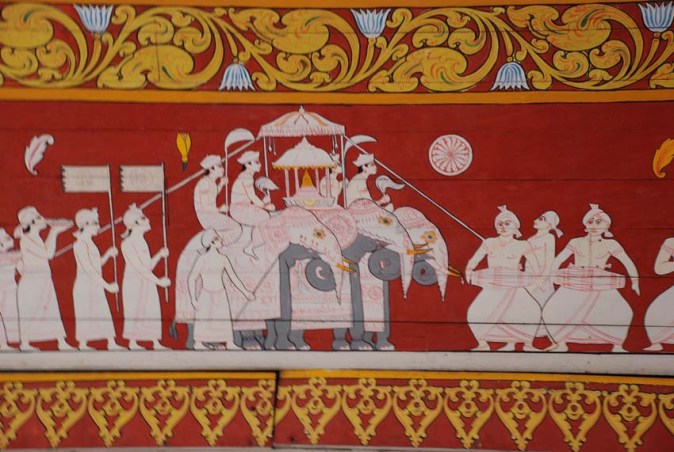 There are alfresco paintings on the ceiling of the temple. This one depicts a Perehera procession with the sacred casket bearer elephant, flag bearers and Kandyan dancers
There are alfresco paintings on the ceiling of the temple. This one depicts a Perehera procession with the sacred casket bearer elephant, flag bearers and Kandyan dancers
Our our journey downhill from Heritance Tea Factory, we revisited Kandy’s Temple of the Tooth Relic and offered prayers. Unlike on our first visit, when the temple and the palace complex was still undergoing restorations after the damages of the 1998 attack, I could completely immerse myself in the beauty of the temple this time. The architecture, stone carvings and the alfresco paintings were intricate and extraordinary. The temple has suffered considerable damage twice from bombings – once in 1989 and again in 1998, but both times it was restored fully as the relic is very important to Srilanka, both culturally and politically.
Pinnawala – sweet call of the wild
 Herd of elephants gather at the bathing area in Pinnawala
Herd of elephants gather at the bathing area in Pinnawala
 A spectacular sight in Pinnawala as herds of elephants of all ages come down to bathe
A spectacular sight in Pinnawala as herds of elephants of all ages come down to bathe
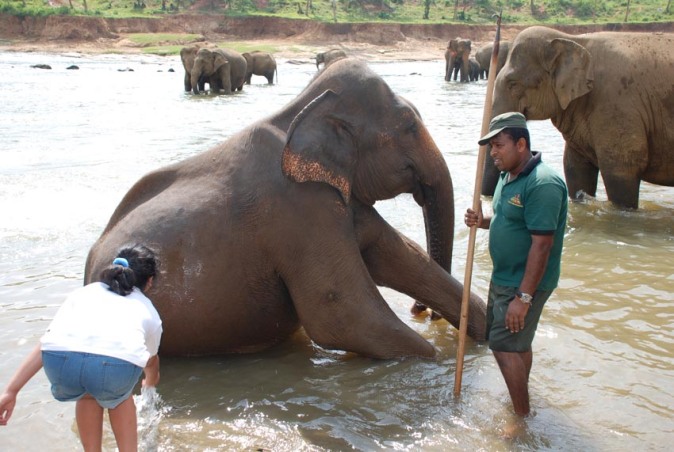
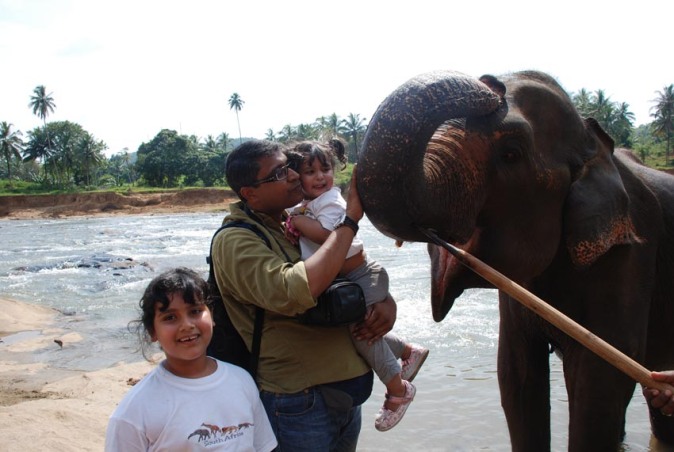
Pinnawala has the largest herd of captive elephants in the world and is known for its elephant orphanage – Pinnawala Elephant Orphanage. Initially built to nurture wild orphaned elephants, the orphanage has now also been breeding. Our lunch halt was synced with the elephants’ bathing time. The terrace at Grand Royal Pinnawala, just opposite the bathing site on Oya River offered a spectacular sight as herds of elephants of all ages came down to the river to bathe. Tourists could also partake in the bathing of elephants and feed them (with feeding bottles… awww!) at a charge. While Big Z loved joining in for the activities, Lil Z was in absolute tears!
Trincomalee – panoramic bays, stiff cliffs and white beaches
 A walkway led us to from the deck of our beach chalet to the Jungle Beach Resort’s private beach
A walkway led us to from the deck of our beach chalet to the Jungle Beach Resort’s private beach
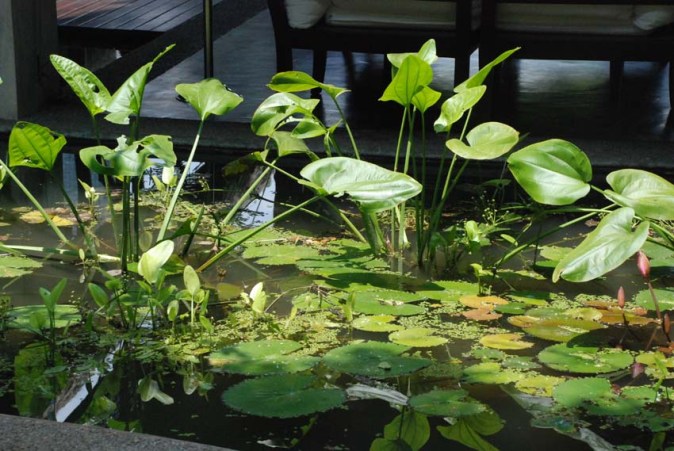 The resort’s breathtaking landscape scattered with lily pads, stone pathways amidst tropical foliage and vegetation. I also had a tiny snake encounter by the restaurant here!
The resort’s breathtaking landscape scattered with lily pads, stone pathways amidst tropical foliage and vegetation. I also had a tiny snake encounter by the restaurant here!
 Fish being dried by the roadside in Trincomalee
Fish being dried by the roadside in Trincomalee
 The view from Lovers’ Leap or Ravana’s cleft at Koneswaram temple, perched up high at 350ft above the sea level
The view from Lovers’ Leap or Ravana’s cleft at Koneswaram temple, perched up high at 350ft above the sea level
In 2014, we decided to visit Srilanka again. This time, our itinerary had only one place – Trincomalee, in the northeast coast of Srilanka. During the conflict days in Jaffna, Trincomalee was completely cut off for both residents and tourists. Apart from having the finest deep-sea natural harbours in the world, Trincomalee also boasted of one of the most beautiful stretches of white sandy beaches in Srilanka. Hence, our decision to visit Trincomalee, the moment we heard that it had opened up its tourism. We had a wonderful stay at the boutique resort Jungle Beach by Uga Escapes. With breathtaking views of the mangroves from our private deck, our beach chalet was luxurious and had thatched roofs and a vaulted ceilings. A walkway led us to the resort’s private beach from the deck. The resort’s restaurant was nestled around a lagoon set amidst a jungle vegetation. The focus was on fresh and locally sourced ingredients. Along with the typical breakfast spread, we also devoured the Srilankan offerings like hoppers, appams, dhal and curries. The Kiri Peni or curds was delicious and each day we were served a different variation. A very special memory is our private dining under a canopy of stars – a seafood barbecue against the backdrop of torched flames. We intentionally didn’t make too many plans while in Trincomalee, excepting a short drive to the city and a visit to the Koneswaram temple. A classical-medieval Hindu temple complex, the temple was perched up precariously on a cliff and the view of the ocean and the adjoining bays from there was stunning.
Colombo… once more
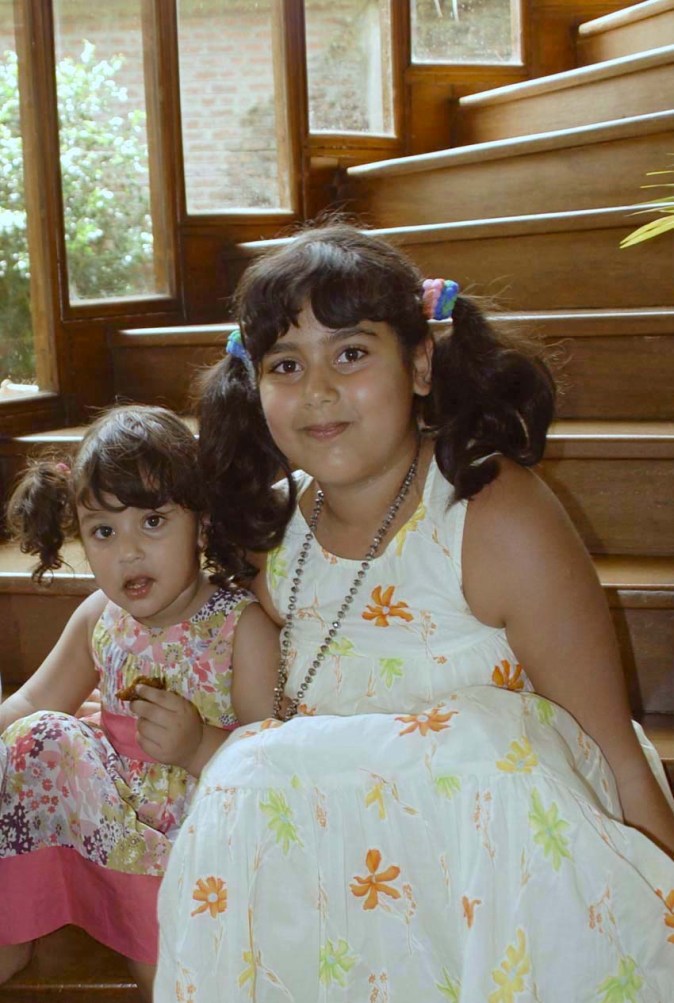 The Z-Sisters by our favourite staircase at Rosmead Place
The Z-Sisters by our favourite staircase at Rosmead Place
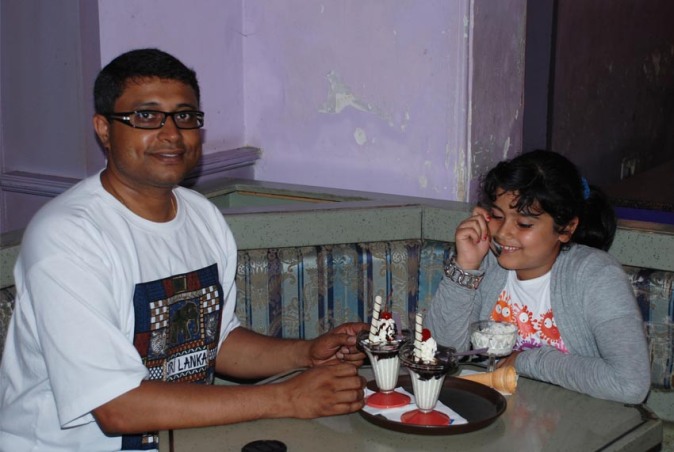 Revisiting Carnival’s for ice cream sundaes
Revisiting Carnival’s for ice cream sundaes
 Odel, of course!
Odel, of course!
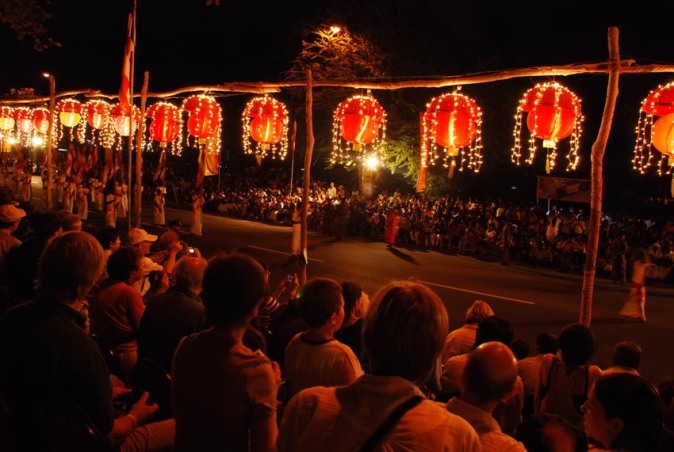 Watching the Navam Perehera in the comfort of VIP seatings
Watching the Navam Perehera in the comfort of VIP seatings
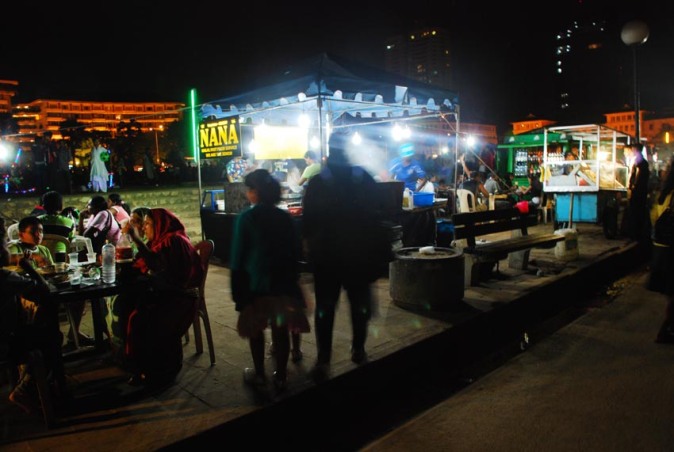 Food hawkers and other stalls at Galle Face promenade
Food hawkers and other stalls at Galle Face promenade
Our Srilanka trip was a recap for both of us as we revisited familiar places and showing them to the Z-Sisters. We were also exploring new places. In Colombo, we took the Z-Sisters to our house in Rosmead Place, visited Caravan for ice cream sundaes, ate at the food court in Majestic City and shopped at Odel, of course! We were staying in Taj Samudra where we brushed against some famous cricketers who were put up in the same hotel for an ongoing international cricket tournament. The hotel was located just opposite the Galle Face seaside promenade . Unlike in our Colombo days, the promenade was now lined with hawkers and food kiosks. From the devilled crabs and prawns to pineapple slices sprinkled with red chill flakes, everything looked extremely tempting. Finally, we settled for Kottu Rotis. While on our visit to the Gangaramaya temple, we learnt that a Perehera was being held the next day. Not wanting the Z-Sisters to miss out such an incredible opportunity, we bought VIP tickets that allowed seating… this is also something that we hadn’t known that one could do earlier! The Navam Perehera is held in Colombo on the Full Moon day in February. While we watched the Perehera in the comfort of seats, but alas it wasn’t from the front row as both S and I reminisced our experience of watching Kandy Esala Perehara a decade back!
Srilankan Food – spicy and spicier than thou!
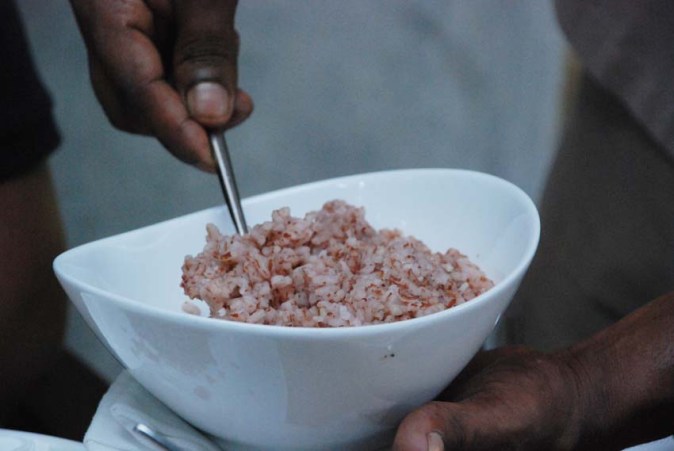 The short grained Srilankan rice – both red and white variety, is served for all Srilankan meals! At Jungle Beach Resort
The short grained Srilankan rice – both red and white variety, is served for all Srilankan meals! At Jungle Beach Resort
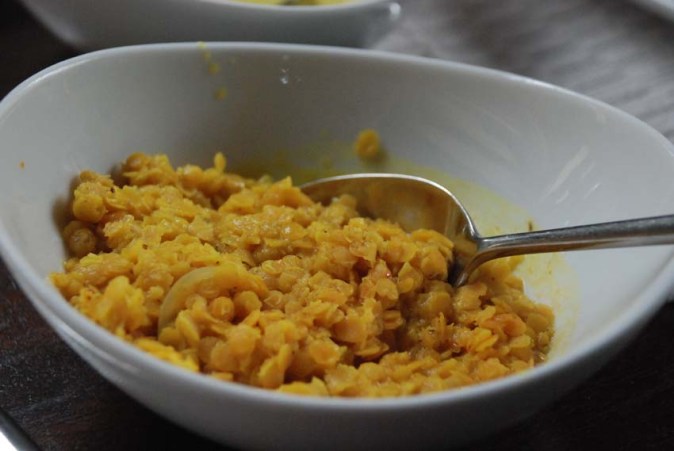 Parippu or Dhal Curry is made with red lentils (Masoor dal) cooked in coconut milk and seasoned with spices. At Jungle Beach Resort
Parippu or Dhal Curry is made with red lentils (Masoor dal) cooked in coconut milk and seasoned with spices. At Jungle Beach Resort
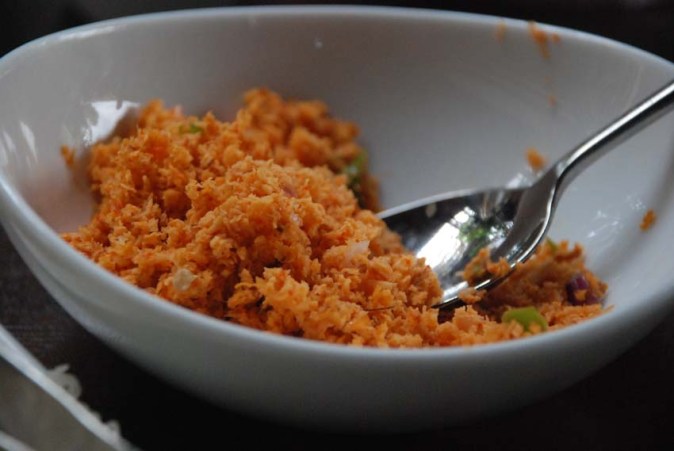 Pol Sambol is a spicy relish made with freshly grated coconut, onions, chillies and Maldive fish and eaten as an accompaniment. At Jungle Beach Resort
Pol Sambol is a spicy relish made with freshly grated coconut, onions, chillies and Maldive fish and eaten as an accompaniment. At Jungle Beach Resort
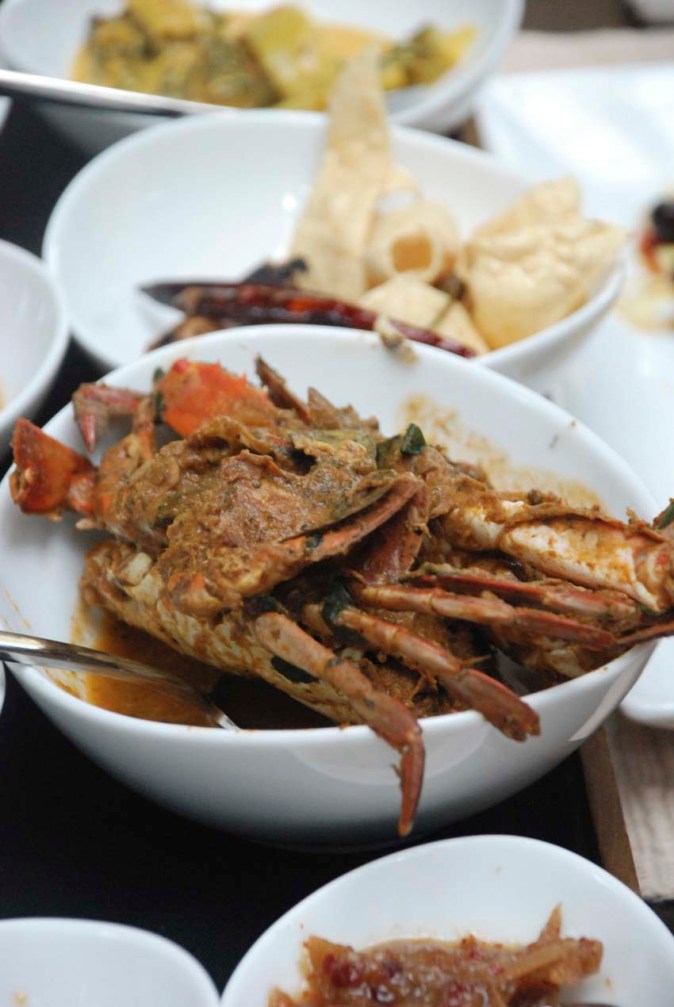 Deviled crab at Jungle Beach Resort. Our favourite Srilankan seafood preparation is the deviled one – prawn, crab and squid
Deviled crab at Jungle Beach Resort. Our favourite Srilankan seafood preparation is the deviled one – prawn, crab and squid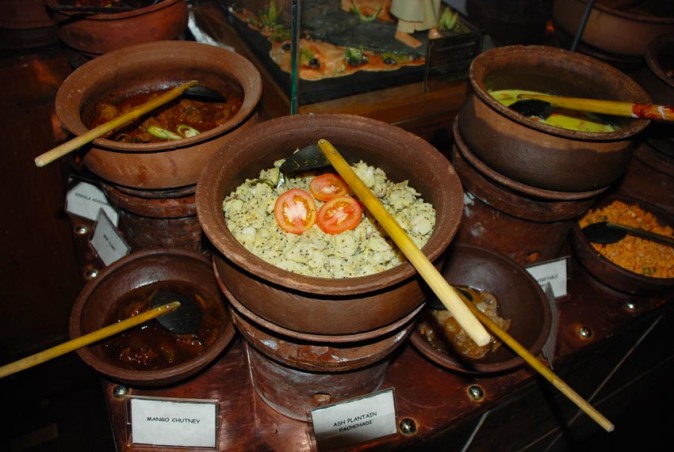 Srilankan food cooked and served in traditional clay pots in Heritance Tea Factory
Srilankan food cooked and served in traditional clay pots in Heritance Tea Factory
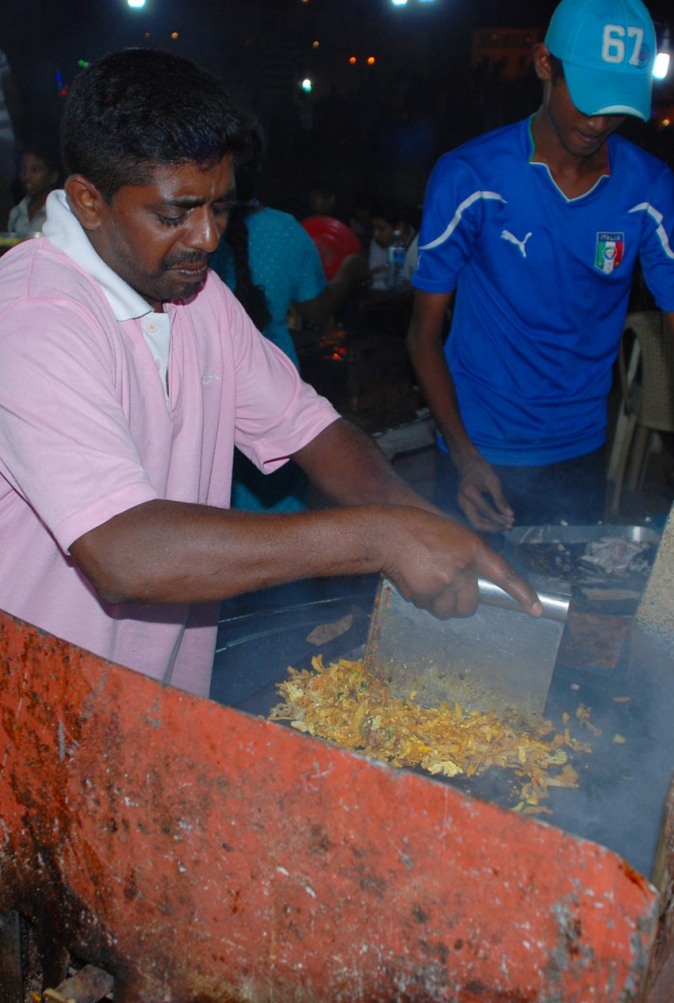 A food hawker making spicy Kottu Roti at Galle Face Promenade
A food hawker making spicy Kottu Roti at Galle Face Promenade
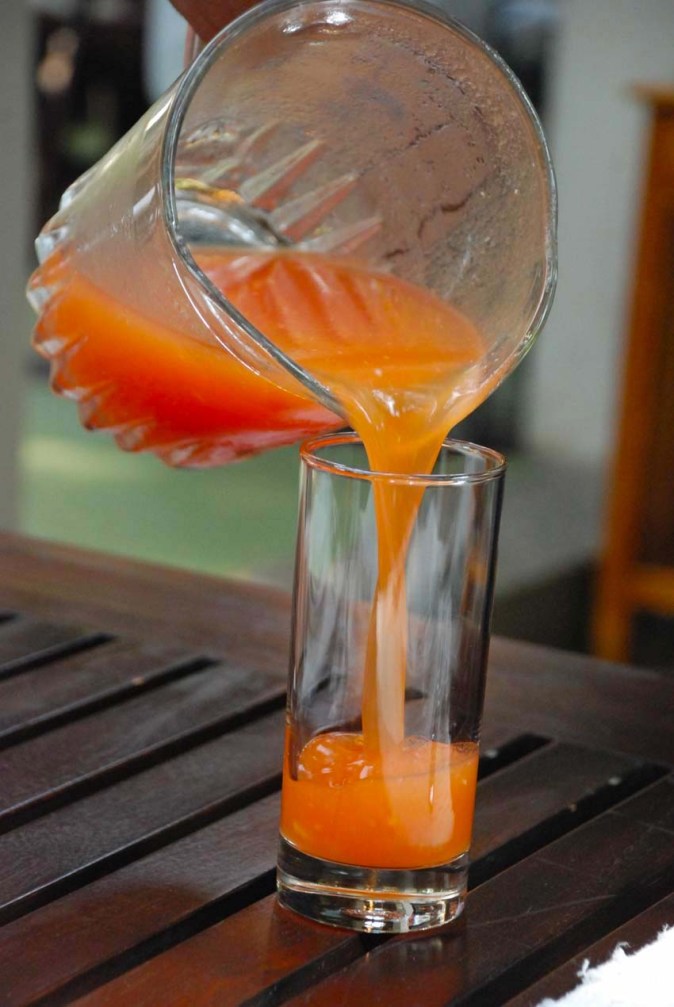 Sweet Papaya juice at Jungle Beach Resort
Sweet Papaya juice at Jungle Beach Resort
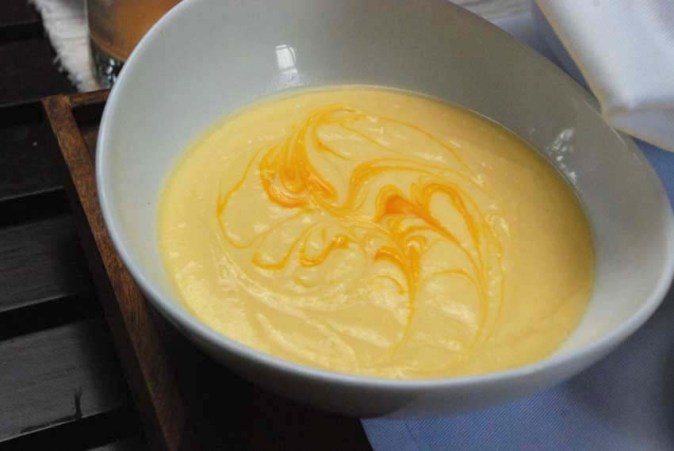 Mango Kiri Peni at Jungle Beach Resort
Mango Kiri Peni at Jungle Beach Resort
Once we were introduced to Srilankan food, there was no looking back! The spicy curries, the short-grained Samba rice and red rice, stir-fried shredded rotis or kottus, string hoppers, coconut sambols, fish cutlets, devilled prawns and cuttles – Srilankans loved their spices. I gradually acquired a liking for some of the popular fruits eaten in the island like jackfruits, mangosteens, custard apples and various kinds of bananas. I also had my first taste of Nasi Goreng and the banana wrapped Lamprais. Both these rice dishes captured the heart and soul of this rice-loving Bengali! I also fell in love with Wattalappan – a custard pudding made out of coconut milk and jaggery. When our Srilankan friends dined at our home, they couldn’t believe that there could be any curry that could be made without using red chillies. For that matter, we couldn’t believe the amount of chillies that actually went into making each one of their curries!
 Dambulla Golden Temple, which we visited on our way back from Trincomalee to Colombo. A UNESCO World Heritage site, it’s the largest and best-preserved cave temple complex in Sri Lanka
Dambulla Golden Temple, which we visited on our way back from Trincomalee to Colombo. A UNESCO World Heritage site, it’s the largest and best-preserved cave temple complex in Sri Lanka
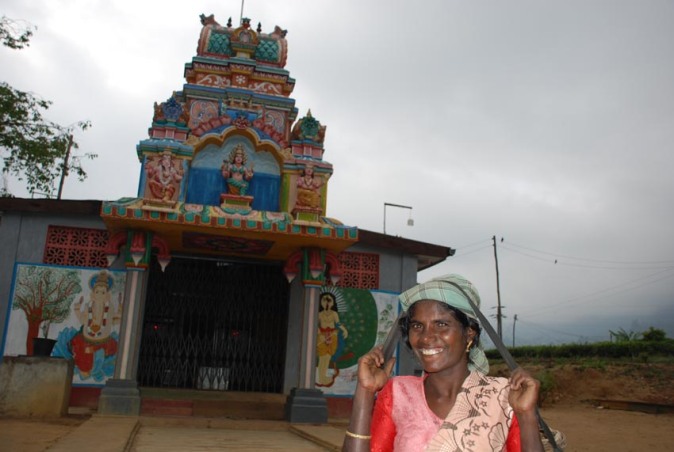 Wherever we went, we were met with evergreen smiles – look at the tea picker in Srilanka’s Hill Country!
Wherever we went, we were met with evergreen smiles – look at the tea picker in Srilanka’s Hill Country!
It’s time to return to Srilanka once again. And when we do, the topmost in our bucket list is to visit Ministry of Crab, the very famous seafood restaurant set up by celebrated chef and restaurateur Dharshan Munidas and cricketing legends Mahela Jayawardane and Kumar Sangakkara. Both the times we were in Colombo, the restaurant was closed as it was Poya or full moon day, considered auspicious by the Buddhists and a holiday in most places in the island. If it happens to be a Poya day once again on our next Colombo visit, I will consider that as predestined. I will happily settle for a food crawl in Galle Face promenade instead… digging into our eternal love – humble street food!
Last but not the least, the life lesson I learnt in Srilanka… life is a beautiful journey. It’s good to flip the album once in a blue moon to remember where it all started (not a full moon this time!). Most importantly to remind oneself, why we start a journey in the first case.
Unblogging it all… Ishita
Thank you for joining me on my daily food and travel journey on Pinterest, Instagram, Facebook and Twitter!
Here are a few of my articles on my Srilankan sojourn: Heritance Tea Factory Hotel, Nuwara Eliya Red tuk-tuks and triumphant rides – Colombo Living by the water with sunset as prop – Colombo and the Indian Ocean
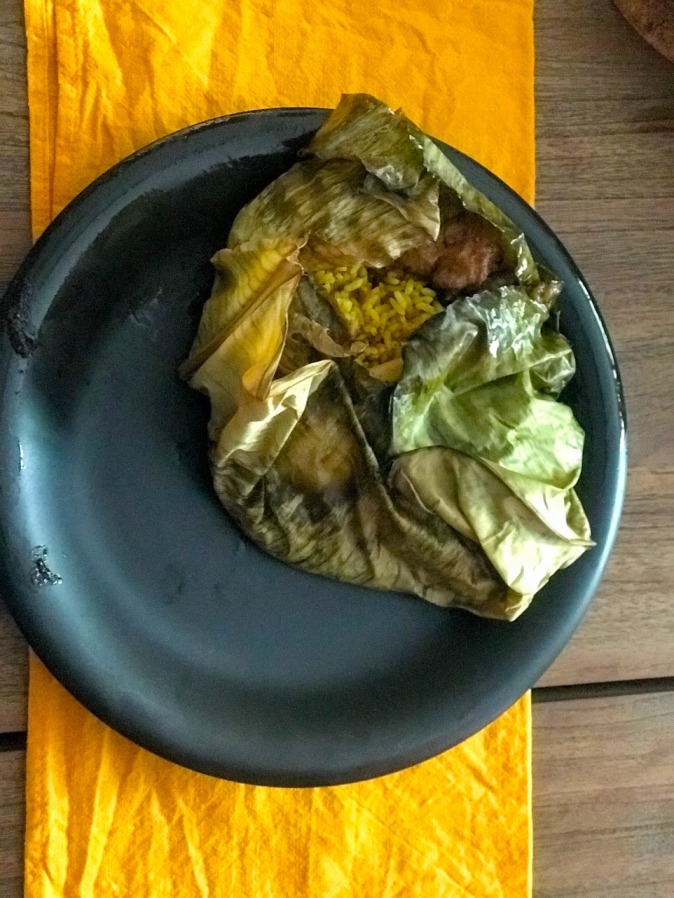
Cooking Laprais was quite a feat and was elaborate, as it requires preparation of several dishes other. After going through several recipes on the internet, I chose this Lamprais recipe as it seemed most authentic to me along with the recipes of the accompanying dishes of Lampara meat curry, Seeni Sambol, Fish Cutlet, Fried Ash Plantain Curry and Wambatu Moju. To make the banana leaves soft and pliable for making the rice packets, pass them over a flame or grill on low heat, moving them constantly. Enjoy this legendary Srilankan dish!Lamprais
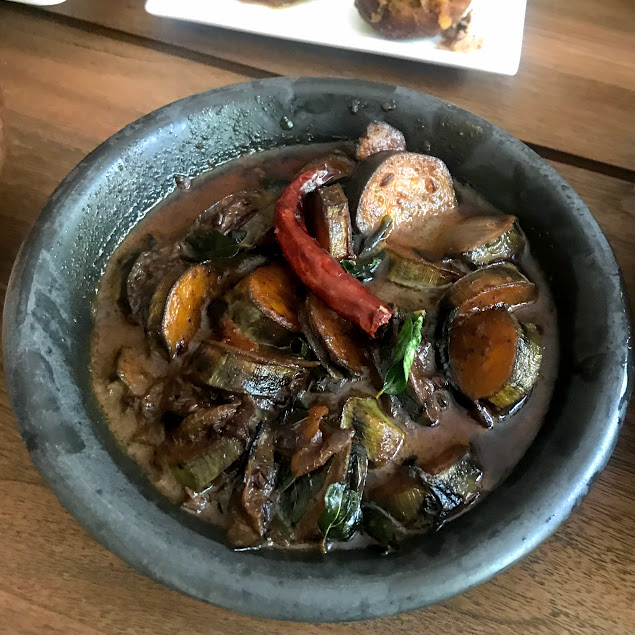 Wambatu Moju – an eggplant preparation
Wambatu Moju – an eggplant preparation
Disclaimer: This isn’t a sponsored post, nor are there any affiliated links for any of the brands that may have been mentioned in this blogpost. All meals, stays and other expenses have been paid by us. The subject, story, opinions and views stated here are my own and all images are from my personal album. While you enjoy reading my posts with lot of visuals, please do not use any material from these posts.
Srilanka is very special to me and my intention was to connect to all the places where we have lived, travelled and have good memories. I am sharing some links below that will help you to create similar itineraries when you wish to travel to Srilanka. Please note once again, that I haven't been paid to share these links. www.srilanka.travel (Srilanka Tourism) www.srilankan.com (Srilankan Airlines) www.emirates.com (Emirates Airlines) www.iamsrilanka.com (Travel agency based in Srilanka) www.alrostamanitravel.ae (Travel agency based in UAE)
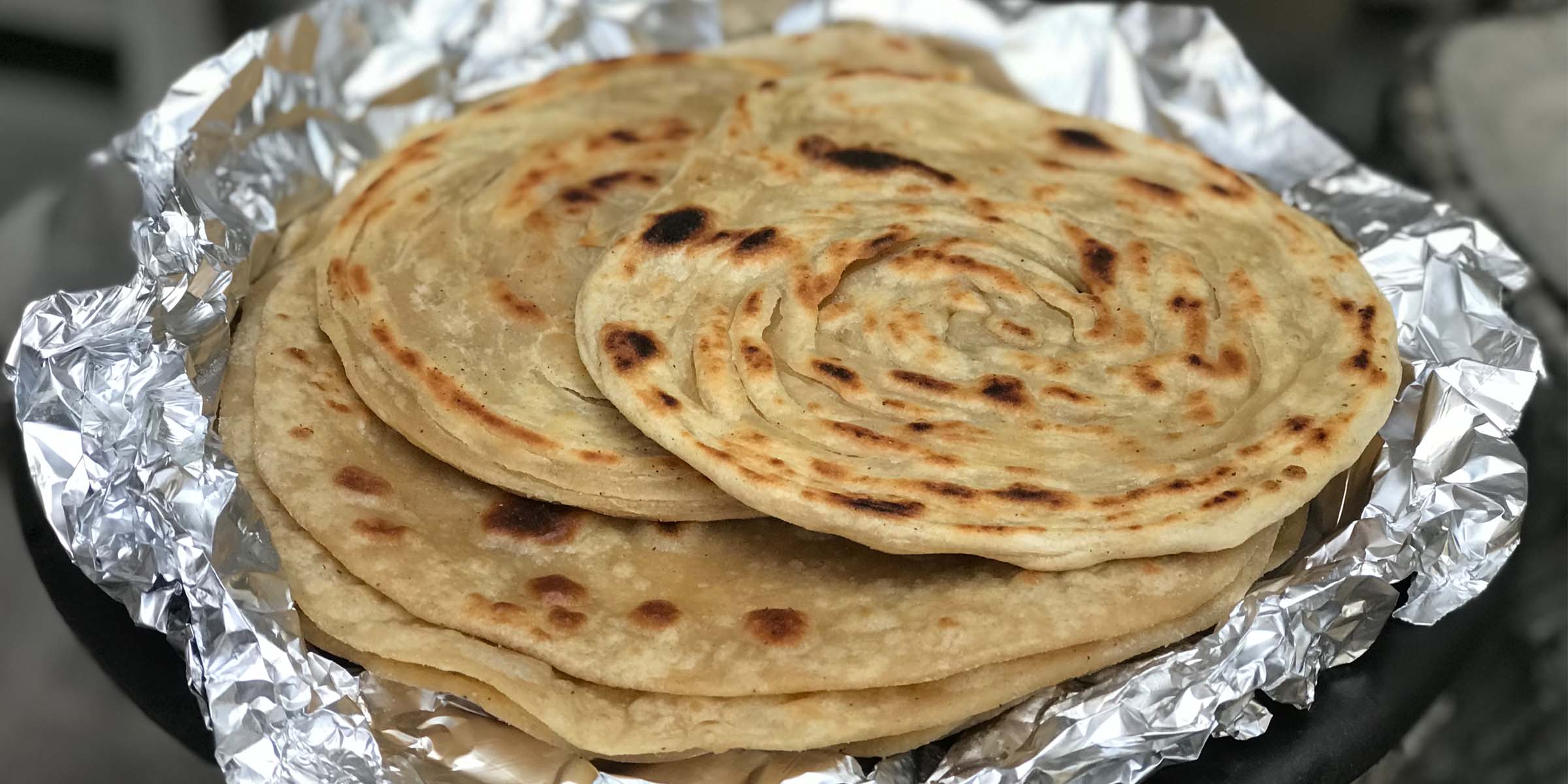
We made Lachha Parathas at home the other day. They turned out to be smoky, crispy and slightly flaky, just like they should be – only a bit less oily and slightly thicker.
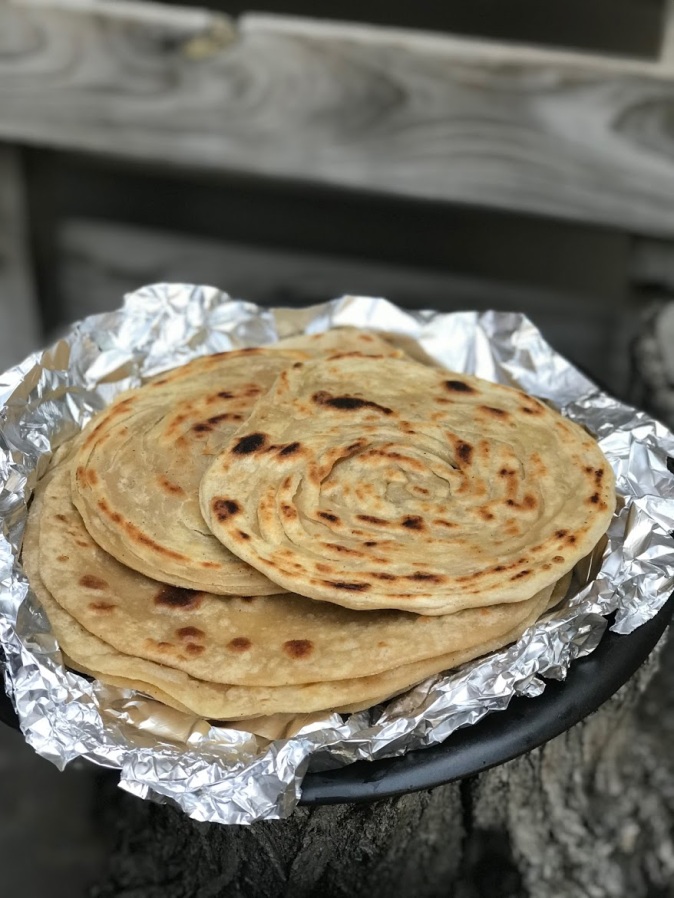
Making the multi layered Lachha Paratha at home was another feat. Much like making Acharuli, the boat-shaped Georgian cheese bread at home. Or perfecting the Awadhi style Kolkata Mutton Biryani. The first time we made the Lachha Parathas at home, they turned out to be smoky, crispy and slightly flaky, just like they should be – only a bit less oily and slightly thicker. No matter how much ghee we poured (or love, for that matter) onto the Lachhas, the layers seem to gulp up all the ghee.
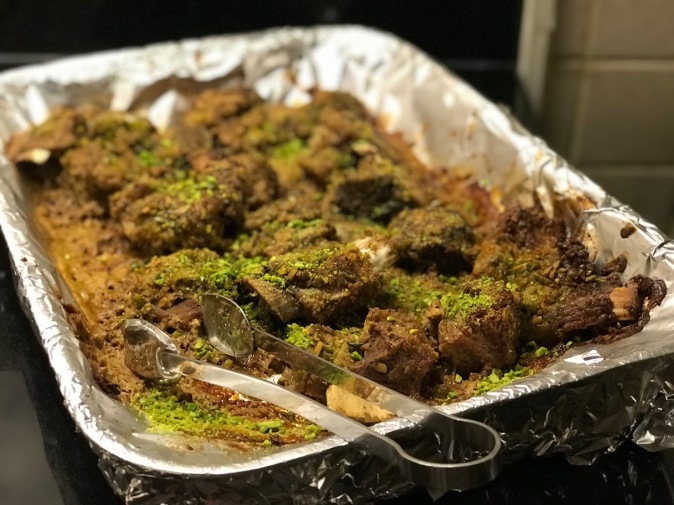
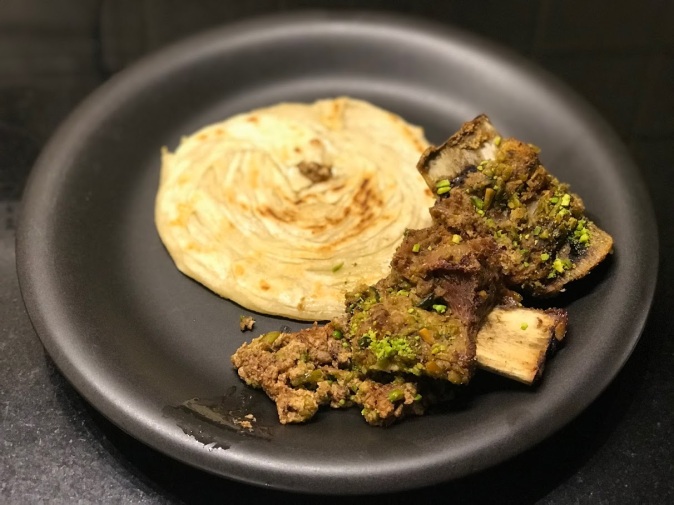
We complimented the Lachha Parathas with a pistachio encrusted Mughlai preparation of beef (above), the aroma of which reminded us immediately of Galawati Kababs. Naturally, there had to be a next time for the Lachhas… this time with Galawatis (below)!
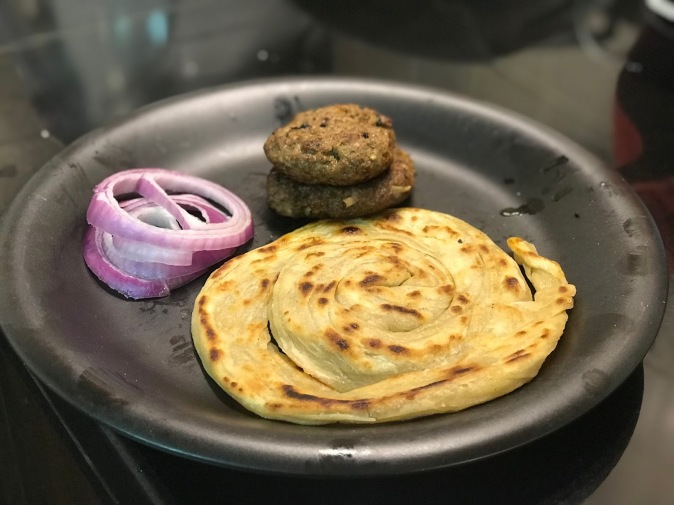
Paratha – the popular flatbread from the subcontinent, can be compared to fine jewellery. Like jewellery, there are different types of parathas originating in different regions and they come in different shapes, textures, forms and intricacies in design. The basic technique of paratha making remains the same… unleavened flatbreads made by cooking flour dough on a tawa or the cast-iron griddle, or baking inside a tandoor and mostly followed by shallow frying. The nitty-gritties of making each type, make the parathas distinctively different from each other.
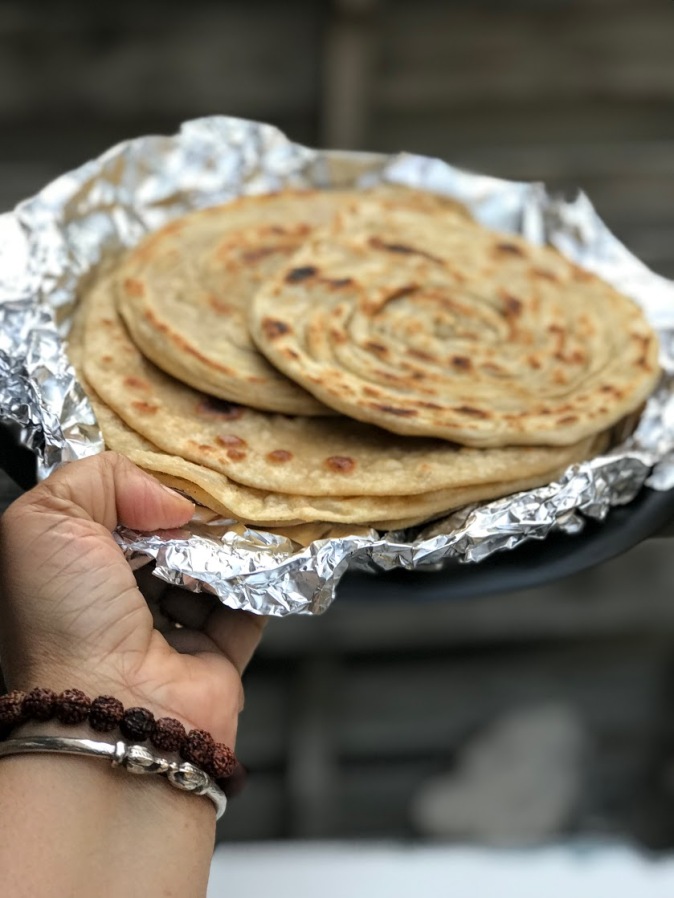
Homemade Lachha and other Parathas
I love parathas of all kinds. Apart from stuffed parathas, I also love plain parathas – specially when they are fresh out of the tawa, with a dollop of ghee or butter. There are some parathas which are absolute indulgences, namely the Lachha paratha, Mughlai paratha, Dhakai paratha and the soft fluffy ones that go into the making of Kolkata Kati Rolls.
Nothing beats these pleated multi-layered Lachha Parathas though, where the drama unfolds as you rip the flaky ghee-laden concentric layers and dip into your desired curry or a simple hot garlic pickle!
Unblogging it all… Ishita
Bread recipes that you might enjoy: Homemade Bread with Sprinkled Sesame Cinnamon Rolls
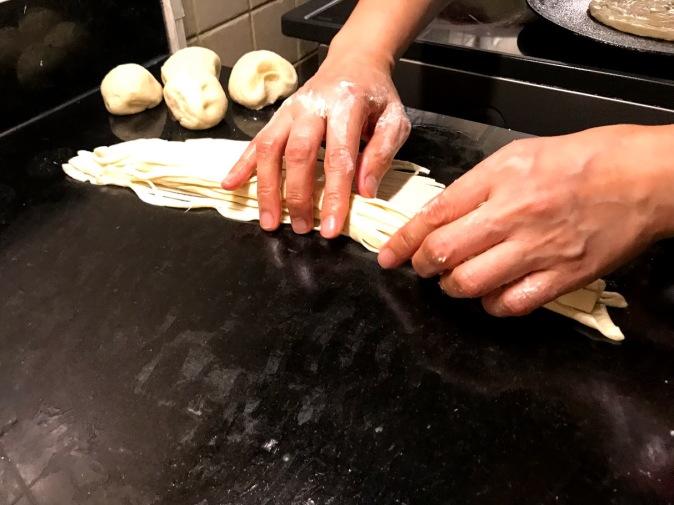

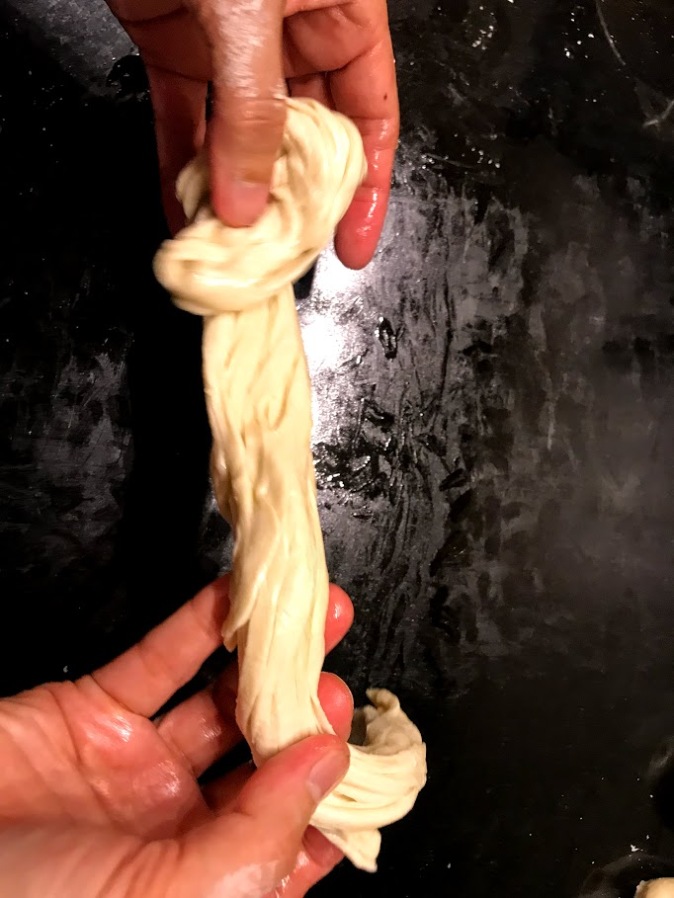
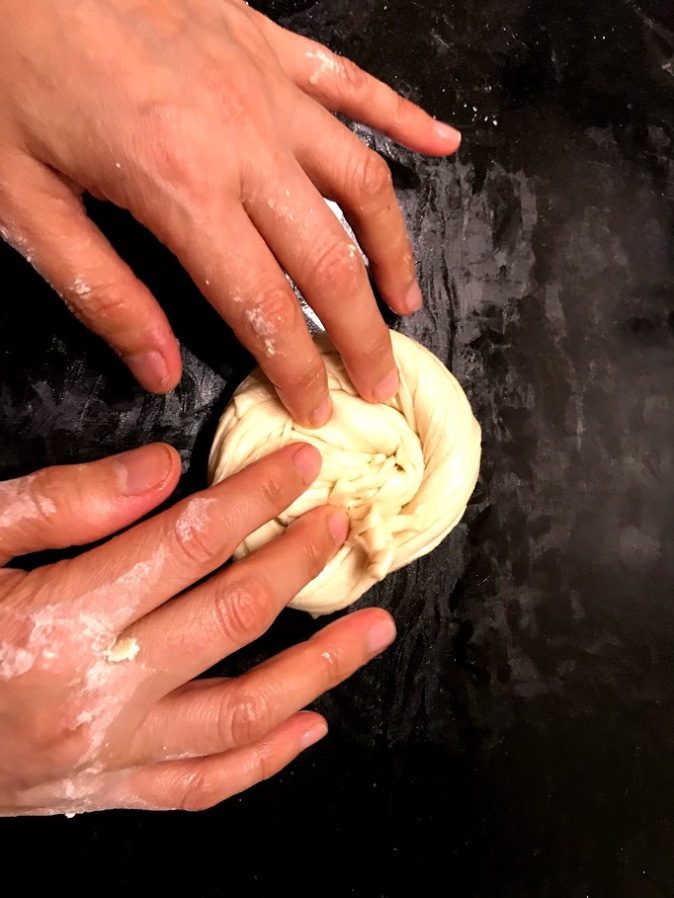
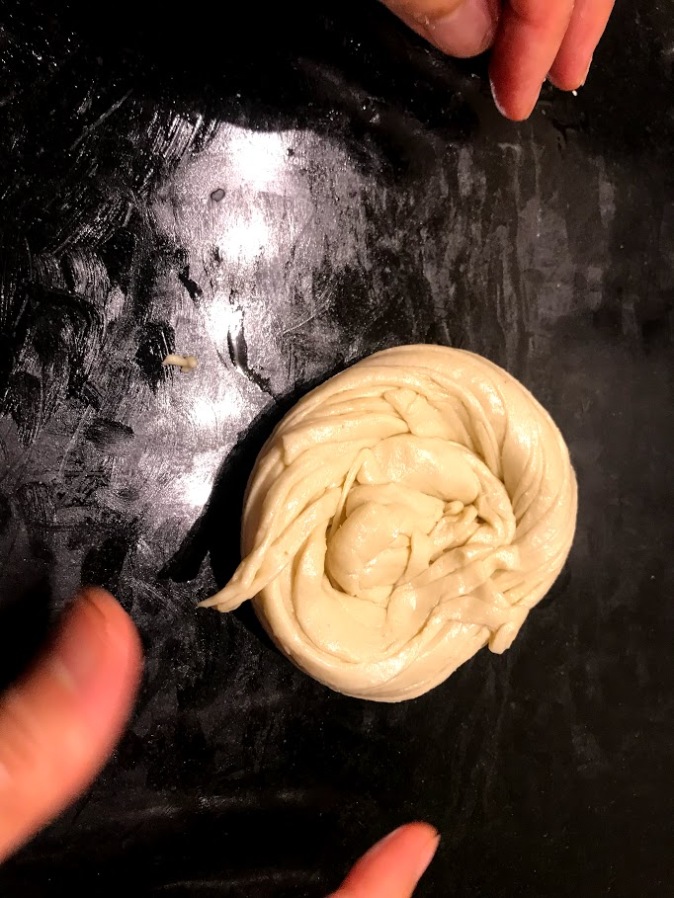
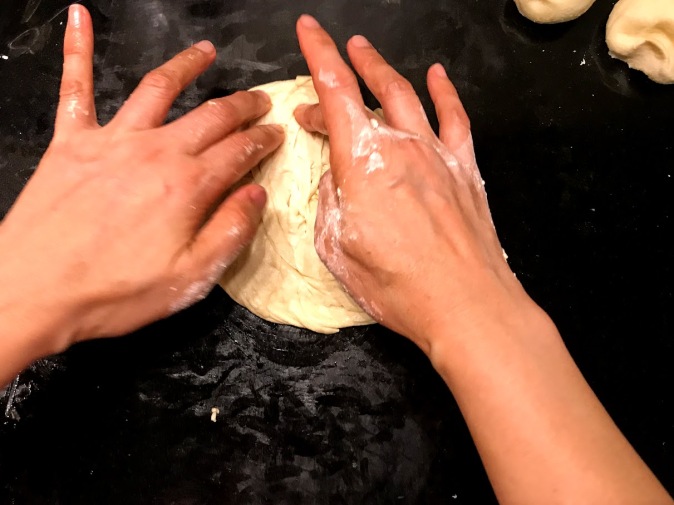
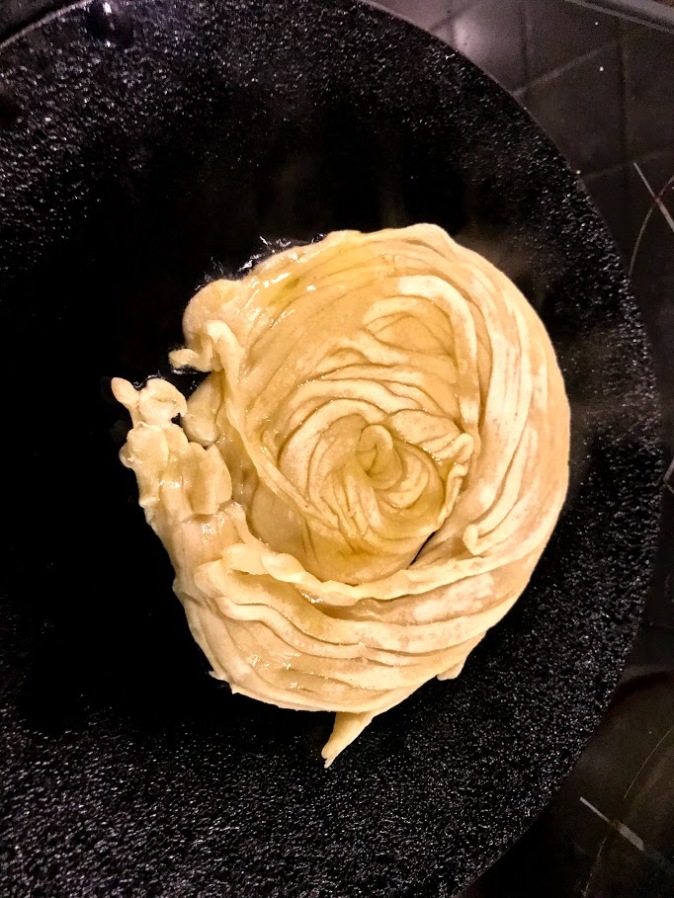
3 cups all purpose flour (you can also use 1 cup whole wheat flour and 2 cups all purpose flour)Laccha Paratha
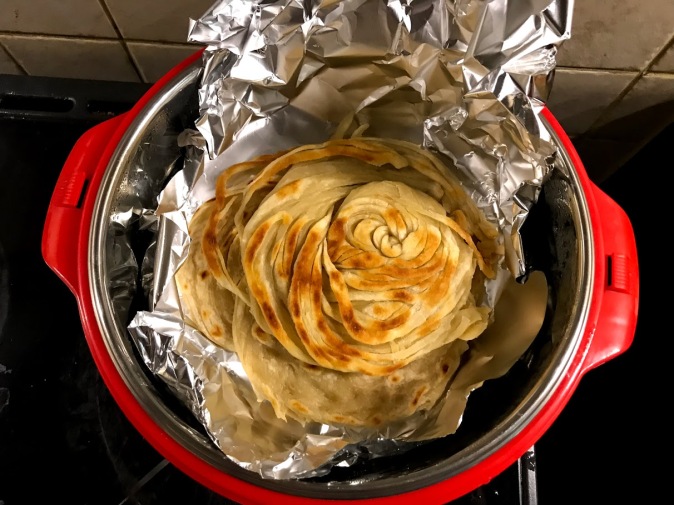
Ingredients
½ tsp salt
½ tsp sugar
3 tbsp milk
½ cup ghee or white oilMethod
Thank you for joining me on my daily food and travel journey on Pinterest, Instagram, Facebook and Twitter!
Disclaimer: This isn’t a sponsored post, nor are there any affiliated links for any of the brands that may have been mentioned in this blogpost. The subject, story, opinions and views stated here are my own and all images are from my personal album. While you enjoy reading my posts with lot of visuals, please do not use any material from these posts.
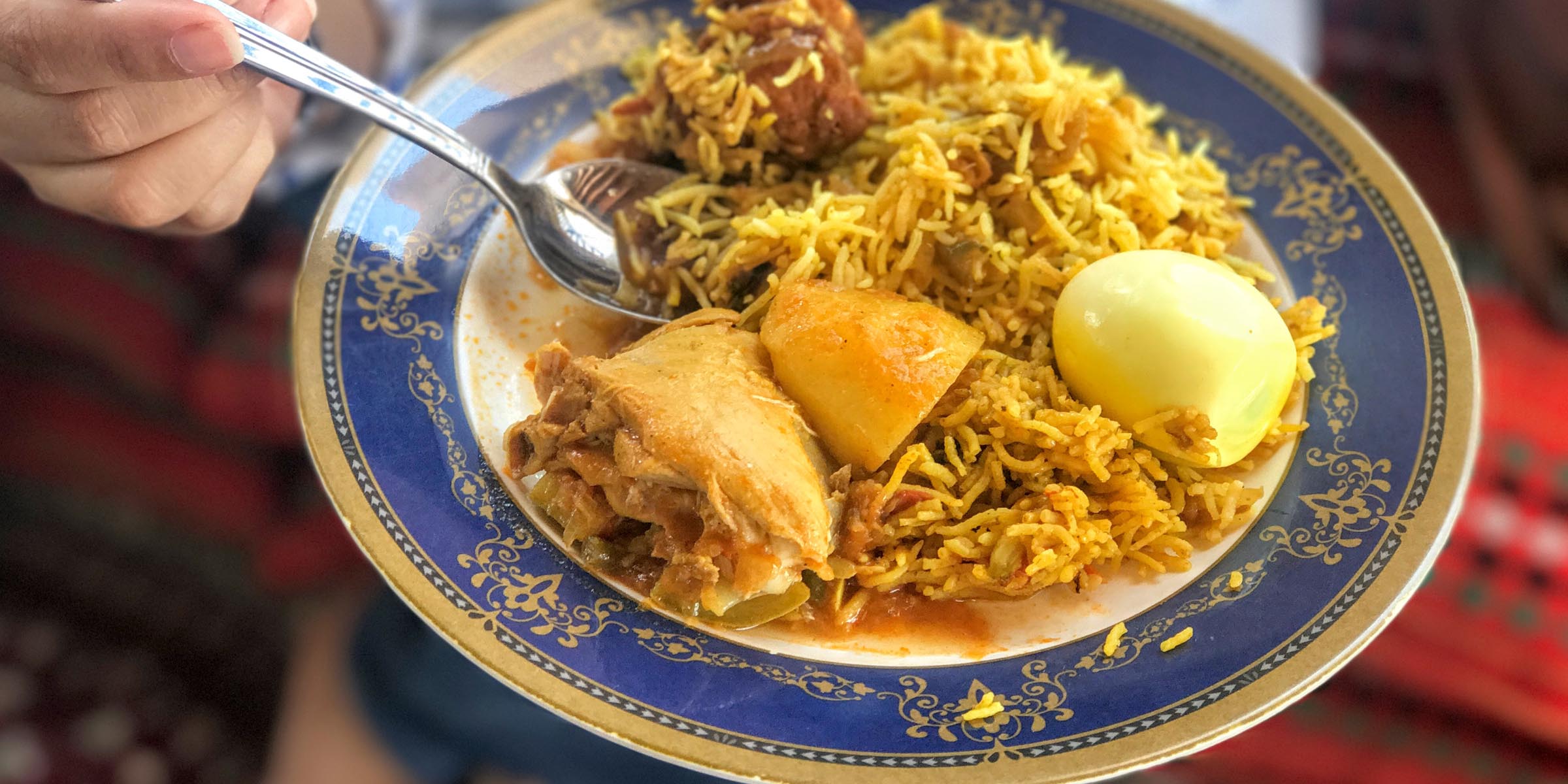
Despite Dubai’s changing landscape, the historic district of Al Shidagha, the traditional Textile Souq along the Bur Dubai side of the creek, the continuing Al Fahidi Historical Neighbourhood (formerly Bastakiya), the Spice Souq and Gold Souq across the creek in the Deira side… all these places have managed to retained their original charm and sanctity.
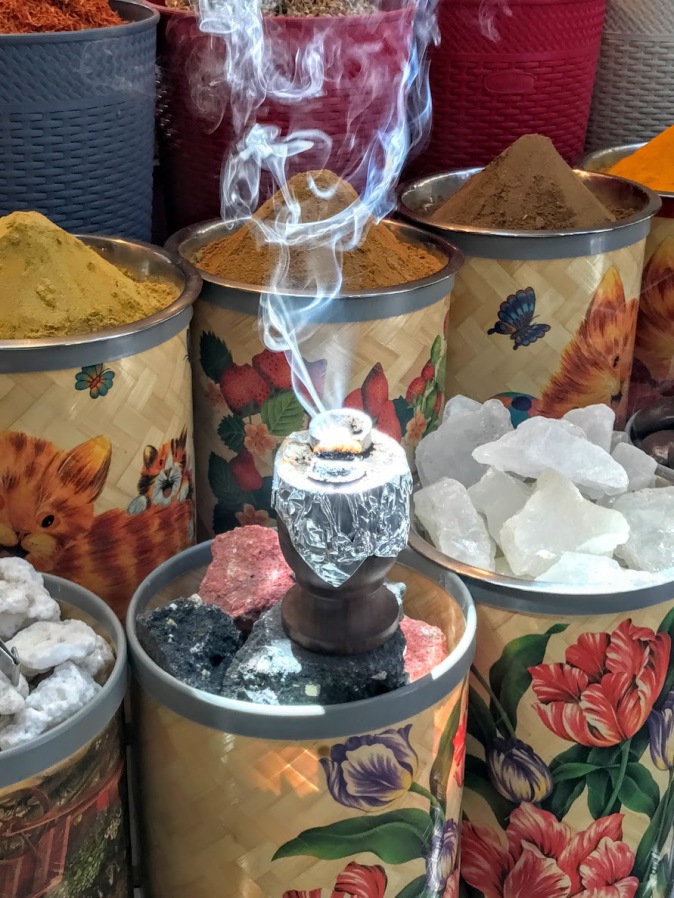 Bukhoor or Bakhoor, scented bricks soaked in fragrant oils
Bukhoor or Bakhoor, scented bricks soaked in fragrant oils
Today’s post is in celebration of my brother’s birthday. A designer by profession, he’s an artist, a creative soul and capable of capturing the eclectic in things that others would find most ordinary and random. This is a creative and a foodie day out in my favourite places of Dubai, along with two of my most creative buddies with whom I have shared many a creative travel moments – long before lockdown and travel bans. Here’s to Neil, my little brother (not so little anymore) and Rupa, my artist friend and a talented amateur photographer!
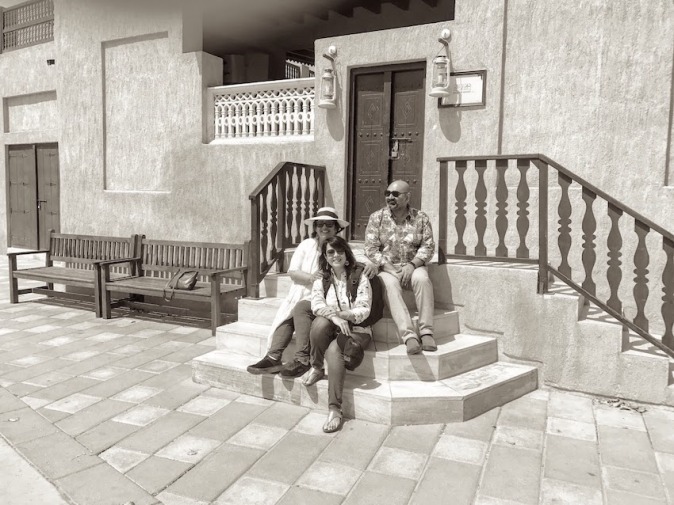
Dubai is a city where the landscape is changing by the minute. Despite all the changes, reconstructions and restorations that I have witnessed in almost two decades of living here, there are still a few places which retain their original charm and sanctity. These are the select places in Dubai that I would love any creative person (or any person) to visit… Al Shidagha, the traditional Textile Souq along the Bur Dubai side of the creek, the continuing Al Fahidi Historical Neighbourhood or (formerly Bastakiya), the Spice Souq and Gold Souq across the creek in the Deira side. All these places can be traced to the 1890s, reflecting the humble beginning of Dubai making the evolution of the city even more breathtaking.
We’ve spent almost two decades in Dubai – the Z-Sisters have been born and brought up here. For me, the kaleidoscopic charm of traditional souqs of Dubai supersede the impressive shopping malls, so does the traditional houses with its’ alluring wind-towers over the glitzy skyscrapers. Hoping that it’s the same for you too!
Unblogging it all… Ishita
Thank you for joining me on my daily food and travel journey on Pinterest, Instagram, Facebook and Twitter!
Disclaimer: This isn’t a sponsored post, nor are there any affiliated links for any of the brands that may have been mentioned in this blogpost. We paid for all our meals at Blue Barjeel, XVA Cafe while SMCCU kindly hosted us our FoodeMag team. The subject, story, opinions and views stated here are my own and all images are from my personal album. While you enjoy reading my posts with lot of visuals, please do not use any material from these posts.
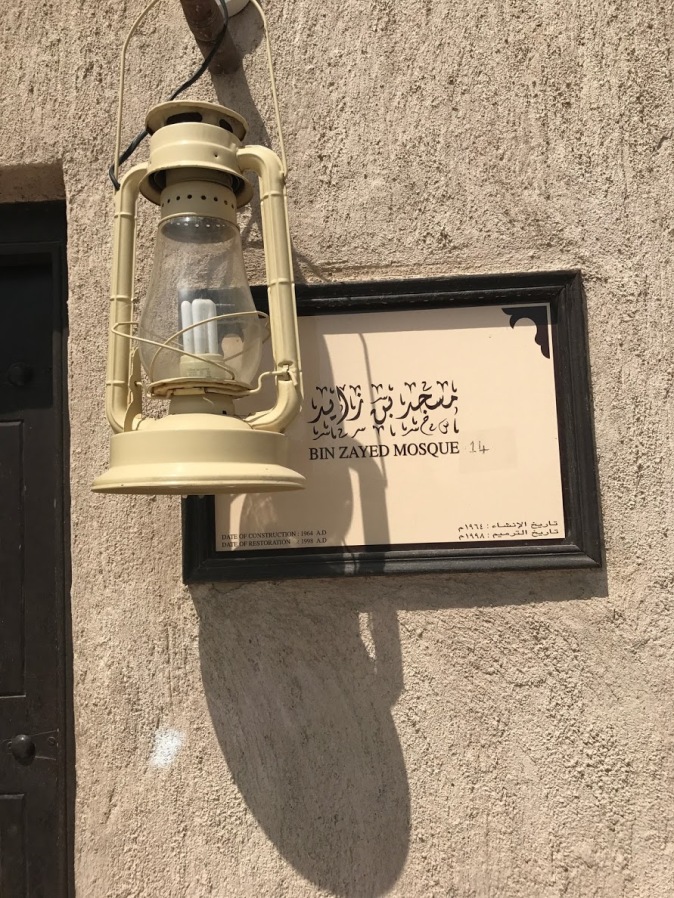 Bin Zayed Mosque in Al Shindagha constructed in 1964
Bin Zayed Mosque in Al Shindagha constructed in 1964
Historic district of Al Shidagha
I always like to start my itinerary by parking near the Al Ghudaiba Metro station before exploring the traditional houses of Al Shindagha. Some of these houses are converted into museums and spaces for special exhibits – for example, the Architecture Museum (read in my Hidden Gems column) or the Sheikh Saeed Al Maktoum House, the historic building and former residential quarters of former ruler of Dubai. For me, the kaleidoscopic charm of traditional souqs supersede the impressive shopping malls any day. The mishmash of items sold at small kiosks or established retail outlets in the old Textile Souq range from expensive regional antiques and artefacts to embroidered cushions, clothing and footwear from the subcontinent, attars or aromatic Arabic perfumes to bukhour or oudhs, incenses and scented bricks soaked in fragrant natural oils, local spices and many such interesting things. Added impetus are always the fresh coconut water or freshly squeezed sugar cane juices to keep one hydrated during the mini breaks! The original plan was to stop at Barjeel Guest House for breakfast but it wasn’t open. Instead, we halted at Blue Barjeel Restaurant by the creek side – another casual eatery that I like to take our guests to. A masala omelette with parathas, a plate of crispy fried falafels and fresh coconut water fuelled us up adequately until our next meal halt – lunch at SMCCU.
Intricately designed traditional doors in Sheikh Saeed Al Makhtoum House, est. in 1896
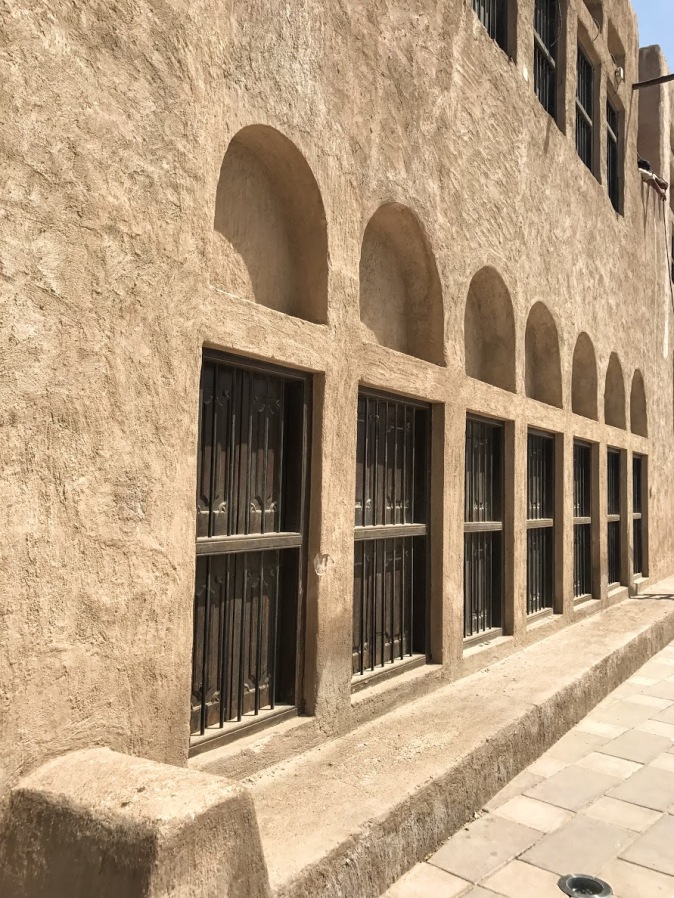 Traditional wooden windows in Sheikh Saeed Al Makhtoum House
Traditional wooden windows in Sheikh Saeed Al Makhtoum House
Sheikh Saeed Al Makhtoum House is vast and occupies around 3600 sqm and now a houses a museum
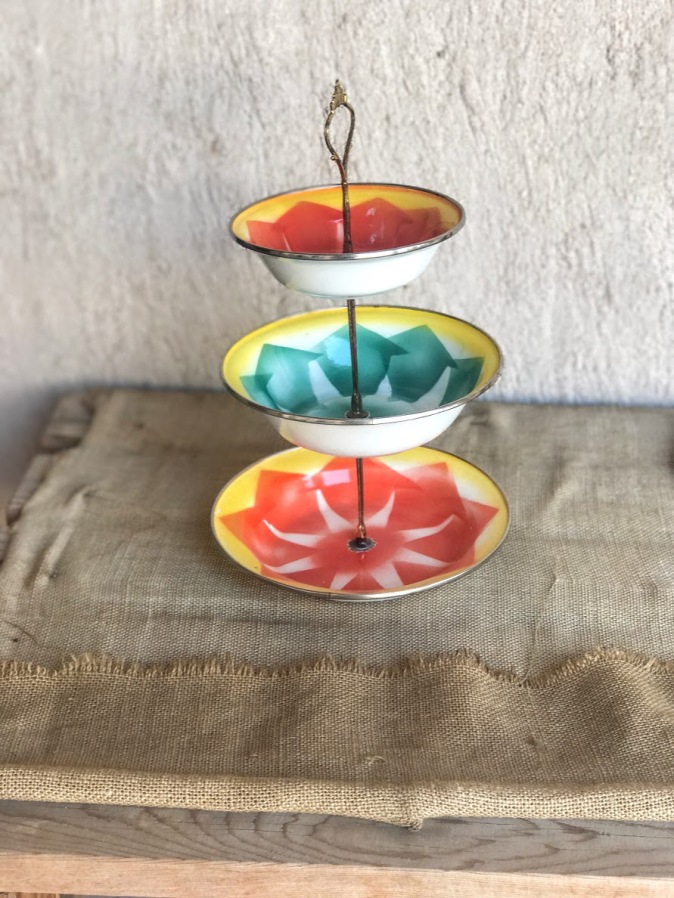 The rooms inside Sheikh Saeed Al Makhtoum House are decorated in a traditional way
The rooms inside Sheikh Saeed Al Makhtoum House are decorated in a traditional way
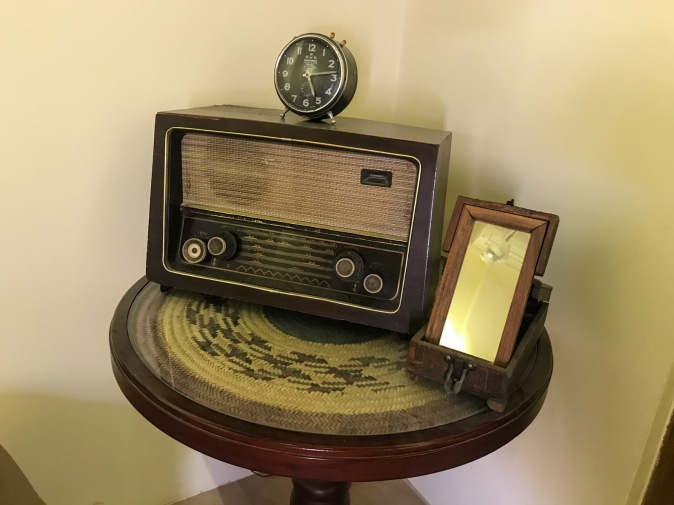 Apart from artefacts, the museum also has many images of old Dubai from the 1940s and 1950s
Apart from artefacts, the museum also has many images of old Dubai from the 1940s and 1950s
 Another intricate wooden door in the Traditional Architecture Museum
Another intricate wooden door in the Traditional Architecture Museum
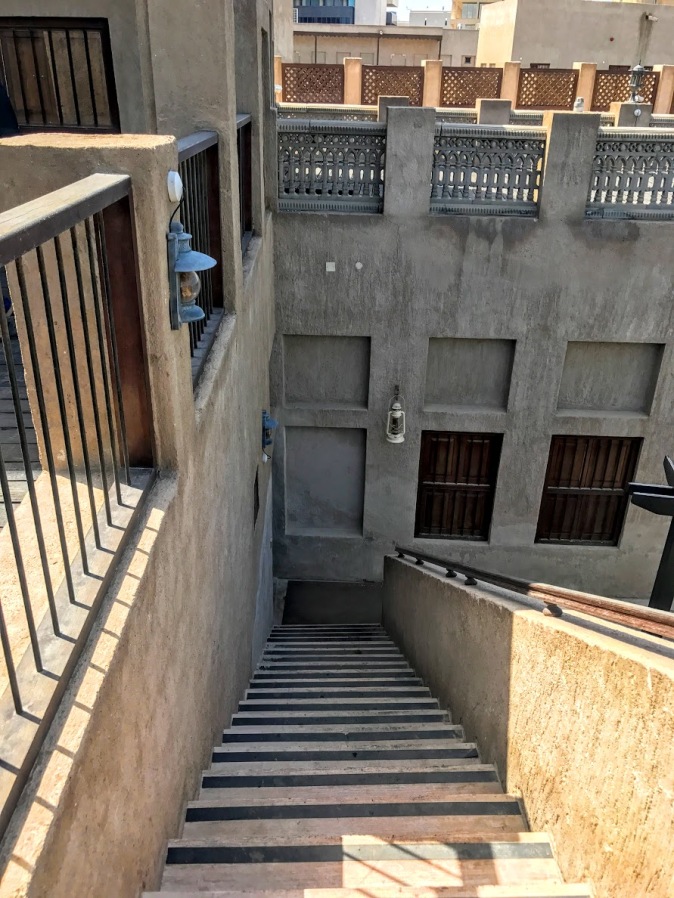 A typical of a traditional Emirati house in the historical districts of Al Shindagha and Al Fahidi
A typical of a traditional Emirati house in the historical districts of Al Shindagha and Al Fahidi
 Dubai creek, the focal point in Dubai’s trading history. It is a natural sea-water inlet that cuts the city into two parts – Deira and Bur Dubai
Dubai creek, the focal point in Dubai’s trading history. It is a natural sea-water inlet that cuts the city into two parts – Deira and Bur Dubai
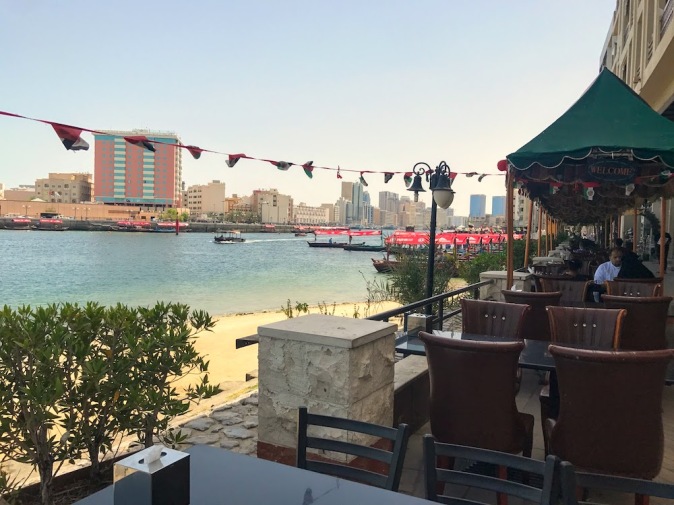 Blue Barjeel restaurant offers a spectacular view of Dubai creekside
Blue Barjeel restaurant offers a spectacular view of Dubai creekside
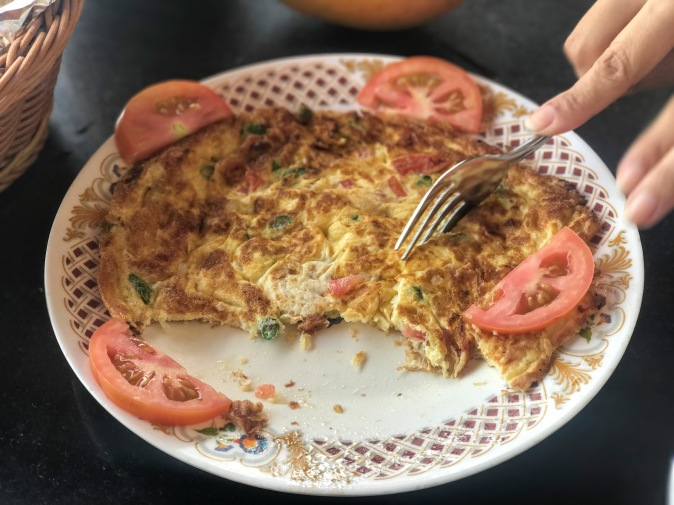 Masala omelette
Masala omelette
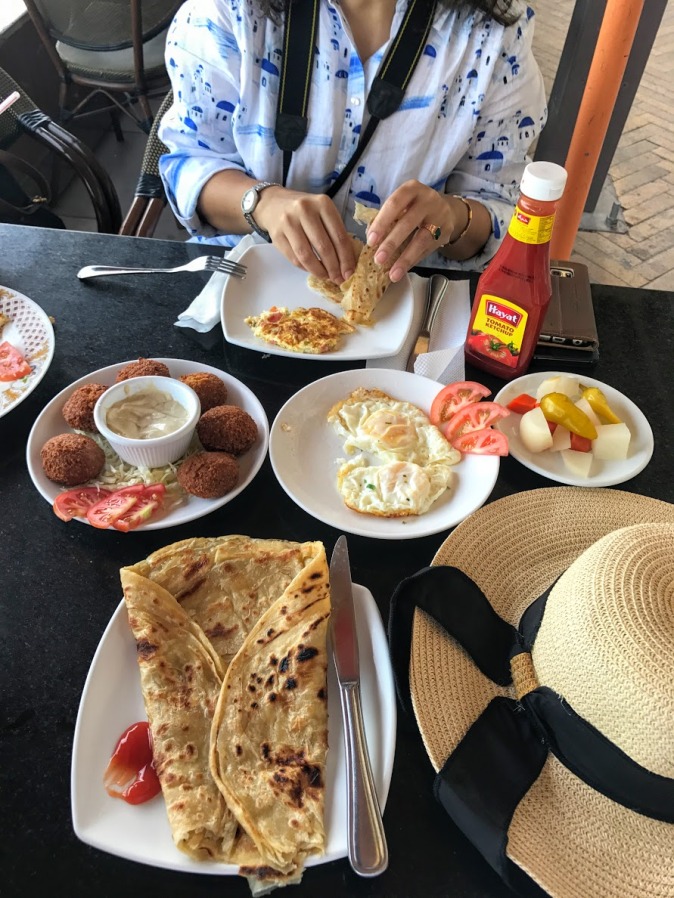 Breakfast at Blue Barjeel – falafels, parathas and eggs
Breakfast at Blue Barjeel – falafels, parathas and eggs
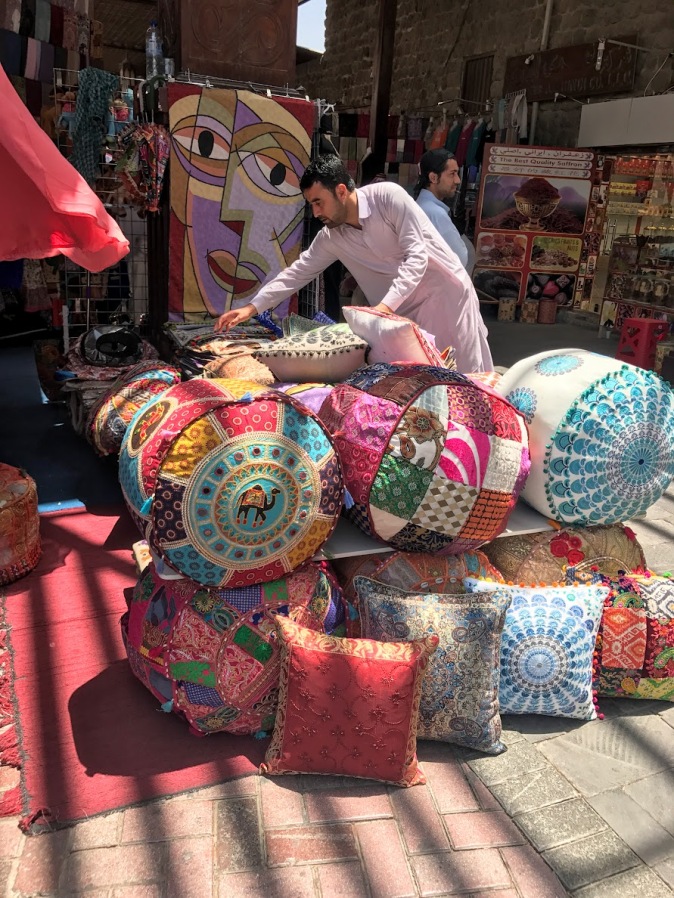 Vendors setting up their shops in Textile Souq
Vendors setting up their shops in Textile Souq
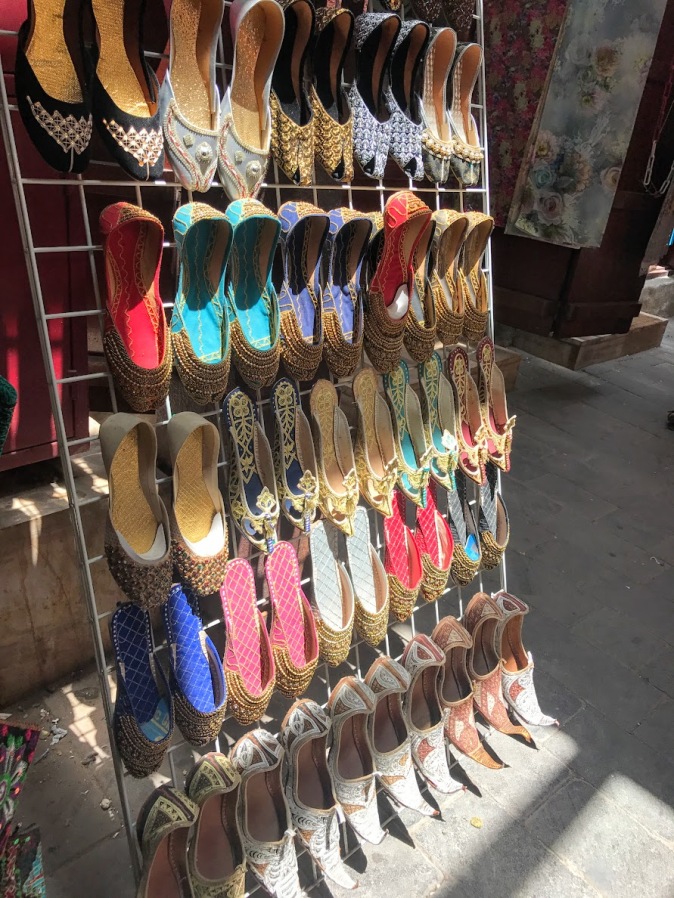 Juttis or Nagrais, traditional embroidered footwear in the Textile Souq
Juttis or Nagrais, traditional embroidered footwear in the Textile Souq
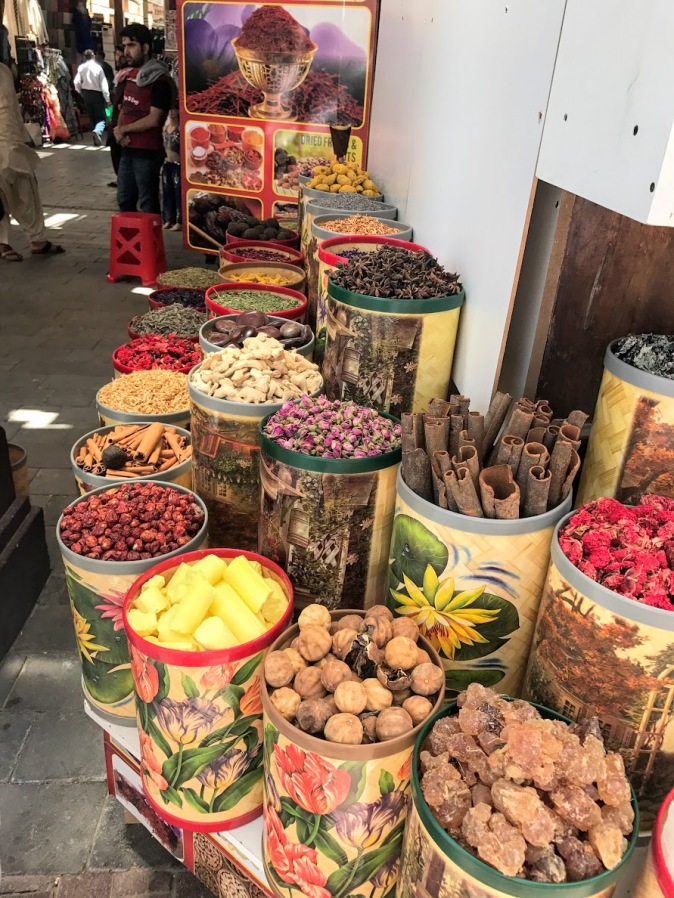 A spice shop selling exotic spices, extracts and dried herbs
A spice shop selling exotic spices, extracts and dried herbs
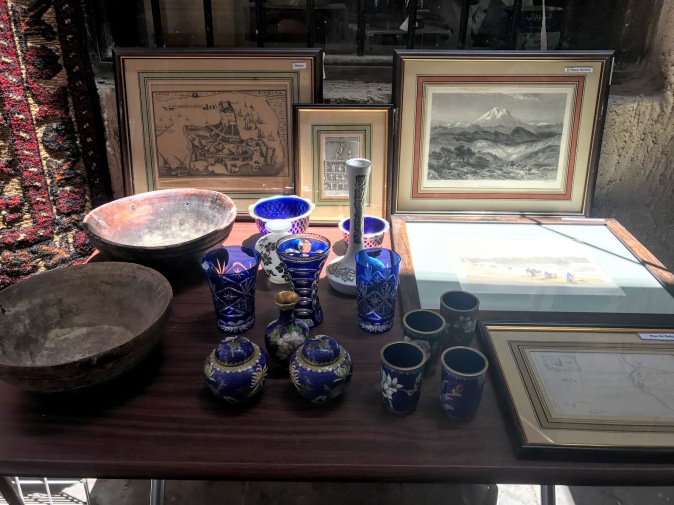 A window display with artefacts and antiques
A window display with artefacts and antiques
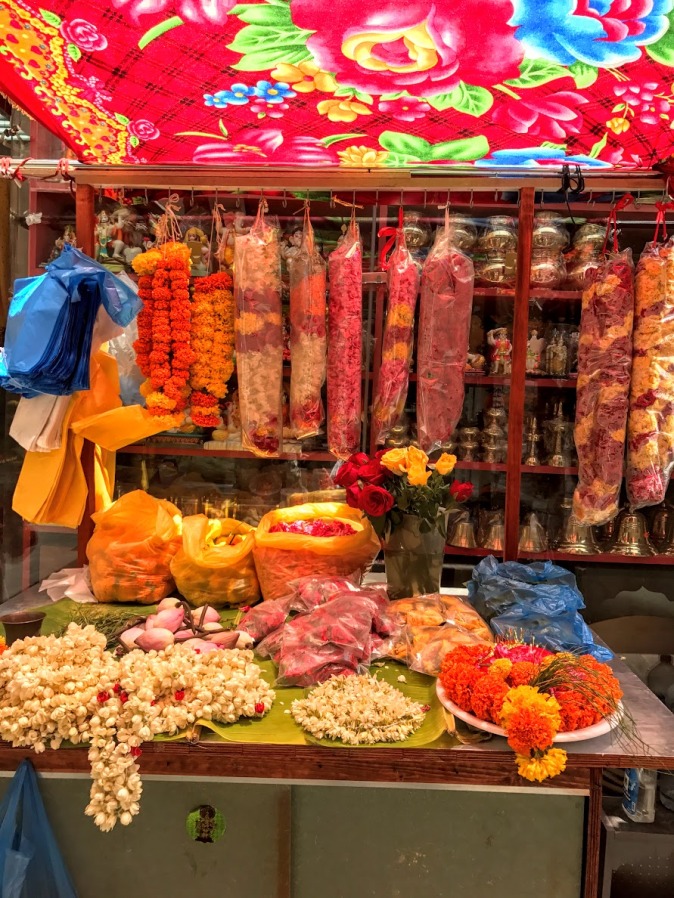 A shop in the temple alley in selling fresh flower garlands and other puja ingredients
A shop in the temple alley in selling fresh flower garlands and other puja ingredients
Al Fahidi Historical Neighbourhood or Bastakiya as it was known earlier
The Al Fahidi district, on the other hand is a riot of colours and a stimulation for any art lover. Galleries hidden in nooks and sikkas or alleys, traditional houses restored and transformed into cool cafes and eateries, museums showcasing specific interests – the options are far too many along the cobbled winding sikkas of Al Fahidi. After our lunch break with a cultural meal at SMCCU, we briefly visited the Coffee Museum, the Calligraphy House, Majlis Gallery, XVA Art Hotel and Café and a few other villas in this heritage quarter. The SMCCU or the Sheikh Mohammed Centre for Cultural Understanding (SMCCU) offers a range of cultural and culinary activities and initiates both the expats and tourists into Emirati culture. Fathayah Younis, our lovely presenter at SMCCU welcomed us with Qahwa, the traditional Arabic coffee followed by an elaborate lunch spread that comprised of Chicken Biryani, Lamb Machboos, Lamb Margooba, Vegetable Saloona and the divine Leqaimat – the crispy fried golden dough balls coated with date syrup and sesame seeds!
Qahwa, the traditional Arabic coffee made from green coffee beans and cardamom | cultural meal at SMCCU
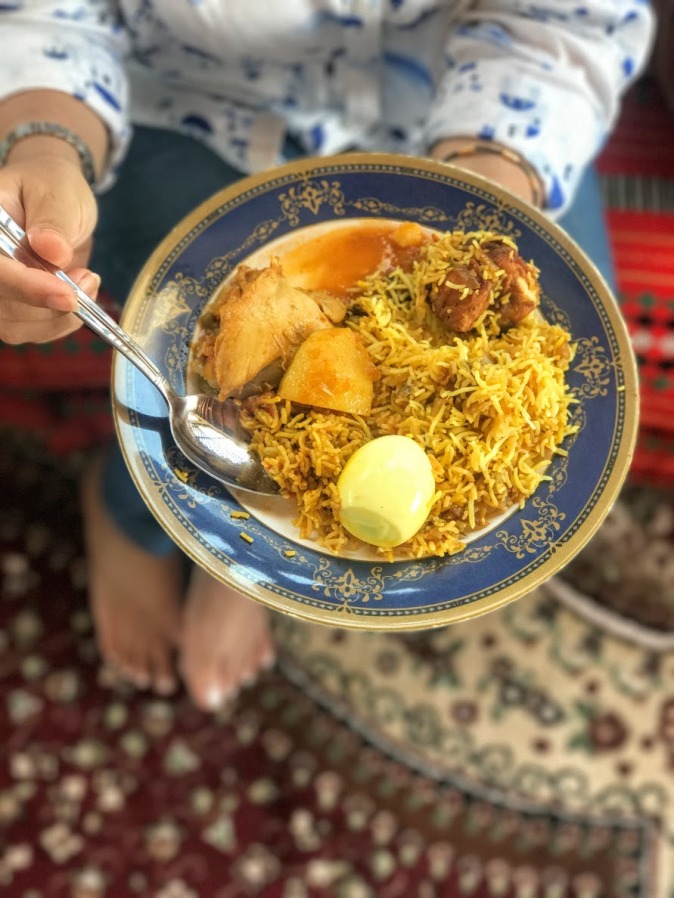 Chicken Machboos at our cultural lunch at SMCCU
Chicken Machboos at our cultural lunch at SMCCU
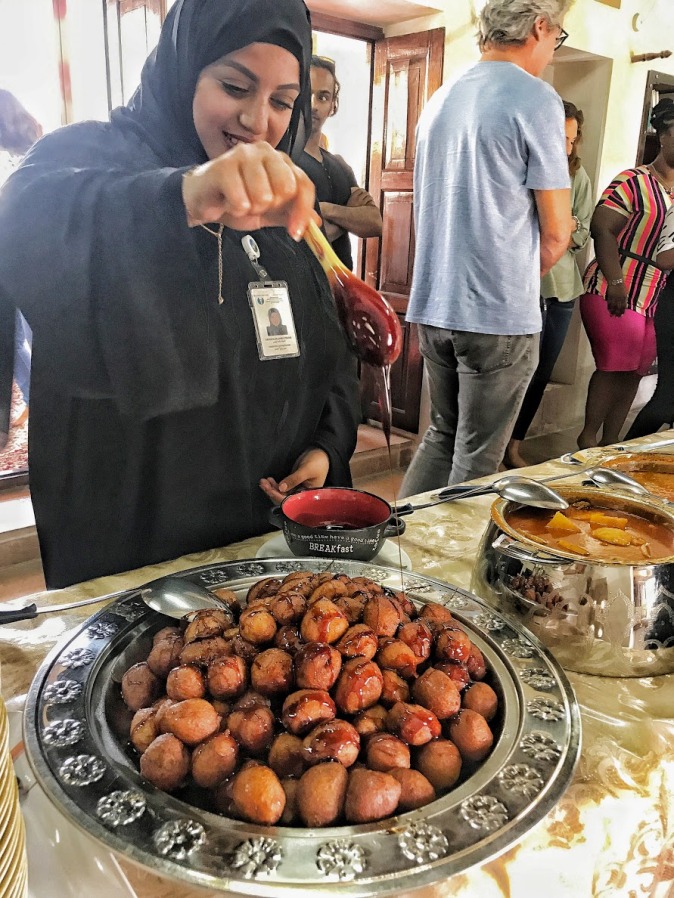 Fathayah Younis, our presenter at SMCCU pours date syrup over Leqaimats, the crispy fried golden dough balls
Fathayah Younis, our presenter at SMCCU pours date syrup over Leqaimats, the crispy fried golden dough balls
 Fathayah explains the local clothing etiquette and the use of niqab
Fathayah explains the local clothing etiquette and the use of niqab
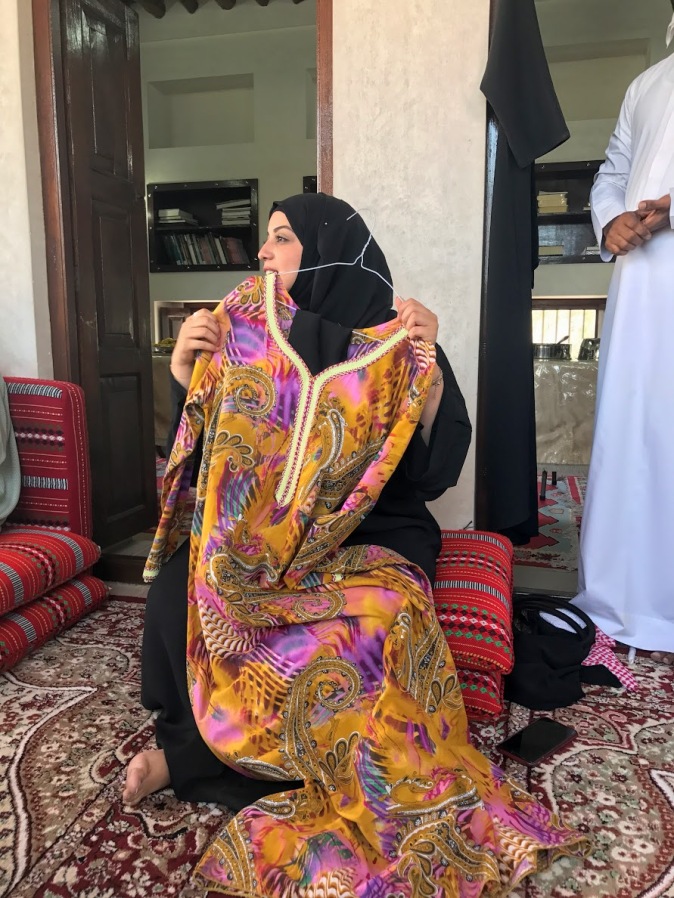
 A display in SMCCU of an old type writer with Arabic fonts
A display in SMCCU of an old type writer with Arabic fonts
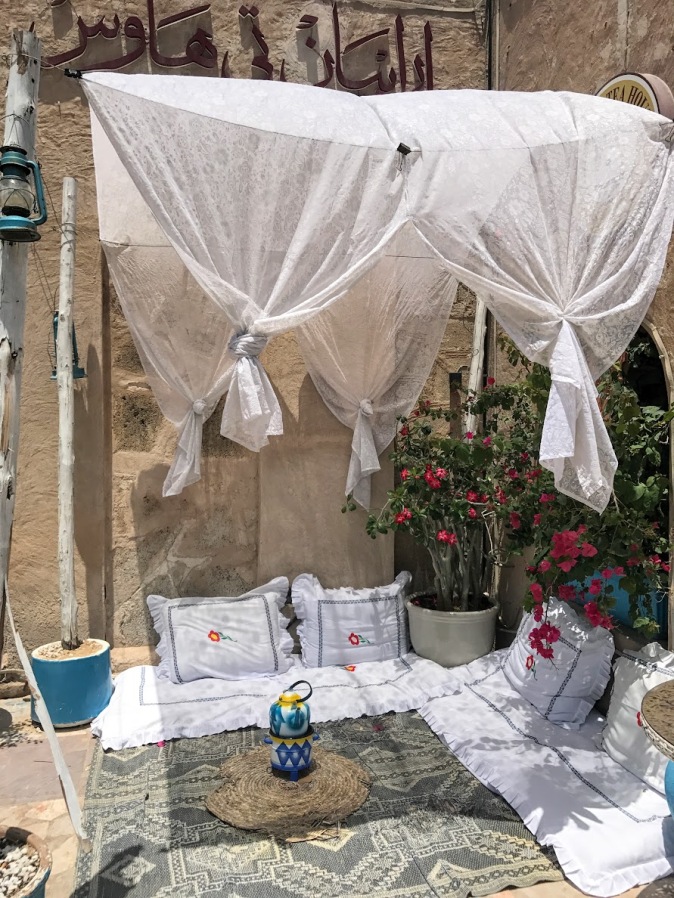 A traditional majlis arrangement in front of Arabian Tea House
A traditional majlis arrangement in front of Arabian Tea House
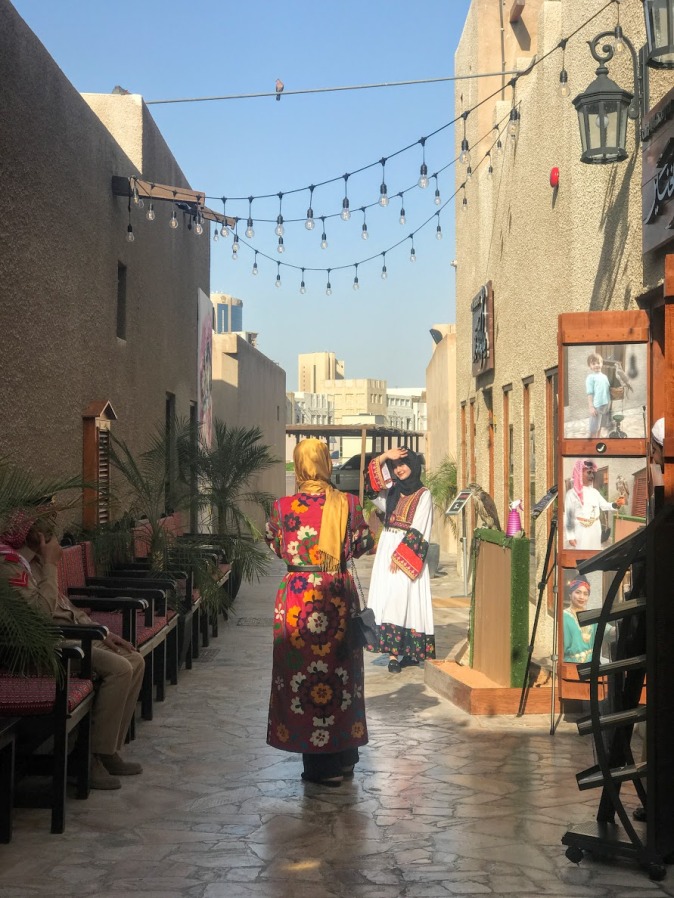 An impromptu photo session in progress in Al Fahidi
An impromptu photo session in progress in Al Fahidi
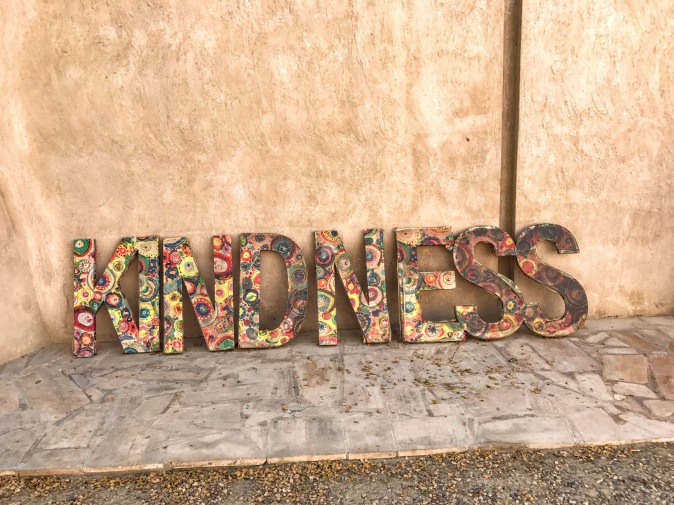 An exhibit in front of Mawaheb from Beautiful People, a Dubai-based art studio for ‘determined’ adults
An exhibit in front of Mawaheb from Beautiful People, a Dubai-based art studio for ‘determined’ adults
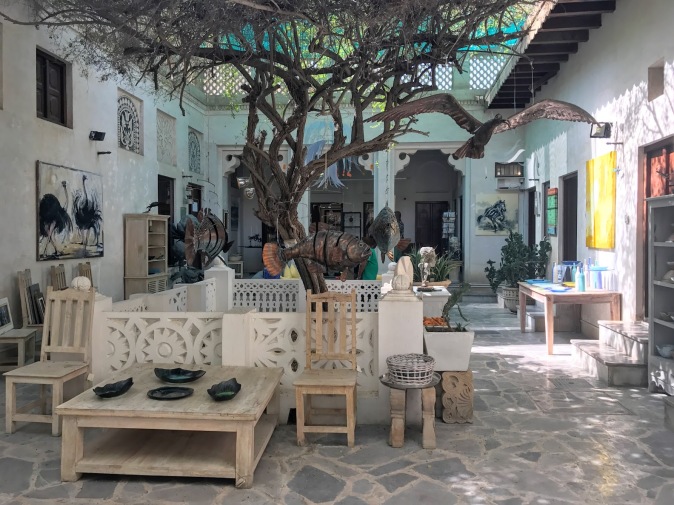 The courtyard inside Majlis Gallery, set up in 1976 by expatriate Alison Collins who fell in love with the unique architecture of Al Fahidi houses
The courtyard inside Majlis Gallery, set up in 1976 by expatriate Alison Collins who fell in love with the unique architecture of Al Fahidi houses
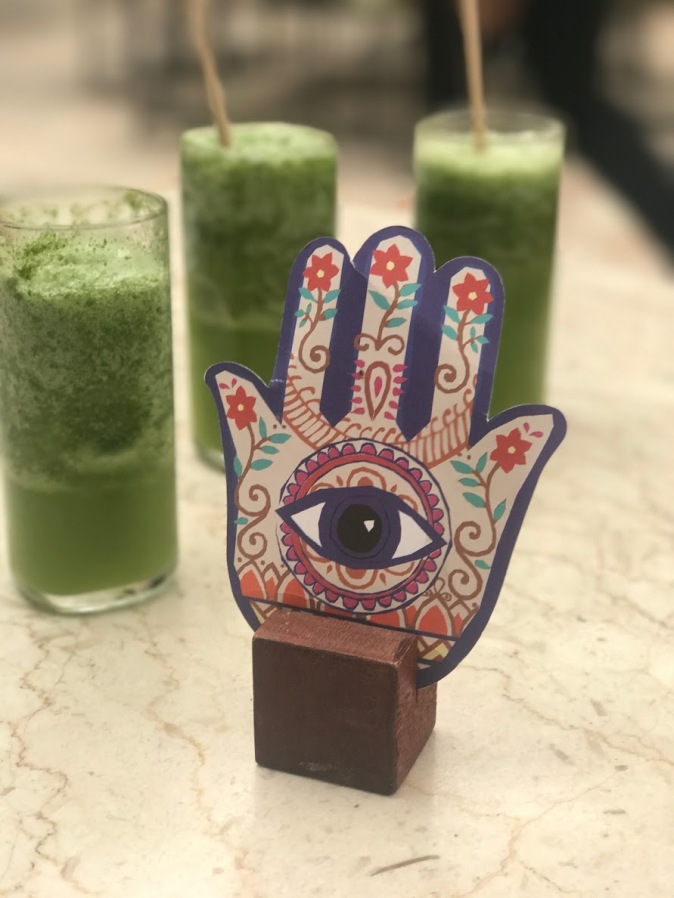 The legendary mint lemonade in XVA Gallery Art Hotel & Cafe
The legendary mint lemonade in XVA Gallery Art Hotel & Cafe
The interiors of XVA Café has art exhibits and specialises in contemporary art from the Arab world and the sub-continent
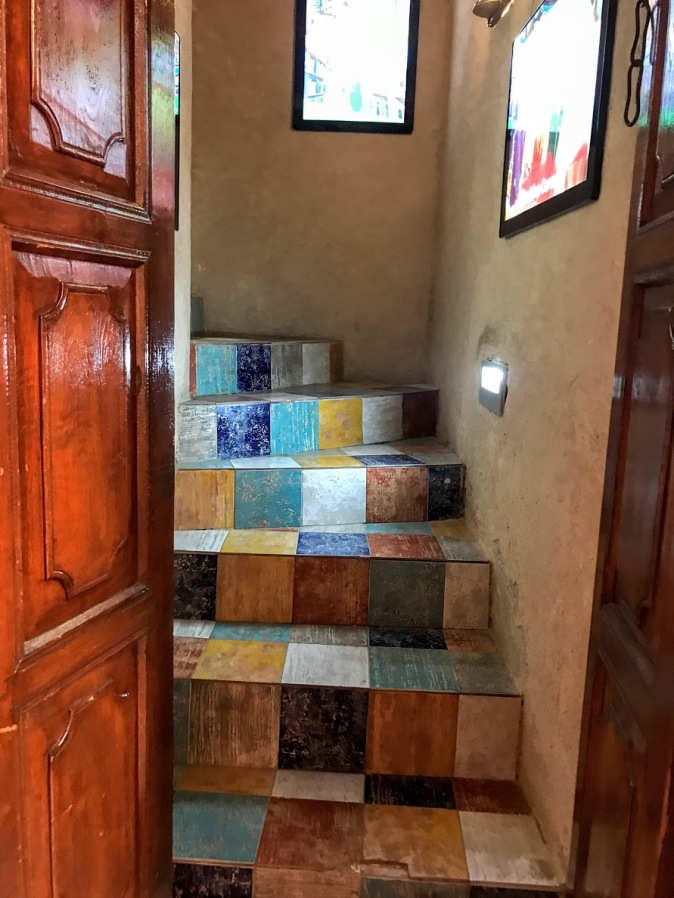 MAKE Art Cafe is in partnership with the creative Alserkal Cultural Foundation
MAKE Art Cafe is in partnership with the creative Alserkal Cultural Foundation
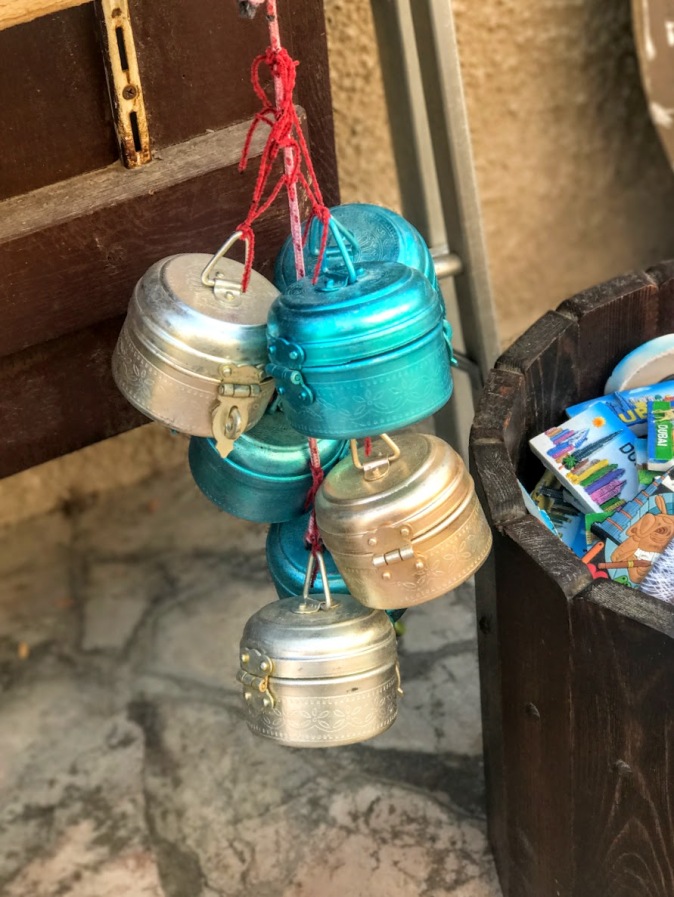 Pretty knick knacks in a souvenir shop in Al Fahidi
Pretty knick knacks in a souvenir shop in Al Fahidi
Related links (none of the below are affiliated links): www.cultures.ae www.coffeemuseum.ae www.mawaheb-dubai.com www.themajlisgallery.com

















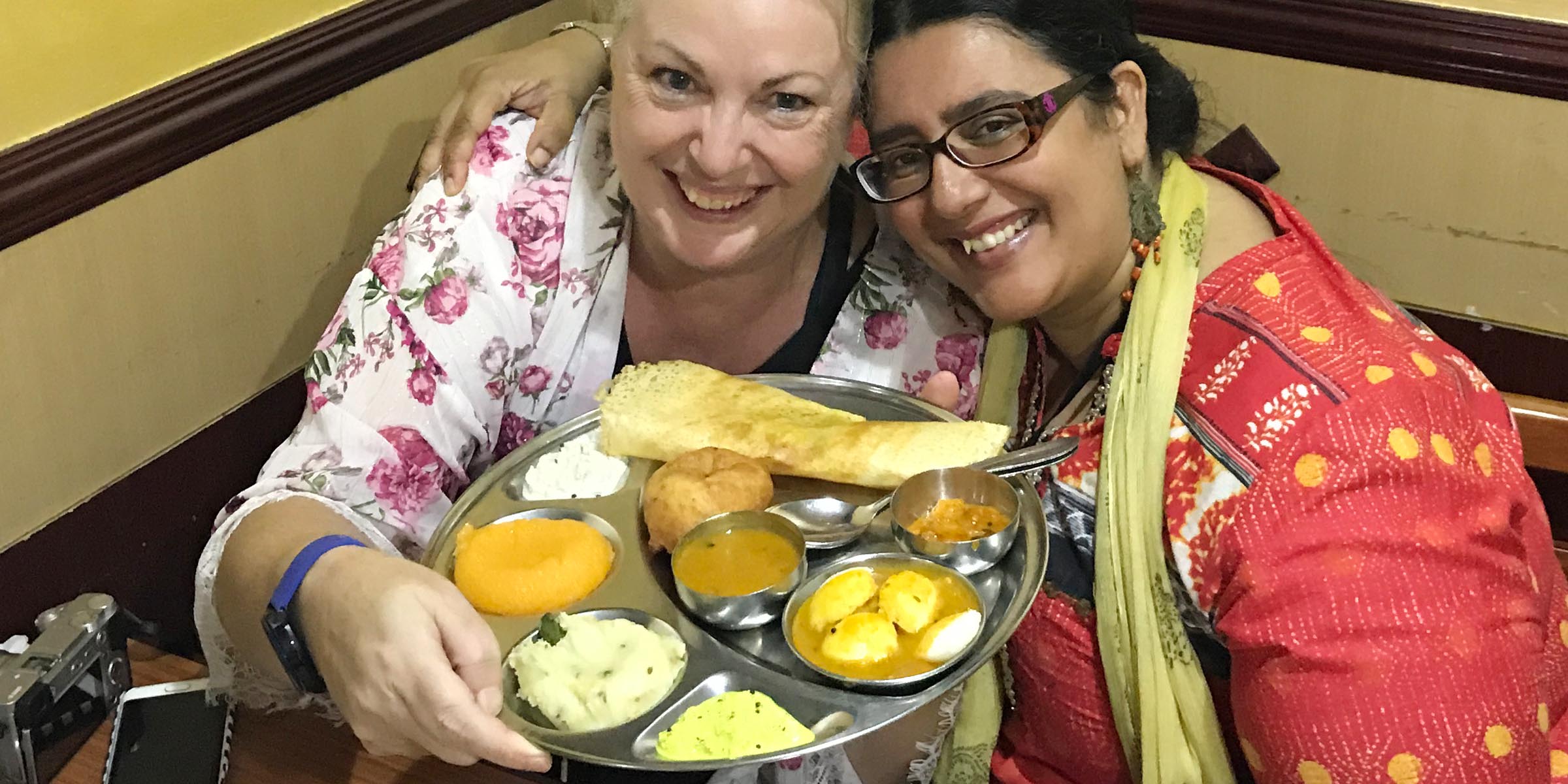
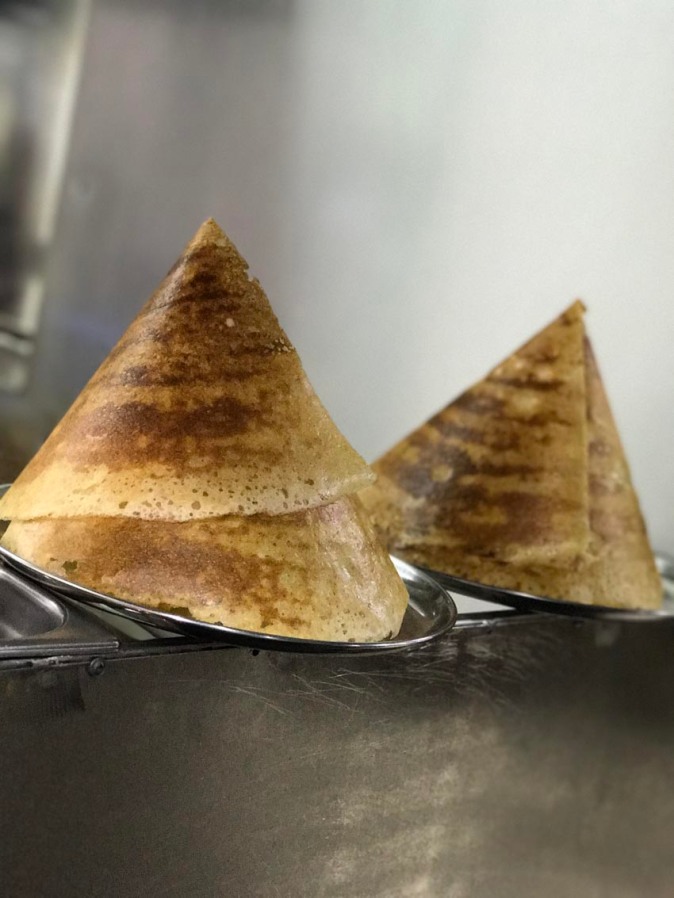
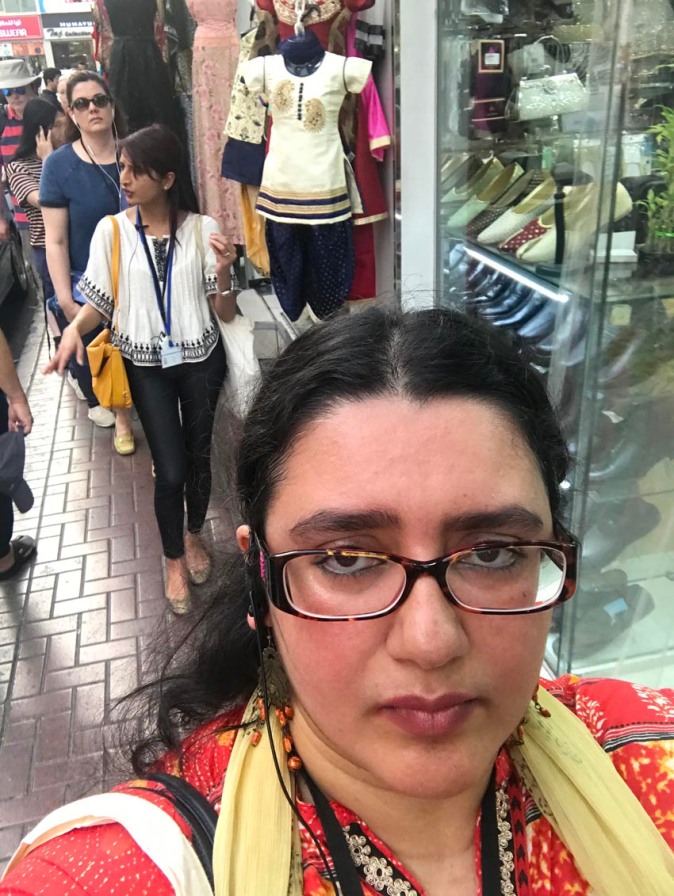 Being on a food tour is a serious activity… gritty and sweaty
Being on a food tour is a serious activity… gritty and sweaty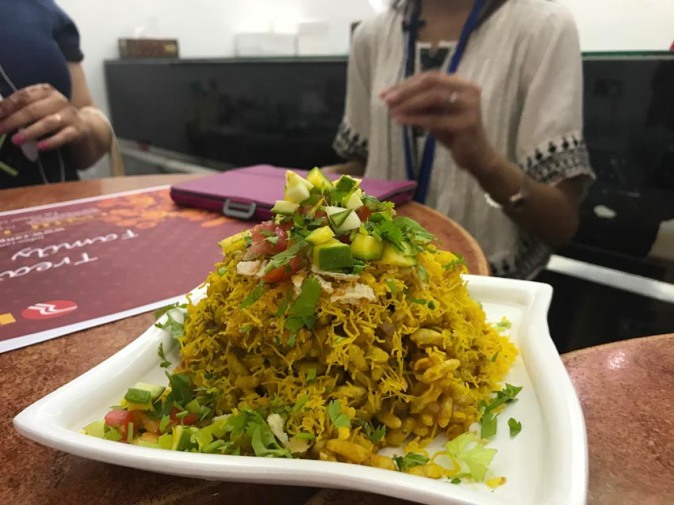 Bhelpuri at Rangoli Restaurant
Bhelpuri at Rangoli Restaurant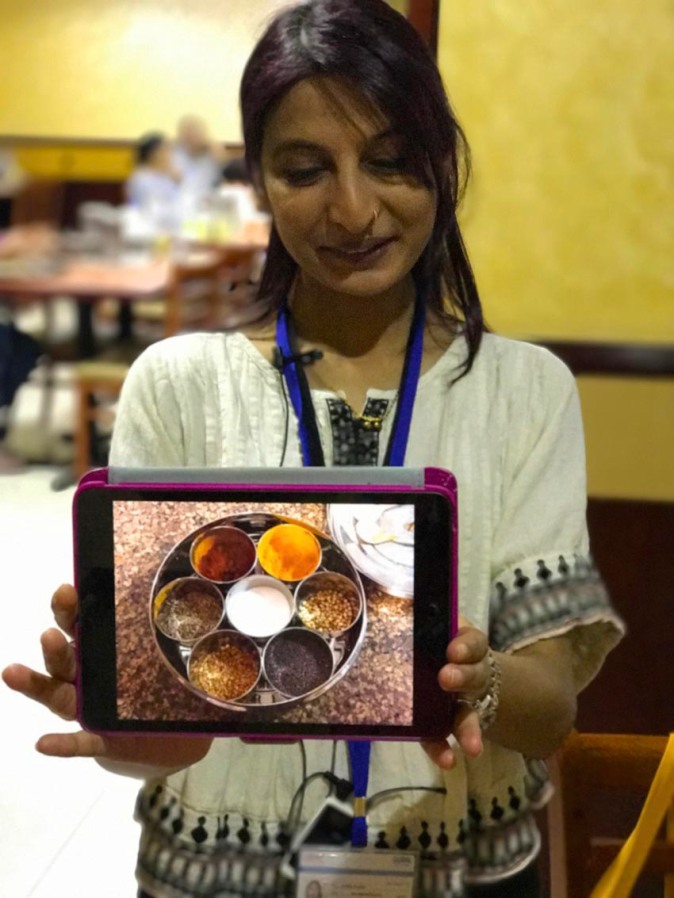 Our tour hostess Farida Ahmed, being a spice show off
Our tour hostess Farida Ahmed, being a spice show off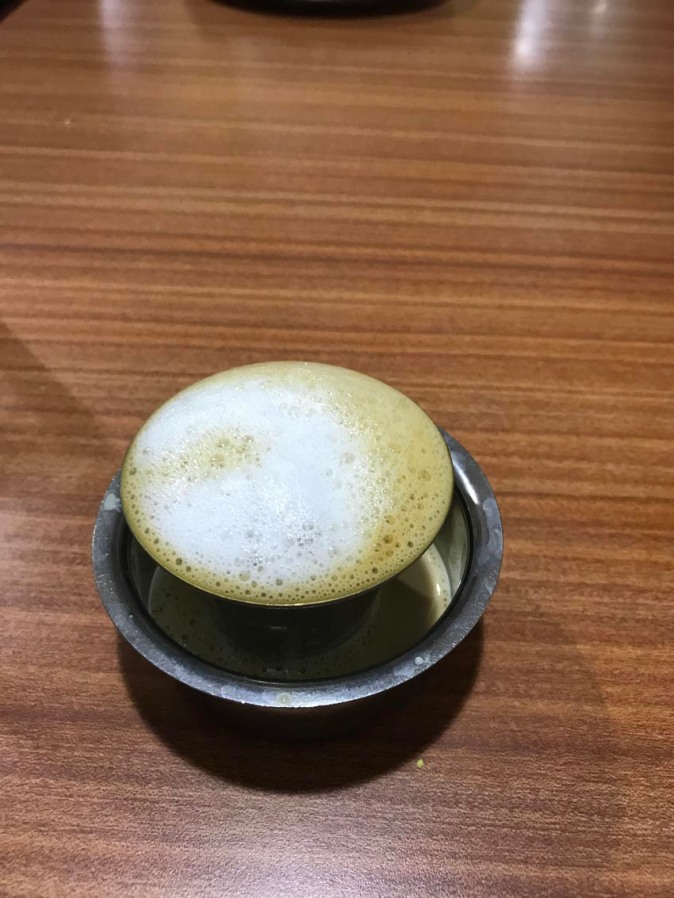 Learning the rocket science of a good South Indian filter coffee at Sangeetha Restaurant
Learning the rocket science of a good South Indian filter coffee at Sangeetha Restaurant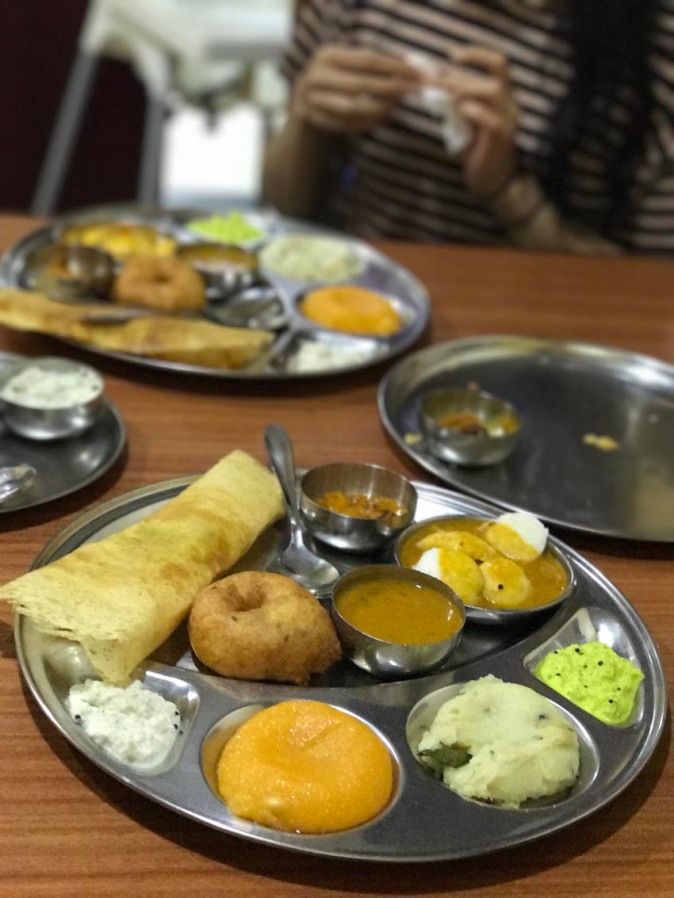 South Indian mini thali at Sangeetha restaurant
South Indian mini thali at Sangeetha restaurant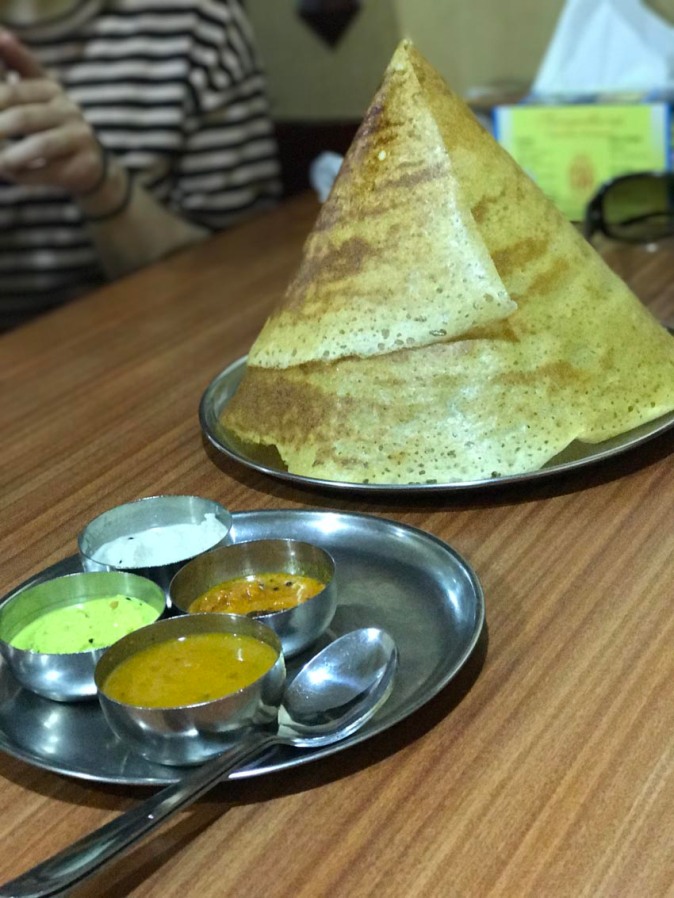 The cone shaped ‘signature’ Topi dosa at Sangeetha Restaurant
The cone shaped ‘signature’ Topi dosa at Sangeetha Restaurant

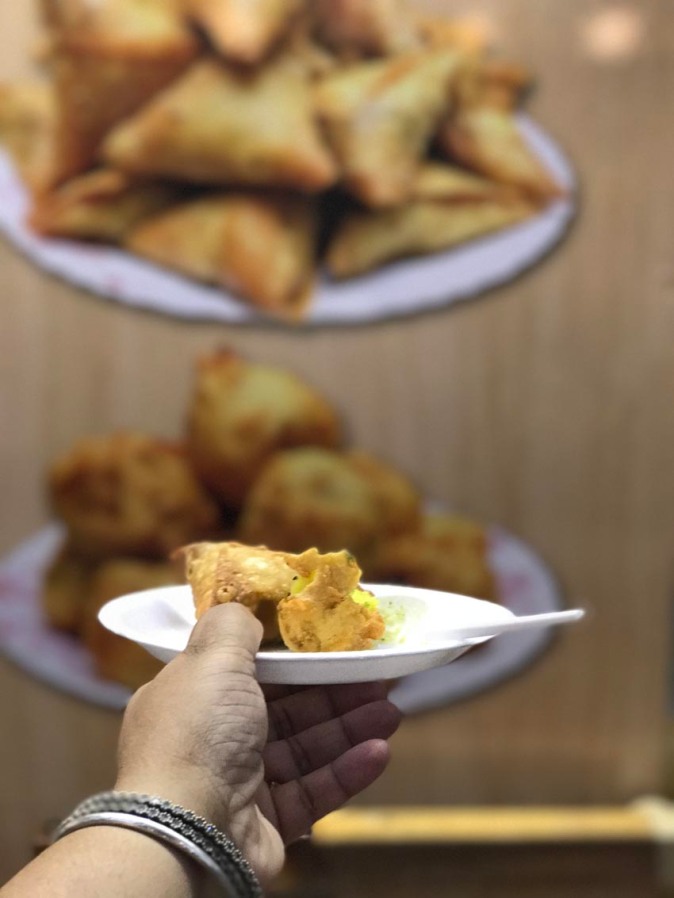 Deep fried crispy aloo bonda at Farisian Cafeteria
Deep fried crispy aloo bonda at Farisian Cafeteria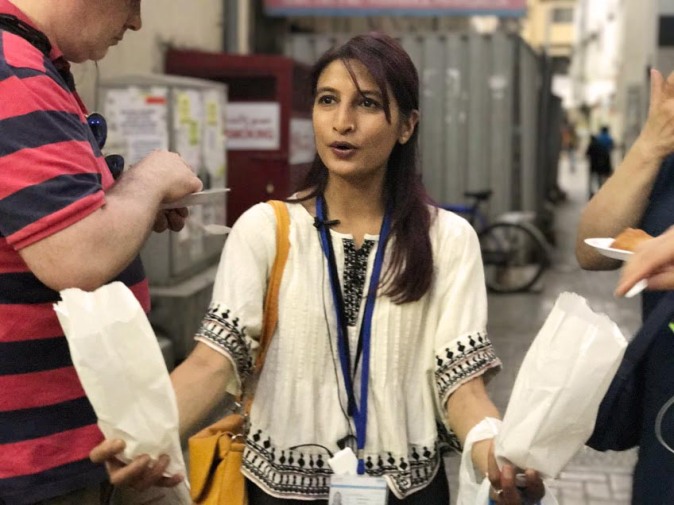 Daunting task – choosing from crispy aloo bondas and samosas
Daunting task – choosing from crispy aloo bondas and samosas Chicken tikka in the grill at Sind Punjab
Chicken tikka in the grill at Sind Punjab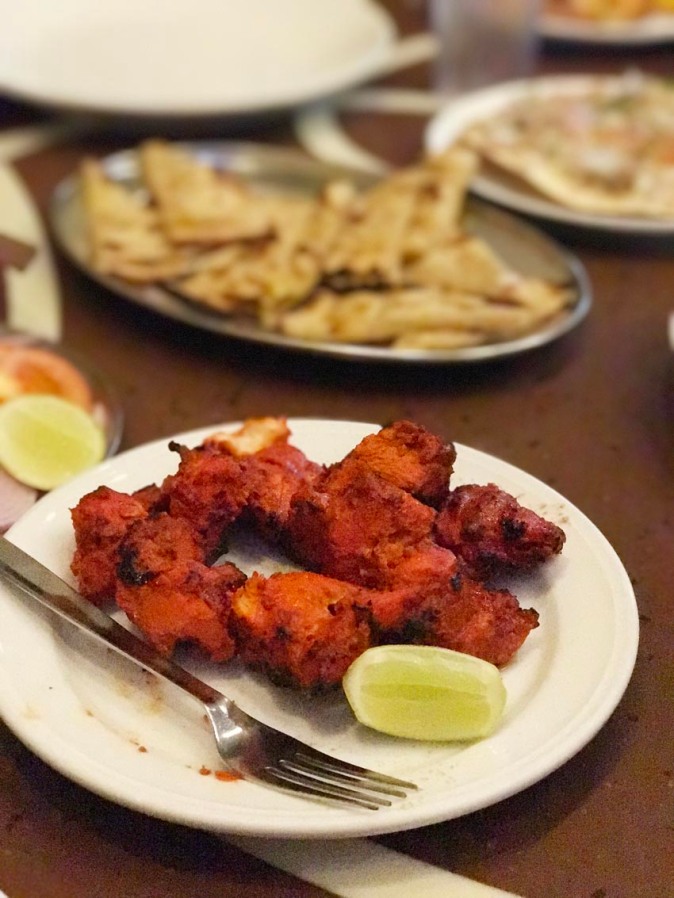 Succulent chicken tikkas at Sind Punjab
Succulent chicken tikkas at Sind Punjab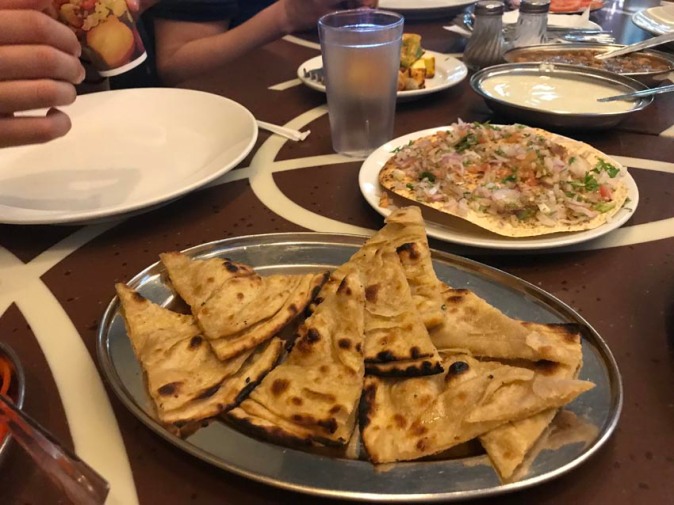 Hot fluffy naans straight from the tandoor at Sind Punjab
Hot fluffy naans straight from the tandoor at Sind Punjab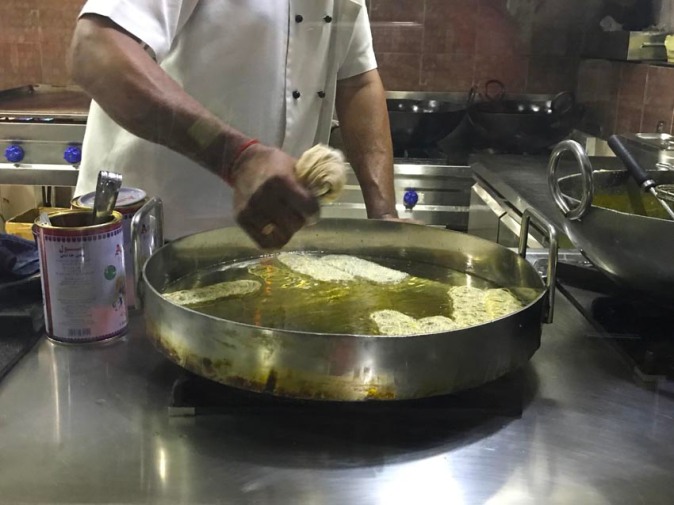 Jalebis in the making at Salam Namaste ( I notice the Amul Ghee!)
Jalebis in the making at Salam Namaste ( I notice the Amul Ghee!)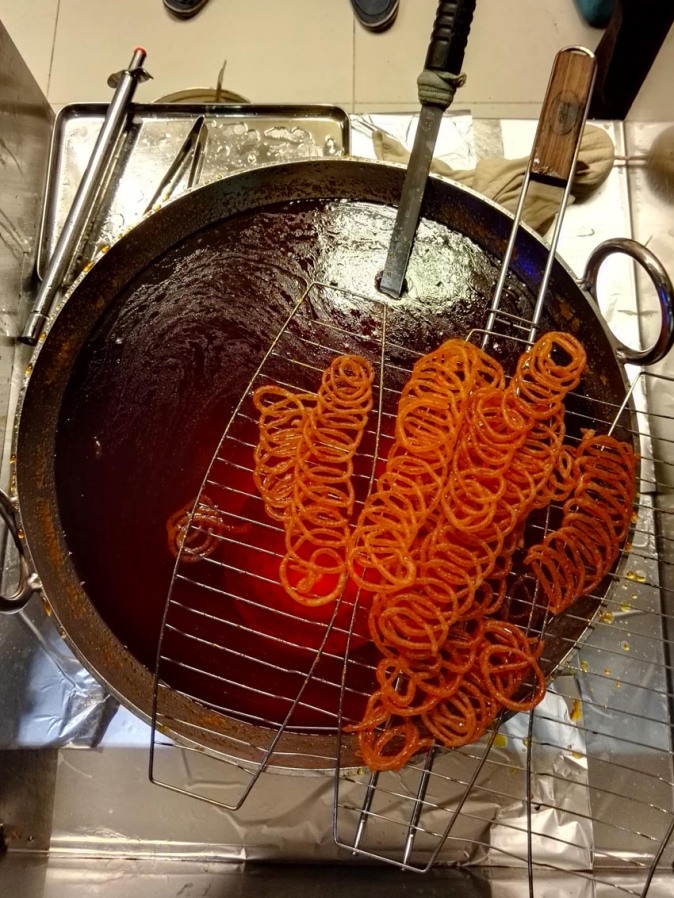 Hot crispy jalebis to be savoured strictly with a rich and creamy rabdi
Hot crispy jalebis to be savoured strictly with a rich and creamy rabdi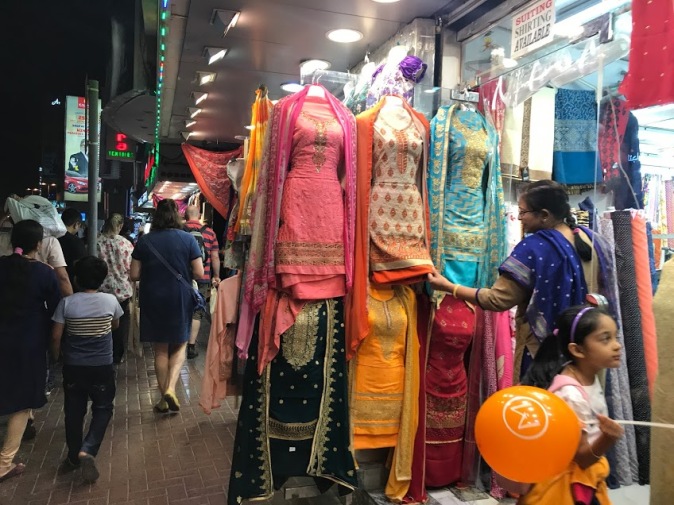 The eternal charm of Meena Bazaar
The eternal charm of Meena Bazaar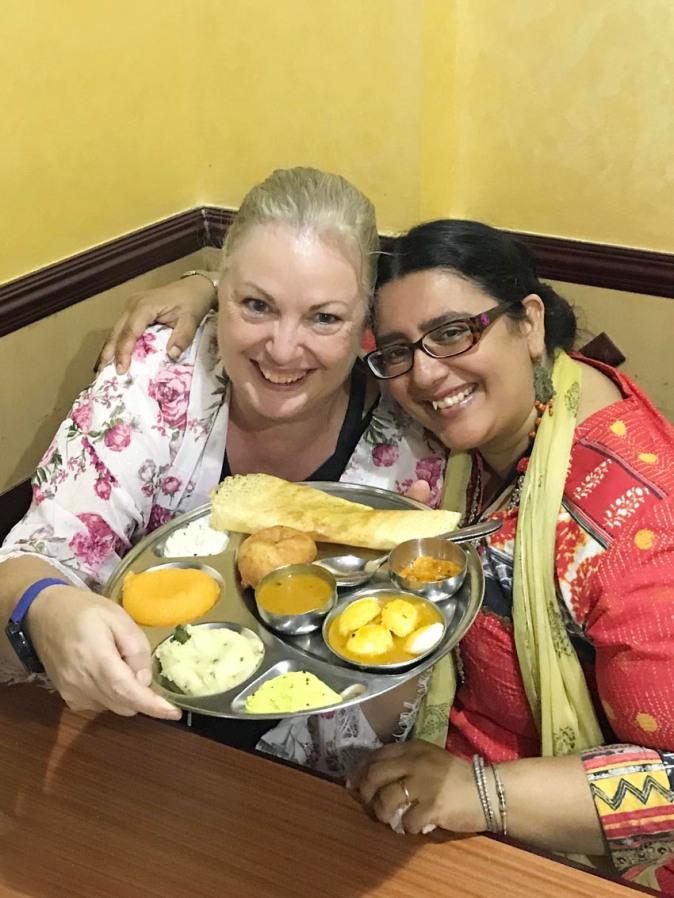 Debbie and I have always bonded over comfort food and food stories that connect people and places
Debbie and I have always bonded over comfort food and food stories that connect people and places

 After twenty years of living in the UAE, we are relocating to India once the commercial flights resume between the UAE and India. The Bearded Biker is being transferred within the organisation that he has been working for, hence it’s a happy move. Where are we headed to next? While I shall reveal that shortly – what I can tell you right now is that, it’s going to be another delicious journey!
After twenty years of living in the UAE, we are relocating to India once the commercial flights resume between the UAE and India. The Bearded Biker is being transferred within the organisation that he has been working for, hence it’s a happy move. Where are we headed to next? While I shall reveal that shortly – what I can tell you right now is that, it’s going to be another delicious journey!
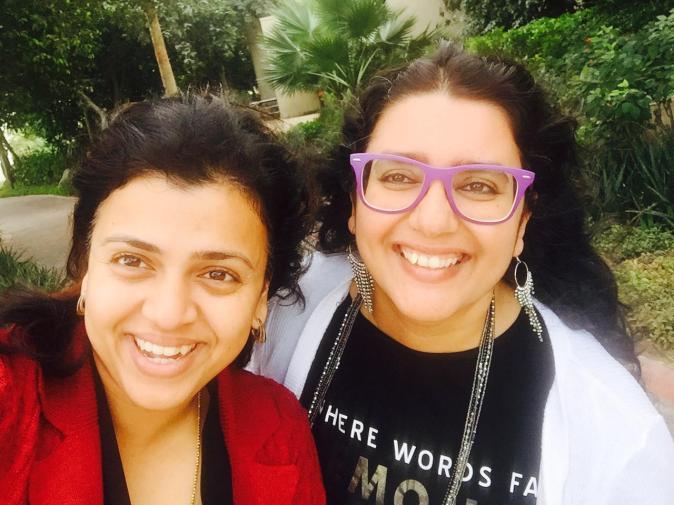 With Esha Nag, Senior Editor of Gulf News for whom I have written one of my favourite columns – Hidden Gems, featuring many casual eateries around Dubai
With Esha Nag, Senior Editor of Gulf News for whom I have written one of my favourite columns – Hidden Gems, featuring many casual eateries around Dubai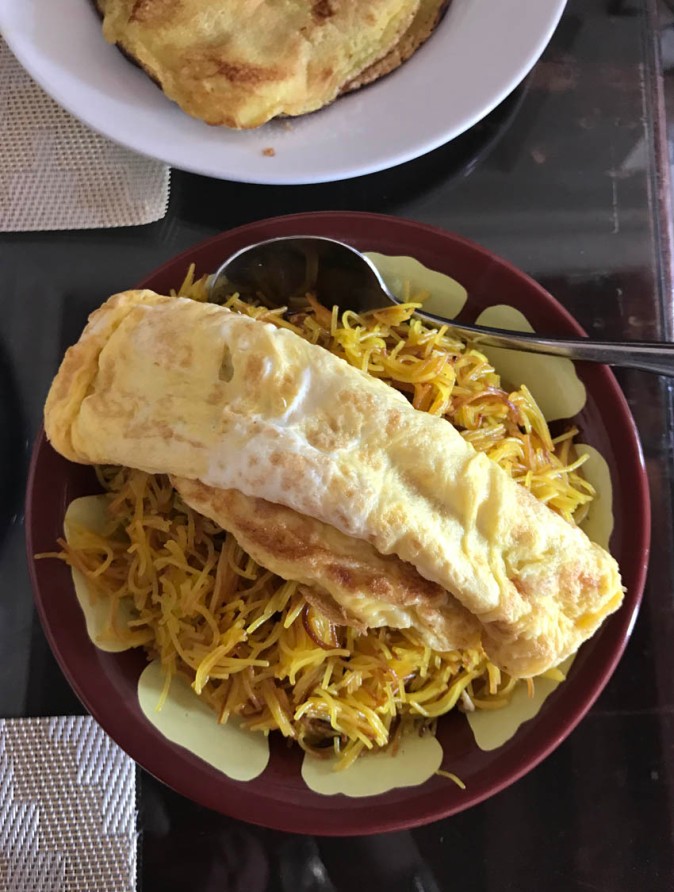 The traditional vermicelli dish Balateet for breakfast at Barjeel Al Arab restaurant
The traditional vermicelli dish Balateet for breakfast at Barjeel Al Arab restaurant

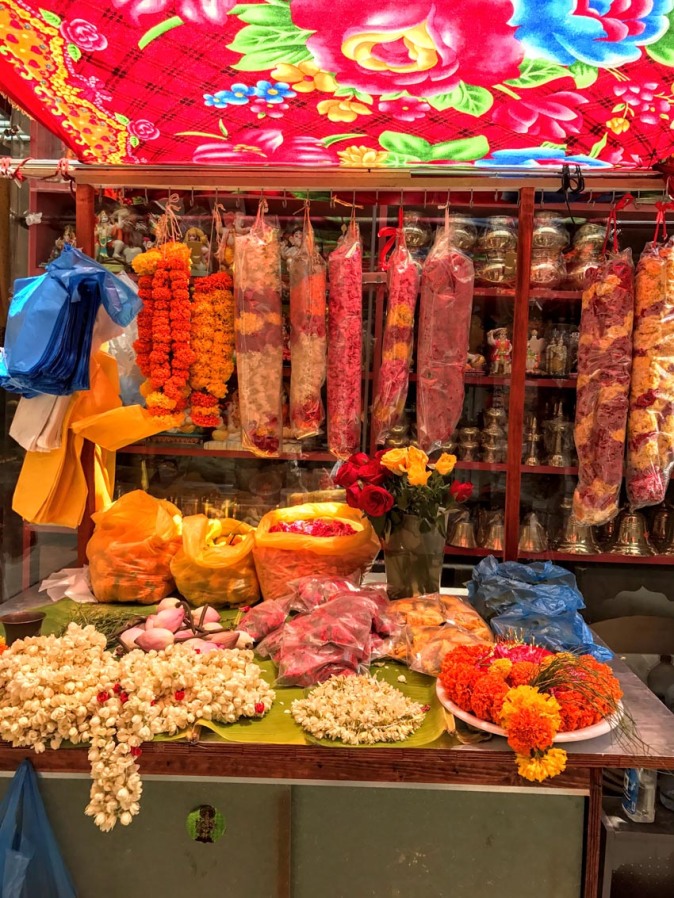 A shop in the temple alley in selling fresh flower garlands and other puja ingredients
A shop in the temple alley in selling fresh flower garlands and other puja ingredients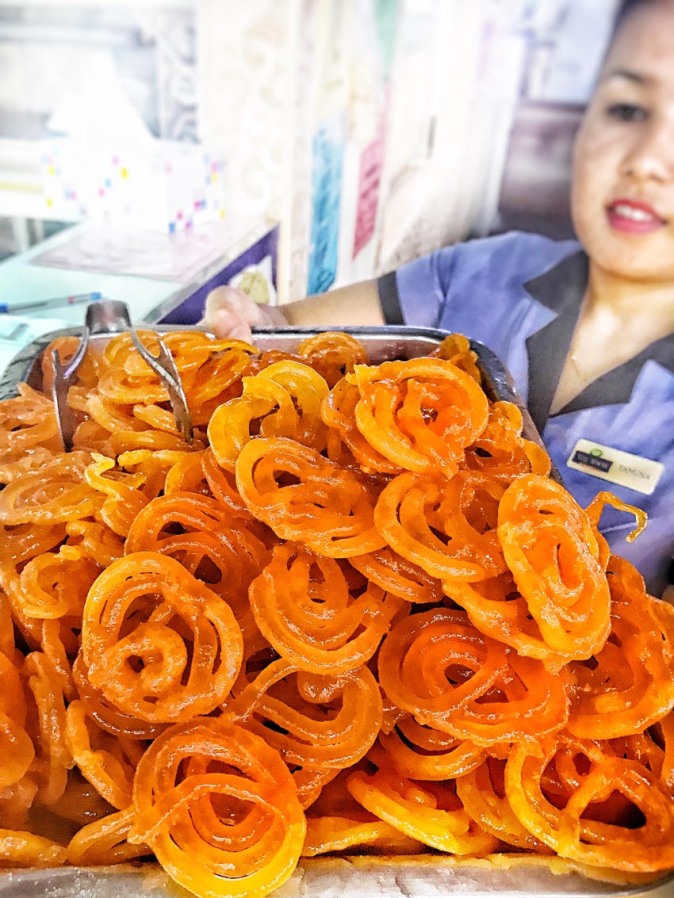 Crispy hot jalebis at Veg World
Crispy hot jalebis at Veg World

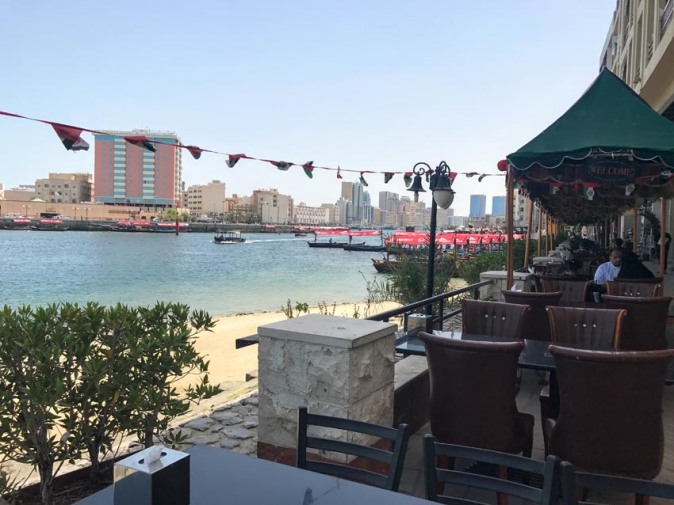 Blue Barjeel restaurant by Dubai creekside
Blue Barjeel restaurant by Dubai creekside

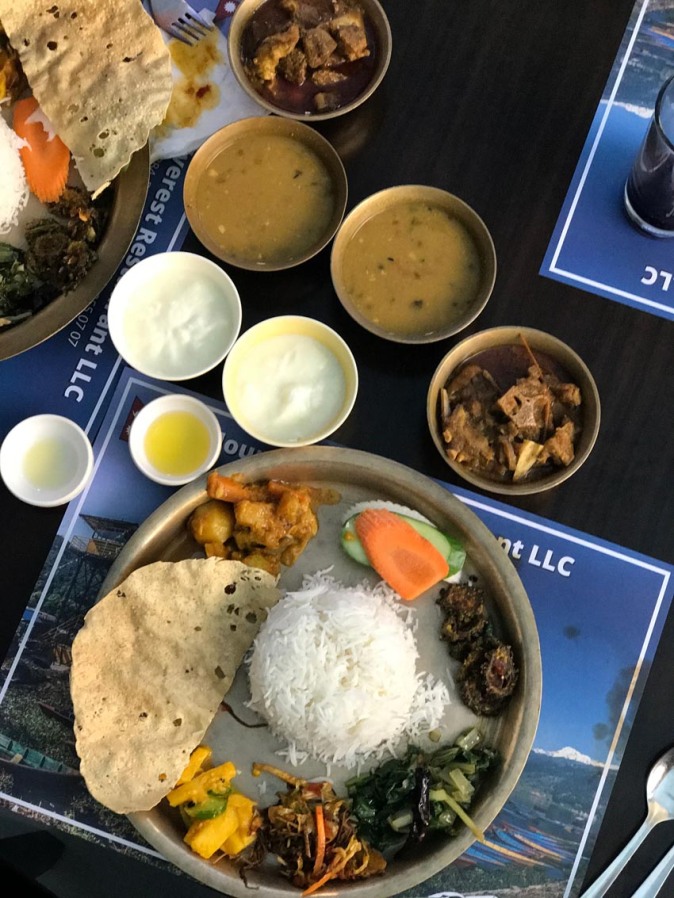 Thakali Mutton thali at Everest Restaurant
Thakali Mutton thali at Everest Restaurant Kothey buff momos at Everest Restaurant
Kothey buff momos at Everest Restaurant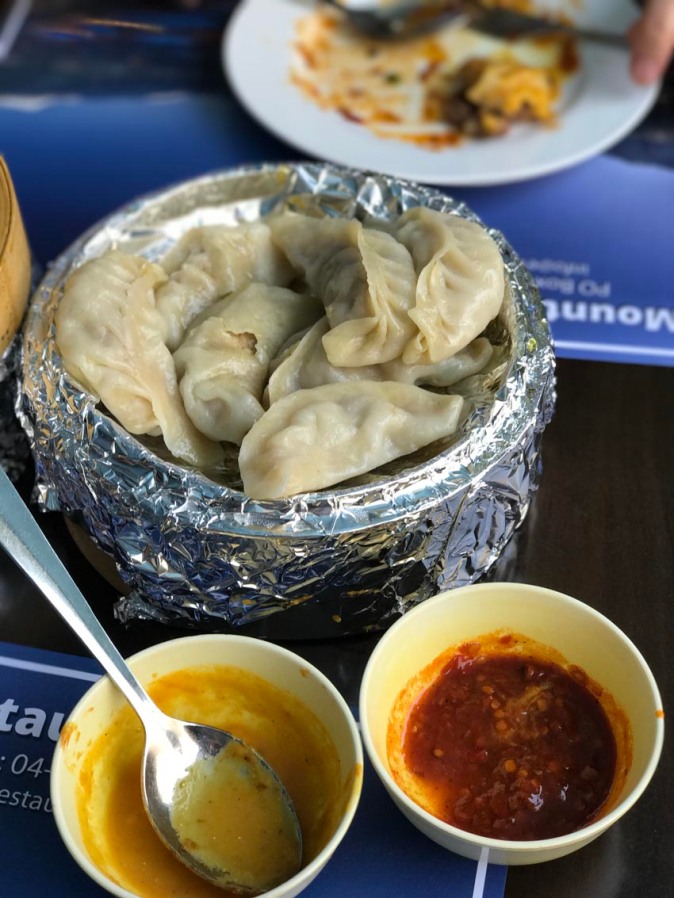 Steamed momo at Everest Restaurant
Steamed momo at Everest Restaurant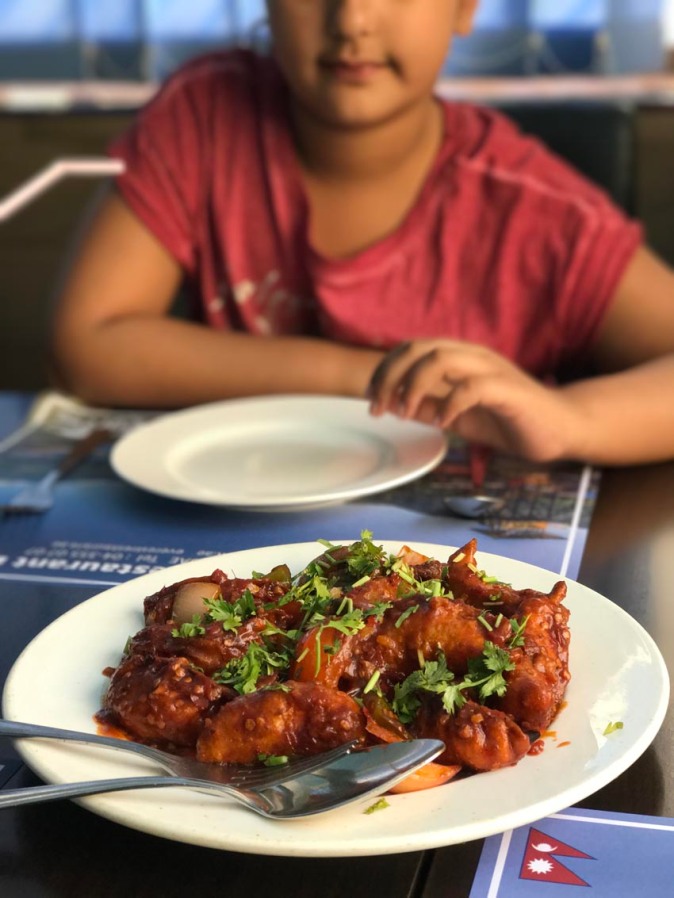 Chilli Buff Momo at Everest Restaurant
Chilli Buff Momo at Everest Restaurant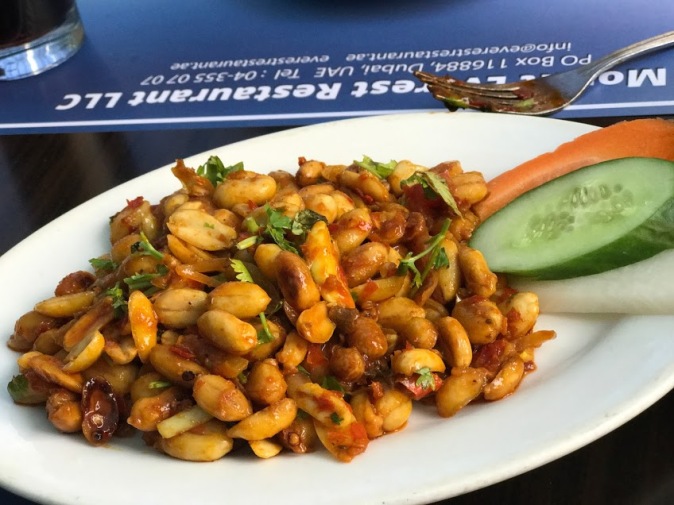 Badam Sadheko or Nepali roasted peanut salad
Badam Sadheko or Nepali roasted peanut salad




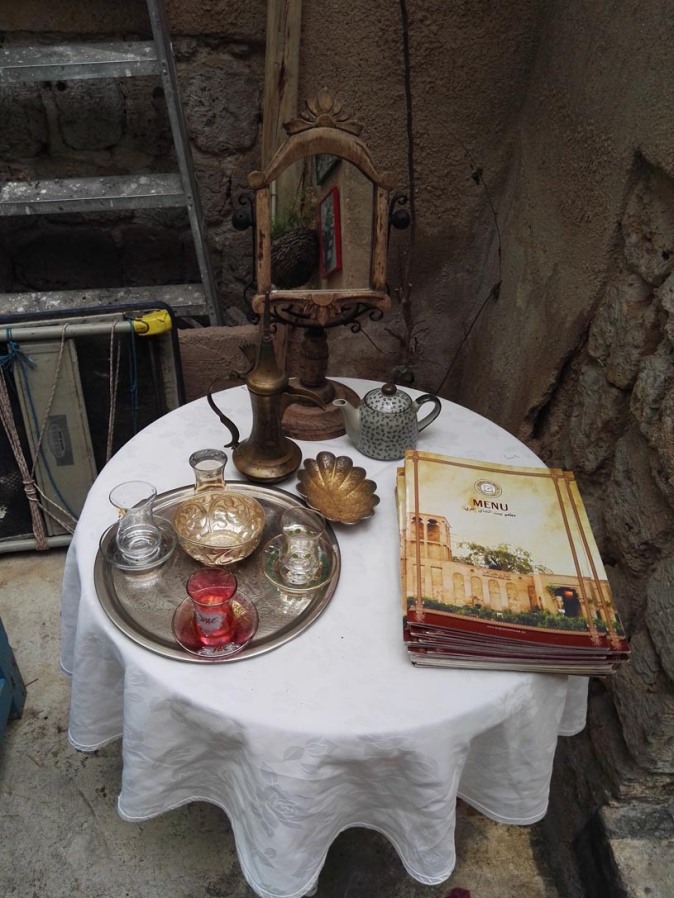
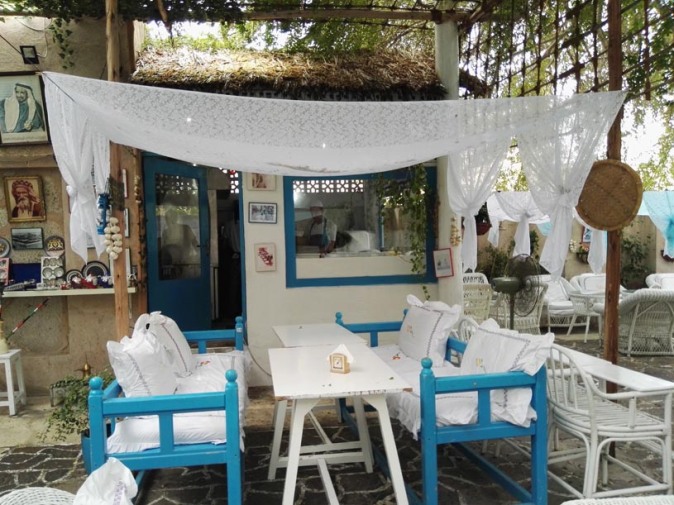
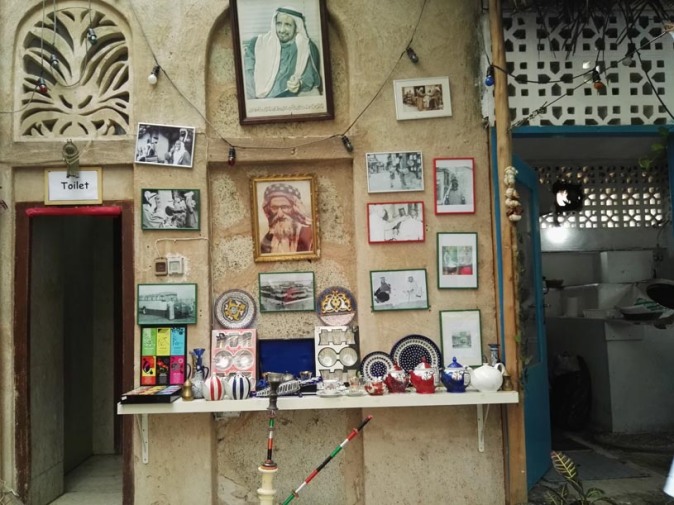
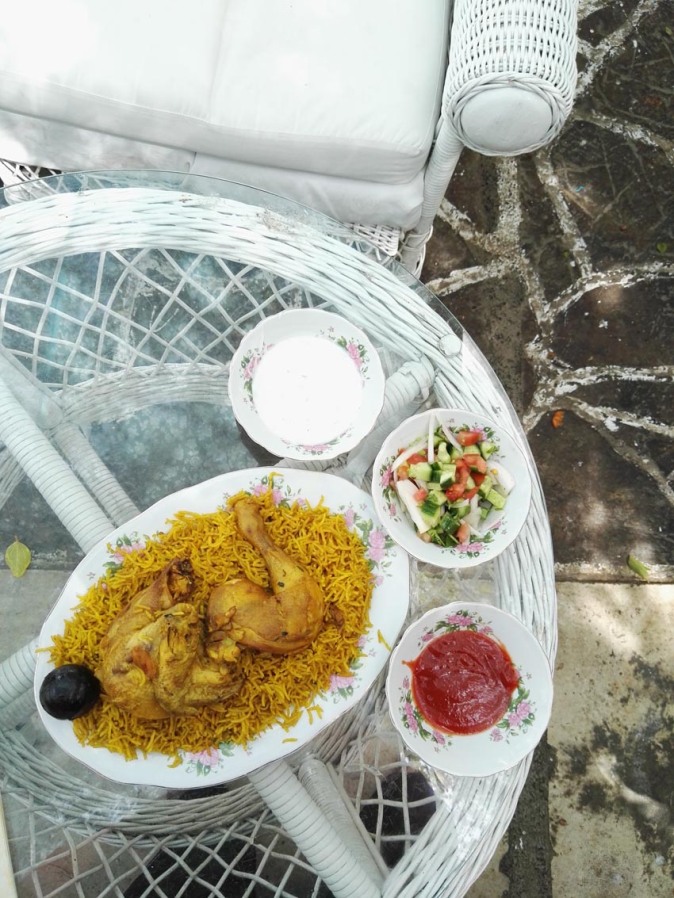 Chicken Machboos at Arabian Tea House Restaurant and Cafe
Chicken Machboos at Arabian Tea House Restaurant and Cafe


